- Skip to right header navigation
- Skip to main content
- Skip to secondary navigation
- Skip to primary sidebar
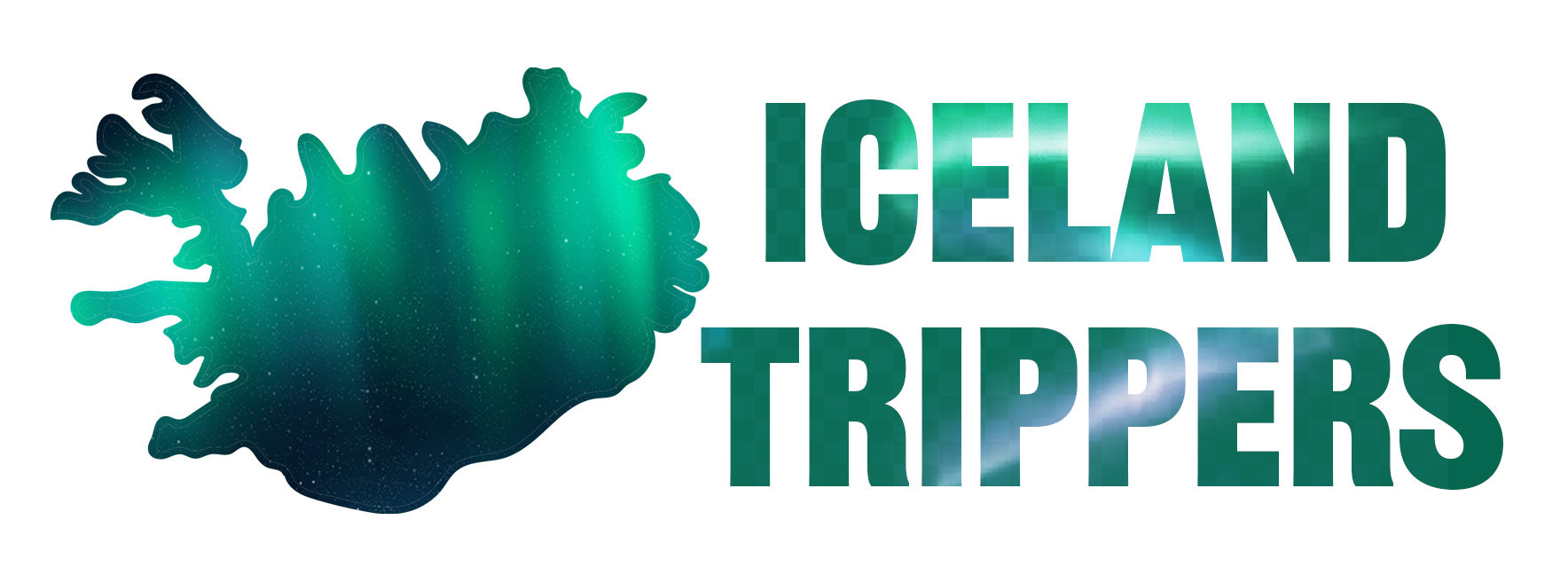
Learn how to easily plan your dream trip to Iceland with helpful guides and tips!
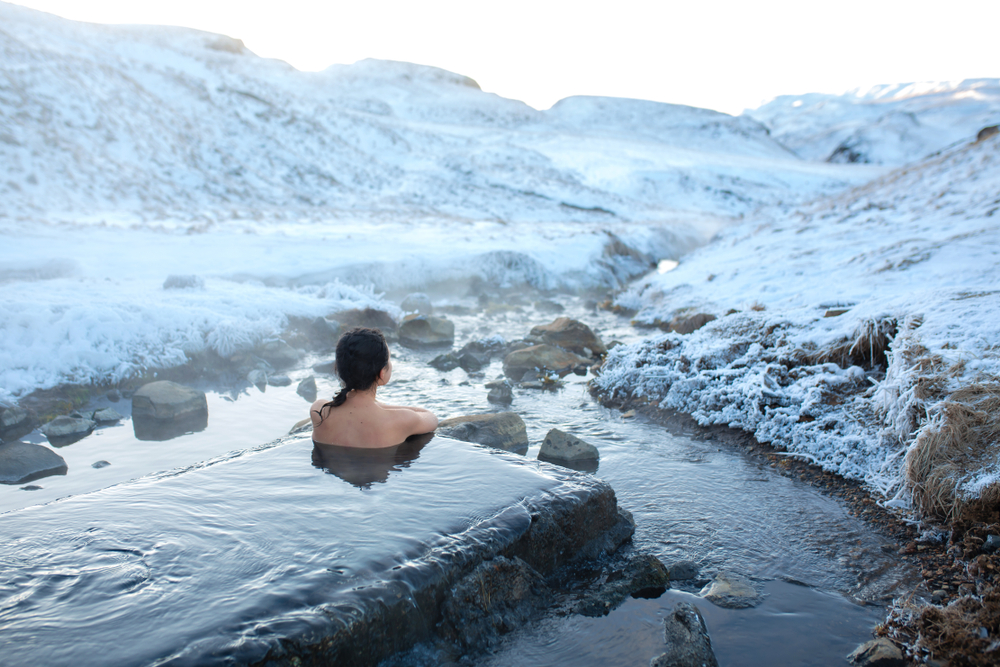

25 Bucket List Things To Do in Iceland in Winter
August 8, 2021 // by Iceland Trippers // Leave a Comment
There are so many amazing things to do in Iceland in winter, and you should not be intimidated to visit this beautiful country during this seemingly harsh season. If you are prepared, you can have a safe and once-in-a-lifetime trip.
In winter, Iceland becomes a magical, snowy wonderland. Though the daylight is shortened, the chance to see the Northern Lights dazzle across the night sky makes this a bucket list winter destination.
You can still easily see all of the classic South Iceland attractions in the winter as well as sites in other regions. However, driving might be more difficult since some roads are closed and you will need a 4×4 vehicle to bypass the snow and mud.
If you are brave enough to venture into Iceland in winter, then you can expect fewer crowds, cheaper rentals, and more dynamic, epic landscapes.
Get a FREE printable “Hidden Gems In Iceland” E-book by joining our private Iceland Facebook Group and share your photos and ask for tips and tricks.
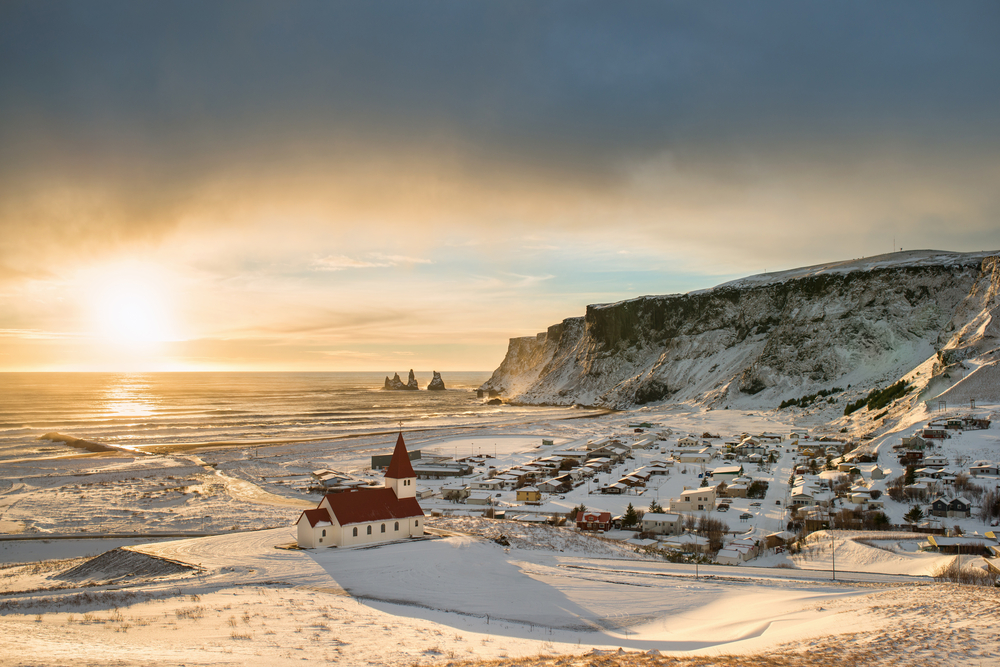
Search for the Northern Lights
One of the most popular things to do in Iceland in winter is view the incredible Northern Lights, or Aurora Borealis. Witnessing this natural phenomenon is on the top of many people’s bucket lists. Luckily, Iceland is one of the best places to see the Northern Lights!
Even if you come to Iceland in winter, you are not 100% guaranteed to see the Northern Lights. You need the right conditions. First, you need to be in Iceland from late August to mid-April. March and September are known to be the best times.
Then, you need to start your search late at night, when it is the darkest, preferably from 9:30 p.m. to 1:00 a.m. Lastly, you need super clear skies for the lights to be visible. Usually, it is best to get out of town.
If you want an easier time experiencing the Northern Lights, consider booking a specialized tour. Here are some of our recommendations !

Warm Up in the Blue Lagoon
The Blue Lagoon is probably the most famous hot spring in Iceland since it is so big, beautiful, and near Reykjavik . The iconic, milky blue water is full of silica, which is great for your skin.
Come to the Blue Lagoon after a day of exploring Iceland in the cold winter weather so you can relax and warm up. The water is heated by an underground volcano which keeps the water at an awesome 102 degrees Fahrenheit year-round.
The Blue Lagoon is a great experience in winter since there will be fewer tourists and the hot water is more appreciated.
Make sure to check out our Detailed Winter In Iceland Travel Itinerary!
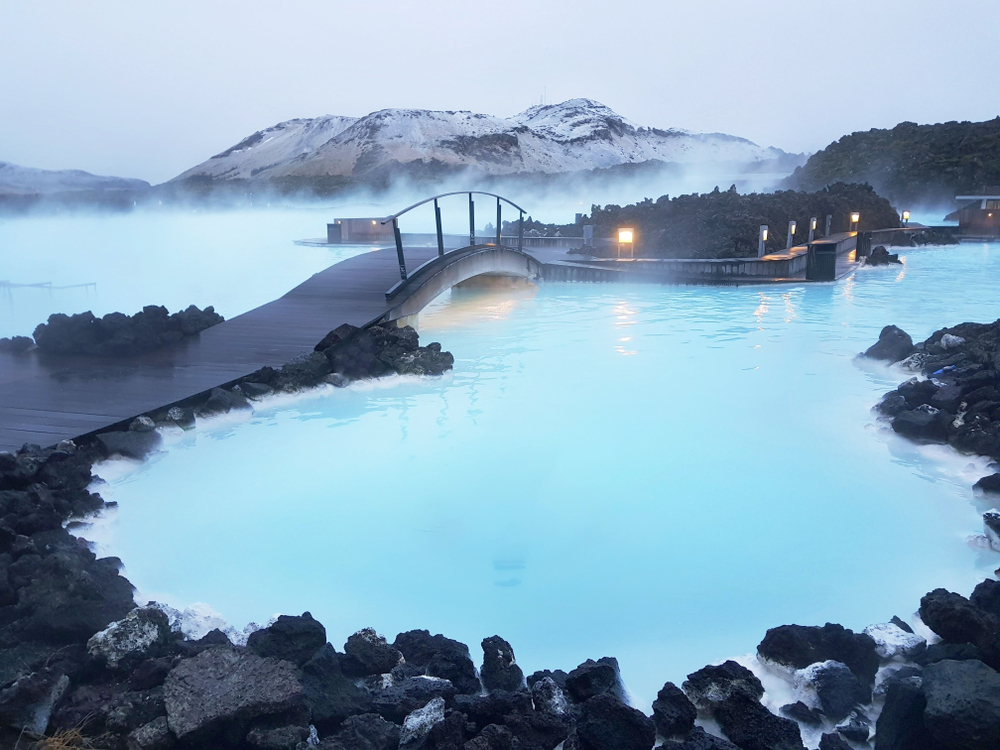
Photograph the Epic Godafoss Waterfall
Godafoss Waterfall is one of the best waterfalls in Iceland , and it is even more epic in the winter. It is found in North Iceland and will get covered in snow, but since it is so near the Ring Road , it is still usually accessible.
But, always check road closures before you head out, just in case of bad weather. Keep in mind that only one parking lot is open in the winter on the east side of the river.
Since this Iceland attraction is so popular, the main trail is cleared of snow to help tourists. Even so, you need to be careful not to slip on ice. You might want to bring spikes for your shoes. Hike the two-mile loop trail carefully to stay safe.
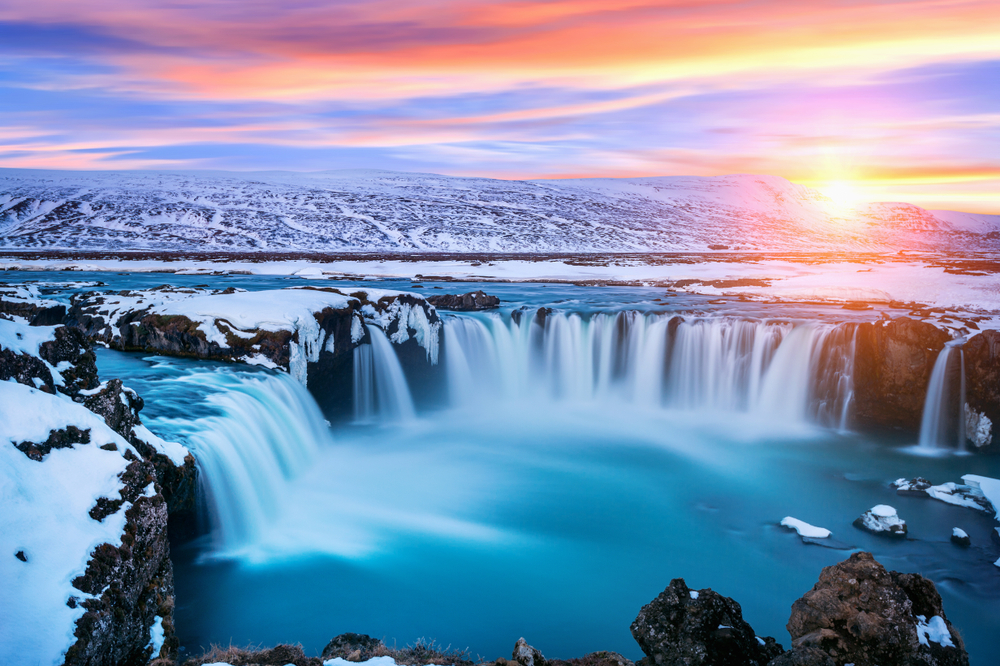
Find the Solheimasandur Plane Wreck
Visiting the Solheimasandur plane wreck has become immensely popular due to social media. It is a really unique thing to do in Iceland no matter the season. This famous site is found off the Ring Road on the south coast.
You can hike to the Solheimasandur plane wreck in winter, but it will be more difficult than in the summer. It is best to do this trip on a day where it is clear and the weather is good. Low visibility could mean losing track of the route. Make sure to dress warmly, since it will be very windy. Also, wear waterproof shoes.
The hike is about five miles roundtrip and will take a couple of hours to complete. Make sure you time your journey right so you do not get caught in the dark unless your goal is to find the Northern Lights hanging overhead.
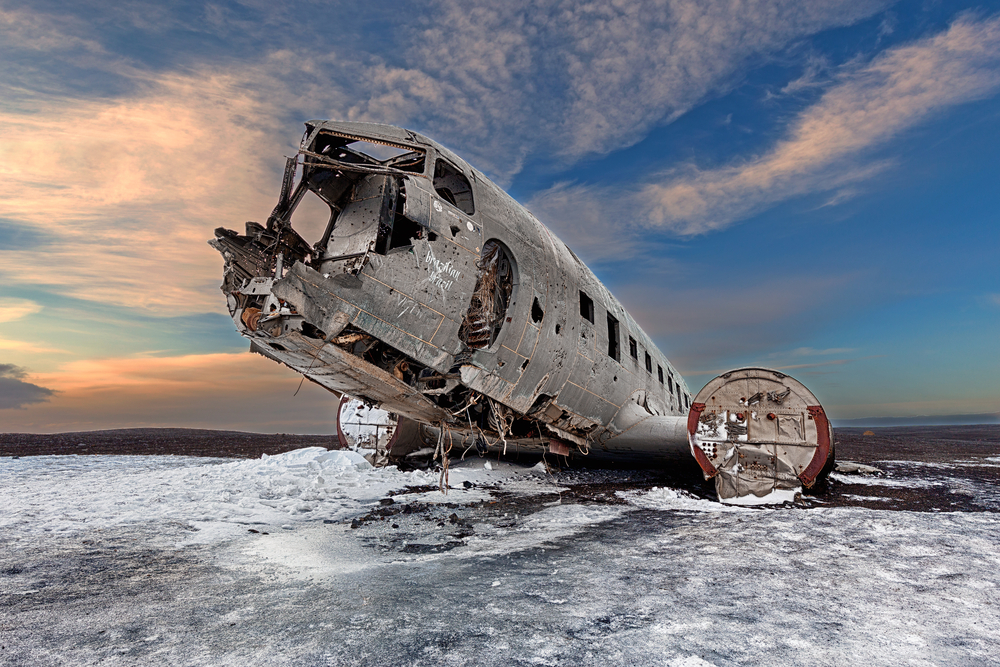
Take a Glacier Tour
You can’t go to Iceland in winter and not take a glacier tour . This is one of the most unique hikes to do in Iceland in winter. You will find many epic glaciers in Iceland, including the largest in Europe, Vatnajokull.
It is impossible to set out onto the glaciers by yourself. You need to book a guided tour to be safe. Luckily, there are a ton of options with different prices and lengths. Here are some of our top choices .
Many of the tours include transportation from Reykjavik too so you do not need to worry about driving. Make sure you come prepared with warm clothes and proper shoes. Glaciers can be a dangerous place, but that only heightens the excitement and sense of adventure.
Book Here: Skaftafell: 5 Hour Glacier Hike Adventure
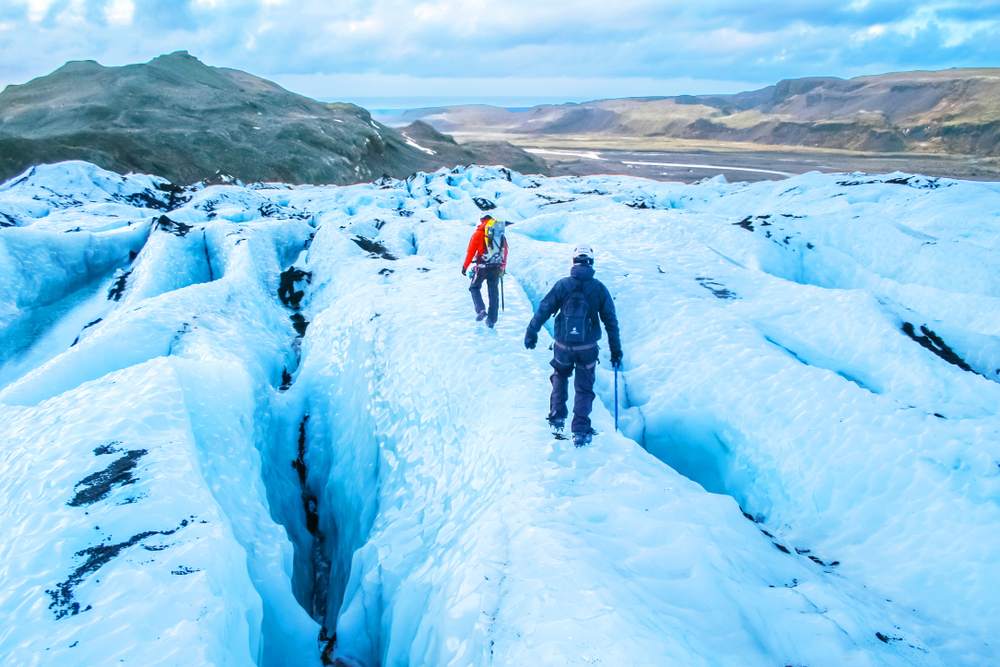
Go On a Snowmobile Adventure
If you do not feel like tiring yourself out on a glacier hike, then you can take a snowmobile tour instead. This is a thrilling way to see glaciers as well as other natural attractions.
Snowmobiling is a great group activity if you are traveling to Iceland with friends. You will all have fun zooming over the snow. Even if you have never snowmobiled before, your guide will give you a lesson before you start.
Come prepared by wearing a good, windproof coat and something to keep your hands warm. You do not want to get frostbite. The provided helmets will protect your face from the wind. Here are some of our winter packing suggestions .
Book Here: Glacier Snowmobiling on Langjokull Glacier
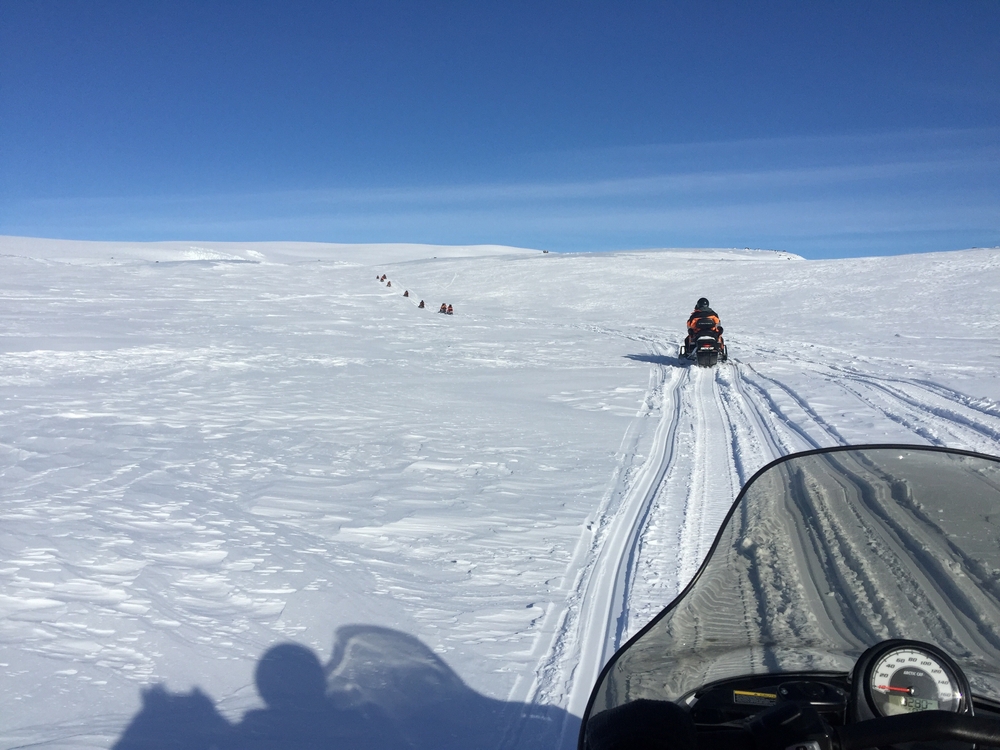
Hike To Svartifoss Waterfall
Svartifoss Waterfall in Vatnajokull National Park in the southeast is another awesome Iceland waterfall to check out in the winter. This 80-foot waterfall is surrounded by basalt columns that become coated with dangling icicles. The waterfall partially freezes as well, creating an amazing landscape.
To get to Svartifoss Waterfall, you need to hike about three miles roundtrip. The scenic hike will take you past three other, smaller waterfalls so this is really one of the best winter hikes in Iceland.
Again, the route might be slick, so bring spikes and be cautious. The snow might make you move slower and make the hike take longer, so wear layers and make sure to pack plenty of water to stay hydrated.
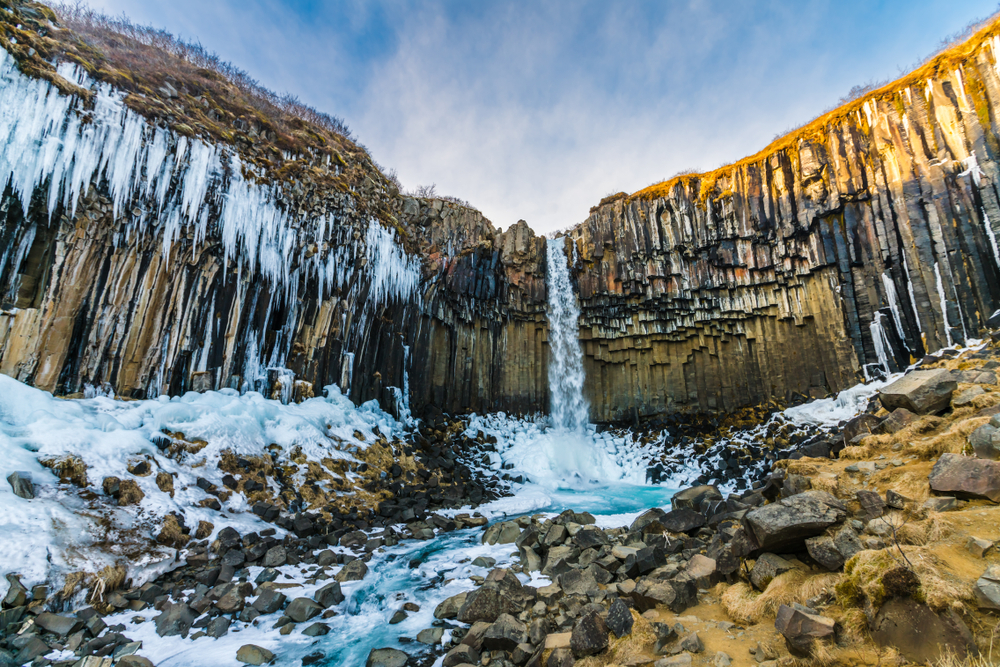
Try Ice Caving
Ice caves are another incredibly beautiful Iceland landscape you only get to enjoy in the winter. These caves can be explored from the end of October through to March. If you love breathtaking and magical nature, then you need to add this activity to your Iceland winter itinerary.
The ice caves are formed under glaciers and are usually a gorgeous blue. If you are a photographer, this is the type of place you dream about.
Like hiking on top of the glaciers, you will need to book a tour to see the inside of an ice cave. The caves break apart in the spring, so you need to make sure to see them in the winter when you can. This definitely tops the list of best things to do in Iceland in winter since it is so seasonal.
Book Here: Húsafell: Langjökulll Glacier Ice Cave Tour

Discover Skogafoss Waterfall
Another waterfall to visit in Iceland in the winter is Skogafoss Waterfall . Found in the southern region of the country, this is one of the most famous waterfalls in Iceland.
This magnificent waterfall is located just off the Ring Road and is only a short walk from the parking lot. Because of this, it is one of the most accessible things to do in Iceland in winter. The area around it will be covered in snow and ice, but the powerful, 197-foot waterfall does not freeze.
Usually, you can walk right up to the base of the waterfall, and while you can still do this in the winter, you need to be extra careful since the fall’s spray turns the ground to ice. If it happens to be sunny when you visit, you will catch sight of the waterfall’s iconic rainbow.

Hike Through Thingvellir National Park
Another activity to add to your winter Iceland itinerary is hiking in Thingvellir National Park . This is a UNESCO World Heritage site and one of the best national parks the country has to offer.
This area of Iceland is made up of mountains, lakes, and even forests. It will all look like a classic, winter wonderland when it is covered in snow. You can also find the ruins of historic buildings.
On an interesting geological note, this park is where the North American and European tectonic plates meet. You can go snorkeling between the plates, even in winter, though it will be much colder than in the summer.
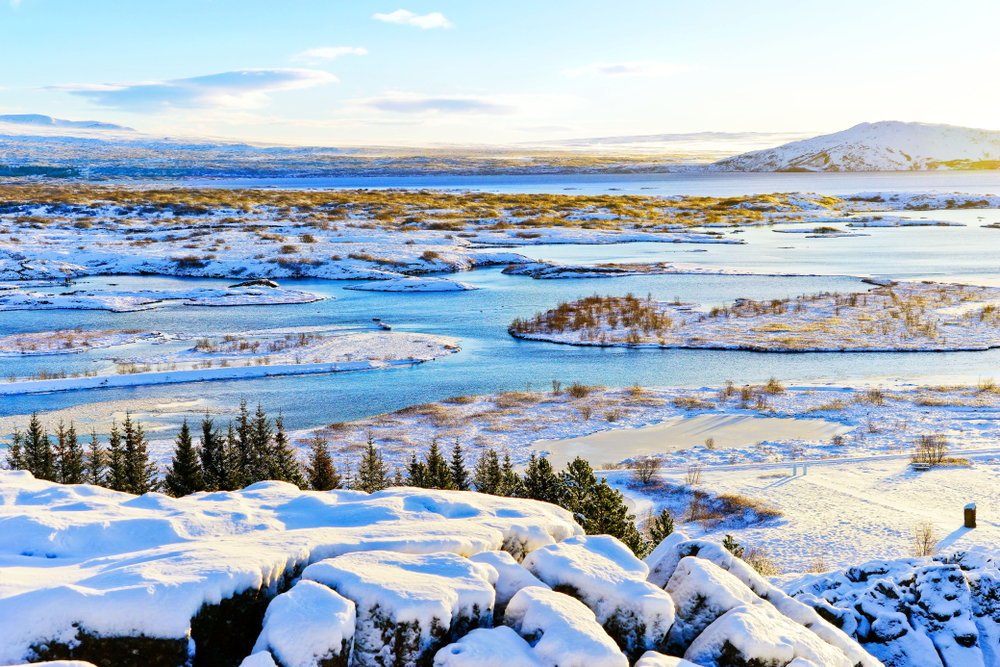
Walk Down Reynisfjara Beach
Reynisfjara Beach is one of the best black sand beaches in Iceland . When you visit in the winter, the sand becomes mixed with ice, making the beach shimmer.
This is a great place to witness the power of the ocean. The crashing waves are a sight to behold. Just be careful not to get too close. You do not want to swim, not just because of the cold, but because of the dangerous rip currents.
You can walk along this amazing beach and pose for pictures in front of the towering basalt columns. Make sure to dress warmly and be prepared for the wind.
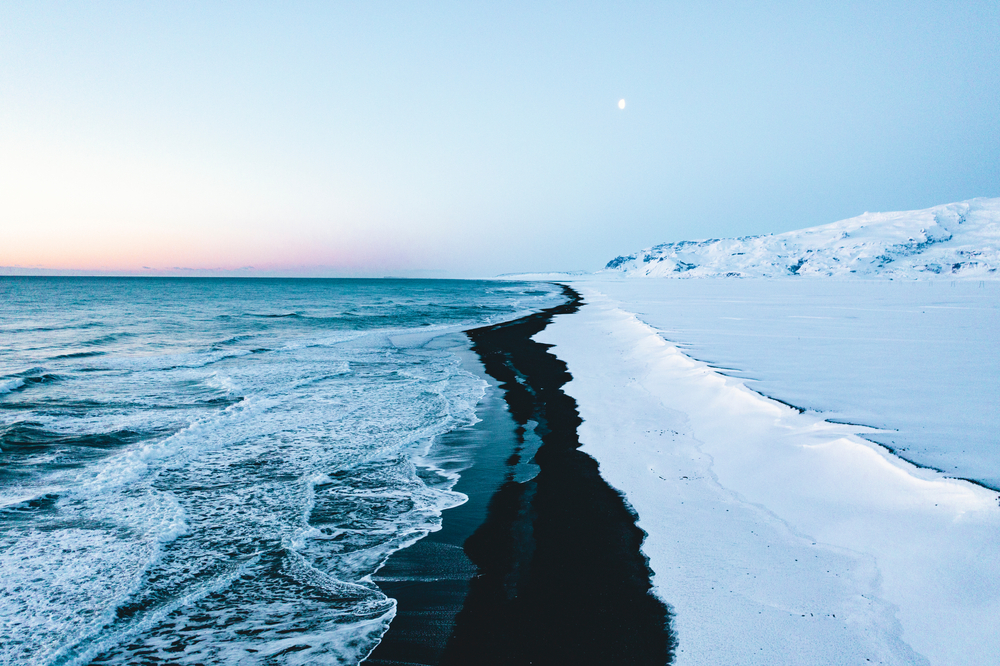
Spend the Night In Vik
Reynisfjara is right next to the small, charming town of Vik . You can explore the town during the day or even stay the night . This is one of the best towns on the south coast since it is so cute and near many cool landscapes.
When you visit Iceland in winter, Vik becomes coated in snow like a storybook village. It is so quaint and picturesque you will not believe your eyes.
The town is overlooked by the Víkurkirkja Church. In the evening, this snow-dusted church will look like a Thomas Kinkade painting with the town lit up below. You cannot get more idyllic than that!
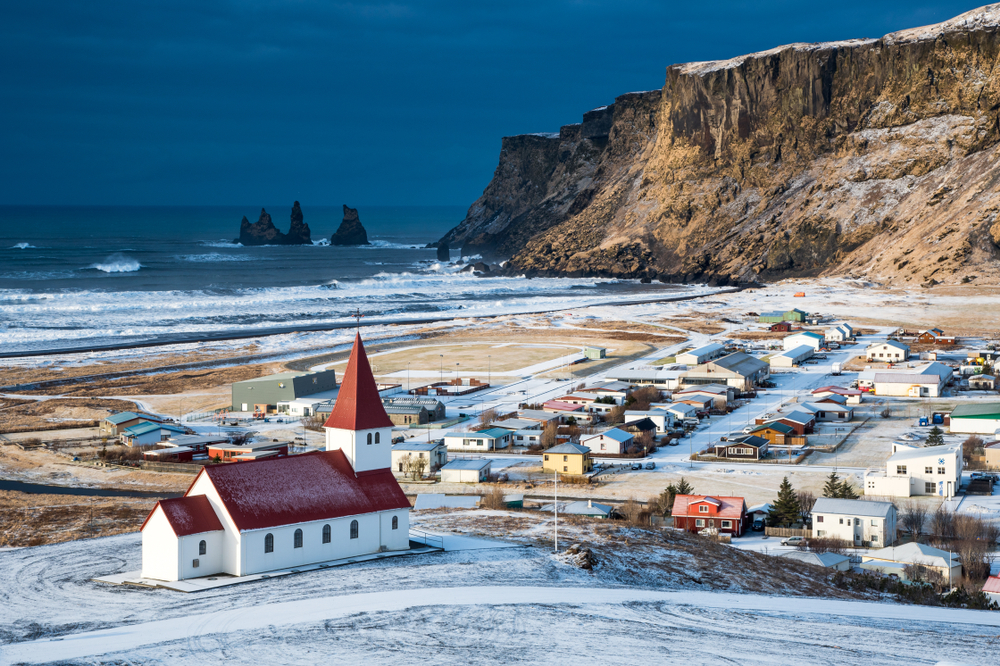
Soak in the Hrunalaug Hot Springs
Hrunalaug Hot Springs is another one of the best hot springs to visit in Iceland in winter. This is not your typical spring since there are three different options for soaking! There is a super hot pool, a medium pool, and a colder pool.
Please respect the landowner and pay the small fee as well as throw away your trash!
Visiting this hot spring in the winter means fewer crowds. You will have more privacy when you change, but be prepared for a chilly wind as you do so! Don’t forget to check out our Tips For Hrunalaug Hot Springs!

Be Awed by Gullfoss Waterfall
Gullfoss means “golden waterfall” but if you visit in the winter, it will be very white. This waterfall is one of the most popular stops on the Golden Circle route, especially since it is only about an hour and a half from Reykjavik.
The road to Gullfoss Waterfall is well maintained in the winter so you should have no trouble driving there. However, some of the viewpoints are closed during the winter. Keep this in mind because you might not get the views you were expecting.
You can still enjoy the view from the Gullfoss Visitor Center. There are also steps down to a lower viewpoint, but it can be icy. The air here is especially cold because of the spray from the falls so wear appropriate clothing.
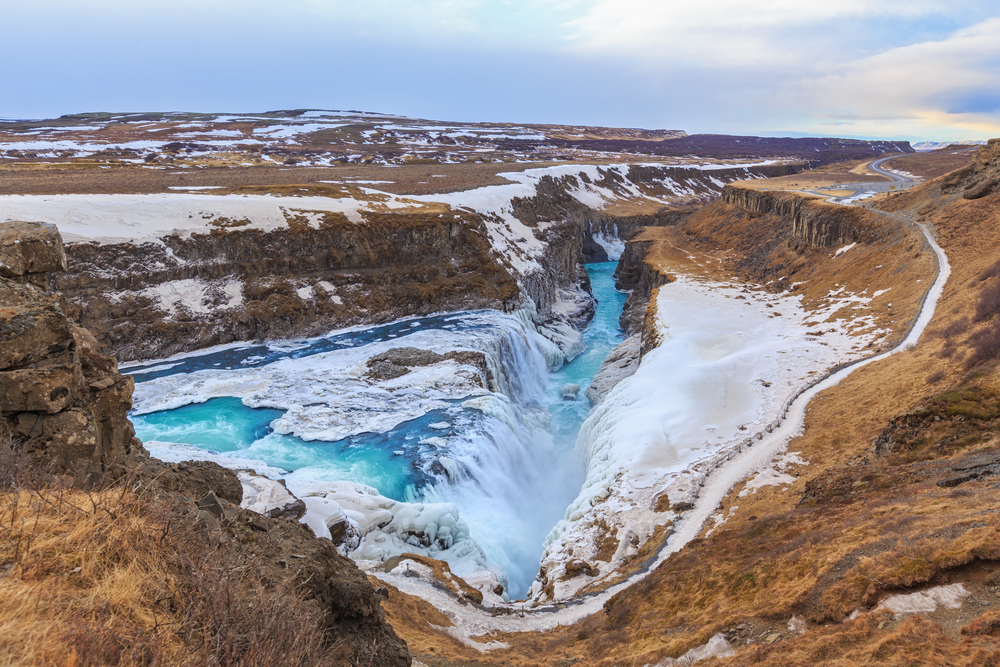
Watch Strokkur Blast Off
Strokkur is an awesome site to add to your Iceland winter itinerary. This gushing geothermal feature is found on the Golden Circle not far from Gullfoss Waterfall. This phenomenal geyser is so fun since you never know exactly when it will shoot off. Every four to ten minutes, Strokkur will erupt about fifty feet into the air.
After standing out in the cold to watch Strokkur erupt a couple of times, you can retreat to the Geysir Center to warm up with a meal at the restaurant, shop for souvenirs, or refill your snack supply. There is also a Geysir museum and hotel here.
Strokkur is also near Geysir, the oldest recorded geyser in the world and the source of the word “geyser.” Unfortunately, Geysir is now inactive.

Pet Some Icelandic Horses
You cannot come to Iceland and not find yourself gushing over the cute Icelandic horses. These fuzzy creatures are super curious and friendly, so it is not hard to convince them to cuddle.
Don’t forget to check out our list of the best horse riding tours in Iceland!
You can find these small horses roaming all over Iceland, even in the winter. You can bribe them to come closer with an apple or carrot, but don’t climb fences to trespass on private property.
Depending on the month you visit and the weather, you can even go on a horse-backing riding tour with these beautiful animals. Or you can visit a stable and learn more about them.
Book Here: Reykjavik: Red Lava Horse Riding Tour
Book Here: Fridheimar: Icelandic Horse Stable Visit
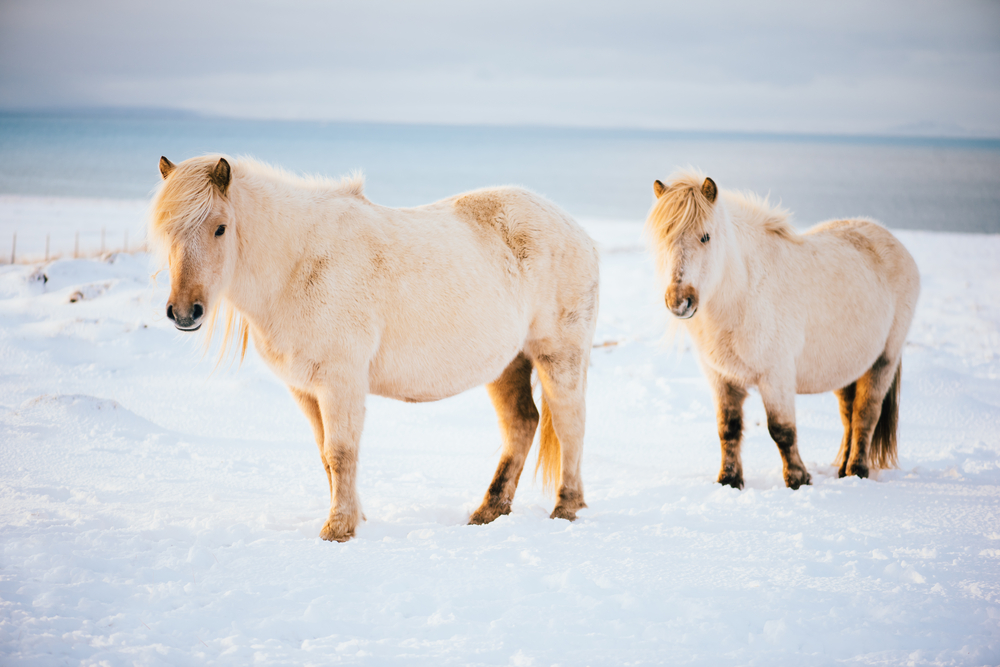
Find Awesome Ice Pieces at Diamond Beach
Another cool black sand beach to visit in Iceland in winter is Diamond Beach. This south coast attraction gets its name from the glittering chunks of ice found on its shore. In winter, there are usually more and larger pieces of ice.
This is such a unique place to walk around and take pictures. Come at sunrise or sunset to photograph the light and colors shining through glass-like ice.
Diamond Beach is the type of place people imagine when they think of Iceland. There are not many places in the world where you can find a beach like this, so take advantage of it when you can.
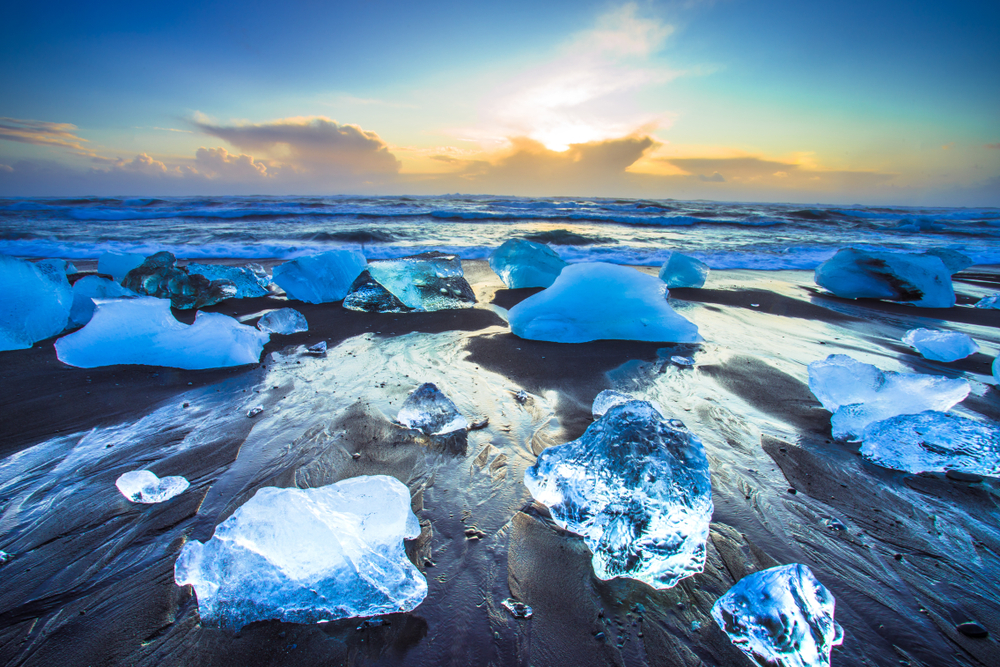
Watch Glaciers at Jokulsarlon
The ice pieces at Diamond Beach come from Jokulsarlon Glacier Lagoon which is right across the street. You can visit both on the same day. These are two of the best things to do in Iceland in winter and should not be skipped.
In winter, there are more icebergs dotting the water, creating a peaceful atmosphere that is only disrupted when they break. You can find seals basking in the sun. At night, it is possible to see the Northern Lights.
You will miss out on the summer boat tours, but you get the luxury of fewer tourists. You could possibly have the place to yourself. This is a great area to soak in nature and the raw beauty of glaciers.

Explore Reykjavik
The capital city of Reykjavik is magical in winter when the neat rows of colorful houses are iced in white. There are so many things to do in Reykjavik in winter. Check out the restaurants, shops, and art and history museums.
Make sure to take a photo with the Sun Voyager Sculpture. Walk the streets to find cool wall murals.
Head to the top of the imposing Hallgrímskirkja Church to find amazing panoramic views of the city nestled along the ocean. This modern-looking church is also lit up at night, making a great foreground for a photo of the Northern Lights , which sometimes grace Reykjavik with its presence.
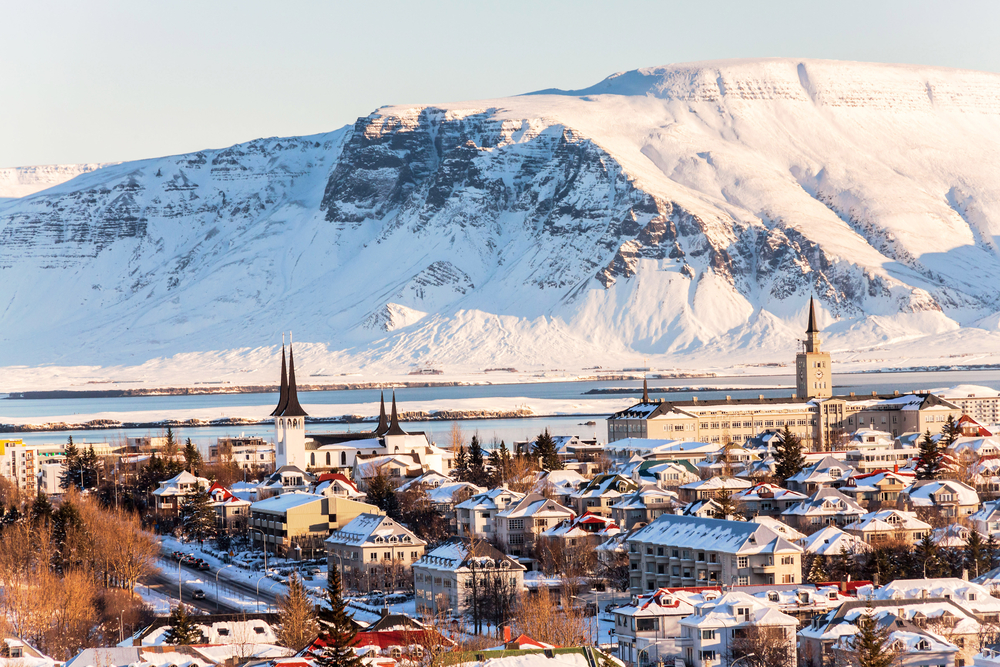
Enjoy the View of Bruarfoss Waterfall
Bruarfoss Waterfall is known for its vivid, blue color created by the Langjokull glacier which feds it. This Iceland attraction is only about twenty minutes from Gullfoss, so you can visit both waterfalls on the same day as you travel the Golden Circle. Make sure to put “Bruarfoss Waterfall official parking” into your GPS to find the right trailhead.
This natural wonder is still a bit of a hidden gem in Iceland so in winter especially you are likely to have the place all to yourself. The hike will take you about an hour each way, and it is fairly level and easy. In the winter, it can get muddy though.
Once you make it to Bruarfoss Waterfall, you will be amazed by the unearthly, blue water. The color will pop against the white snow.
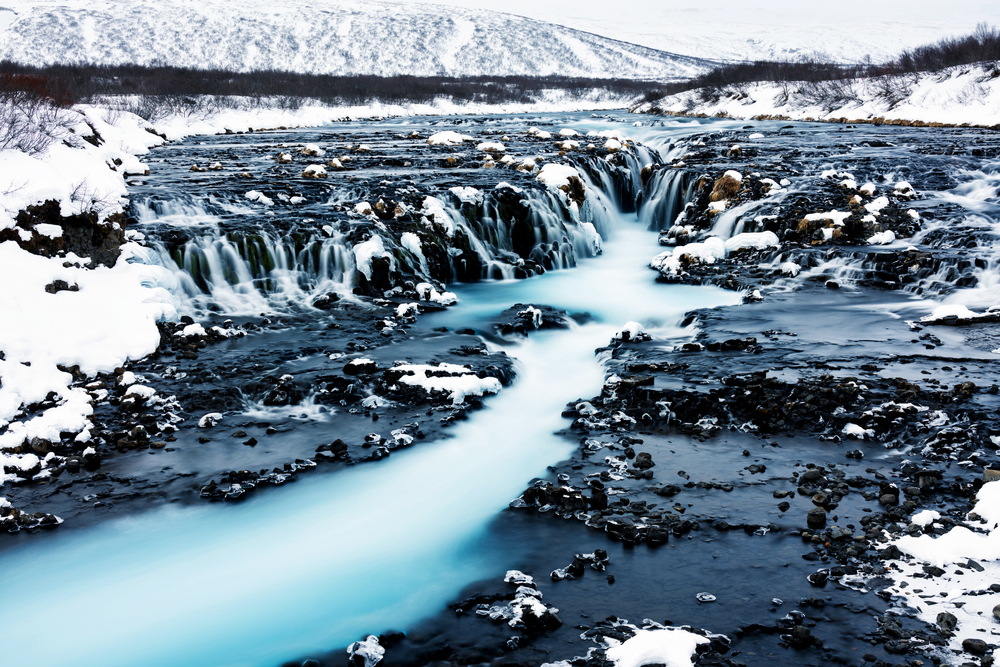
Admire Seljalandsfoss Waterfall
Seljalandsfoss Waterfall on the south coast is another of Iceland’s most popular waterfalls. Since this eye-catching, 200-foot water feature is right off the Ring Road it is easy to get to even in the winter. From the parking lot, it is only a short walk to the falls.
Usually, you can walk behind this waterfall as well. But in the winter, this path is closed because it is too icy and there is the chance of ice falling from the cave above.
Even so, this is one of the best things to do in Iceland in winter. The waterfall is stunning in the colder months, surrounded by snow and dangling icicles. You will want to snap some photos posing in front of it.
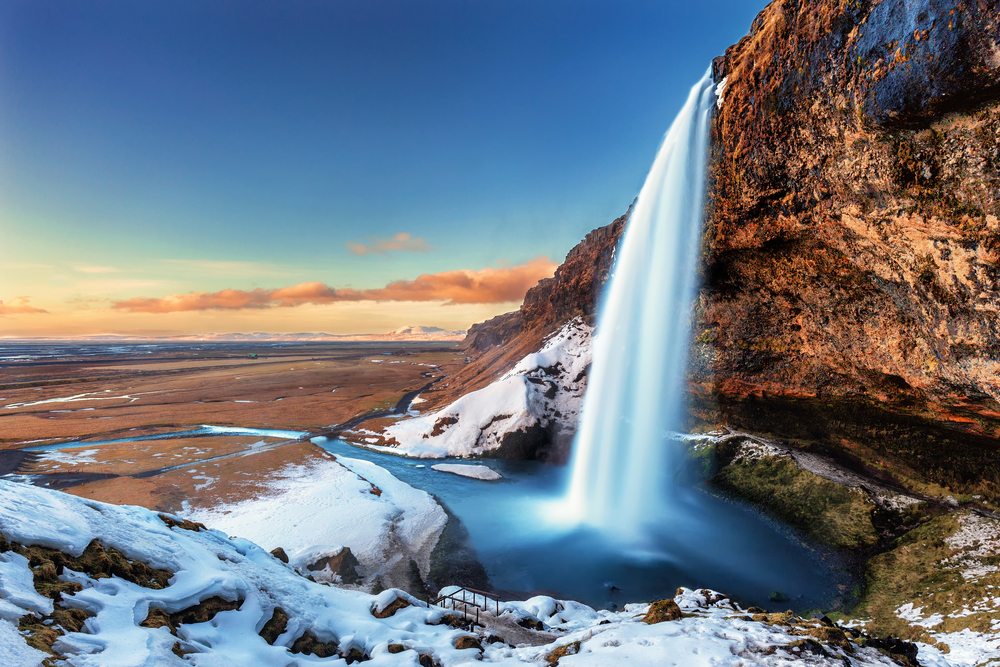
Photograph the Budir Church
Budakirkja, or Budir Church, is one of the prettiest churches in Iceland . This scenic building is surrounded by open fields on the Snaefellsness peninsula.
This is a great photography destination since it is so remote, and the church stands out so well against the sweeping landscape. In winter, the black color of the church adds amazing contrast against the pure, white snow.
Even if you are not a photographer, this is a beautiful place to visit in Iceland in the winter. It is a short drive from Route 54 near the ocean.

Fall in Love With Kirkjufellsfoss Waterfall
One of the most iconic, postcard-worthy images of Iceland involves Kirkjufellsfoss Waterfall with Mount Kirkjufell standing tall in the background. If you want to see this amazing sight in person, then you need to come to the Snaefellsnes Peninsula on the west coast.
You only need to walk about ten minutes to get to the viewpoint to see this incredible scene. In winter, there will be a great expanse of snow. Parts of the waterfall and river may freeze to create cool ice formations.
If you are able to visit this remote location at night, make sure to bring your tripod and multiple camera batteries because this is a great place to see the Northern Lights if the sky is clear. Can you imagine how beautiful that would be?!
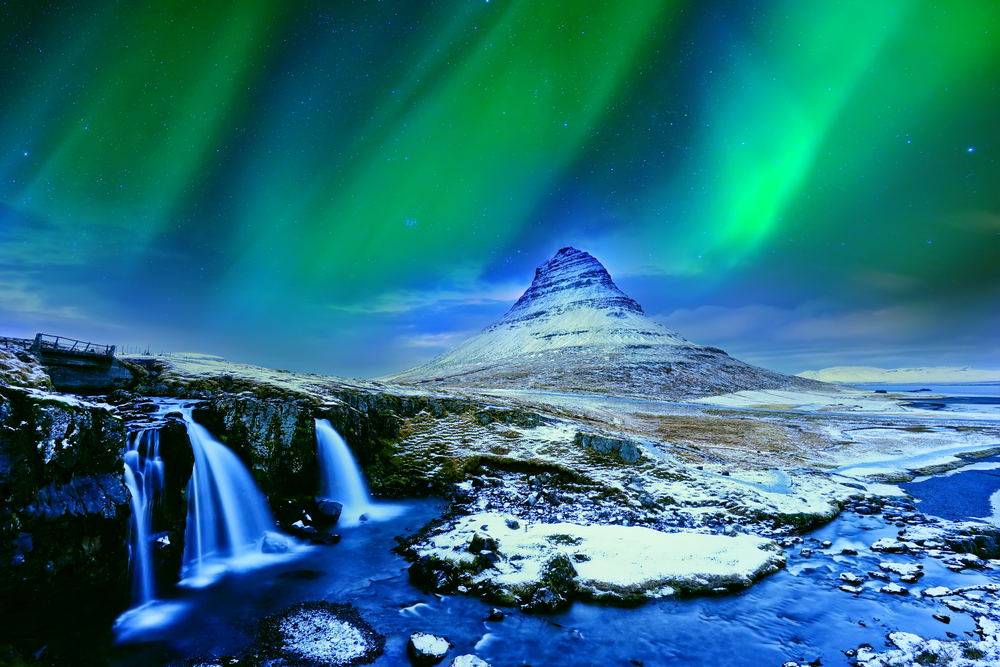
Wander Around the Stokksnes Peninsula
Another peninsula, this time on the east coast , you need to visit in the winter is Stokksnes Peninsula. To get onto Stokksnes Beach, you will need to pay a small fee since it is private land, but it is 100% worth it. This black sand beach is what Iceland dreams are made of!
From the beach, you can see the incredible Vestrahorn Mountain. In winter, it will be snowcapped and look like the setting of an epic fantasy movie.
This is another excellent place to see the Northern Lights too. This is where the mountains meet the sea, and it really can’t get more photogenic than that.
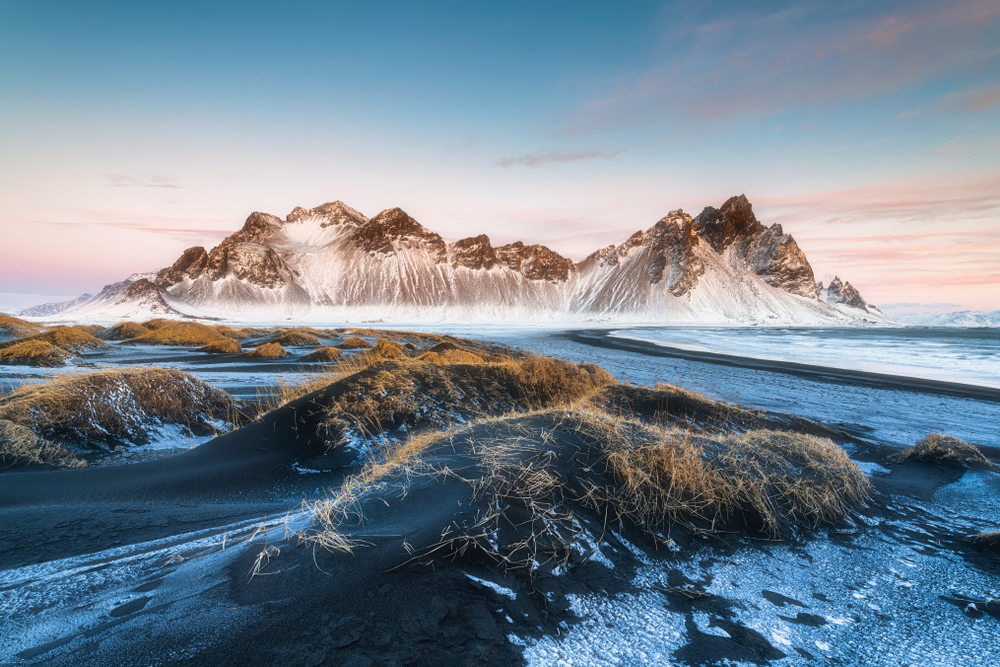
Find Yourself in Seydisfjordur
Seydisfjordur is an adorable town in the eastern region of Iceland. In winter, this small town is almost deserted of tourists, so you will feel as if you have the entire place to yourself. It will be a quiet and peaceful place to relax.
This fishing village is on a beautiful fjord. Though it is a little harder to get to in the winter, it is worth it to see its iconic, blue church decked out in the snow.
Make sure to visit pretty Gufufoss Waterfall just a few minutes from town. There is also a ski resort nearby if you want to spend some time on the slopes.
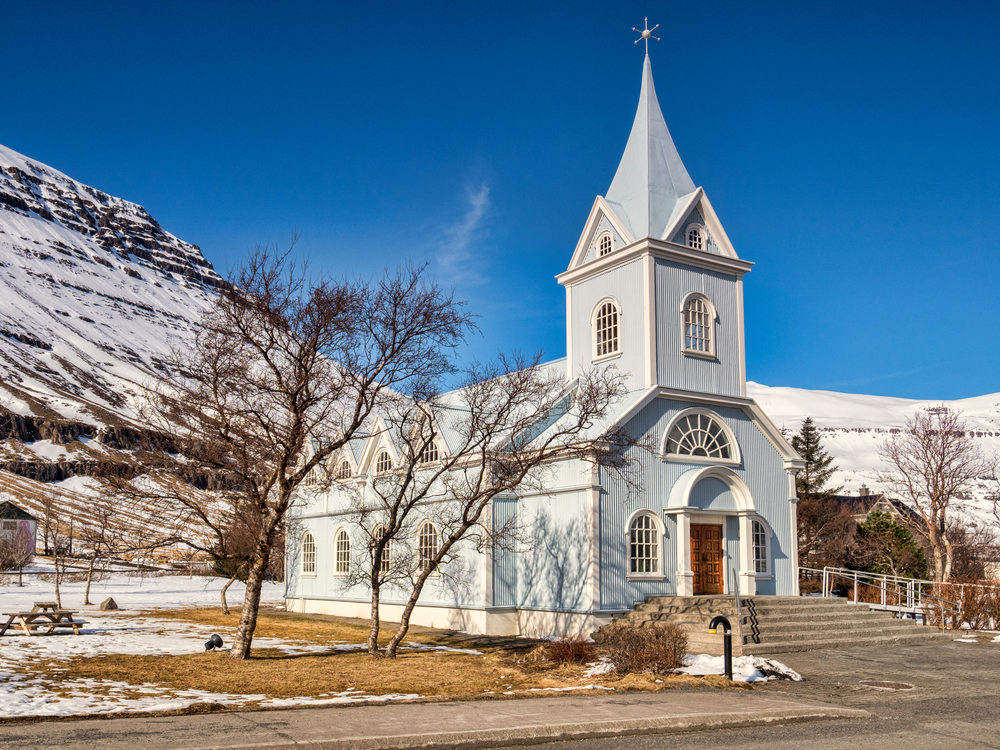
If you were not sure about visiting Iceland in winter before, you have hopefully changed your mind. Iceland offers beautiful and unique landscapes and activities no matter the time of year, but winter adds a level of adventure and magic. There are so many awesome things to do in Iceland in winter, you will not be disappointed.

Reader Interactions
Leave a reply cancel reply.
Your email address will not be published. Required fields are marked *
Save my name, email, and website in this browser for the next time I comment.

The Complete Guide to Visiting Iceland in Winter
I bet when you tell your friends and family you’re planning a trip to Iceland in winter, a few puzzled gazes will await you. So, let’s put the cold stares to bed with this epic guide to visiting this Nordic wonderland during winter.
Wait… A trip to Iceland? In winter? Sounds mad. Perhaps, but sometimes the most foolish-seeming plans deliver the most incredible results. Now, let me shatter any illusion you might have that Iceland is anything but incredible as winter creeps in.
Oh, and any lingering thoughts on when the best time to visit Iceland will also end, as there is a clear winner. But you’ll only find that out once you know what the country showcases when the cold comes calling.
I promise I’ll keep the phrase “Iceland is magical” to a minimum. At least, I’ll try. Although once you see what it has in store, you might struggle to stop yourself from saying it yourself.
Enough small talk. Winter is coming, and so is your trip to Iceland. Let’s go.
Brilliant Things to Do in Iceland in Winter
Feast your eyes on the northern lights.
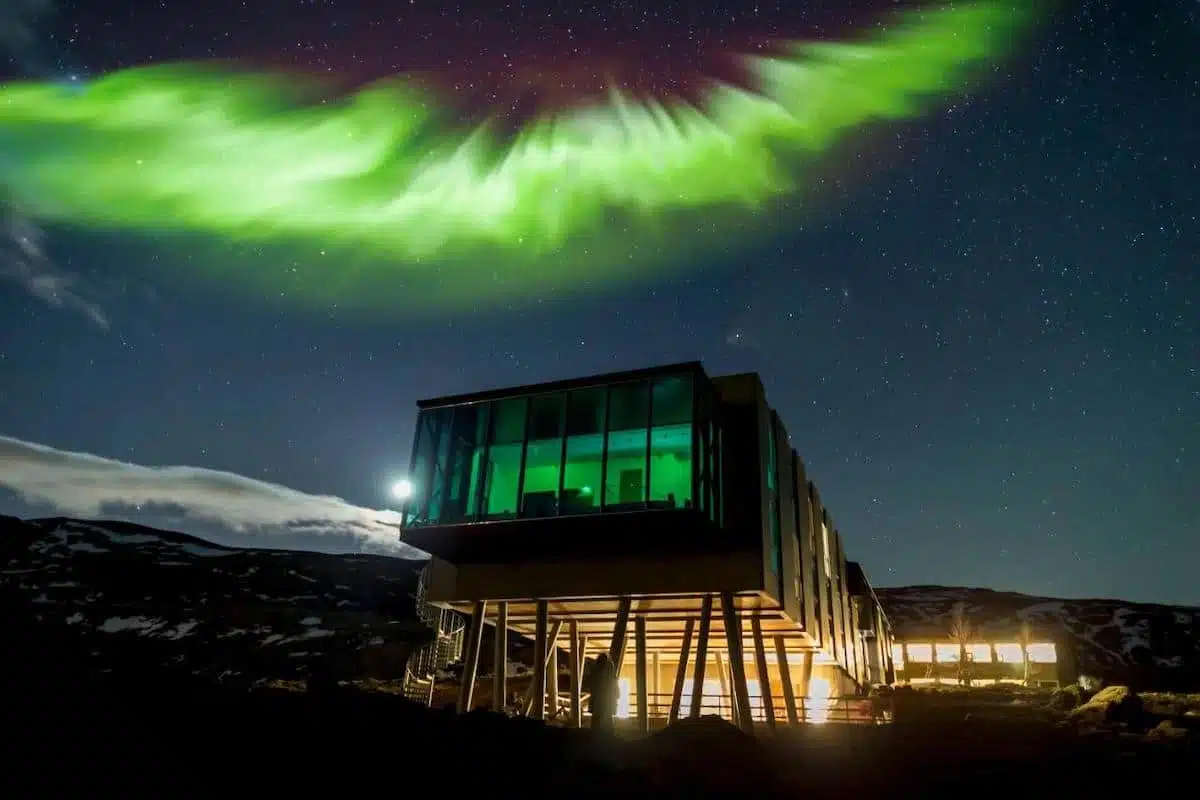
Sure, Iceland brims with impressive things to do and see, equalled only by its incredible places to visit. But nothing can compare with the country’s main attraction — the dazzling and mesmerising Aurora Borealis .
I’m rarely at a loss for words, but if there’s one thing that few words could ever do justice, it would be the Northern Lights. It’s a natural phenomenon that results in dancing waves of colour in shades of blue, green, and purple.
And thanks to the dark, long nights in Iceland, the winter is the absolute best time to see the northern lights.
Although it’s never a guarantee that you’ll see the magical light show, you can better your chances at a few locations. Reykjavik in the Seltjarnarnes Peninsula, the town of Akureyri or on the black sand beach of Reynisfjara, to name a few.
Tip: To make it easier to view this stunning display, book this 4-hour northern lights bus tour .
Dive Into Iceland’s Natural Hot Springs
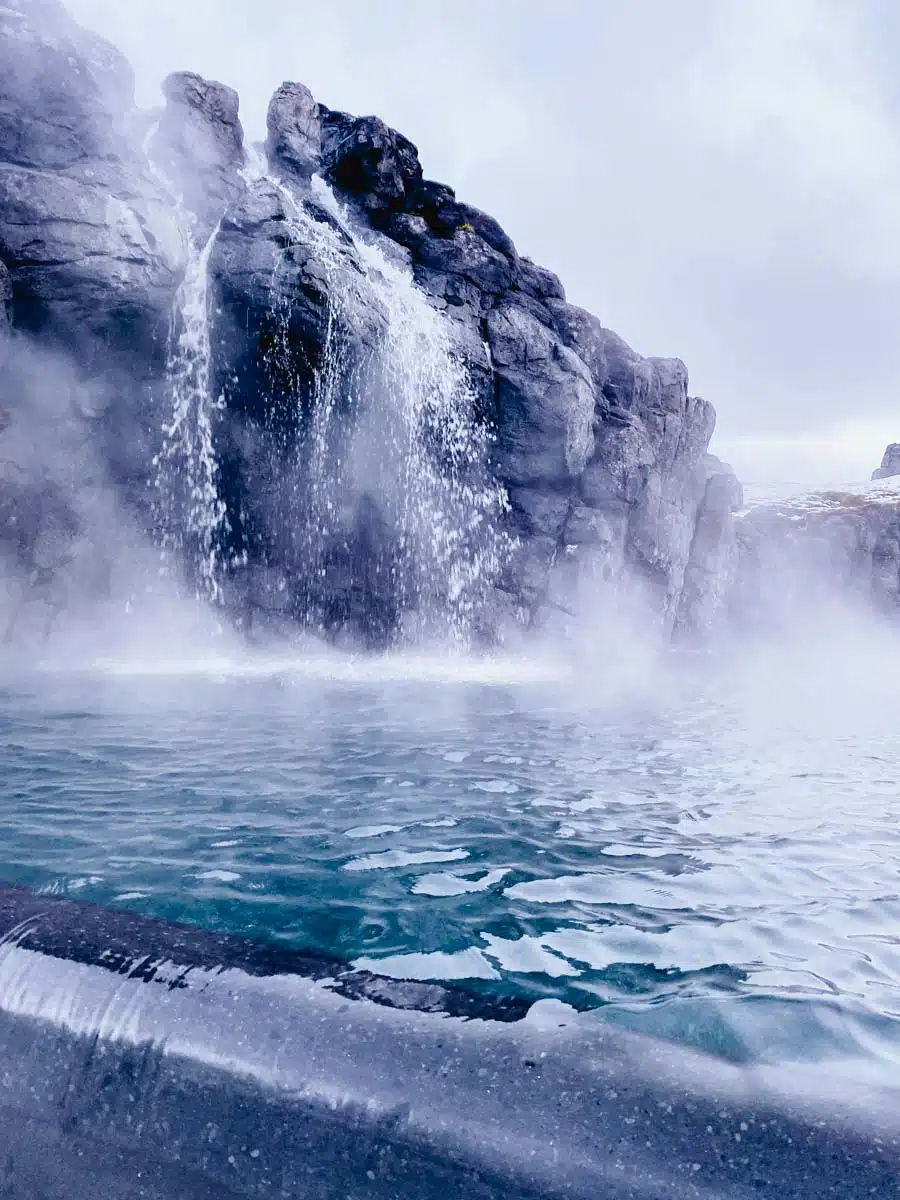
Technically (and legally), you’re not allowed to dive into the spectacular hot springs of Iceland . On the other hand, gently slipping into one of the 45 dedicated springs is a far more calming experience on a cold winter’s day.
You can rest assured that none of these natural hot springs come underrated. There’s a reason (or two) that bathing in any of them often ranks as the best thing to do in Iceland in winter.
The best bit? Spending more than seven days in Iceland gives you ample opportunity to explore as many as you want. Some of the most popular include Blue Lagoon and Sky Lagoon, close to Reykjavik.
A bit further along the Golden Circle (more on that in a bit), you’ll find the not-so-Secret Lagoon. Or, if you’re up north, worthwhile options include the Myvatn Nature Baths and Geosea in Husavik.
Tip: Book a day trip from Reykjavik that includes the iconic Blue Lagoon. Or get this entrance ticket that includes entry, a drink, and a complimentary mud mask.
Discover The Golden Circle
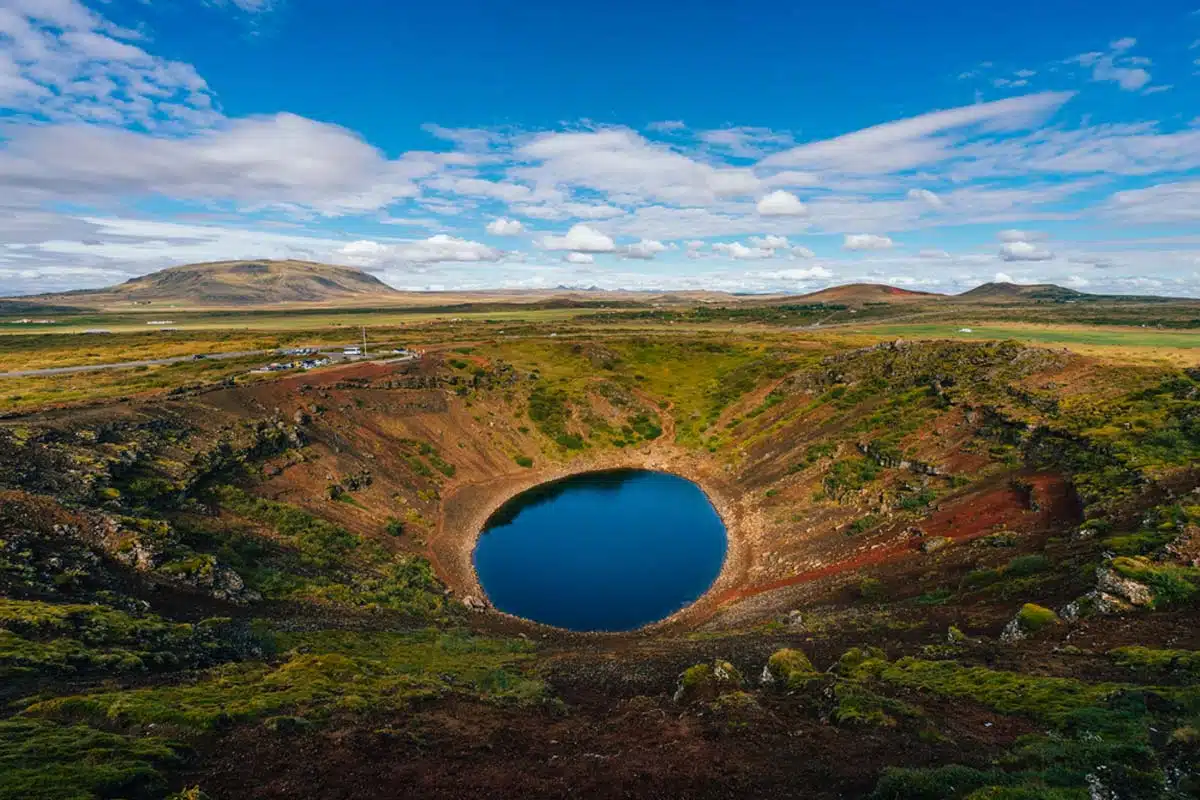
What should you include in your Iceland winter travel plan? Without a doubt, including the Golden Circle is a must. A long-standing debate over which is more popular, the Northern Lights or the Golden Circle, continues daily.
Locally, the Golden Circle refers to three of the most iconic sights the south of Iceland offers. All conveniently located along a picturesque road that seems almost ethereal.
First up is the majestic 2-tiered Gullfoss waterfall. Then come the enticing pools and imposing geysers of the Geysir Geothermal Park.
Finally, the circle concludes with Thingvellir (Þingvellir) National Park, a UNESCO World Heritage Site. Filled with historical, geological, and religious highlights, and even some Game of Thrones filming locations.
Tip: Due to the popularity of the Golden Circle, book this full-day tour from Reykjavik , which fits into any Iceland itinerary.
Spend Christmas in Reykjavik
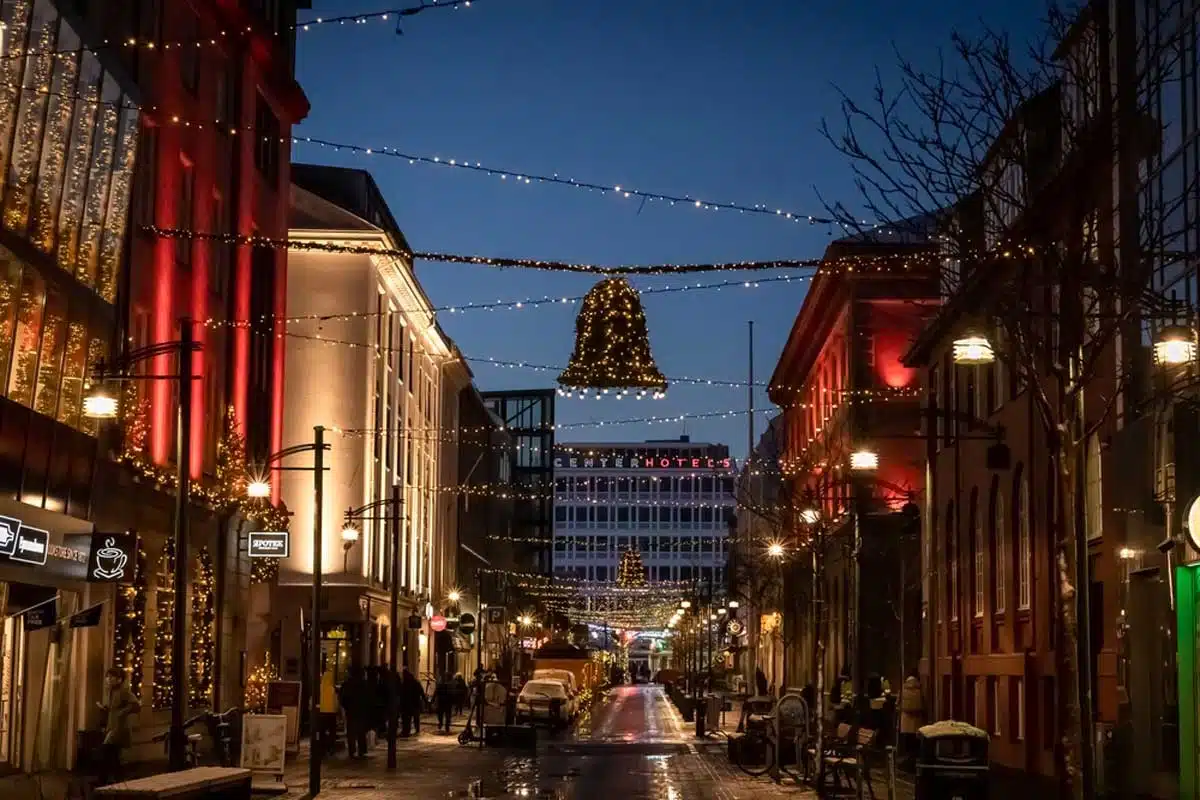
When visiting Iceland in winter, you can bet that you’ll be around for the annual Christmas festivities hosted in Reykjavik in winter. Keen to find out what makes this unique? Well, for starters, the magnificent citywide illuminations.
In downtown Reykjavik, you’ll find the famed 5-metre tall Yule Cat, constructed from tons of steel and over 6,000 lights. Another downtown highlight is the immense Oslo Christmas tree sent to Iceland as a gift from Norway each year.
The official Christmas celebrations begin on the 12th of December. It culminates with Þorláksmessa (St. Þorlákur’s Day) on the 23rd, celebrated city-wide with traditional food and loads of shopping. The season ends on the 6th of January with a massive fireworks display and bonfires.
Tip: Visit the Lake Mývatn area in northern Iceland to hunt for the 13 Yule Lads, a huge part of Icelandic Christmas culture.
Fly Over Iceland
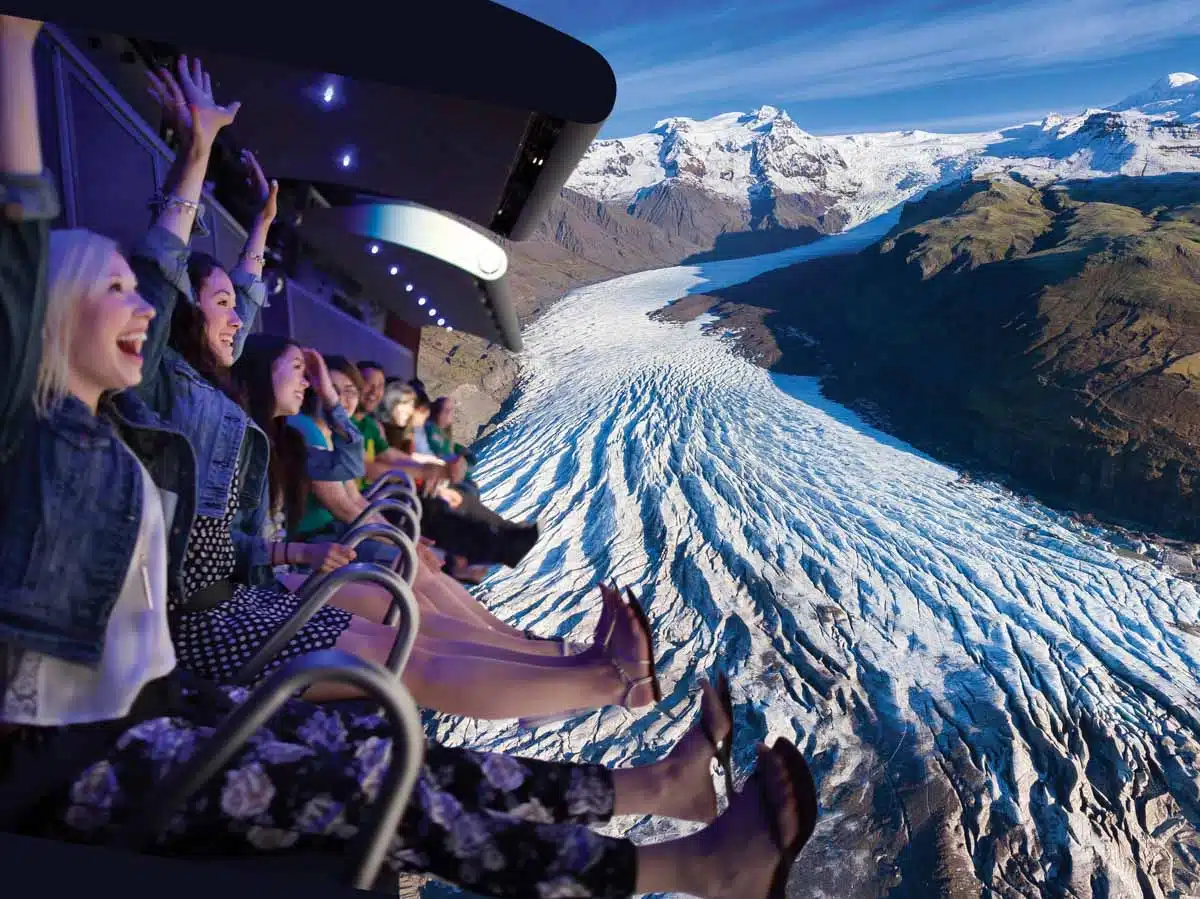
How does an immersive bird’s eye view experience of the Icelandic landscape sound? Pretty enticing, am I right? Well, as impressive as a helicopter tour over Iceland sounds, sometimes you just can’t fit it into your schedule.
And that’s precisely where FlyOver Iceland comes in. A multi-sensory experience, this flight simulation ride brings everything you’d hope to see to life breathtakingly. Located in Reykjavik’s Grandi district along the city’s waterfront, it’s an easy gateway to “see” some of the best places to visit in Iceland in winter.
Upon entering, you’ll find yourself in an “Icelandic longhouse” for some intros to the country’s history. Next, is a separate room lined with suspended kinetic screens, which display stunning visuals of the northern lights and erupting volcanoes.
Finally, the third room will have you strapped into mesh seats atop a state-of-the-art moving platform. This platform, surrounded by a 20-metre spherical screen, takes you on a 9-minute “flight” across Iceland.
Tip: Book your entry tickets in advance, as they sell out quickly.
Visit the Ice Caves & Go Glacier Hiking
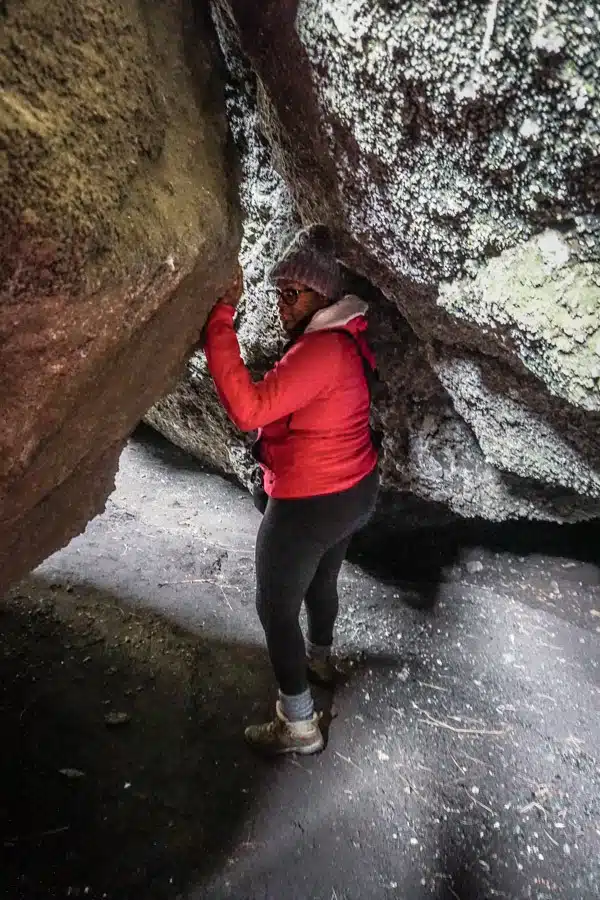
Okay, here I go. Iceland in winter is magical. And you don’t have to delve very deep (pun intended) into any of the majestic ice caves of Iceland before you’ll agree.
Prepare yourself, though, as Iceland has a lot of mesmerising caves shaded in an array of blue tones.
Most of these labyrinths lie beneath the Vatnajökull or Kötlujökull glaciers. Due to the genuinely fantastic experience, booking a guided tour through one (or more) is best. But what about glacier hiking?
For those looking to get their hiking thrills, Vatnajökull is not just famous for its icy caves. It’s also the site of some enjoyable and memorable hiking trails. As the largest icecap in Europe, you’ll find it within Skaftafell National Park.
Tip: Combine the exciting adventure of ice cave exploring with the thrill of glacier hiking with this Skaftafell Cave Tour and Glacier Hike .
Horseback Riding in Iceland
By now, it’s no secret that Iceland stuns with its natural beauty. And, yes, experiencing these by bus, jeep, or even a massive 8WD all-terrain vehicle is fun. But why not opt for a stunningly unique way of exploring?
An iconic part of Iceland’s beauty lies in its wildlife, and few compare to the majesty of Icelandic horses . These shaggy-coated horses abound throughout the country on numerous farms and free-roaming areas.
It’s not uncommon to see these majestic beasts during your visit to Iceland in winter, but going for a horseback riding tour is pure bliss. You can visit any of the farms around Iceland, with Laxnes Horse Farm near Mosfellsbær and Íshestar Riding Centre in Hafnarfjörður the most popular.
Tip: Opt for a group tour if you don’t want to go on a solo horseback mission. One of the best is a Horseback Riding Lava Tour , which takes you through sweeping lava fields. Another is this Red Lava Horse Riding tour from Reykjavik.
Explore Some of Iceland’s Best Museums
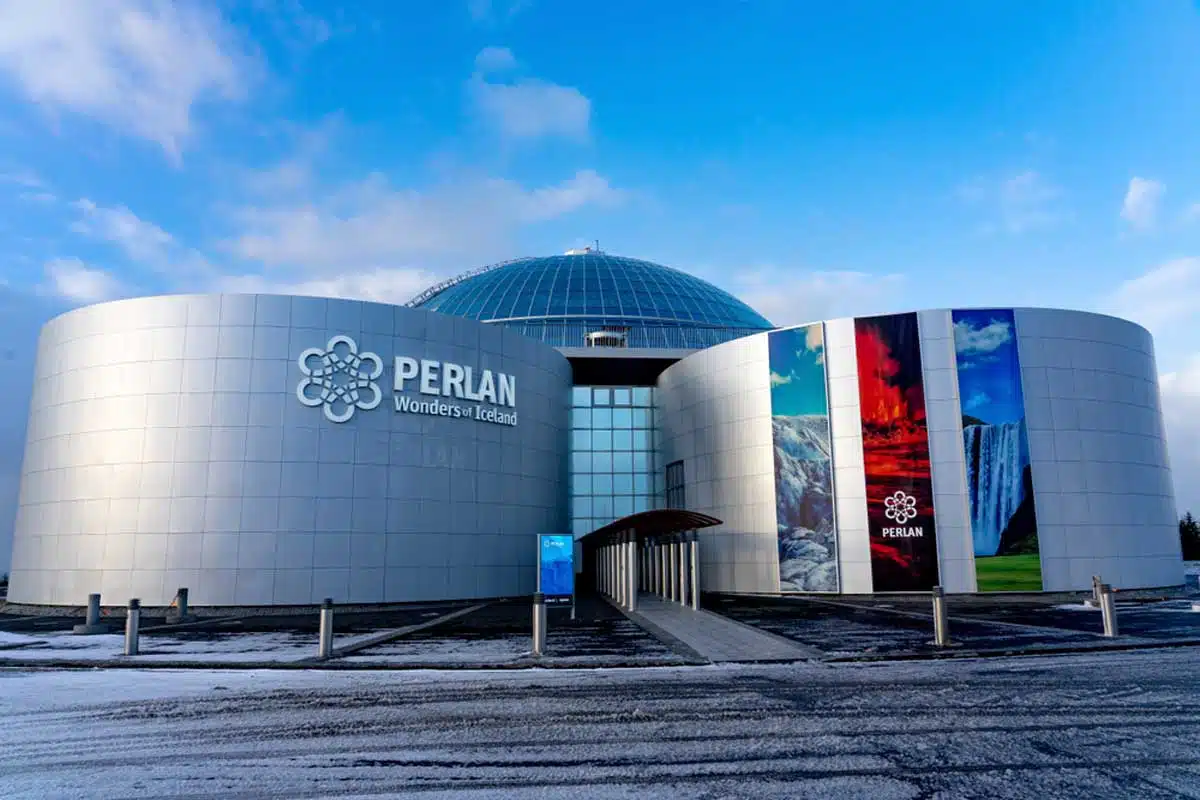
No one can blame you solely for visiting Iceland to explore its captivating landscapes. But, one of the best things to do in Iceland in winter is delve into the country’s culture and heritage.
Reykjavik, the capital city of Iceland, is also its cultural heart. You’ll find numerous museums, parks, art galleries, and other attractions throughout the city. Its must-visit museums include the National Museum of Iceland, the Perlan Museum , and the Árbaer Open Air Museum.
If you’re not one for museums, Reykjavik has some other great places to visit. The famous Hallgrímskirkja Church — a towering structure — reaches 244 feet and has been an iconic Icelandic landmark for decades.
Tip: Most museums and other cultural attractions come included on a guided walking tour of Reykjavik led by an actual Viking.
Eating and Drinking Your Way Through Winter in Iceland
Where to drink.
You’ll often need some liquid courage to endure the colder days in Iceland in winter. And here are the two watering holes you should visit.
Kaffibarinn
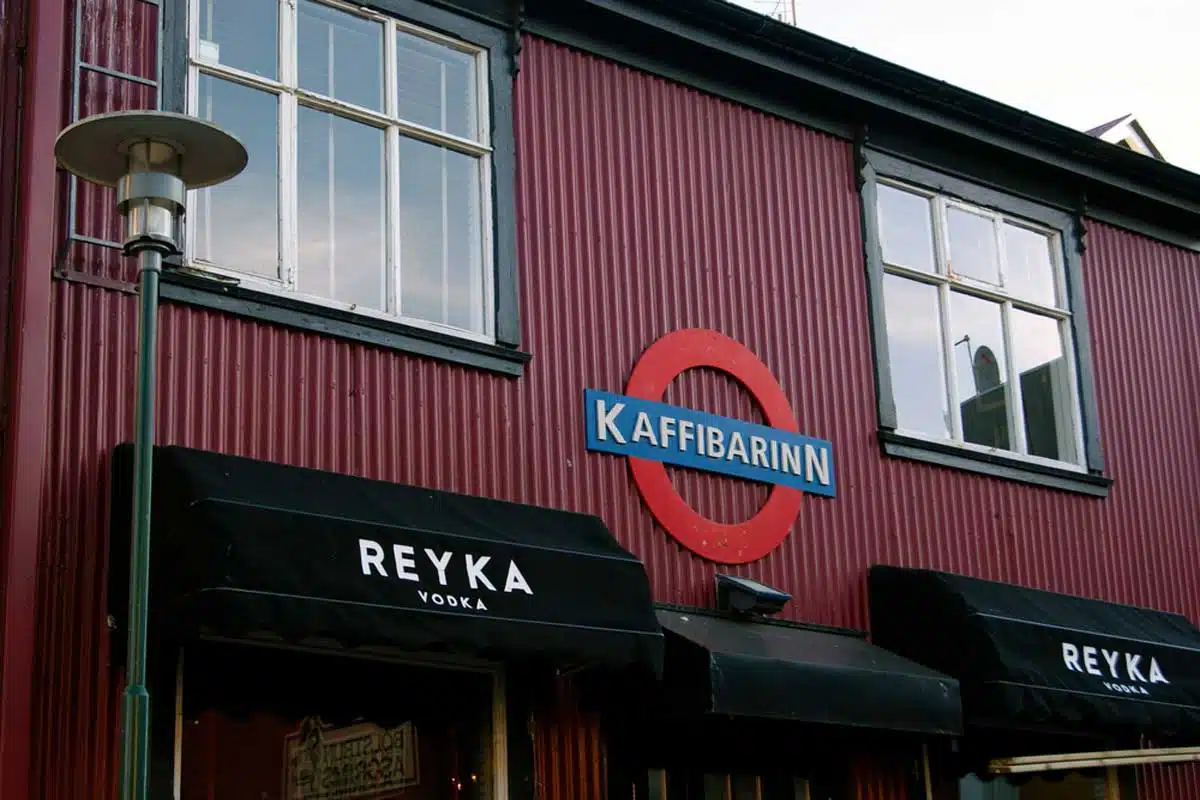
One thing you need to know about most cafés in Iceland, and Reykjavik specifically, are that they tend to transform come sundown. During the day, Kaffibarinn is a fantastic coffee shop, and at night, it takes on a nightclub feel. Expect at least one impromptu dance party, no matter when you visit.
Magic Ice Bar
An iconic bar in Reykjavik and a guaranteed fun experience is sipping on tantalising cocktails served within a sub zero bar.
Welcome to Magic Ice Bar, located in the city’s downtown just off Rainbow street. Everything here comes made of ice, from benches to the glasses your drinks arrive in.
Tip: Book your entrance ticket to Magic Ice Bar in advance, as this also comes with a complimentary drink.
Where to Eat
Nothing beats a hearty meal after a day of adventuring through Iceland, and one thing the country does very well is serve up fantastic cuisine. Visit these two culinary highlights.
Grillmarkaðurinn
A famous grill market, this high-end restaurant presents itself as a dining experience set in the garden of Eden. Blending nature and cuisine here, you can feast on unique meat-focused dishes. You’ll find whale, horse, reindeer, and even puffin dishes on the menu.
A Michelin-starred restaurant, it often features as Iceland’s best, and for a good reason. Expect mouthwatering dishes such as traditional fish stew or reindeer tartar.
And what’s dinner without a view? From your table, you’ll also have some stunning scenery to gawk at.
Where to Stay When Visiting Iceland in the Winter
Explore the best places to stay in Iceland during the winter months.
Exeter Hotel (Mid-Range)
Located in the heart of Reykjavik, this 4-star contemporary hotel is the ideal accommodation for any Icelandic adventure. The Exeter exudes opulence with industrial decor, modern touches, and luxurious wood finishings. The best part is that Exeter delivers luxury at an affordable price tag.
Check Prices and Availability
Umi Hotel (Luxury)
At the foot of the famous Eyjafjallajökull volcano in southern Iceland sits the Umi Hotel . Considered somewhat off the beaten path, it’s the perfect spot to find solitude while you benefit from stunning views. The property offers numerous activities, including horseback riding.
Practical Tips for Planning Your Visit to Iceland during Winter
- Iceland is a popular destination, so be sure to book your accommodation in advance, check the opening hours of attractions, and plan accordingly.
- To make the most of Iceland’s winter activities, check out my packing lists to ensure you’ve got everything you need.
- Remember that Iceland isn’t the only place to experience a fantastic wintery adventure. Have a look at some other wonderful winter destinations in Europe. You can thank me later.
Iceland in Winter: Map
Iceland in Winter: Read Next
- Incredible Things to do in Iceland
- Northern Lights Hotels in Iceland You Need to Visit
- 7 Day Iceland Itinerary
- 12 Hot Springs in Iceland You Need to Visit
- Camping in Iceland: The Top Spots
- Travelling in Iceland: What You Need to Know
- Best Places + Areas to Stay in Iceland
Love This? Save and Share on Pinterest
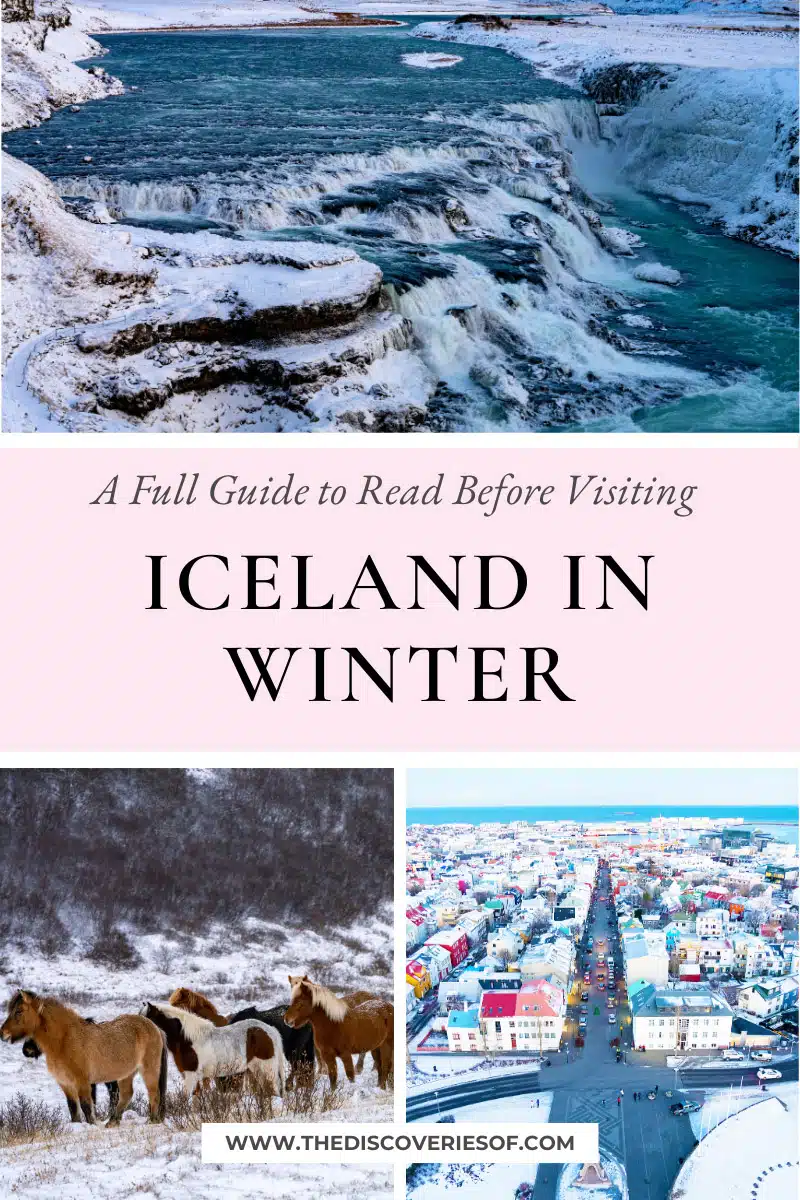
I’m Julianna Barnaby - a professional travel writer and geek extraordinaire. I started The Discoveries Of to help you to discover the best of new destinations from around the world.
Discovering new places is a thrill - whether it’s close to home, a new country or continent, I write to help you explore more and explore differently.
Related Posts
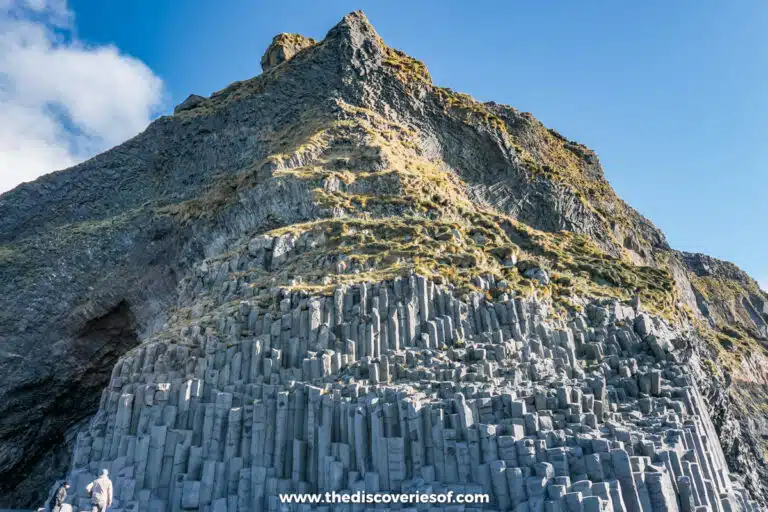
Visiting the Reynisdrangar Basalt Sea Stacks – A Complete Guide
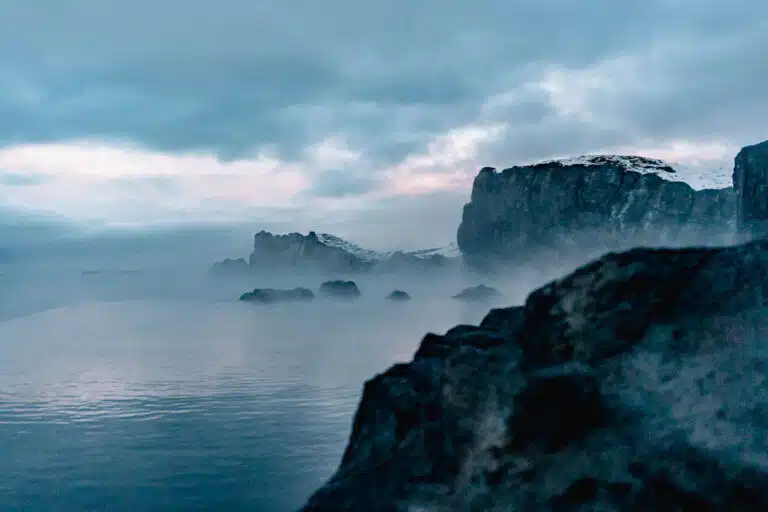
Time to Discover: The Stunning Sky Lagoon in Iceland
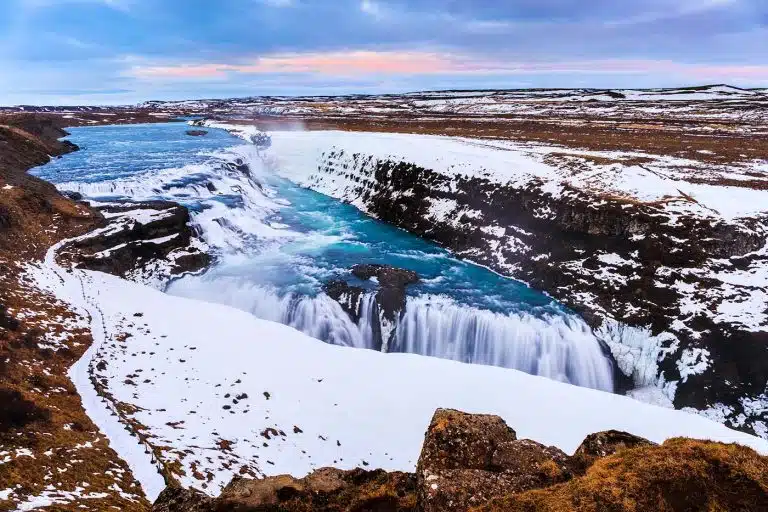
Visiting Gullfoss Waterfall Iceland: A Practical Guide
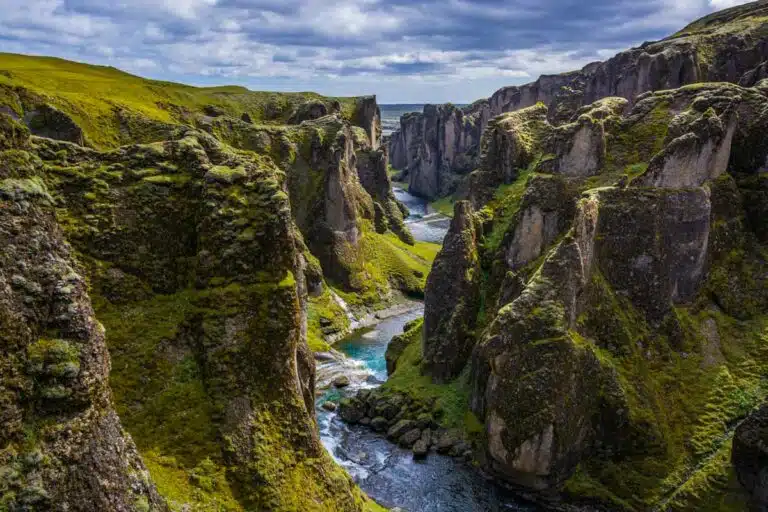
Iceland Travel Tips: 19 Things You Need to Know Before Travelling to Iceland

Follow me on Instagram for travel inspiration, tips, and guides.
Thanks for visiting nordicvisitor.com! For the very best browsing experience on our website, we urge you to upgrade to the most recent version of your browser . Some of our site features may not function properly on older versions.
- Travel Update
- Search Suggested Results View All Results
- EUR (€)
- GBP (£)
- Self-Drive i
- Privately Guided i
- Guided Small Groups i
- Northern Lights i
- Honeymoon & Romance i
- Ice & Snow Hotels i
- Multi-Country Tours i
- All Travel Styles
- Show all tours
- Best Sellers
- Special Offers
- Scandinavia
- Switzerland
- United Kingdom
- Book With Confidence i
- Why book with us i
- Booking Terms i
- Sustainability Policy i
- Manage Booking
- Privacy policy
Iceland Bíldshöfði 20 110 Reykjavík +354 578 20 80 View Map
Sweden Scotland View Details
Top 10 Things to Do in Iceland in Winter
Curious about what you can do in Iceland in winter? Quite a lot, as it turns out!
Visiting Iceland in winter gives you the chance to see the country’s stunning landscapes in a magical light. Enjoy thrilling Iceland winter activities like ice caving, snowmobiling and chasing the northern lights. Explore must-see natural attractions such as waterfalls, glacier lagoons and black sand beaches.
Come to Iceland between October and April and you’ll get more of the top sites to yourself. And at this time of year, you’ll find fewer cars on the roads compared to the peak summer season. This quieter atmosphere only adds to the magic of Iceland in winter.
As for the top things to do in Iceland in winter? Read on to find out.
- Explore winter tours in Iceland to begin planning your adventure
1. Chase the northern lights
If catching sight of the northern lights – or “aurora borealis” – is on your wish list, you’ll want to visit Iceland in the winter months. Why you ask? To see the colours of the aurora clearly you'll need dark skies. In Iceland, the winter period is the darkest time of the year, and the nights are at their longest.
Watching the northern lights illuminate the sky above you is an otherworldly experience you won’t forget. It’s even better when you’re in Iceland, as you can combine night-time aurora excursions with daytime adventures to see the country’s famously beautiful scenery.
Although northern lights sightings are never guaranteed, as it is a natural phenomenon, you have more chance of glimpsing them between October and April. Guided tours to seek them out are a must-do in Iceland in winter.
- Hunt for the aurora on these northern lights tours in Iceland
- Related: Best times and places to see the northern lights in Iceland
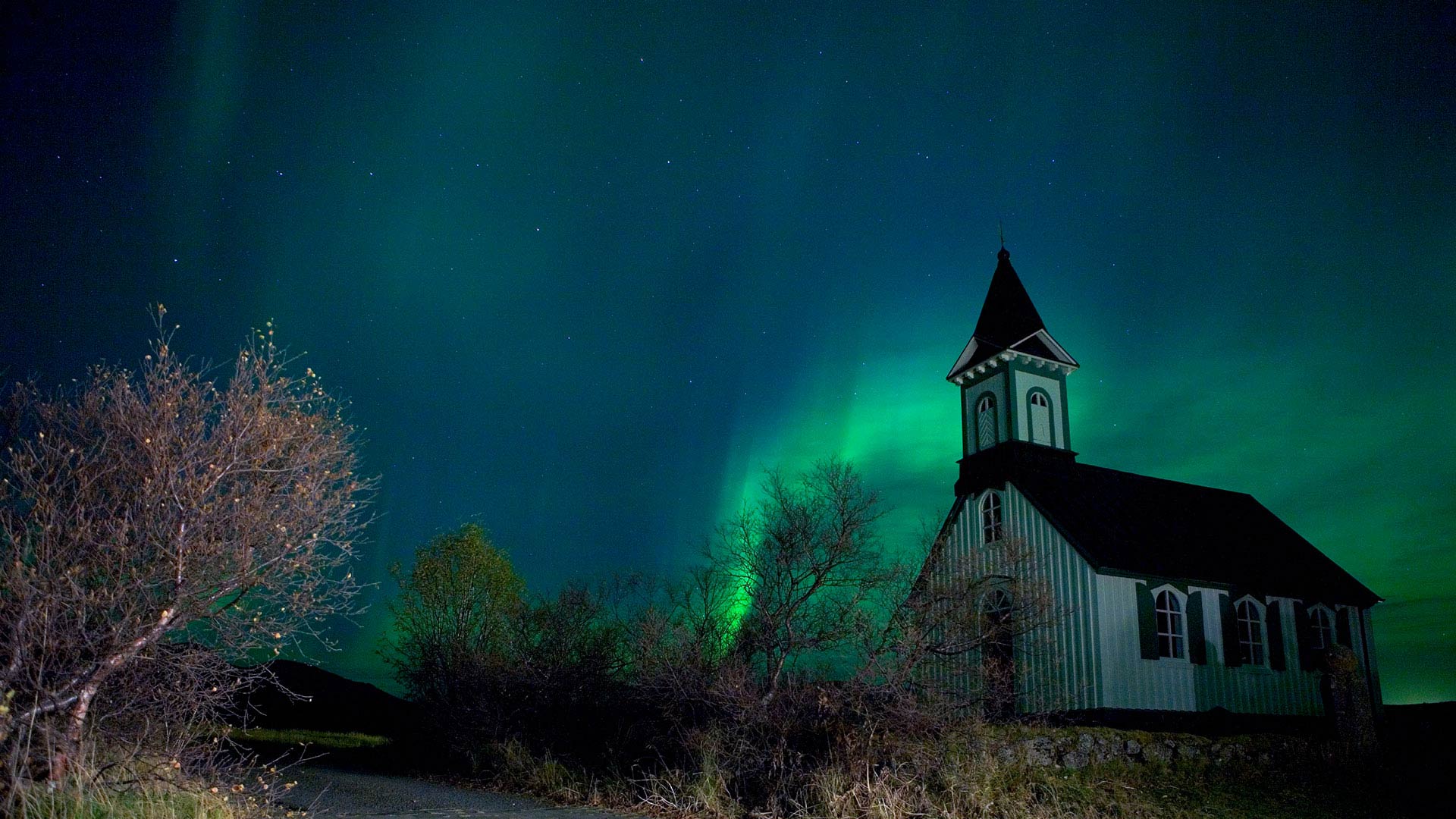
2. Celebrate Christmas and New Year’s Eve
This may come as a surprise to you, but Icelanders are pretty big on Christmas and New Year’s celebrations . The festive season – “Jólin” – spans November, December and January, with pretty decorations and lights bringing a touch of magic to towns like Reykjavík.
There are plenty of festive traditions to learn about and events that you can join in on at this time of year. Discover who the mythical Yule Lads are on a Christmas walking tour in Reykjavík. Sample typical cuisine that Icelanders prepare on Christmas Eve, such as lamb and fish.
Or attend a New Year’s Eve party to enjoy a gourmet feast with drinks, live entertainment, and unrivalled views of the fireworks from a rooftop lounge. And be sure to go along to one of the community bonfires earlier in the evening. It’s a great Icelandic tradition and one of the top things to do in Iceland in December .
- Experience the festive season in Iceland with these Christmas tours and New Year’s Eve packages
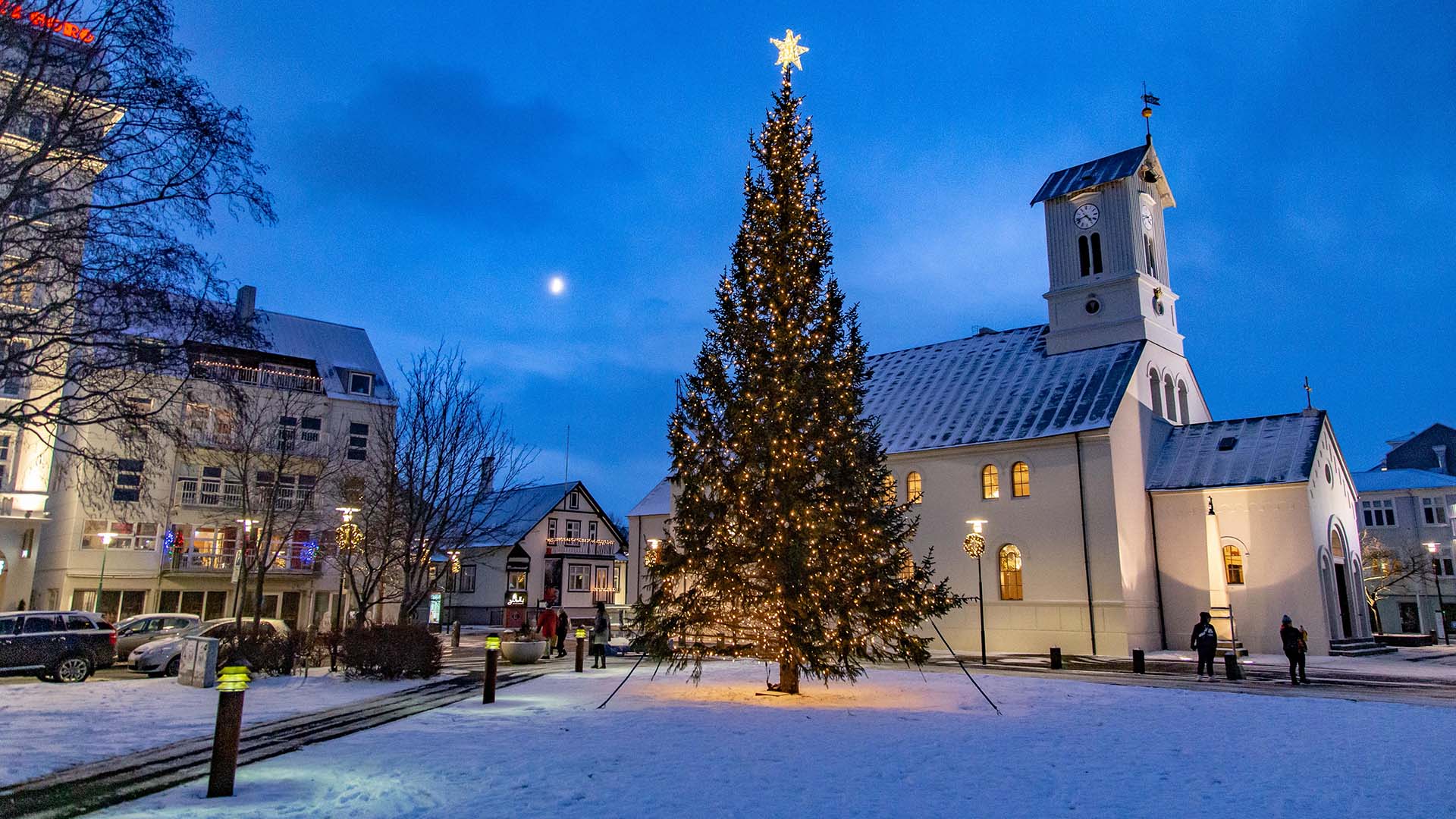
3. Try activities in the snow
As it’s winter you’ll probably want to make the most of the snow in Iceland. And if you’re an active type, you’ll love it here as thereare plenty of opportunities for fun outdoor activities.
How about snowmobiling over a glacier? Embark on a snowmobile tour at Langjökull, the second largest glacier in Iceland, to get your adrenalin pumping. On a clear day, you’ll get to soak up views of the mountains on the horizon as you go.
Better yet, you can combine this snowmobile tour with a journey Into The Glacier . Descend into the icy tunnels of Langjökull that have been carved out to show you what it’s like beneath the surface.
You could also go skiing, snowboarding and snowshoeing in winter. These are just a few of the many ways to enjoy the snow in Iceland .
- Go snowmobiling on a winter tour of Iceland
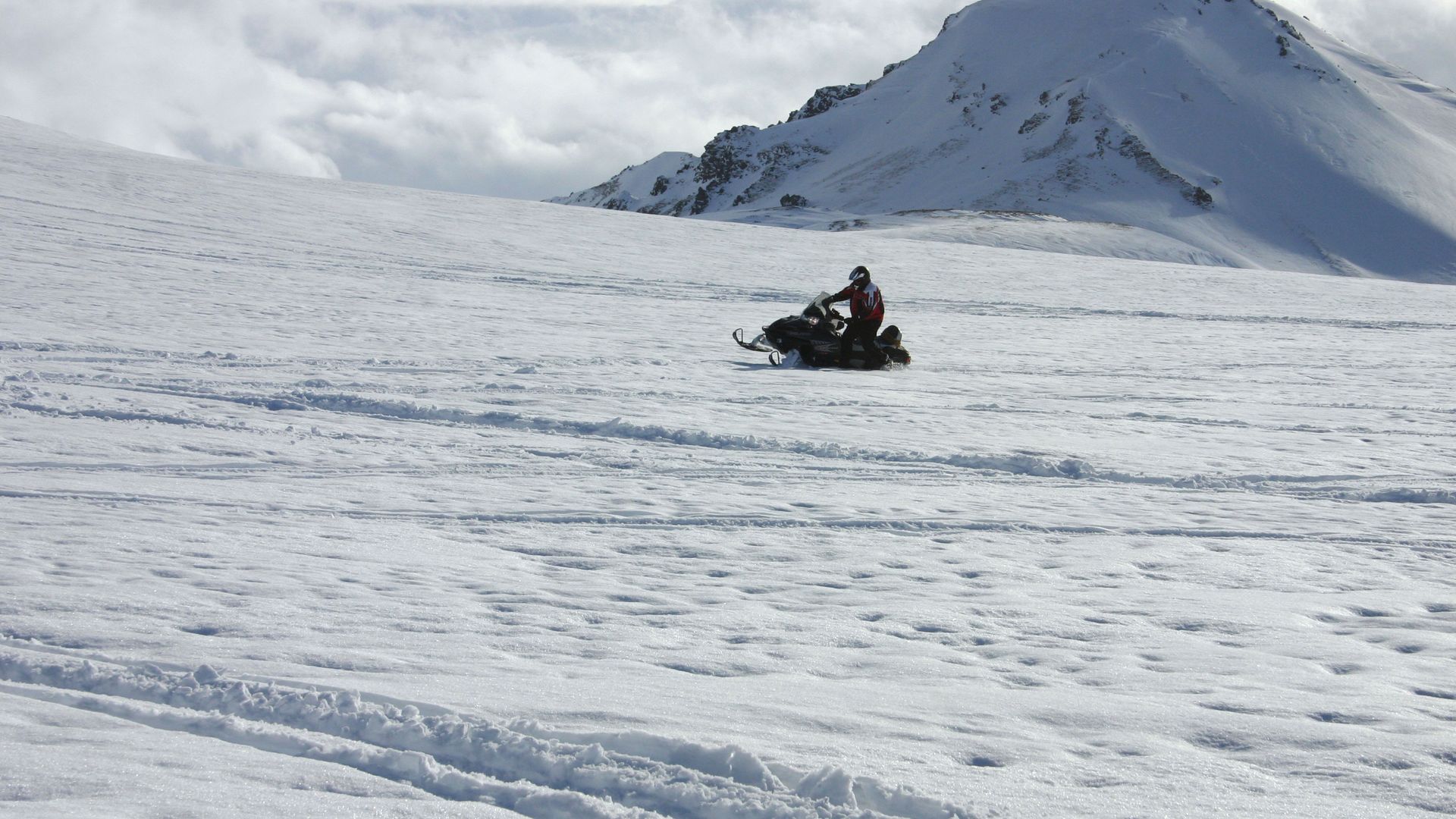
4. Tour the Golden Circle
One of the best places to visit in Iceland during winter is the Golden Circle . You might have heard of this hit attraction, but what is it exactly?
The Golden Circle is a short touring route that begins from Reykjavík and takes in a handful of must-see sites in Iceland. Within just a few hours, you can marvel at Gullfoss waterfall, the Geysir geothermal area and Þingvellir National Park .
The great thing about exploring the Golden Circle is that you experience the diversity of Iceland’s nature on a day trip from the capital city, Reykjavík. Expect to be amazed by volcanic hot springs, thundering waterfalls, and a rift valley positioned between the North American and Eurasian tectonic plates.
- Discover the Golden Circle from Reykjavík on these multi-day tours
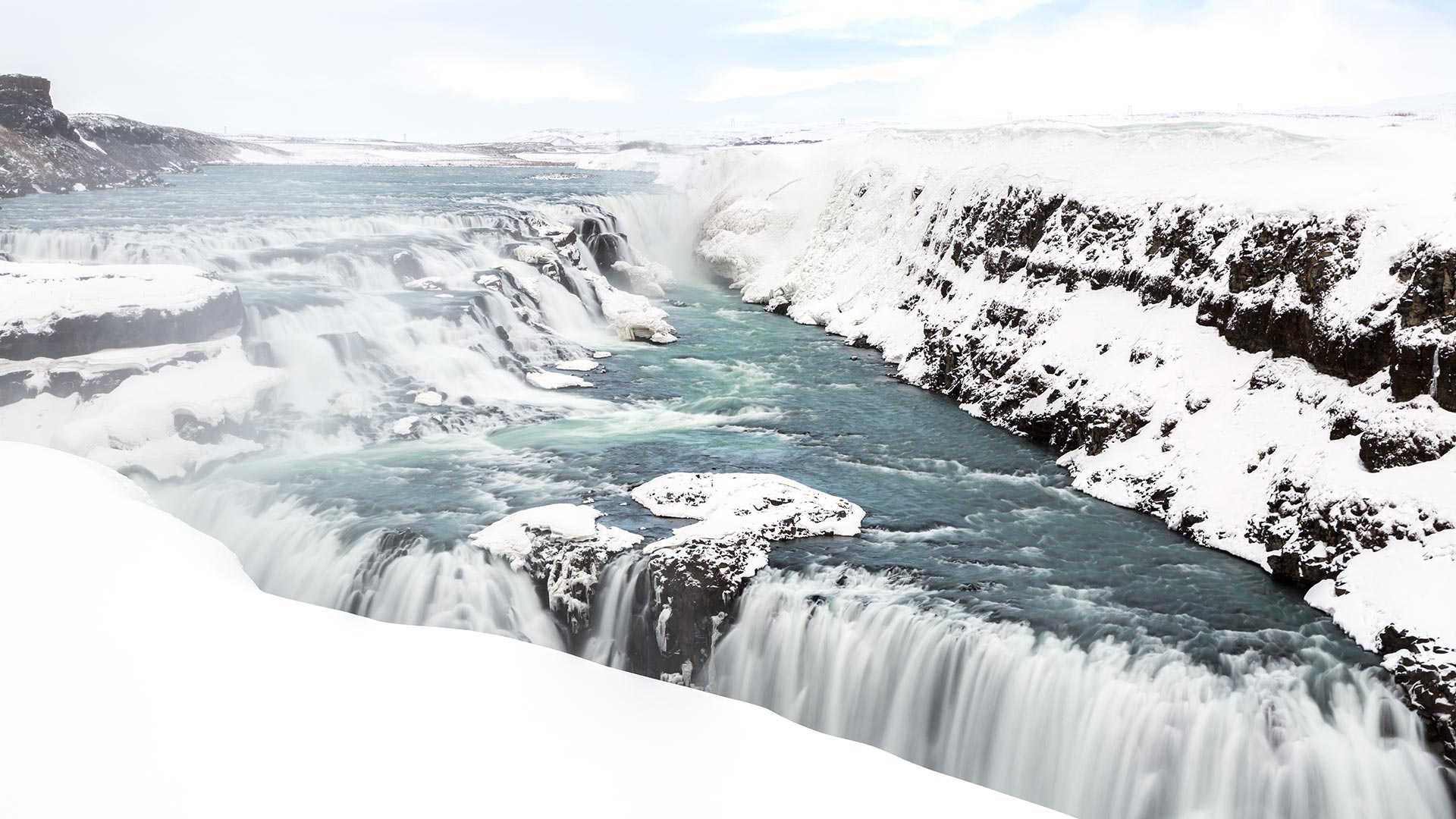
5. Visit icy waterfalls and glacier lagoons
Iceland’s waterfalls – of which there are thousands – are beautiful no matter what time of year you visit. The same can be said for the country’s glacier lagoons, where icebergs float atop blue glacial waters.
Come in winter, though, and you could witness these spectacular sights cloaked in frost, ice or snow.
Discover some of the best waterfalls in Iceland , like Seljalandsfoss and Skógafoss in the south, or Dettifoss and Goðafoss in the north. Watch as water cascades dramatically from towering heights, sometimes even freezing into icicles.
Be sure to visit Iceland’s glacier lagoons too. You'll see chunks of ice calving into the water and floating towards the sea at Jökulsárlón in South Iceland, or head to Fjallsárlón lagoon nearby. Both of these lagoons are fed by the mighty Vatnajökull glacier, the largest ice cap in the country.
- Soak up these natural gems on a guided small group tour of Iceland
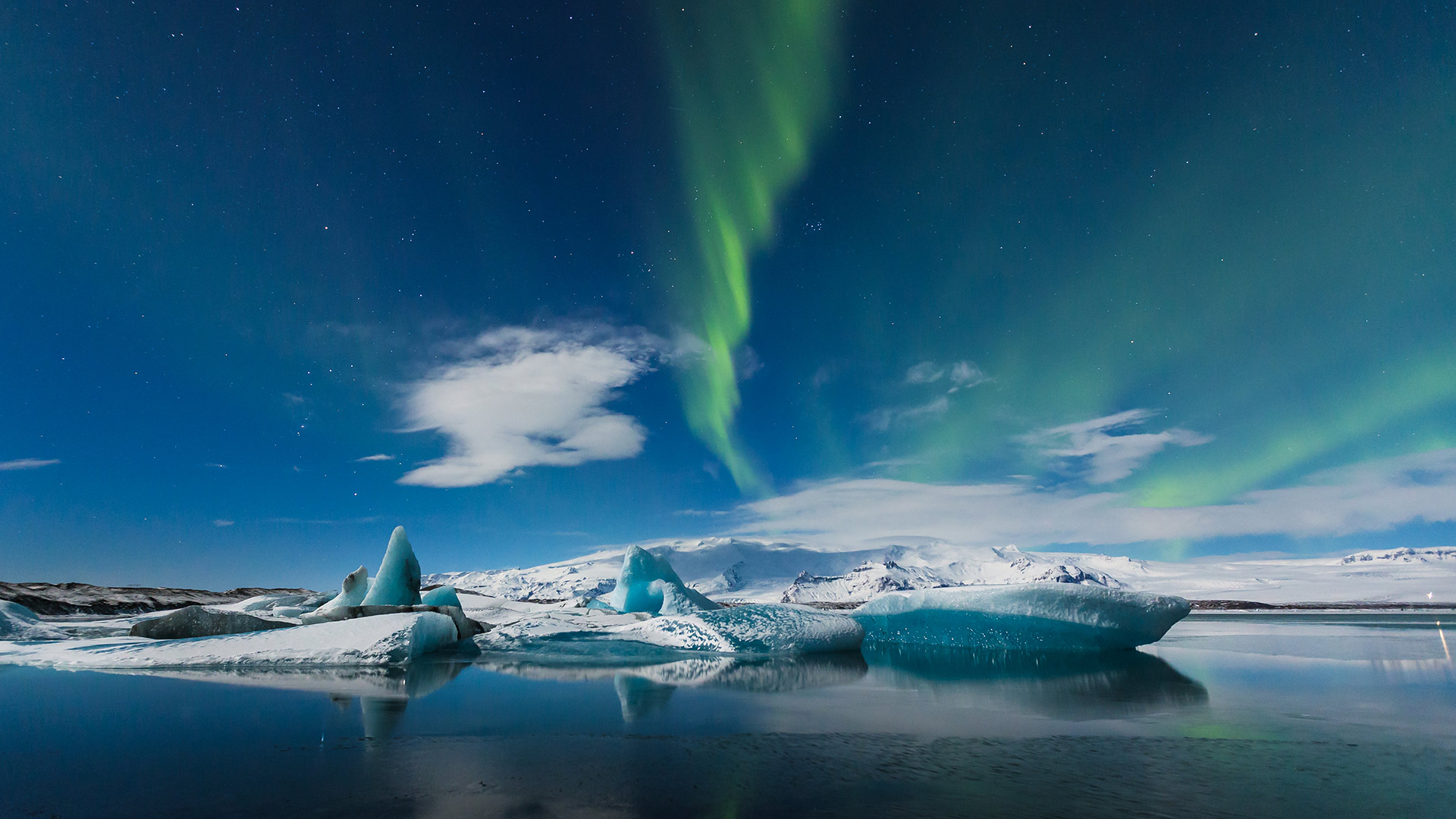
6. Explore ice caves in Iceland
Want to experience one of the coolest Iceland winter activities? Then don’t miss the chance to go ice caving in a glacier.
To venture into Iceland’s ice caves – located in the Vatnajökull and Kötlujökull glaciers – you must visit between mid-November and early March. That’s because these caverns are naturally formed. The glacial meltwaters freeze every winter and melt once the weather warms up.
This means that each year you could explore a new ice cave with different shapes and tunnels compared to the previous winter. It's difficult not to be amazed by the vivid blue hue and the way the light reflects in these icy chambers.
Don’t forget that you need to join one of the ice cave tours to see this natural wonder. Navigating the tours requires technical experience, so you have to be accompanied by an expert guide.
- Add ice caving to your privately guided Iceland tour
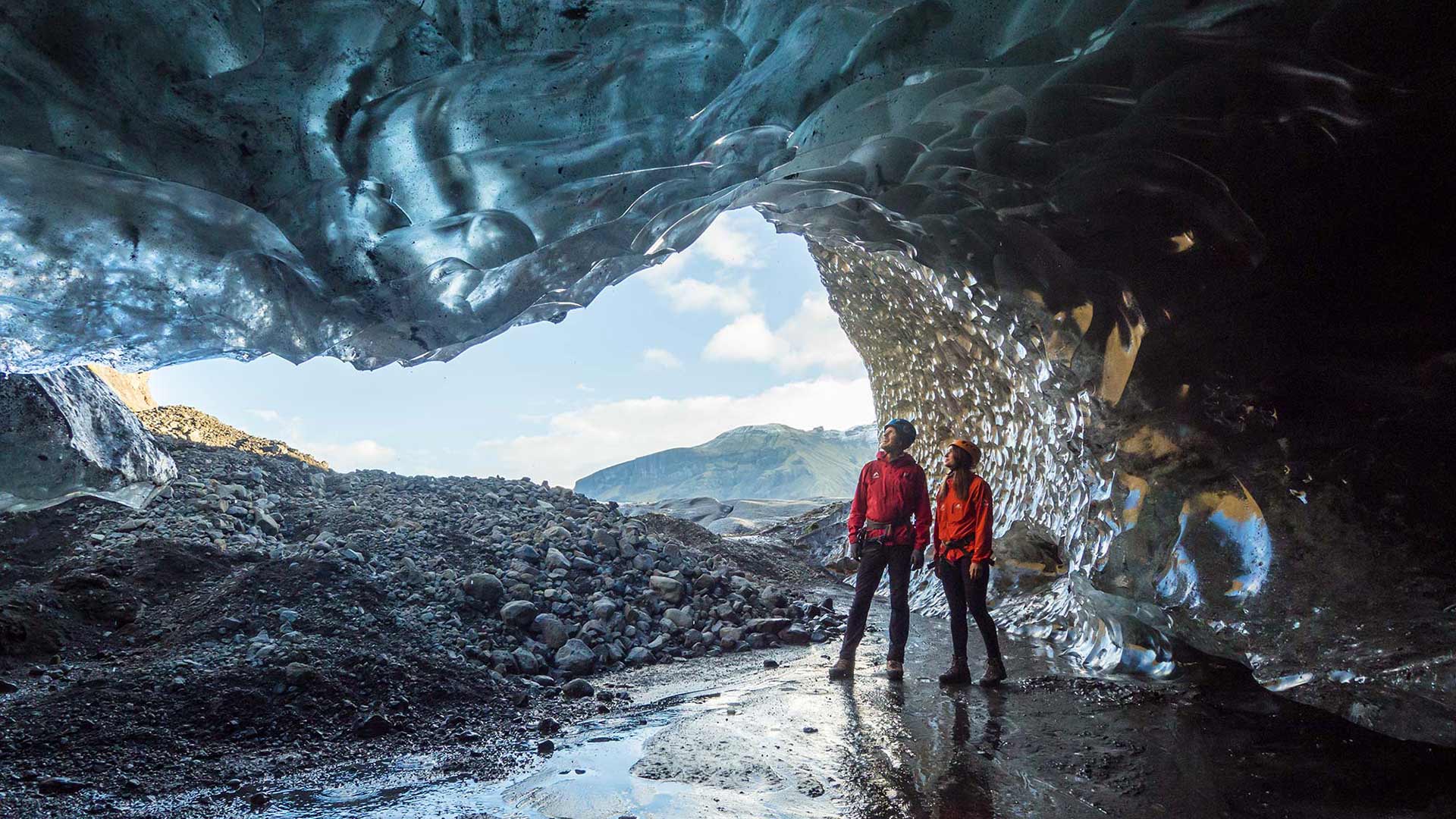
7. Relax in hot tubs and swimming pools
Did you know that Iceland is brimming with hot springs and geothermal pools?
The volcanic landscape blesses the country with naturally heated water that flows up into rivers, and “hot pots” which are dug out of the ground. It’s also diverted to inviting hot tubs and swimming pools all around the country, so you don’t need to look far to find one.
Plunging into the warm, steamy water is just what you need on a frosty winter’s day. Icelanders love this Nordic wellness ritual and will tell you that it’s an unbeatable way to relax and absorb natural minerals.
You might want to do some laps, hit the sauna and steam room, or simply luxuriate in a hot tub and look out over snow-dusted scenery. At certain pools you can also treat yourself to some pampering spa treatments for an indulgent experience.
There are so many hot springs and geothermal pools in Iceland to choose from. Among the most famous ones are the Mývatn Nature Baths in North Iceland, and the Blue Lagoon and Secret Lagoon , both accessible from Reykjavík.
At the Blue Lagoon , you can even stay the night if you don’t want the pampering to end!
- Indulge in a stay at the Blue Lagoon Retreat on one of these luxury Iceland packages
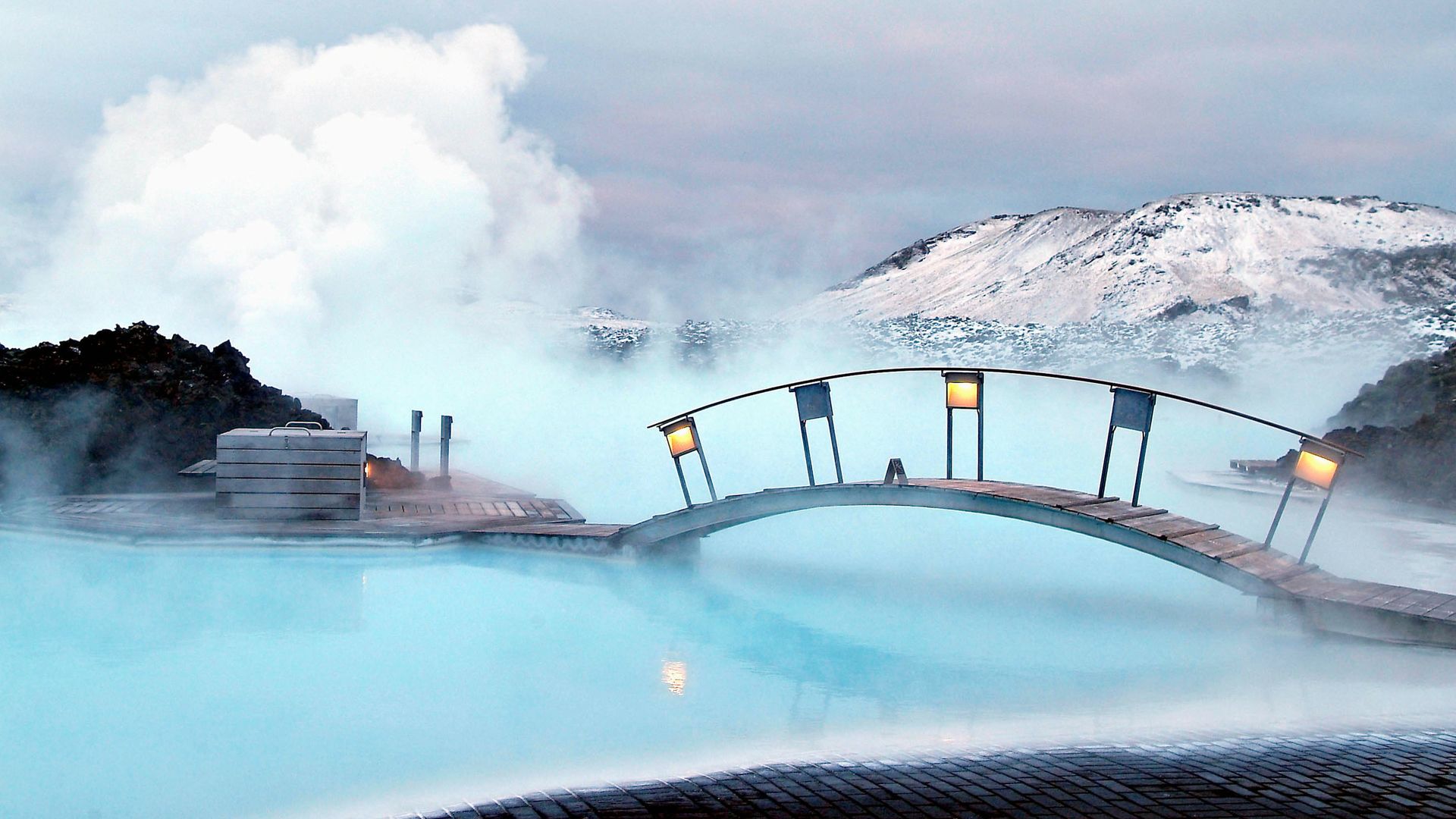
8. Drive Route 1 on a road trip
To reach the different parts of Iceland in winter, you could drive around Route 1 on what we call a “Full Circle” road trip. This is the major road in Iceland, also called the Ring Road, which loops around the country.
Driving this route allows you to visit each region, starting from Reykjavík and making your way around South, East, North and West Iceland. You get to soak up dramatic scenery along the way and experience the special charm of each corner of the country.
A particular highlight of driving the Ring Road in winter is that you'll get more opportunities to witness the northern lights. The remote locations on this route are far from light pollution, so you can see the colours dancing in the sky really clearly.
On the other hand, if you don’t fancy driving the whole way, you could explore a section of Route 1. We highly recommend the South Coast of Iceland or West Iceland . Both these areas are accessible from Reykjavík and are packed with impressive sights. You could even combine these two regions to see as much as possible!
- Explore your Iceland road trip options with these winter self-drive packages
- Related: Tips on how to drive in Iceland in winter
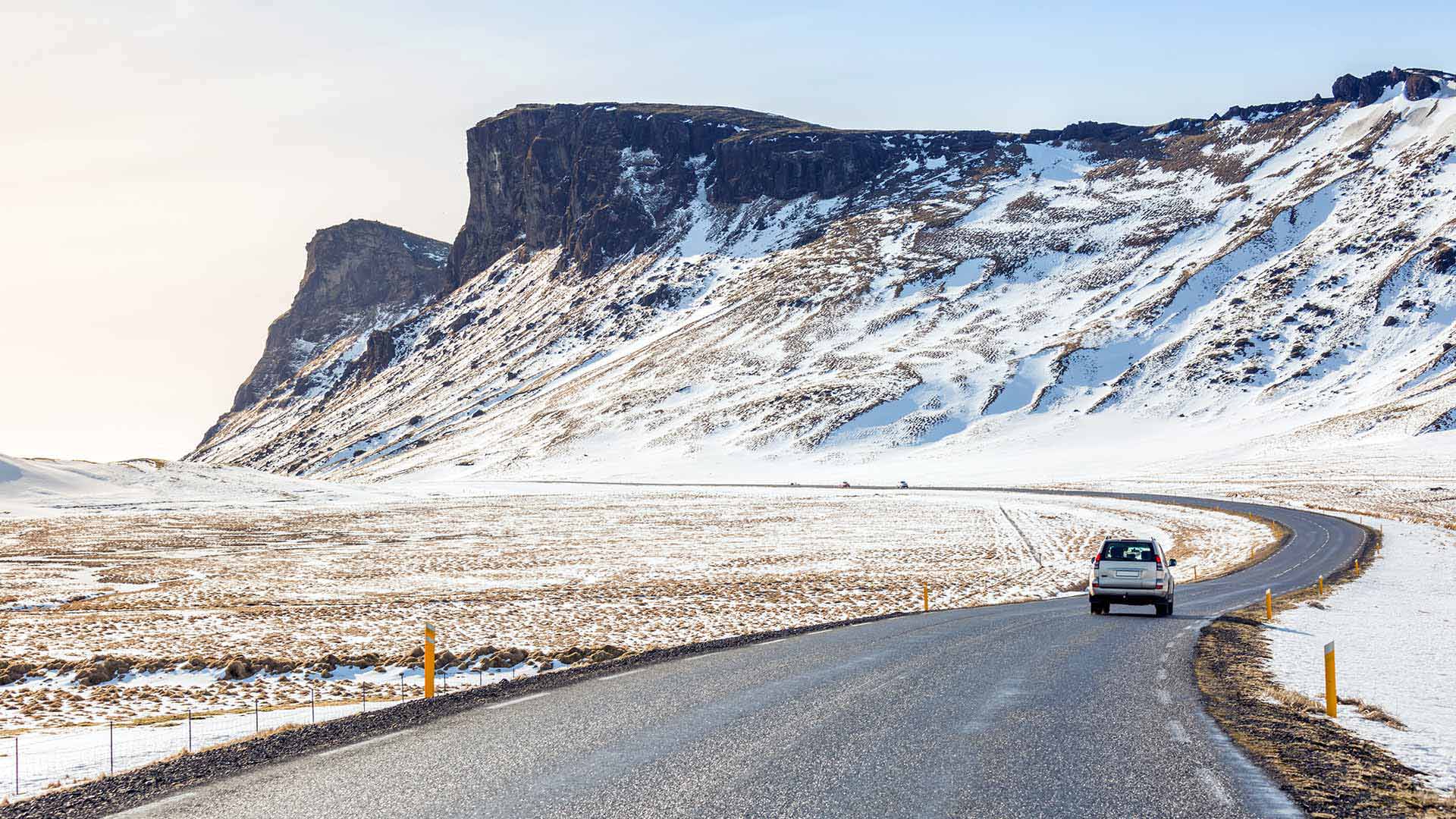
9. Ride an Icelandic horse
Icelandic horses are adorable. They’re shaggy, stocky and very hardy. Why? Because these are purebred horses are unique to Iceland and have adapted to the climate over centuries.
Their hardiness comes in handy when the winter sets in. It also means you can go horse riding in Iceland in the snow. Moving through beautiful Icelandic landscapes on horseback is a special experience that allows you to get close to nature.
Another cool thing about Icelandic horses is that they have an additional gait, on top of the standard ones. This four-beat gait, tölt , is smooth and fast – sometimes as fast as cantering!
- Add a horse riding activity to your multi-day vacation package
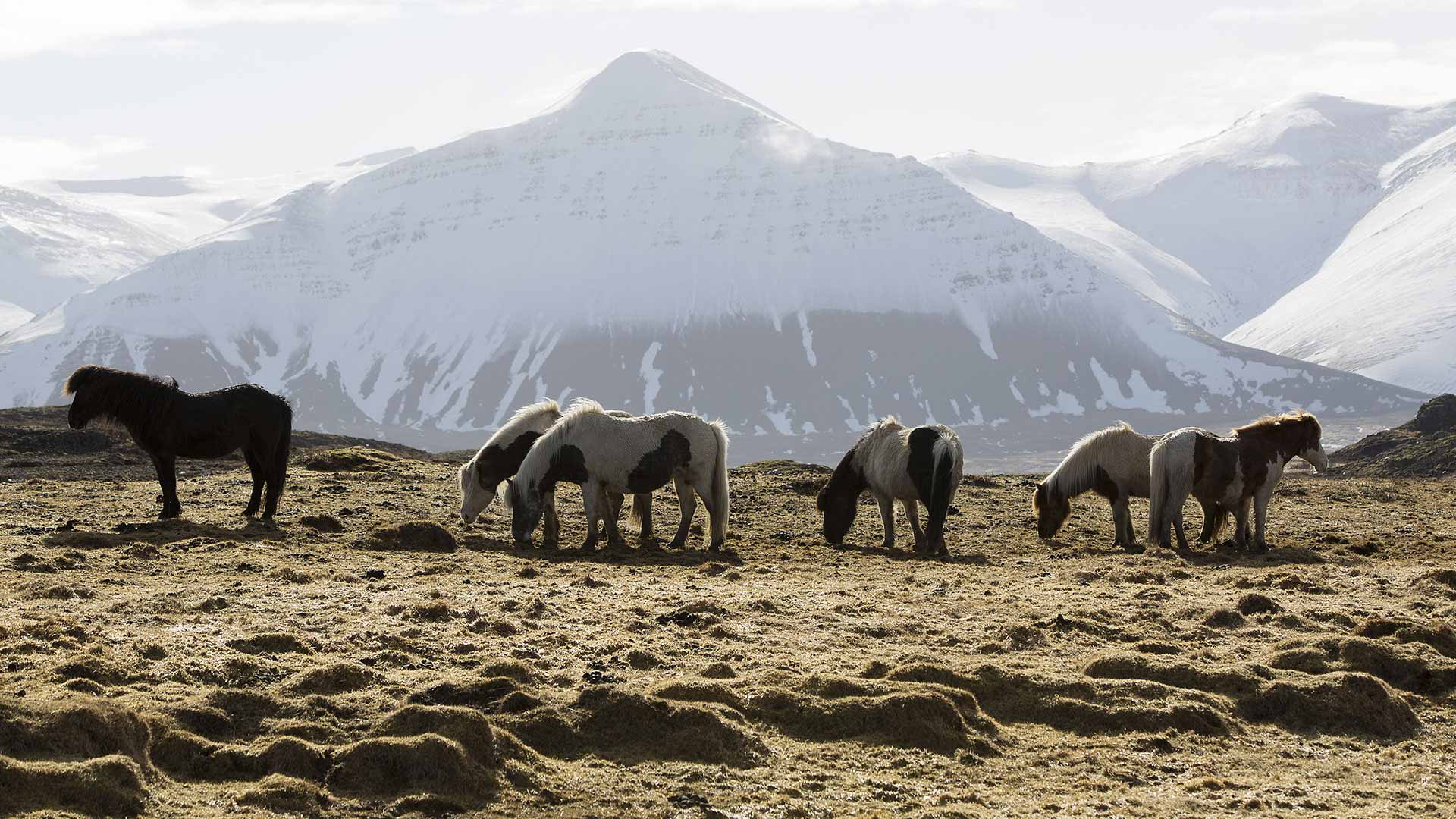
10. Enjoy winter events and festivals
The weather might get cold, but Iceland doesn’t get sleepy in winter. Depending on when you visit, you could join the locals in attending some of these cultural, traditional and sporting events.
Here’s our pick of interesting winter events and festivals in Iceland:
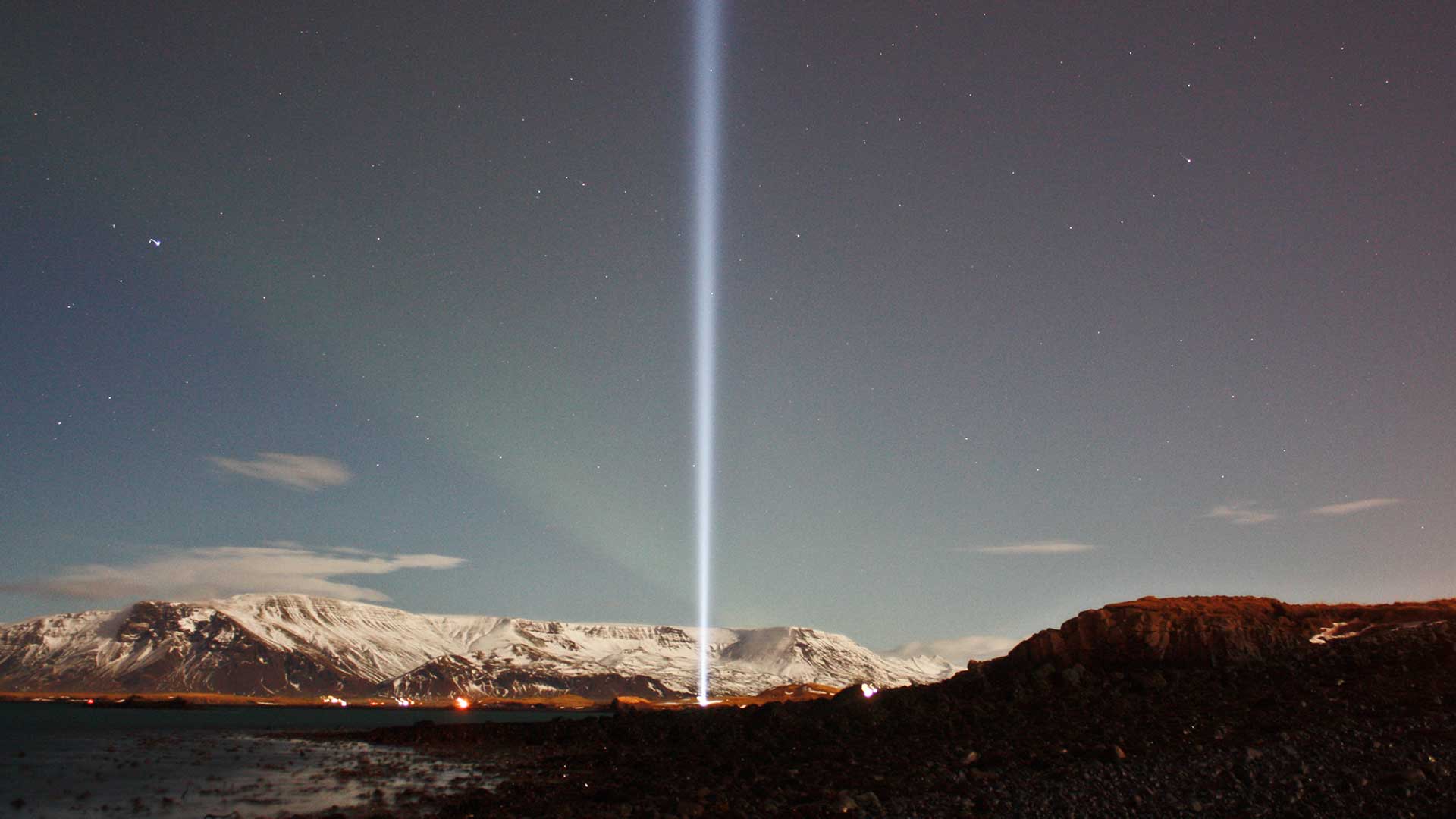
Tempted to experience Iceland’s winter charm for yourself? You can add as many of these Iceland winter activities to your itinerary as you like. Take your pick from self-drive packages , privately guided or small group tours , and city breaks with day trips .
Get in touch to start planning your adventure in Iceland or to speak to our local experts for more advice. They know Iceland inside out and will use their expertise to personalise a winter tour to suit you.

Wanderlust has taken Emma across much of the world, but it was Scotland that she made her adopted home. Aside from enjoying countryside walks, campervan weekends and gigs in Glasgow, you’ll often find her writing about European travel and plotting her next trip.
Getting there
We'd love to give you the same amazing travel experiences as you read about in our blog! To visit the destinations and attractions mentioned in this post - and to discover a few new highlights along the way - check out these recommended Nordic Visitor tours.
ICELAND FULL CIRCLE CLASSIC - WINTER
- USD ($)
- CAD ($)
- AUD ($)
NORTHERN LIGHTS CIRCLE TOUR
Christmas & new year’s in iceland, related posts, best time to visit iceland: your complete guide.
Blogs , Activity , Iceland , Northern Lights , Guides , Things to Do
What to Wear in Iceland : Your Guide
6 reasons to celebrate new year's eve in iceland, a little something about the northern lights.
Travel to Iceland
Tours & Vacation
- Aug 15, 2023
Iceland in Winter; Things to Do and See in Iceland in winter

Iceland in winter (December to March) can be a magical experience. The island offers visitors so many once-in-a-lifetime experiences and people travel from far and wide to spend the festive season in what can only be described as a true winter wonderland.
If you’ve been wondering when to book your trip to Iceland, this article is for you. We do a deep dive into the season and whether it will allow you to tick off all those Iceland bucket list itinerary items.
The Pros and Cons of Spending Iceland in Winter
As with most things in life, spending Iceland in winter has its pros and cons. We’ve compiled a quick overview so you don’t have to:
The summer months are considered the peak tourist season in Iceland. And peak tourist season brings with it…masses of tourists, of course. Visiting Iceland in winter allows you to skip the crowds.
With the summer crowds in your rearview mirror, you can also wave goodbye to peak season prices.
You truly get to experience Ice land and it’s absolutely gorgeous.
You get to see beautiful seasonal attractions such as the ice caves or the Northern Lights.
Certain parts of the island are almost completely inaccessible during the winter months. For example, if you have things that you want to do or see in the Westfjords or the Highlands, you might want to come during the summer season.
The weather in Iceland has almost been pretty unpredictable, but with the legendary Icelandic winds and snow also in the mix, you can expect sudden road closures. This can often create havoc with a well-planned itinerary or a road trip.
It should be fairly obvious, but Iceland in winter is extremely cold. So if you’re not someone that can handle temperatures well below freezing you might want to give Iceland in winter a skip.

What You Can Expect From the Weather When Visiting Iceland in Winter
A famous local saying says that “you can experience all four seasons in a day in Iceland”, but even though you’ll get some sun during the winter months, you won’t get close to summer temperatures.
But it’s these low temperature that makes many of the Iceland attractions in winter and things to do in Iceland during winter possible in the first place.
In general, the thermometer will rarely move above the 0-degree mark. Even though you can expect temperatures ranging from -30 to 2 degrees Celsius. The cities such as Reykjavik can feel slightly warmer due to the buildings providing a certain amount of shelter against the winter elements.
And winter is the season in Iceland where you get to experience almost all of the elements at play; rain, sun, snow, winds, etc. Daylight hours are also few and far between, so keep that in mind when compiling your itinerary.
At its peak, you can expect just about 4 hours of daylight each day. But, once again, this darkness is also what makes certain Iceland winter activities possible.
Packing List When Traveling to Iceland in Winter
We often get asked this question. And before you start packing your entire closet for “just in case” use this handy packing list as a guide:
Waterproof, long winter coat
Waterproof jacket
Wool and fleece sweaters (just take a couple of woolen sweaters as you definitely want to buy a few of the authentic Icelandic woolen sweaters once you’re here)
Waterproof winter pants
Winter pants (for when you’re just out and about in the city)
T-shirts & long-sleeved shirts
Thermal underwear
Woolen socks
Waterproof hiking boots (irrespective of whether you’re planning on going camping or not)
An extra pair of shoes (you’ll want to change out of your wet, muddy gear before you enter a hotel or a restaurant.
Warm, waterproof gloves
Warm hat (beanies work really well)
Bathing suit (for when you want to take a dip in the hot springs)
Flip flops (for public restrooms and the hot springs)
A Quick drying towel (you do not want to walk around with wet things during the wintertime)
Thermos Flask (this works well for both having water on hand as well as staying stocked up on delicious hot drinks out in the cold)
Moisturizing cream and lip balm ( dry skin and cracked lips are a real thing in Iceland during the winter months)
Washcloths (most accommodation do not provide these)
Electronic devices: charger, cables, adapter, power bank, etc.
Toiletries and medications (just remember to double-check flight restrictions before vital medicines get confiscated at the airport)
Backpack (for day outings)
Small ice scraper or foldable snow shovel (even though you probably won’t be able to bring this along with you on your flight, we’re still placing it here as a reminder since you WILL be needing one of these if you’re planning on renting a car and most rental agencies do not provide them)

Camping in Iceland in Winter
We often get asked whether camping is still one of the things to do in Iceland in winter. And it is, but probably not because of the reasons you think. Unless you’re Bear Grylls shooting a survivalist series, Iceland in winter is not the time to go camping on the island.
So you will also find that certain campsites close during the winter months. Others might fall within the regions that are inaccessible during winter too, so unless you grow wings you won’t be able to get to them either.
But there are a few other campsites that remain open and are a good solution if you want to cut down on some accommodation costs. By renting a campervan you’ll be able to tick off both accommodation and transport on your Iceland to-do list.
If you’re really clever, you’ll purchase a Camping Card and save even more! A Camping Card only costs €159 and will grant access to a family of 2 adults and up to 4 children for 28 nights at certain campsites around the island. Once again, just double-check which ones are open, though.
Driving in Iceland in Winter
Driving in Iceland can be one of the most challenging things to do in the winter months. This is because you never know what type of weather you’ll ru… drive into along the way. And sudden road closures can require a number of U-turns.
We highly recommend that you also have a chat with your rental agency about the routes you were planning on taking. As locals, they will be able to advise whether it’s better to opt for a 4x4 vehicle and which winter accessories you will need to make your ride as smooth as possible.
Also, keep a close eye on the Iceland weather forecasts and check the Iceland road conditions before heading out.

Things to Do When Spending Winter in Iceland
As we’ve already mentioned before, there are plenty of places to visit in Iceland in winter and just as many things to do. Here are a few things you can consider adding to your Iceland itinerary:
Experience the Northern Lights
The Northern Lights is an amazing neon-light display brought to you by mother nature. It’s a truly extraordinary experience to see these waves of light dance across the Icelandic sky. As one of the top things to do in Iceland in winter, many visitors try to DIY their own Northern Lights hunt, but we won’t recommend it.
The Northern Lights only appear under very specific conditions and as locals, experienced guides know exactly where and when to spot this phenomenon. So rather book your spot on a Northern Lights tour for an almost guaranteed sighting.

Visit the Waterfalls
Iceland has 10 000 waterfalls scattered all across the island and the one is more impressive than the other. Even though it might sound a bit counterintuitive to scout out natural water wonders during the winter months. It still remains one of the best things to do in Iceland in winter.
It is absolutely astounding to see some of these powerful cascading water masses with icicles like fangs hanging down from the cliffs and the surrounding landscape covered in a thick blanket of white snow. Some of the favorite places to visit in Iceland during winter include:
Gullfoss waterfall
Seljalandsfoss waterfall
Dettifoss waterfall
Svartifoss waterfall
Godafoss waterfall
If you’re really clever, you’ll purchase a Camping Card and save even more! A Camping Card only costs €159 and will grant access to a family of 2 adults and up to 4 children for 28 nights at certain campsites around the island (once, again, just double-check which ones are open, though).
Explore the Ice Caves
The ice caves are a once-in-a-lifetime experience and remain some of the best places to visit in Iceland in wintertime. Ice caves are naturally formed by either water or lava having tunneled its way through a glacier.
Because these ice caves melt during the summer months, they are not open to visitors during the warmer seasons. This also means that you can visit the same ice cave each year and not see it exactly as it was the previous time you visited the site. Some of the best ice cave places to go in Iceland in winter include:
Katla Ice Cave
Crystal Ice Cave
Skaftafell Ice Caves
Langjökull Ice Cave
Vatnajökull Ice Caves

Take a Dip in a Hot Spring
Due to the volcanic activity on the island heating up the underground water supply, you’ll find many natural hot springs all across the island. Some of these you can still experience in their natural form whilst others have been turned into geothermal public pools.
As you can imagine, the ones still found in their natural state are mostly free to use, but the geothermal pools will require paying an entrance fee and they also have other amenities such as spas you may opt to use at an additional fee. Iceland hot spring places to visit in winter include:
Secret Lagoon
Blue Lagoon
Reykjadalur
Kvika Footbath

Go on a Road Trip
We are still convinced that this is the best way to explore the island and get to all the must-see places in Iceland in winter. Even though some areas and roads will be closed, a few route adjustments will still allow you to do some of the most popular road trip routes and do some of the best winter activities in Iceland along the way. These routes include:
The Golden Circle
The Westfjords Way
The South Coast Way
The Arctic Coast Way
The Ring Road
Let an Icelandic Horse Show You Around
Iceland is known for its very own breed of horse very unimaginatively called the Icelandic Horse . These horses have a short, stubby build that makes them look more like ponies than full-grown horses and they have a wonderful friendly nature. They are also known for their special gait called the tölt during which the horse always has one hoove on the ground.
This gait is said to be so smooth that it has inspired some friendly fun in the form of the beer tölt. During a beer tölt, the rider must hold a pint of beer whilst the horse is performing the gait without spilling even one drop of beer. You will find plenty of Icelandic horse tours in and around the cities and in some areas you can even stop by the horse farms themselves.
Take a Walk on a Black Sand Beach
Iceland’s iconic black sand beaches are also because of the island’s volcanic activity. They are formed when hot lava meets the cold ocean. It quickly cools down and forms a dark hard sediment.
Over time this sediment is broken down by the elements to leave what we now see as black sand. This is something you must do in Iceland when visiting during the winter season. And if you choose the right spot, you’ll even get a plane wreckage as part of the deal (don’t worry, no one got hurt). Some of the black sand beaches that are must-see spots in Iceland in winter are:
Reynisfjara
Diamond Beach
Solheimasandur

Go Skiing or Snowboarding
These are definitely some of the best winter activities in Iceland. Many don’t know just how big these sports are on the island. Iceland actually plays host to quite a few international competitions such as the AK Extreme Festival in Akureyri.
Whilst some travelers might already be pros and others, it doesn’t mean that beginners need to sit out on the fun. There are plenty of slopes for all ages and skill levels. Some of the must-see (and ski) slopes in Iceland during winter are:
Hlidarfjall – Akureyri
Iceland in Winter; a Magical Time to Visit
As you can see, there are plenty of things to do and see when you travel to Iceland in wintertime. By using our article as a guide, you will not only be prepared for everything this season brings with it, but also easily compile an Iceland 5-day+ itinerary for your winter trip to the island.
May the majestic surroundings and some of the best things to do in Iceland in winter make this the trip of a lifetime!
Recent Posts
Your Godafoss Waterfall Travel Guide
The Ring Road in Iceland: an Easy Way to Explore Most of the Island
Hraunfossar Waterfall: A Comprehensive Travel Guide
Adventures of Alice

Iceland in Winter: Top Tips and Best Things to do
Sharing is caring!
Wondering whether or not to visit Iceland in winter? Here’s my experience visiting in the middle of December, and everything you need to know for a winter trip.
My first time in Iceland was in winter and I fell head over heels in love with the country. It’s such a beautiful place and there are so many fantastic things to do in Iceland in winter.
Admittedly, with its stunning landscapes and unique culture, the country is truly magical, no matter what time of year you visit. But there’s something about frosty scenery and snowy days in Iceland that just makes me love it more.
If you’re planning an Iceland winter adventure, here are 9 top tips and things to do in Iceland in winter.
My favourite travel resources for Iceland
✅ Here are the best places to stay in Reykjavik ✅ Don’t miss: The Golden Circle and the South Coast . ✅ To see the best of Iceland, I highly recommend hiring a car .
The Pros and Cons of Iceland in Winter
Before we dive into the top things to do in winter in Iceland, you might be wondering whether winter is the best time to visit Iceland . Well, there are definitely pros and cons to visiting in the winter months, so here are a few things you’ll need to know before planning a winter trip.
- Cheaper travel deals – Since the majority of winter (excluding the Christmas period ) is the shoulder season, you can typically find cheaper flights and accommodation than you would in the peak summer months. Particularly the months of January, February , October , and November .
- Fewer crowds – If you’re looking to avoid crowds, then winter is the time to travel . You’ll have many things to do in Iceland during the winter all to yourself and avoid the busyness that summer brings.
- Spectacular scenery – Despite the fewer tourists, there’s no shortage of beautiful scenery. From snow-capped mountains to frozen waterfalls, travelling in winter allows you to see Iceland at (in my opinion) its most beautiful.
- Unique experiences – There are some things you just can’t do in Iceland in the summer. Ice skating on a frozen lake, walking through an ice cave or chasing the Northern Lights , for example.

- Weather conditions can be unpredictable – There’s a saying in Iceland – “If you don’t like the weather, wait 5 minutes”. And, they’re not wrong! Weather in Iceland in winter can be unpredictable, with high winds, plenty of rain, and heavy snowfall making travel potentially difficult. But for every drop of rain, there’s a clear blue sky around the corner – it really is a bit of a guessing game and you’ll need to pack for every occasion .
- Short days – with only between 4 and 5 hours of daylight, winter can be a tough adjustment if you’re used to more sun. Be sure to bring plenty of warm clothes and a good book (or two) to keep yourself entertained during those long nights! This also means less time for exploring during the day, which may not be ideal if you have a lot of ground you want to cover.
- Higher prices for some activities – Despite the summer rush, there are certainly some activities that Iceland in winter is famous for. Since demand for these activities (such as the Northern Lights tour, or ice caving) is higher at this time of year, they tend to cost more than they would in summer.
What to do in Iceland in Winter
From snowshoeing and Northern Lights chasing to hot springs and cosy cafés, there are so many winter attractions in Iceland! So, without further ado, here are the best things to do in Iceland in the winter.
1. Chase the Northern Lights
One of the most popular things to do in Iceland in winter is to see the Northern Lights. The Aurora Borealis is one of the most magical things you’ll ever see, and there’s no better place to chase them than in Iceland.
The best time to see them is between late September and early April, so if you’re hoping to catch a glimpse of this natural phenomenon, winter is the time to go.

Seeing the northern lights is one thing, but tracking them down is an entirely different adventure! Hunting for the Aurora Borealis requires planning and patience (not to mention a bit of luck), but if successful, it’s an experience you’ll never forget.
For the best results, book a tour to spot the Northern Lights with experts who are used to chasing the beautiful Aurora.
✅ Book a Northern Lights Tour, here.
2. Drive the Golden Circle
Iceland’s natural wonders are breathtaking at any time of year, but they look especially stunning when they’re blanketed in snow. The Golden Circle is arguably Iceland’s most famous route.

Starting and ending at Reykjavik, it encompasses the Gullfoss waterfall, Strokkur, a geyser which erupts every 5-10 minutes, and Thingvellir National Park, where you can walk (or snorkel) between two tectonic plates.

This route is not to be missed on any Iceland itinerary and beautiful doesn’t even begin to describe it.
✅ Book a Golden Circle tour, here.
3. Soak in Hot Springs
Can you even consider going to Iceland without thinking about taking a dip in a thermal pool? What could be better after a long day of exploring in the cold?

Iceland is home to many geothermal pools, and they’re especially nice in winter when the weather is cooler. The most famous, of course, is the Blue Lagoon , located near Keflavik Airport.
But there are plenty of natural springs all around the country. The Secret Lagoon located near the Golden Circle route is one of the more unique experiences in Iceland and, if you’re driving this route yourself, this might be a pretty relaxing extra stop!
✅ Book tickets for the Blue Lagoon, here.
4. Go Glacier Hiking
Hiking a glacier is one of the best things I’ve ever done while travelling.

I’m not going to lie to you, hiking on a river of ice can be challenging, but it’s also very rewarding, as the scenery is so stunning. Just make sure you’re properly equipped and have someone experienced with you before attempting any climbs.

We booked a guided tour of Southern Iceland that included a hike on the Sólheimajökull glacier . I would literally go back and do it again in a heartbeat.
✅ Book a glacier hike tour, here.
5. Go Snowmobiling
Iceland is a great place to jump on a snowmobile and go nuts! Some so many tours and companies are willing to take you on a whirlwind ride through the snow. A thrilling experience with incredible scenery, it’s another experience that’s beyond worth it.
6. Explore the Waterfalls
There’s something somewhat spellbinding about a frozen waterfall. The water looks almost trapped in time – it tried to tumble off the cliff and got stuck halfway down!

There are so many stunning waterfalls in Iceland, from the well-known trail of falls along the southern coast including Skógafoss and Seljalandsfoss to the lesser visited but even more majestic cascades in the north. You can even find a few hidden gems along the south if you know where to look!
On top of that, you’ve got the smaller waterfalls that you’ll pass on possibly every drive you do in the country tucked away into the cliffsides. And seeing them frozen is one of the best things to do in winter in Iceland.
Of course, depending on when in winter you travel, you might not see all the waterfalls frozen. The coldest months in Iceland are January and February, so these are when you’ll have the highest chance of everything being covered in a blanket of snow and ice.
✅ B ook a tour of Iceland’s South Coast, here.
7. Visit The Glacier Lagoons
Exploring a glacier lagoon is another one of Iceland’s winter treats! The most popular is Jökulsárlón in the south and it’s one of the best places to visit in Iceland in winter.
Located next to the largest glacier in Iceland, the lagoon is littered with giant icebergs from the glacier which eventually flows into the Atlantic.

The lagoon also washed many of these icebergs onto a black sand beach commonly known as Diamond Beach because that’s literally what the icebergs look like! The entire place is stunning.
✅ Book a trip to Jökulsárlón Glacier Lagoon, here.
8. Winter Festivals and Markets
Throughout December and January, Iceland plays host to a number of fun winter festivals in Reykjavik celebrating everything from music and dance to food and film. Of course, there are the traditional Christmas and New Year’s events of music, Christmas trees, ice rinks, and fireworks.
But Iceland also plays host to a music festival in November and January, a traditional mid-winter celebration, February’s Winter Lights Festival , a food festival in March, and a snowboarding festival in April. These are some of the top things to do in Reykjavik in winter.
Despite the country being colder and darker, the Icelandic people don’t slow down in winter. If you’re looking for a festive atmosphere during your trip, be sure to check out what’s happening while you’re in town.
9. Cozy Restaurants and Cafes
Last but not least, you can’t forget about Iceland’s cuisine. Often forgotten in favour of the beautiful scenery, Iceland’s food is also well worth checking out while you’re in the country.

Plus, after spending a day out in the cold Icelandic weather, there’s nothing better than thawing out in a cosy restaurant or cafe with some delicious local food. I recommend trying traditional Icelandic dishes like lamb stew or fish soup –yum!
Some great restaurants to try are:
- Bergsson Mathus in Reykjavik
- Bryggjan Cafe near the Blue Lagoon
- Sudur Vik in Vik
- 101 Reykjavik Street Food in Reykjavik
So there you have it – 9 reasons why you should visit Iceland in winter!
Ultimately, the decision of whether to visit in winter or summer comes down to personal preference and what kind of experience you’re looking for. If you don’t mind bundling up against the cold and are willing to take advantage of cheaper prices and fewer crowds, then winter might be the right choice for you!
I think that whether you’re looking for adventure, relaxation, or simply want to embrace escape to a winter wonderland, there’s no better place than Iceland. Trust me — you won’t regret it!
My favourite tools for finding cheap travel
- SKYSCANNER – For amazing flight deals.
- BOOKING.COM – For affordable hotels and accommodation.
- SAFETY WING – For affordable, reliable travel insurance.
- DISCOVER CARS – For cheap car hire around the world.
- OMIO – For trains, coaches, and transfers.
- GET YOUR GUIDE – For attractions and tours.
- AIRALO – For a global eSim that keeps you connected.
Disclosure: Please note that some of the links above may be affiliate links, and at no additional cost to you, I earn a small commission if you make a purchase. But, I only recommend products and companies that I use and love.
Alice Smith is a full-time travel blogger and content creator and the founder of Adventures of Alice. Following an unexpected redundancy from her career as a Content Marketing Specialist, she embraced her passion for exploration and turned her hobby of travel blogging into a full-time career.
From her roots near Cambridge, UK, she's ventured to over 30 countries since 2016. With a passion for the outdoors and a knack for finding the extraordinary in the ordinary, Alice is on a mission to show that budget travel can still be luxurious and that every destination, no matter how touristy, holds hidden gems.
Similar Posts

31 Places to Visit in October: The Best October Getaways
Whether you’re looking for gorgeous beaches or a European city break, here are the 31 best places to visit in October around the world.

Travel Croatia on a Budget: 11 Money-Saving Tips
If you’re dreaming of exploring Croatia but want to cut down on the costs, here are 11 top tips to travel Croatia on a budget.

Best Beaches in Europe: 27 Beautiful Beaches
Are you looking forward to a beach break this summer? Here are the 27 best beaches in Europe to fuel your wanderlust!

10 Best Things to Do in Portimao, Portugal
There are many great things to do in Portimao. If you like chilled city life or relaxing on the beach, it’s the perfect Portuguese getaway.

14 Best Places to Visit in Canada in Winter
Want a winter getaway in Canada? From frozen lakes to festive cities, these are the 14 best places to visit in Canada in winter.

17 Best Things to do in Stockholm, Sweden
From exploring the colourful old town to dancing away at the ABBA museum, here are the 17 best things to do in Stockholm, Sweden.
Leave a Reply Cancel reply
Your email address will not be published. Required fields are marked *
Save my name, email, and website in this browser for the next time I comment.

Savvy Travel Advice
Visiting Iceland in Winter: Top 18 Winter Activities in Iceland
Last updated: April 17, 2024 - Written by Jessica Norah 41 Comments
Visiting Iceland in winter can be a wonderful experience as there are fewer people, beautiful winter landscapes, and chances to see the Northern Lights! There are also a number of fun winter activities to do like skiing, dog sledding, snowmobiling, ice fishing, and joining in on holiday celebrations.
Although some attractions in Iceland close or become inaccessible during the winter, many of Iceland’s most famous spots are still easy to visit, including the Golden Circle, waterfalls, Blue Lagoon, glaciers, black sand beaches, museums, ice caves, and the Jökulsárlón Glacier Lagoon.
This post focuses on the best things to do in Iceland during the winter, and we cover everything from heli-skiing to holiday celebrations to Northern Lights tours! We provide information on how to do them independently (when possible) for those who want to rent a car and drive themselves.
We also provide information on how to book winter day tours for those who want to base themselves in Reykjavík and take guided experiences.

Table of Contents:
How to Travel Around Iceland in Winter
One of the first things you should decide when planning your winter trip to Iceland is how you want to get around the country. The two most popular ways to get around Iceland are by taking a bus tour or by renting a car, but you can also hire a private driver guide or take the public bus. Biking and hiking are not recommended as a way to get around Iceland during the winter months unless you are traveling short distances.
The local public bus system can get you to all the main cities and towns in Iceland and although not the quickest, it is the best budget option. Buses may not stop at all the attractions you may want to visit so check the routes and schedules to decide if this is a good fit for you.
Note that the Iceland hop-on hop-off buses , with the exception of the hop-on hop-off Reykjavík city sightseeing buses (run daily, year-round), do not run in the winter months.
If you want to travel independently by car, you can rent a car from either of Iceland’s main airports or downtown Reykjavík. In the winter, we’d recommend something with 4-wheel drive and winter tires. We recommend comparing Iceland rental car prices online here to find the best deal.
If you’d like to travel independently, but would rather have someone else make all the arrangements, you can also book a self-drive trip in Iceland where all the bookings are made for you (e.g., rental car, hotels), but you still travel independently and drive yourself. See our prior post with Iceland planning tips to help you decide what option might work best for you.
If you plan to drive, check out our Iceland winter driving tips and advice . Be sure to check road and weather conditions before you set out each day, and I’d also take a look and bookmark the Iceland SafeTravel website .
Here is our recommended 1 week Iceland road trip itinerary , which may be a handy reference for planning your winter trip.
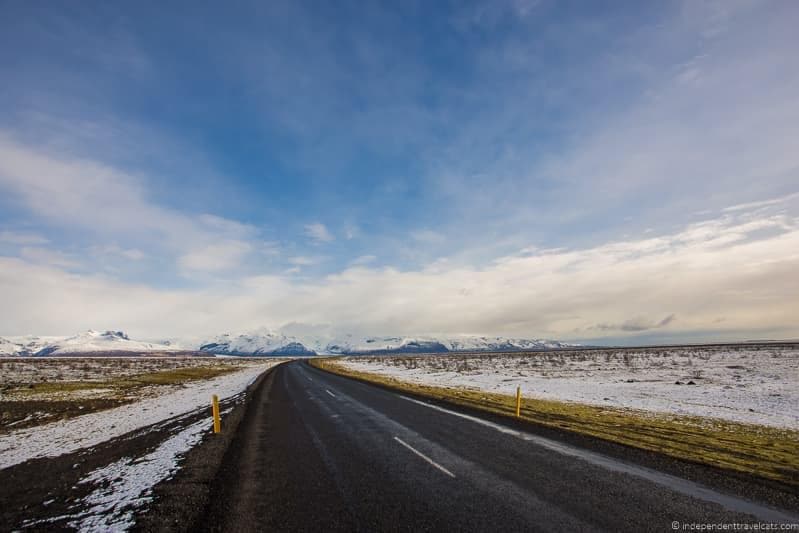
Day Trip Tours from Reykjavík
Many people base themselves in Reykjavík, and then set out in day trips to explore Iceland. This is particularly a good option in the winter months for those who don’t want to drive themselves and want to return to the same hotel or apartment each evening. Day trips can take you to all of the most popular highlights of Iceland, and we’d recommend focusing on western and southern Iceland.
On our trips to Iceland, we’ve used a number of tour operators and booking portals. These include Iceland Travel , Get Your Guide , Guide to Iceland , and Viator . You can see some of our favourite day trips from Reyjkavik here .
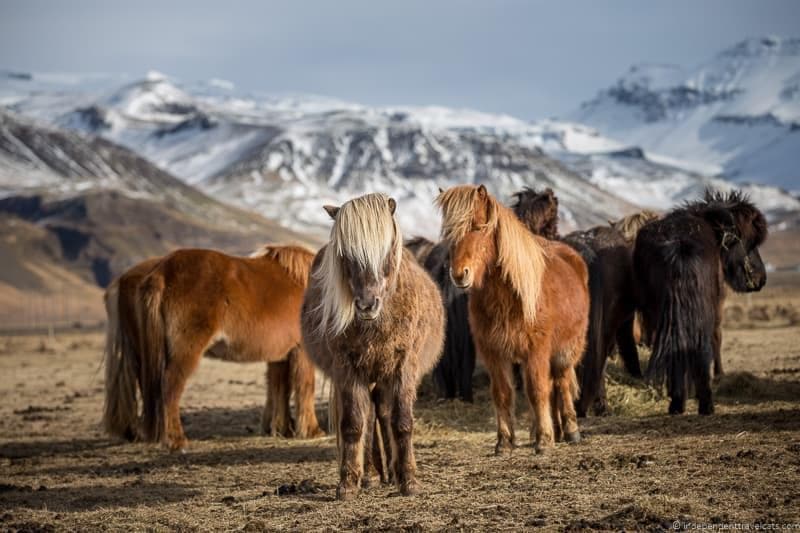
Guided Multi-Day Tours
If you are planning to join a multi-day tour, there are a number of operators (most based in Reykjavík) to choose from that can provide longer tours from overnight trips to 2 week tours. Itineraries often include, or include the option to add-on, many of the recommended winter activities covered in this post.
Although this article is geared towards those who are either planning to take day trips or drive themselves, this post can help give you some ideas for the types of activity options and destinations you want to look for in a tour itinerary. When searching for multi-day tours, we’d recommend choosing an escorted tour that is particularly designed for winter such as this 4 day tour .
You can see this curated list of some of the best guided tours of Iceland that range from 2 days to 12 days. It includes tours appropriate for all seasons, including many winter tours.

Top 18 Winter Activities in Iceland
Now onto our list of recommend top winter activities in Iceland! If you are visiting Iceland in winter, there are limitations as some activities are not available and certain attractions are inaccessible; however, there are also fun things to do in Iceland that you can only do during the winter months.
Our list focuses only on things that you can do in Iceland during the winter months. For each winter activity, we discuss information for both travelers who plan to travel independently by car and for those who want to travel via guided day trips with a base in Reykjavík.
These winter activities are listed in no particular order:
1. Hunting for the Northern Lights
If you’re visiting Iceland in winter, then you are probably hoping to see the Northern Lights, or the aurora borealis , during your trip. This spectacular natural light show can fill the sky with varying hues of green and red, and can be a magical event to experience. The Northern Lights can be seen from autumn to spring, with the best chance being during the evenings of the winter months.
Northern Lights By Car
In order to see the Northern Lights you need a combination of several things: high levels of solar activity, darkness (you can only see them at night), clear or partly clear skies, and an absence of light pollution.
Some of these elements you can’t control (e.g., solar activity, cloud cover) so seeing them is partially down to nature and luck. But you can control where you are and if you have a car, you can head to sparsely populated areas where there is little light pollution, clear to mostly clear skies, and the weather forecast shows a chance of the aurora.
Check the aurora forecasts for the best days and times to see them by using online websites, apps, or asking at your hotel (hotel desk staff often post the daily aurora forecasts and many hotels offer a wake-up service if there is activity).
We used the Icelandic Meteorological Office Aurora Forecast to monitor activity during our trip as it is probably the best one to use in Iceland, and also got on the list at most of our hotels for the aurora wake-up service.
It can be tricky to get good photos of the Northern Lights. But here is a guide about how to photograph the Northern Lights and includes tips for different types of cameras and smartphones.
Northern Lights Tours from Reykjavík
If you are only going to do one tour while in Iceland in winter, we’d recommend booking a Northern Lights tour. We’d also recommending doing this as a tour rather than trying to hunt for them yourself. Tour operators know where to go to find the darkest spots, know how to interpret the meteorological data, know where they can park, and usually only operate if there’s a chance of seeing them.
Tours are canceled same day if there is no chance of seeing the Northern Lights, and most companies offer a free rescheduling for the following day if the trip is canceled or if you go but don’t see the Northern Lights. Be sure to check the tour conditions so you understand what happens if your tour is cancelled or you don’t see the Northern Lights.
Northern Lights tours are very popular throughout the winter months, and there are a number of variations available depending on your preferences, including group bus tours like this one and this one , a private tour , and a super jeep tour .
Some Northern Lights tours also include additional experiences like meals, thermal baths, glacier walks, or Super Jeep tours. For example, this tour includes a geothermal bath visit, dinner, and Northern Lights viewing. Or this full day tour includes a classic Golden Circle tour during the day and then Northern Lights hunting in the evening.
All tours include transportation, driver, and guide, and the majority depart from Reykjavík.
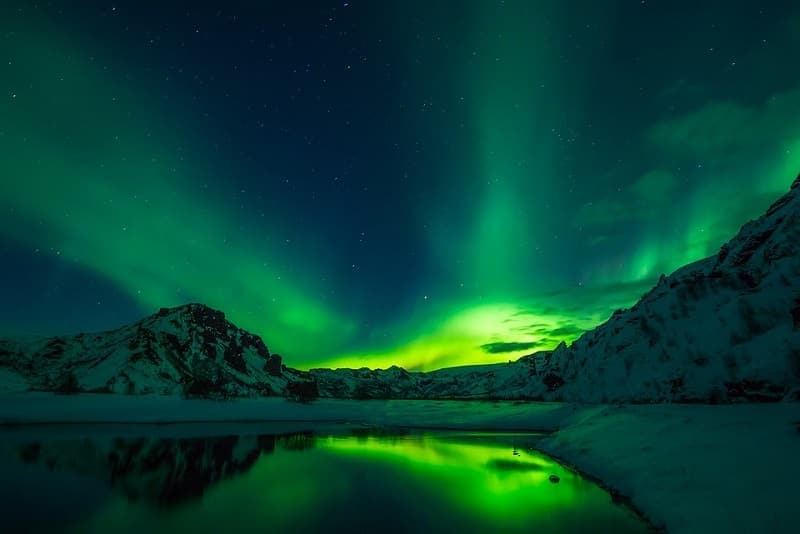
2. Skiing and Snowboarding in Iceland
If you enjoy skiing and are looking for a lesser known European destination, Iceland is a good bet. It is not nearly as well-known or popular as many spots in Europe so the resorts aren’t hugely crowded, and there are almost no trees to accidentally hit!
The resorts are much smaller here, but opportunities include downhill skiing, snowboarding, cross-country skiing, and off-trail skiing. There are also unique opportunities like skiing down to the Ocean, Cat skiing (reaching tops of mountain by snowcat) and even heli-skiing in a couple of locations in Iceland. Most ski resorts have runs that cater to both newbies and more experienced skiers.
Although the ski season in Iceland can extend from mid-November to May, most resorts open in December and close by the end of April. However, for the best skiing (and chance of good snow) I’d go in February or March, especially if you are a downhill skier or snowboarder. Because of limited winter hours, almost all ski resorts have lights on their main slopes which allow for night skiing.
If planning to ski or snowboard, check out our ski holiday packing list for a list of things you probably want to pack.
Iceland Ski Trip by Car
You can actually design an entire itinerary around skiing in Iceland as you’ll find ski opportunities in the north, west, south, and east of Iceland! When choosing where to ski, I’d base it on where you plan to travel in Iceland, past ski experience, and the current snow and trail conditions. Just note that driving in the northern and eastern parts of Iceland in winter can be more difficult than in the south and west.
In western Iceland, there are two Reykjavík area ski slopes . There is Bláfjöll ski resort, which is the largest and most visited ski resort in Iceland, and Skálafell ski resort. Then in the Westfjords you have Dalirnir near Ísafjörður. In the east, you have a couple of options Stafdalur and Oddsskarð . Then in the far northwest you have Tindastóll near Sauðárkrókur.
For those who are visiting Iceland primarily for skiing or snowboarding, I’d recommend basing yourself in northeastern Iceland. Akureyri or nearby would be a good base for the several ski resorts in the area. These include Hlíðarfjall which is considered Iceland’s premier ski destination and also sits at the highest elevation. It offers pistes that range from beginner level to difficult, cross-country trails, a ski rental shop, and a ski school.
If you’re planning to spend more than a couple of days skiing in Iceland, I’d invest in the local Ski Pass which allows you to ski at 5 ski resorts in northern Iceland over 5 days so you can try out all the local slopes and save money on day fees.
Heli-skiing is where you are taken to the top of a mountain by a helicopter and then you can ski down. If that sounds like fun you can book a heli-skiing trip on the Tröllaskagi Peninsula (part of the northeast) with Arctic Heli Skiing or Viking Heli Skiing . In some cases you can ski all the way to the ocean.
Note that heli-skiing season usually starts later and runs later than regular skiing at the resorts, often February to June. If heli-skiing is a bit too scary or pricey for your tastes, you can also do cat skiing in northern Iceland with companies such Kaldbaksferðir , where you are taken to the top of the mountain by a snowcat to ski, sled, or snowboard down.
Skiing Tours
You can find a few ski tours in Iceland, including day tours and a multi-day tour, on offer from local operators. However, there are few ski or snowboard oriented tours available in Iceland so the best option for most people is going to be to arrange their own trip.
We’d recommend booking a taxi or other private transport to and from the ski resorts of your choice. The closest to Reykjavík, which can easily be done as a day trip, is the Bláfjöll ski resort 25 minutes drive from Reykjavík. Bláfjöll is the largest and probably the most popular ski resort in Iceland. It offers family friendly slopes, gear rental, and ski lessons (on weekends).
There is also Skálafell ski resort, which is also about a 25 minute drive from Reykjavík, but it is a much smaller resort than Bláfjöll. You can also fly or take the public bus to Akureyri and hit about a half dozen ski resorts within day tripping distance.
In deciding on a ski resort, I would base your decision on your location, amount of time, your skill level, and how much you want to ski. If you are short on time or want the most convenient option, I’d visit the ski resorts within driving distance of Reykjavík. If you want to ski a lot, I’d head to Akureyri where there is the highest concentration of skiing opportunities. For the most variety in ski slopes, I’d head to Hlíðarfjall in northern Iceland or Bláfjöll if you are day tripping from Reykjavík.
At most resorts in Iceland you should be able to rent any skiing or snowboarding gear you need (although always best to bring your own ski boots if you own them) but do check ahead.
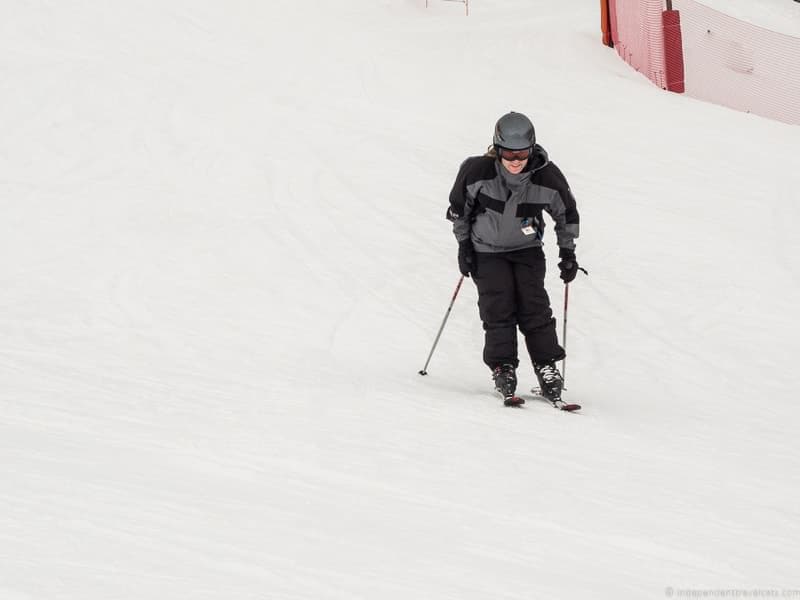
3. Celebrating Christmas or New Years in Iceland
Visiting Iceland in winter means you might be around for one of the holiday celebrations that take place at this time of year. Christmas celebrations in Iceland start on December 12th and intensify until December 23rd, Þorláksmessa (St. Þorlákur’s Day), when it is traditional to eat fermented skate (skata) and potatoes and is a big shopping day for many Icelanders.
Around the Christmas season, you can enjoy the holidays lights and decorations, Christmas markets, Christmas carols and concerts, and learning about Icelandic Christmas traditions. Christmas itself is celebrated on December 24th, and it’s traditionally a family affair spent at home. For more of a party atmosphere, you’ll want to be in Iceland for New Years Eve, when it’s traditional to attend a bonfire and set off fireworks. The “end” of Christmas on January 6th (Twelfth Night) is also usually marked with fireworks and bonfires.
Icelandic Holidays By Car
The best place to be for the holidays is probably Reykjavík as there you’ll find the most people, most events, and largest public celebrations. If you are wanting to do some Christmas shopping, you’ll also find the largest number of stores here, and some stores and restaurants stay open on holidays (although many do close). I’d check out local websites or newspapers, or talk to your hotel staff or locals to find out what holiday events will be happening during your visit.
Another idea if you want to get out of Reykjavík is to head to northern Iceland and visit the Lake Mývatn area. This is the home of the 13 Yule Lads which are a huge part of the Icelandic Christmas story. The celebrations begin on December 12th and there are a series of family-friendly events in the area leading up to Christmas which include music concerts, buffet holiday meals, family craft workshops, handicraft markets, and an annual bath with the Yule Lads! Akureyri is a good place to base in the north during the holidays.
Icelandic Holiday Tours from Reykjavík
If you are visiting around Christmas, I’d check for Christmas related tours that are being offered. For example this 4 night Christmas tour includes 4 nights lodging, a 3 day coach tour including the Golden Circle and South Coast, a trip to the Blue Lagoon, a Christmas meal, and a Christmas themed walk. If you are looking to visit both Reykjavík and northern Iceland, I’d check out tours to Akureyri as well.
On New Years Eve you can take a Fireworks Cruise to see the fireworks from the water and celebrate the New Year, or you can take a bonfire tour to experience a number of the traditional local bonfires around the city.
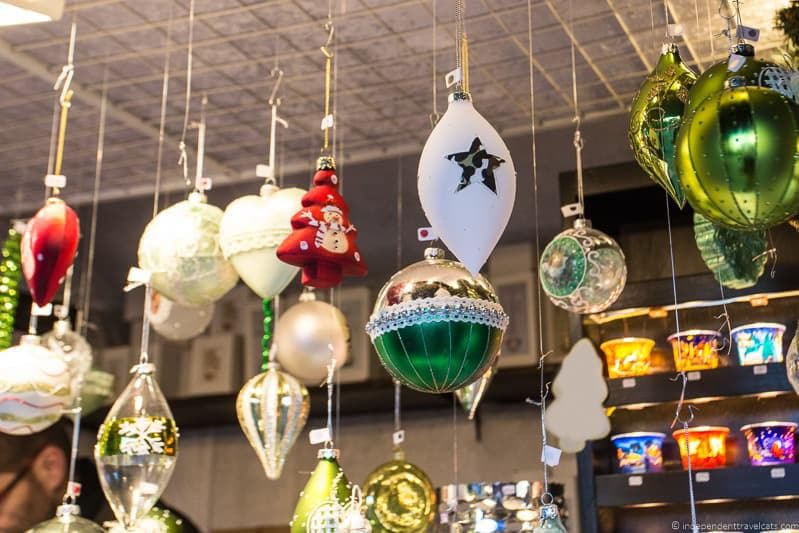
4. Exploring the Wonders of the Golden Circle
One of the most popular year-round day trips from Reykjavík is to explore the “Golden Circle”, which includes a number of Iceland’s most popular landmarks. These include the mighty 2-tiered Gullfoss waterfall , the bubbling pools and geysers of the Geysir geothermal area, and Thingvellir (Þingvellir) National Park .
Thingvellir National Park is a UNESCO world heritage site and contains some of the most important historic, geological, and religious spots in Iceland. It also contains Games of Thrones filming locations !
Golden Circle Self Drive
Driving the Golden Circle makes for a great day out from Reykjavík as you can see some of Iceland’s spectacular natural geological features plus learn a bit about Iceland’s cultural history. If you are driving from Reykjavík, it is about a 40 minute drive to Thingvellir National Park, then 53 minutes further to Geysir, and then 10 minutes further to Gullfoss waterfall.
The route is well-marked and signed. Without stops it takes about 3.5 hours to drive the route round-trip with return back to Reykjavík; however, with stops I’d suggest at least 6 to 7 hours.
In additional to those 3 main stops, you can also consider going snorkeling or diving at Þingvellir National Park (only if you have certified diving experience), stopping in at the greenhouses at Friðheimar where you can see a geothermal greenhouse and have lunch with food grown there, tasting the locally made ice cream at the Efstidalur farm restaurant, or going for a soak at a geothermal bath such as Fontana Geothermal Baths or the Secret Lagoon .
If you are planning to drive the Golden Circle, see our complete guide to driving the Golden Circle .
Golden Circle Tours from Reykjavík
All Iceland tour companies offer Golden Circle day trips from Reykjavík as this is the most popular day trip from the city. If you are looking for a nice day out with stops at all three of the main sites along the Golden Circle, we recommend checking out a Golden Circle tour, such as this classic tour or this popular tour which also includes a stop at Kerid Crater. You can also arrange a private tour .
If you also want to do the Blue Lagoon, there are a number of tours that include the Blue Lagoon with the Golden Circle, such as this one .

5. Exploring Ice Caves & Glaciers
Winter is the perfect time to explore an ice cave, a glacier, or an ice tunnel in Iceland. Tours allow you to actually get inside beautiful ice caves and tunnels so you can see their beautiful blue colors and learn about the formation of glaciers. You can also take tours that allow you to hike or snowmobile on top of glaciers. Iceland has a lot of glaciers and they cover about 11% of Iceland’s surface.
Note that in Icelandic, jökull means glacier or piece of ice. So if you see a word ending in jökull, it is probably the name of a glacier.
Ice Caves & Glaciers Day Trips By Car
Trying to explore an ice cave or tunnel, hike onto a glacier, or drive onto a glacier on your own can be incredibly dangerous if you don’t have the necessary knowledge and equipment. This can be particularly dangerous in the winter when snow can disguise cracks and crevasses in the ice.
We highly recommend only doing these things with a trained guide and proper equipment. There are many private guides and group tours available that can help you safely examine these spots.
If you are not wanting to join a bus tour from Reykjavík, you can drive to the location on your own and join a local tour or guide near the ice cave or glacier. This a great option for those who want to join activities during a road trip around Iceland.
Some ice cave tours offered in the winter include an ice crystal cave tour which departs from Reykjavík, an exploration of ice caves around Vatnajökull glacier with pick-up from Jokulsarlon Glacier Lagoon (southern Iceland), this ice cave and glacier tour from Gullfoss , and the Into the Glacier tour from Reykjavík.
For glacier exploration we’d recommend checking out this Golden Circle and Langjokull Glacier snowmobile tour from Reykjavik, this hike of Vatnajökull glacier from Skaftafell National Park, or a hike and ice climbing at Solheimajökull glacier .
If you want to combine some ice cave exploring with a glacier hike, this 4 hour tour from Skaftafell National Park includes both a glacier hike and ice cave tour of Vatnajökull glacier.
Glacier and Ice Cave Day Trips from Reykjavík
All the following tours depart from Reykjavík. If you’d rather depart from another location, see tours listed in the section above. Note that these tours range from low physical activity to needing to be fairly physical strenuous so be sure to read the guidelines and recommendations to find a tour that is a good fit for you.
Ice Caves Tours
There are a number of ice caves in Iceland, and from Reykjavík, we’d recommend this day tour of the Katla Volcano ice cave .
If you are able to do an overnight trip, we recommend this small group tour which includes an ice cave tour, exploration of the South Shore, a visit to the glacier lagoon, and a Northern Lights hunt.
Ice Tunnel Tours
The Langjökull ice tunnel was made by a group of scientists and engineers on top of Langjökull glacier , the second largest ice cap in Europe. The 1,800 ft. long ice tunnel and caves are the world’s first and largest man-made ice tunnel, and allows visitors to see the inside of a glacier.
We’d recommend checking out are this tour of the ice tunnel which includes a trip onto the glacier via a ride in a 8-wheel monster truck.
Glacier Tours
If you are wanting to walk, snowmobile, or take a super jeep tour on top of a glacier, you’ll find there are several options for glacier day trips from Reykjavík. Most of these also include other activities along the South Coast.
Some tours to consider are this Golden Circle drive plus snowmobiling on a glacier, and this Golden Circle tour plus a glacier drive in a jeep ,
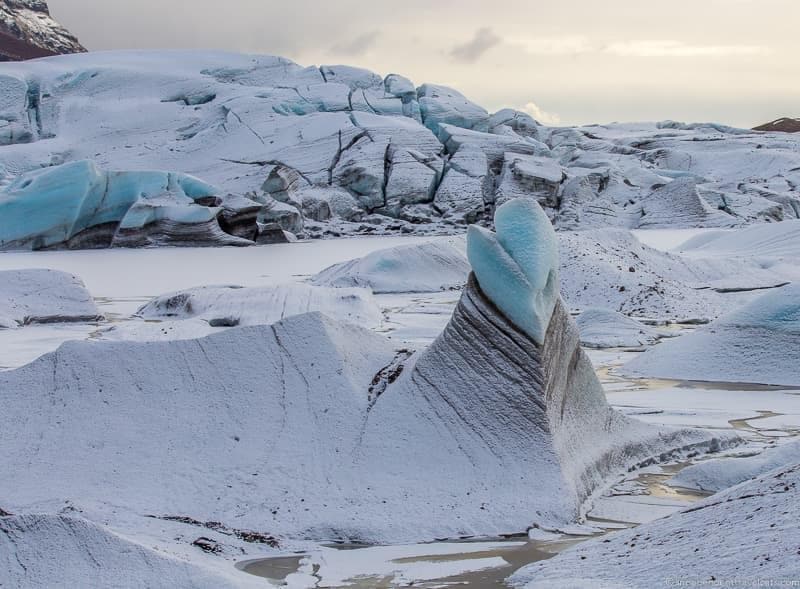
6. Enjoying the Glacier Lagoon and South Coast
Another popular drive in Iceland, and for good reason, is the trip along the south coast between Reykjavík and the Glacier Lagoon. This southeastern area of Iceland is home to multiple spectacular waterfalls, a huge expanse of lava field, black sand beaches, glaciers, and a lagoon filled with tiny icebergs. The main attractions in this area are accessible year-round, although may become temporarily inaccessible (e.g., due to a blocked, flooded, or closed road) during or following a storm.
Glacier Lagoon By Car
It is about 230 miles (372 km) from Reykjavík to the Jökulsárlón glacier lagoon , and it takes about 4.5 hours to drive without stops. Once you get out of Reykjavík, you’ll mostly just follow Route 1 , which is the National Road of Iceland, and forms the famous Ring Road. Highlights along this route include views of the glacier topped volcano Eyjafjallajökull (well-known for its 2010 eruption), Seljalandsfoss waterfall, Skógafoss waterfall, Reynishverfi’s black sand beach, the village of Vík, and Vatnajökull National Park .
For a return day trip with stops at all the listed highlights and meals, I would plan on at least 11 or 12 hours. Be sure to check weather forecast and road alerts before setting out.
Driving all the way to the Jökulsárlón glacier lagoon is a long drive from Reykjavík, and if you factor in all the stops, it is a long day out. If possible, we’d recommend overnighting here and heading back in the morning so you have more time to explore and don’t have to worry about driving late at night. The eastern part of Iceland also has low levels of light pollution so chances of seeing the Northern Lights are good if there is activity and clear skies.
If you do stay overnight in this area, we’d recommend staying in Kirkjubæjarklaustur or Vík. Around Kirkjubæjarklaustur, you may want to check out Hotel Klaustur , Hotel Geirland , Hotel Laki , and the Eldhraun Guest House . Around Vík, you can check out Hotel Vik , Hotel Katla Hofdabrekka , Grand Guesthouse Gardakot , Guesthouse Steig , and the Volcano Hotel .
Glacier Lagoon Tours from Reykjavík
If driving for over 9 hours round trip in potentially bad winter weather doesn’t sound fun, you can take an escorted tour instead and leave the driving up to someone else. We recommend doing this as an overnight tour so you can spend more time exploring, but if you only have the time for a day trip and need to return to Reykjavík the same day, we’d recommend this Glacier Lagoon and South Shore tour .
If you are able to do an overnight tour to the South Shore and Jökulsárlón glacier lagoon, we recommend this small group tour which includes an ice cave tour, exploration of the South Shore, a visit to the glacier lagoon, and a Northern Lights hunt.
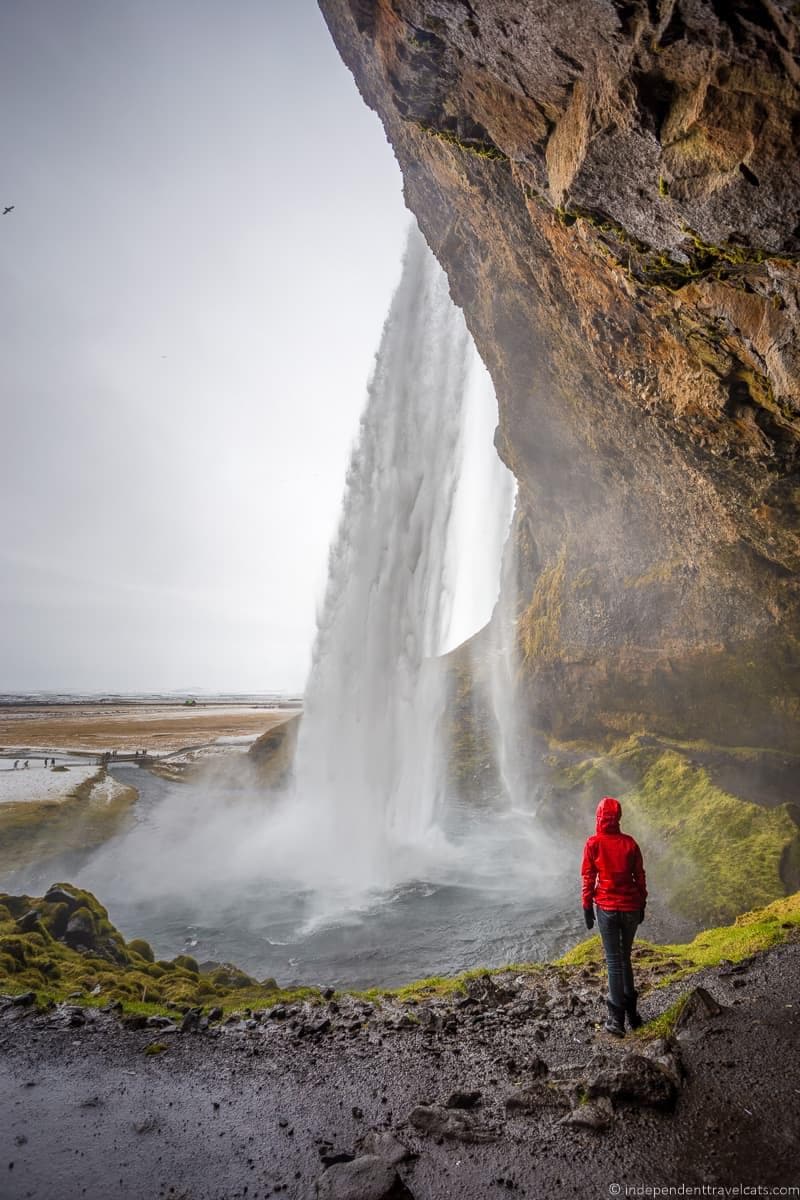
7. Whale Watching
One of the reasons many people travel to Iceland is to see some of its local wildlife, and this includes whales. Iceland is one of the best whale watching destinations in Europe with over 20 whale species found in its waters. A whale watching tour can get you up close to these massive sea mammals, as well as a variety of other sea wildlife.
The main sea animals you are likely to see on a boat tour are the humpback whale, minke whale, fin whale, orca, white-beaked dolphin, and the harbor porpoise. Note that the best time to see whales in Iceland is during the summer months, but you still have a chance to see some species year-round. In fact, winter is the best time to see certain whales such as the Grundarfjördur orcas (killer whales).
If you are interested in the whales around Iceland, you might want to visit the Whales of Iceland exhibition in Reykjavík. It is located near the harbor where most of the whale watching tours leave. The museum provides an immersive learning experience and includes over 20 life-sized models of whales that have been found in Icelandic waters.
Whale Watching Tours
You could get lucky to spot a whale from shore, but your best chance to see one is to join a whale watching tour. The two main departure points in Iceland for whale watching tours are Reykjavík and Húsavík in northern Iceland.
Chances of seeing whales are high from both areas, and Húsavík has been nicknamed the whale watching capital of Europe. In the winter we’d recommend joining a tour in Reykjavík for convenience and the fact that many tour operators don’t operate during the winter in Húsavík.
In Reykjavík, most whale watching tours depart from the Old Harbor, and you can either book a tour in advance or head to Reykjavík’s Old Harbor and book one directly with one of the tour company kiosks at the harbor. Tours generally last between 2 to 4 hours.
This whale watching tour is a popular one that leaves from the Harbor. Another company that offers well-reviewed whale watching tours are Elding which also operates the Whale Watching Centre . For instance, they offer this 3 hour tour that also includes access to the Whale Watching Centre. They report a 95% success rate of seeing dolphins in the summer months and 80% in the winter months.
NOTE: If you are also interested in seeing seabirds, winter is not a great time to travel to Iceland as there are few sea birds around. Spring and Summer are the best times of years to view sea birds.
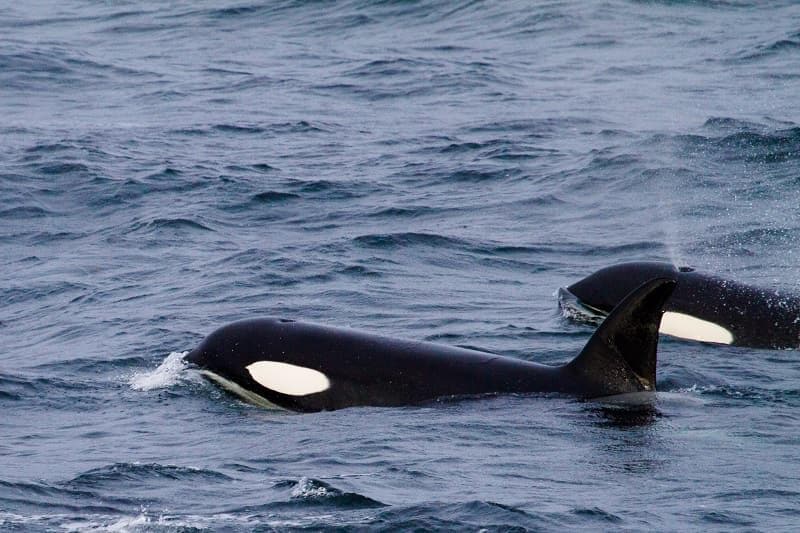
8. Snorkeling & Diving
Snorkeling in winter? No, we’re not completely mad. You can snorkel year round in Iceland, but you’re not going to be heading out to sea or spotting a lot of marine life. Instead, the snorkeling trip takes place in the Silfra fissure in Thingvellir National Park. This is the site of a submerged crack between the two continental plates that run across Iceland, and the water here is incredibly clear with great visibility.
Being able to snorkel between the Eurasia and North American continental plates is a snorkeling experience like no other!
Snorkeling Trip by Car
The national park does not have any official guides or operators for snorkeling tours or equipment rentals, but there are several companies offering snorkeling tours and gear for those wanting to snorkel at Silfra. There are a number of tours for snorkeling that meet on site at the park like this one .
As noted earlier you can also dive at two submerged rifts, Silfra and Davíðsgjá, but this is only for experienced divers and you’ll need dry suit certification as well as apply for a dive permit. Or you can join a guided dive (if you have the certification) with an approved operator such as this one . Find out more about diving in the Thingvellir National Park here .
Unless you have dived here before, you’ll probably want to have a guide, and for Silfra we’d recommend doing a guided dive such as this one .
If you are looking for other dives elsewhere in the country we’d recommend checking out this dive company based in Iceland. There are other spots you can dive in Iceland other than Silfra and a local guide can help you explore lesser known sites. For a local dive rental shop you can also check out HAF Sport .
Snorkeling Day Trip Tours from Reykjavík
There are a number of Silfra snorkeling tours that depart from Reykjavík. The tour we suggest with Iceland Travel is the snorkeling plus cave tour which includes both snorkeling at Silfra plus the opportunity to explore a lava cave with pickup and drop off in Reykjavík. The tour price also includes all the gear you’ll need, including a full dry suit that will keep you warm and dry even in freezing temperatures.
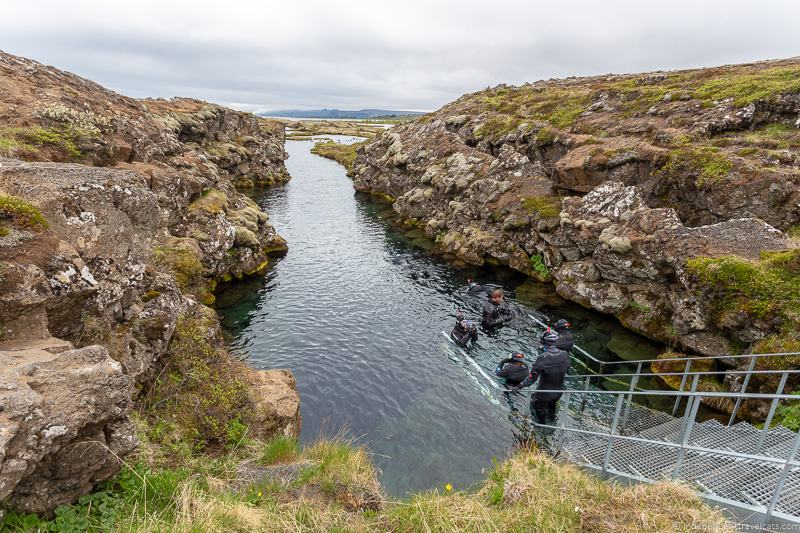
9. Exploring the Highlights of Lake Mývatn
Northern Iceland gets far fewer visitors in winter than the rest of Iceland. But that doesn’t mean there’s nothing to do here! Located near the town of Akureyri, volcanic Lake Mývatn is home to a number of natural wonders such as craters, mud pools, massive waterfalls, and geothermal caves.
It is also a popular birding area, although most species are only here in the Spring and Summer months. Akureyri is also a great place to celebrate Christmas.
Lake Mývatn By Car
Making the effort to come up to northern Iceland is definitely rewarding, but bear in mind that winter weather can make for a challenging driving experience. Public buses or domestic flights are also options.
Highlights around Lake Mývatn include the Goðafoss Waterfall, Hverfjall crater, the pseudocraters of Skutustadagigar, lava pillars of Dimmuborgir, the Krafla volcano, and hot springs. You’ll definitely want to overnight in the area as there is plenty to explore and you’ll find a number of lodging options in Akureyri .
Lake Mývatn Day Trip Tours
For a day trip from Reykjavík to Lake Mývatn, we’d recommend taking a look at this tour , which includes domestic flights and stops at Goðafoss Waterfall, the pseudocraters of Skutustadagigar, the lava pillars of Dimmuborgir, Reykjahlid village, the Krafla volcano, and Mývatn Nature baths.
If you are searching for Game of Thrones locations in Iceland , this Mývatn tour from Akureyri includes most of the popular filming locations. plus a soak in the Mývatn Nature baths.
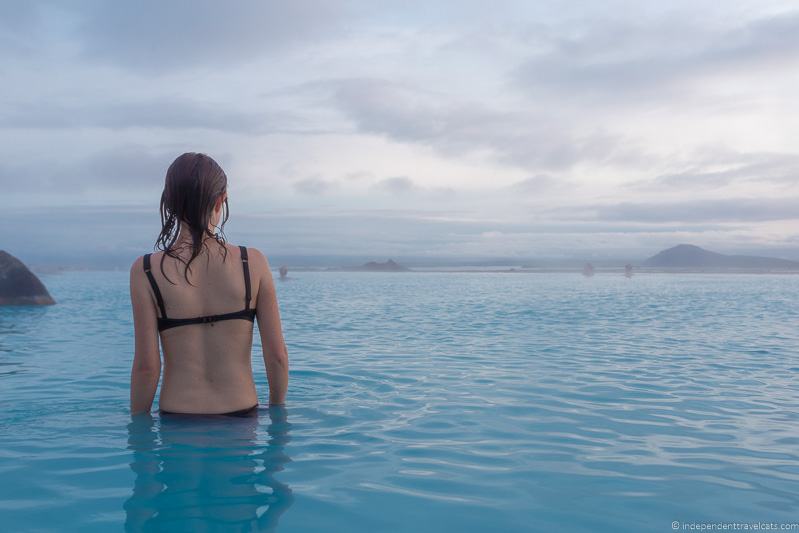
10. Horseback Riding
Icelandic horses are beautiful creatures, with long shaggy coats that help them withstand the tough Icelandic wintry conditions. They are very photogenic (they even made our Iceland photography guide ) and are unique in that they are one of a few horse breeds where a number of the horses have five distinct gaits.
You are likely to see an Icelandic horse during your trip without much effort as there are many farms with horses around the country, and you can even find a few at the Family Park & Zoo in Reykjavík. But if you want to get really up close, you can interact and ride Icelandic horses by visiting a farm and booking a horseback riding tour.
Icelandic Horseback Riding Tours by Car
There are over a dozen horse farms and riding facilities offering guided horse rides in Iceland, and I’d search in the area of the country you plan to visit. The highest concentration of farms offering riding is within an hour or two driving distance of Reykjavík, but you’ll find them scattered all over the country. At most places, you need to book your riding activity in advance.
Some places to consider include Laxnes Horse Farm near Mosfellsbær (just 15 minute drive north of Reykjavík), Íshestar Riding Centre in Hafnarfjörður (about 30 minutes south of Reykjavík, book a tour here ), and Langhus Farm in northern Iceland.
You can also join guided tours or rent horses to ride (for more experienced riders) at Sólhestar (services around Reykjavík and south Iceland, book a tour here ).
Horses aren’t the only big mammals in Iceland, and if you looking for something a bit more wild consider reindeer trekking. If you’re interested in reindeer, then head to eastern Iceland, where you can join an experienced guide on a Reindeer Safari to track down these beautiful animals.
Icelandic Horseback Riding Tours from Reykjavik
There are also a number of tours you can take that focus on Icelandic horseback riding. From Reykjavík you can take a Horseback Riding Lava Tour , which visits the lava fields around either Mt Helgafell or Lake Hvaleyrarvatn. This tour is suitable for riders of any experience level. Some of the tours available at Laxnes Horse Farm include pick up and drop off in Reykjavík.
More experienced riders looking for a longer tour might prefer the Horseback Riding Viking Tour , which also departs from Reykjavík. This is a longer experience with both a morning and afternoon ride, and is for intermediate to experienced riders only.
You can see more tours here .
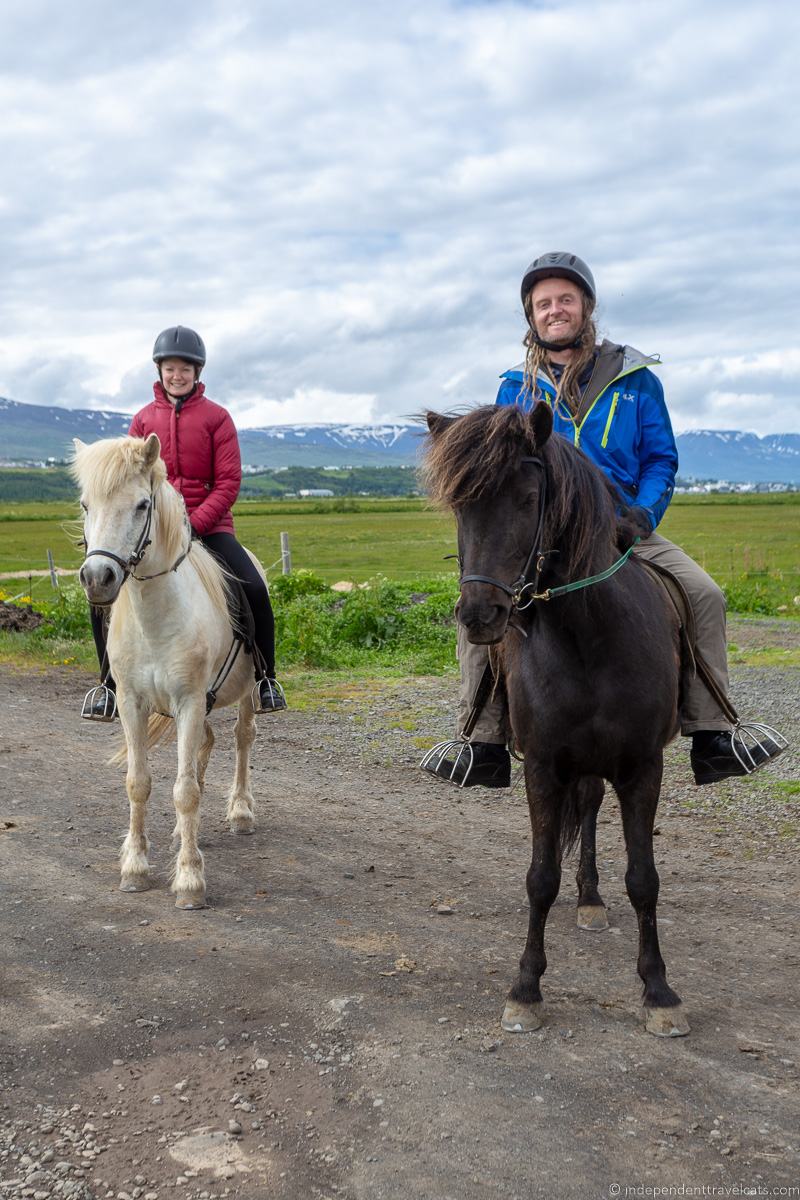
11. Appreciating the Museums & Cultural Attractions of Iceland
Reykjavík is Iceland’s capital city and also the cultural heart of Iceland. Here you’ll find many of the country’s best museums, parks, art, and cultural attractions, and most are open to visitors year-round. But you can also find some interesting cultural spots in other parts of the country, often ones that document a local history, industry, tradition, or saga.
Some of the biggest themes we noted after visiting a number of the country’s museums are art, local history, Icelandic sagas , maritime and fishing culture, and preserved buildings. Spending a few hours visiting some of the country’s museums is a great way to spend a winter afternoon, especially if the weather is not at its best.
Iceland Museums By Car
Reykjavík is easy to explore by foot, car, or public transportation, and many of the city’s top attractions are within walking distance of each other. Some of the museums and cultural attractions you may want to visit in the capital are the National Museum of Iceland , Hallgrímskirkja Church , The Settlement Exhibition , Reykjavík Family Park , Perlan Museum , Saga Museum , Árbaer Open Air Museum , and a number of art museums . Just about all attractions are open year-round in Reykjavík; however, many have reduced winter hours and are likely to be closed on holidays.
Outside of Reykjavík, a car makes it easy to reach all the country’s major museums and cultural attractions. It is easy to mix natural sites with cultural sites on an Iceland road trip itinerary .
The most notable historical attraction is probably Thingvellir (Þingvellir) National Park which is a site of historical, geological, and religious importance because it was the place of the first church, the site of the first parliament in Europe (the Alþingi general assembly), and has a number of notable geological features.
I’d also recommend the folk museum Skógasafn in the town of Skógar, which is open-air museum complex plus two museums along the South Coast with over 15,000 artifacts and 6 historical buildings.
Other museums and cultural attractions (many related to the country’s fishing culture and history) include: the Whale Museum , Lava Centre , Bjarnarhöfn Shark Museum , the Norwegian House , the Icelandic Settlement Centre , Borgarnes Museum , and the Herring Era Museum . Note that most of these have reduced winter hours and some may open by appointment only in the winter months, so do check the attractions’ website or call ahead.
Iceland Museum tours
Since most of the country’s top museums and cultural attractions (see list above to get you started) are located in and around Reykjavík, we recommend that you are better off exploring on your own on foot or via public transportation. For museums outside of Reykjavík, I’d book a private tour or join a group tour that goes to the specific museum(s) you are interested in visiting.
If Thingvellir National Park is on your list, this one is easy as almost all Golden Circle day tours stop here.
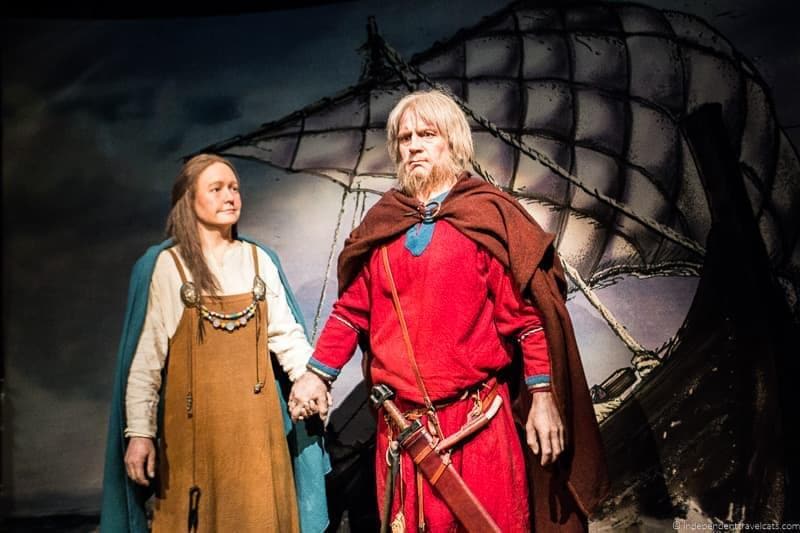
12. Visiting the Snæfellsnes Peninsula
The Snæfellsnes Peninsula is a region in western Iceland known for its dramatic landscapes, and is accessible year-round. A couple of hours drive north of Reykjavík , this beautiful part of the country is home to a huge glacier as well as waterfalls, beaches, fishing villages, caves, and a glacier. It makes for a very interesting day trip from Reykjavík at any time of the year.
The most known attraction on the peninsula is the glacier-topped mountain Snæfellsjökull as it was featured in Jules Verne’s Journey to the Center of the Earth as an entry point to get to the center of the earth.
Snæfellsnes Peninsula Drive
The Snæfellsnes Peninsula makes for a great day trip, and it takes about 2 hours to get from Reykjavík to the eastern side of the peninsula. After leaving Reykjavík, you’ll need to decide to take the undersea tunnel at Hvalfjordur (small fee, can save about 30 minutes) or you can follow along 47, a coastal road. Once you get there, you can start by exploring either the southern or northern part of the peninsula and then loop around. There are few roads on the peninsula so the route is easy to follow once you get there.
If you start in the north, it is about a 2 hour and 10 minute drive to Stykkishólmur which is the largest town on the peninsula, and then you can head west along the northern part of the peninsula stopping at your choice of places of interest.
Some of the highlights include the town of Stykkishólmur, Bjarnarhöfn Shark Museum , Snæfellsjökull National Park , the beautiful Kirkjufell mountain and waterfall, the coastal area between the villages of Arnarstapi and Hellnar, Djúpalónssandur’s black-pebbled beach, and the cute wooden church known as Búðakirkja.
Glacier treks, snowmobiling trips, and cave tours are popular activities that can be booked at Snæfellsjökull from local companies (book any activities in advance). You can also book a winter whale watching tour here th at leaves from Stykkishólmur – see tour details here .
If you driving this as a day trip and wanted to see all the main highlights, it would be at least a 7 hour road trip round-trip from Reykjavík. However, with stops, I’d recommend at least 9 to 10 hours. Given the limited daylight hours in winter, you’ll want to leave in the morning and you won’t be back in Reykjavík until after dark.
Although this makes a great full day tip, if you have your own car and time, we’d recommend doing it as an overnight trip so you don’t have to rush. The peninsula is also a great place to see the Northern Lights. If you do decide to overnight on the Snæfellsnes Peninsula, some lodging options to consider: Fosshotel Stykkishólmur (Stykkishólmur), Our Home Apartments (Stykkishólmur), Hotel Egilsen (Stykkishólmur), Old Post Office Guest House (Grundarfjordur), Fosshotel Hellnar (Hellnar), Arnarstapi Guesthouse (near Arnarstapi), Guesthouse Hof (near Budir), and Hotel Budir (Budir).
Snæfellsnes Peninsula Tours from Reykjavík
If you’d rather join a tour and not have to worry about the driving, there are several tours that run in the winter from Reykjavík. These include this popular 11 hour tour , and this 12 hour premium small group tour .
These each offer slightly different experiences and price points, so check them both out to be sure you pick the right tour for you. Each tour include stops at the main highlights on the peninsula, and the main differences are the tour length (10 to 13 hours) and group sizes.
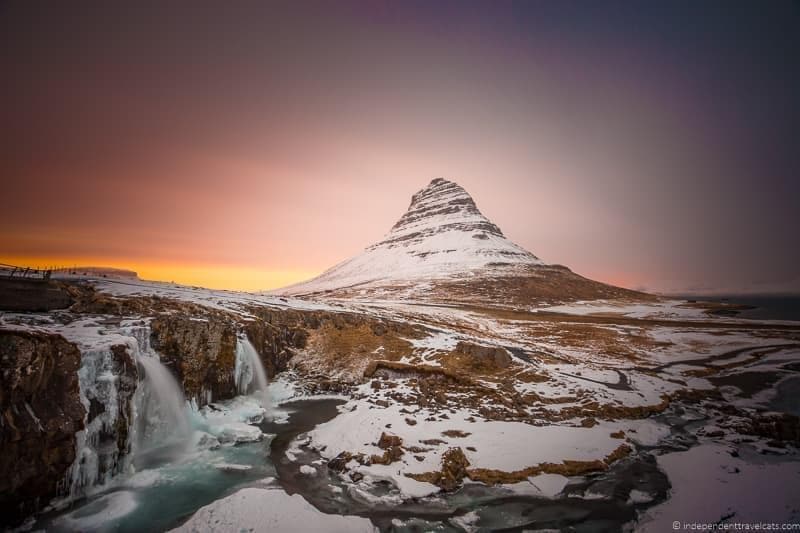
13. Snowmobiling & Other Fun Snow Activities
For most of the winter in Iceland, you can pretty much be guaranteed that you’ll find snow somewhere in Iceland. Snow generally starts falling around November and can last as long as late May or early June, but late December to the end of March are going to be the prime time to visit for snow activities.
In addition to skiing and snowboarding (already covered above), you’ll find opportunities to go ice skating, snowmobiling, sledding, ice climbing, snowshoeing, dogsledding, and ice fishing. Or if those options sound exhausting (or too expensive), you can just head outside and build some snowmen or make snow angels.
Snowmobiling & Snow Activities by Car
It is easy to stop off for some fun in the snow if you are traveling in Iceland during the winter. The highland mountain roads will be closed throughout the winter to regular vehicles (including 4X4s) but many of these areas can still be explored on guided tours with snowmobiles, snowcats, or SuperJeeps.
If you are coming to Iceland primarily for winter sports or snow activities, I’d recommend checking out offered multi-day treks or highly active winter trips with professional local guides that include activities like long-distance snowshoeing, snowmobiling, ice climbing, hikes on glaciers, and skiing. However, if you are just looking to try out a winter activity or two on your trip, I’d just book a couple of tours to add onto your Iceland winter road trip .
If you need to rent winter gear while in Iceland (e.g., camping and climbing gear, ice axes, crampons, avalanche safety gear, emergency kits), I’d check out Everest in Reykjavík.
If you book a tour, most companies will outfit you with the necessary equipment, but I’d advise bringing along a good pair of waterproof hiking boots, warm layers, gloves, a hat, a waterproof jacket, and waterproof pants if you plan to spend much time in the snow. I would definitely buy and bring along any winter clothing you are going to need on your trip as buying winter clothing in Iceland can be very expensive.
Note that if you are looking for a sled or sledge to go sledding then you will struggle to find one as it is not a popular activity in Iceland and there are no groomed tracks for tobogganing. So you may want to make your own sled (e.g., buy a plastic trash can lid) and find some snow-covered hills to enjoy. But if you want a real sledding experience, I’d book a Snowcat mountain tour with Kaldbaksferðir (located in northern Iceland near Akureyri) and then go sledding down the mountain with one of their own tough-built sleds that were designed to endure the ride down the mountain.
For those looking to go ice skating, there is normally an outdoor public ice skating ring in Reykjavík over the holidays. There are also indoor ice skating rinks such as the Reykjavík Skating Hall and Egilshöllin in Reykjavík and The Skate Club in Akureyri. Ice climbers may want to head to Skaftafell, Sólheimajökull, or the icefalls in Kaldakinn, and can join ice climbing tours such as this one .
You’ll find plenty of snowmobiling and snowshoeing opportunities near glaciers and at higher elevations where there is more snow. For snowshoeing, you can go on your own or join a snowshoe day trip such as this introductory one near Snæfellsjökull National Park and several snowshoe day trips offered by Wide Open . There are a variety of snowmobiling trips available, such as this one which includes the Golden Circle, and this one on Mýrdalsjökull glacier which includes Iceland’s southern coast.
For more unusual winter experiences, you can join a dog sledding tour , or go ice fishing on Lake Langavatn.
Snow Activities & Snowmobiling Tours from Reykjavík
Depending on what you are interested in, there are still a lot of winter activities you can do by day tripping from Reykjavík. First, ice skating can be done in the city itself at one of the indoor rinks or at the public outdoor rink that is often open in the winter.
For snowmobiling, there are a lot of tours, but since the best snowmobiling opportunities are 2 to 4 hours away, I’d recommend doing this as part of a longer day trip to make the most of your time. For example, you can go snowmobiling in addition to a Golden Circle SuperJeep tour or combine a snowmobile tour with a thermal bath visit .
Other snow activities that you can join from Reykjavík include this ice climbing tour .

14. Winter Hiking
Iceland is a great country to go hiking, and it has a number of very popular hiking trails. The issue is that the majority of the most popular trails are located in the Highlands and are inaccessible in winter due to snow and ice. However, there are a number of scenic Lowland trails for those wanting to get a taste of hiking in Iceland! Winter hiking opportunities can be found throughout the country, and include inland trails, coastal trails, and even a number of smaller mountains.
Note that if really want to hike in Iceland’s Highlands area, I’d strongly advise coming in summer or early autumn to hike the popular trails like Laugavegur and Fimmvorduhals. Attempting to hike these trails in winter is considered unsafe unless you have proper winter mountaineering experience
Hiking Independently With Car
Obviously you need to be prepared for all kinds of winter weather, which can include rain, snow, and hail. Never underestimate the Icelandic weather as it can change rapidly, and it has gotten the better of many hikers. Bring warm layers, waterproof outer layers, good waterproof hiking boots, hat and gloves, and a waterproof hiking bag.
If you plan to do longer hikes, you’ll also want to get needed navigational gear (e.g., compass, maps), winter weather gear (e.g., crampons, ice axe), safety gear (e.g., rent an emergency beacon), and medical emergency supplies (e.g., first aid kit, emergency blanket). For hiking and climbing gear, check out outdoor and camping supply stores such as Everest in Reykjavík.
Before attempting any hike on your own, be sure to learn as much about the hike and trail conditions so you are prepared. Also, be sure to check for weather and safety alerts on the Iceland SafeTravel website , which is run by the Icelandic Association for Search and Rescue. If you plan to go out hiking on your own, you can input your travel plan, contact information, and medical info on the website. You can also rent an emergency beacon at several locations in Iceland so that local search & rescue teams can located you quickly if necessary.
If you are just looking for some nature hikes near (or even in) the capital (you can even find many trees!), I’d check out the Heiðmörk nature reserve , Elliðaárdalur , and for an easy central hill hike Öskjuhlíð .
If you are looking for something a bit more challenging, consider some of the smaller mountains near Reykjavík, most of which take between two and six hours to hike up and down. These include Mt. Mosfell, Mt. Helgafell, Mt. Keilir, and Mt. Úlfarsfell. Mt. Esjan can also be a possibility if the weather conditions are good (not recommended to go past the Steinn as can be difficult and slippery even in summer!). Note that public buses can take you near the trailheads for many of these hikes.
There are also some lovely coastal, lava field, and hill hikes on the Snæfellsnes Peninsula that are safe to do year round in good weather conditions. Obviously there are hundreds of other winter hikes in Iceland you could do depending on which part of Iceland you are in, and I’d just consult with local people and check weather conditions for good and safe hikes as you travel. The safety and feasibility of most hiking trails is going to depend entirely on the weather.
If you are looking for more long-distance winter hiking, technical climbing, or mountaineering, I’d highly advise joining a tour or hiring a private local guide. They know where the best places to go are, the gear that is necessary, and what is and is not safe to attempt. I’d check out offerings from companies like Mountain Guides and Summit Guides , and if you don’t see what you are looking for, I’d contact them and see if they can help or recommend a local guide.
Connect with local hikers and hiking groups and they can let you know what places they’d recommend (and which they recommend avoiding) in the winter.
Hiking Tours from Reykjavík
As noted above, there are actually a lot of easy to medium difficulty hikes located near Reykjavík which include local nature and recreation areas as well as smaller mountains. Most of these can actually be reached by taking the public bus or you could take a taxi to the trailhead.
If you are planning on one of the mountains, just be sure to check weather conditions and trail information before setting out.
For those looking for a day trip, you could take a tour like this one that includes a hike along the scenic trail into Reykjadalur and a hot spring stop or this one that includes a hike in the Thórsmörk (Þórsmörk) Natural Reserve . For those who are more fit, you can also join a private tour to summit Snæfellsjökull with Summit Guides .
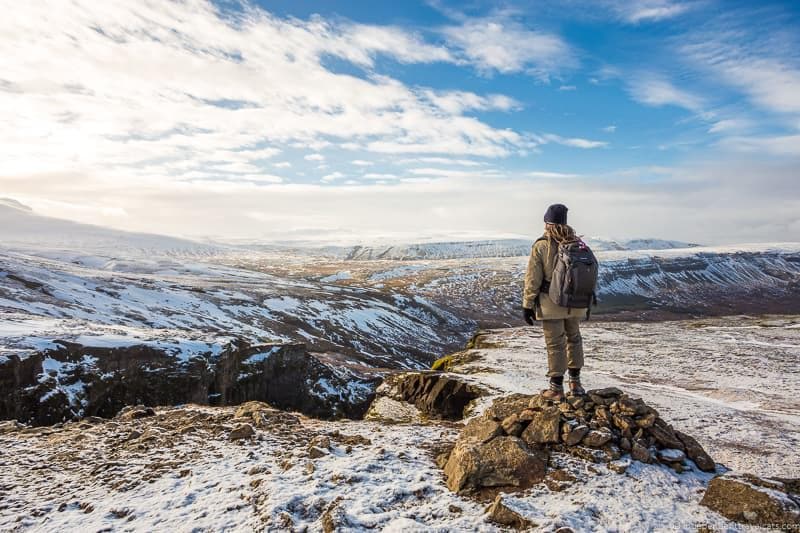
15. Taking Part in the Winter Festivals
If you are not visiting during Christmas or New Years, you can still catch some of the other fun winter holidays and festivals in Finland. For example there is Þorrablót (Thorrablot) which is a mid-winter Icelandic festival which includes ancient Norse traditions and feasting on traditional Icelandic foods.
There is also the Winter Lights Festival in Reykjavík each winter that focuses on celebrating the increasing sun light (after a few months of darkness) and Icelandic culture. Before Lent, there are a number of food-related holidays such as Bolludagur (Bun Day) where it is common to eat cream buns or Sprengidagur (Shrove Tuesday) where it is traditional to eat a big meal with lots of salted meat (lamb being the popular choice).
Other fun winter festivals in Iceland include the Reykjavík Food & Fun Festival , Design March , and the Annual Icelandic Beer Festival.
Winter Festival Tours
You won’t find many tours for these, as the festivals are probably best enjoyed on your own. The best place to enjoy most of these festivals is in Reykjavík, and they can easily be explored on foot, by car, or by local public transportation. Check the festival website or local papers for the events happening during your visit.
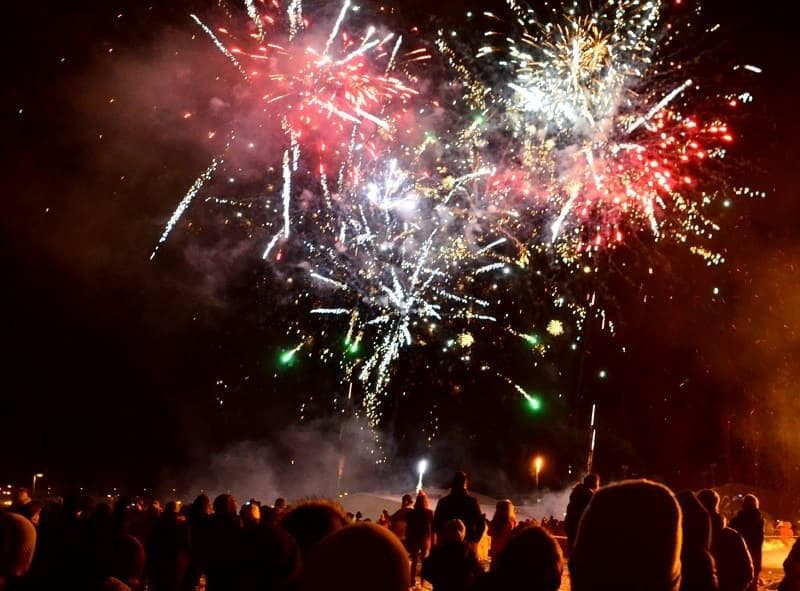
16. Tasting the Local Food & Drink
If you are excited to try out local foods, you definitely need to get yourself on a food tour while you’re in Iceland! Icelandic food is not all about hákarl (fermented shark, a national dish) and there are also delicious seafood and lamb dishes, flat breads, geothermally grown vegetables, and much more to try. Also check the dates for the annual Food and Fun festival , which is the country’s largest food festival that takes place each winter in Reykjavík.
Food Tour Day Trips by Car
In terms of food, Iceland is known for a lot of things from shark and lamb to langoustine and salt to fresh berries and skyr .
There are so many things you might want to include on a self-drive food tour such as hot dogs in Reykjavík, vegetables grown at one of the countries geothermal greenhouses (some have attached cafés or restaurants), langoustine soup in Stokkseyri, hákarl at the Shark Museum , fresh skyr or ice cream from Efstidalur II , rye bread from a geothermal bakery at Fontana , and plokkfiskur (a mashed fish soup) which is a traditional staple that can be found at restaurants around the country. You can also purchase a lot of local food products to take home such as sea salt, berry jams, meat jerky, and herbal teas.
To get a sense of the wide range of food from traditional home cooking to the latest innovative dishes, you’ll want to stop at some of the farm to table restaurants that dot the countryside as well as the more refined restaurants of Reykjavík.
Note that several restaurants in Reykjavík offer a traditional Icelandic food menu if you are looking for more adventurous Iceland food items (e.g., fermented shark, sheep’s head, whale, horse). If you are in Reykjavík, you can read some reviews online and put together your own walking tour of some of the best sounding food stops in the city. That way you can burn off some calories in between stops!
Food Tours from Reykjavík
If you are looking for a guided food tour, one excellent option is the Golden Circle food tour , which includes the classic Golden Circle day tour stops plus visits to a local farm, meals, and lots of tastings of local products throughout the day.
In Reykjavik, you might want to try this food walking tour to try some of the cities specialities. If you’d prefer to learn the art of Icelandic cooking, you can also take a cooking class in Reykjavík . This includes a hands on cooking experience, followed by a three-course meal.
It’s not all food either. Iceland has a burgeoning craft beer scene, and you can pair food and beer together on the excellent Beer and Booze tour, which includes ten different beers!
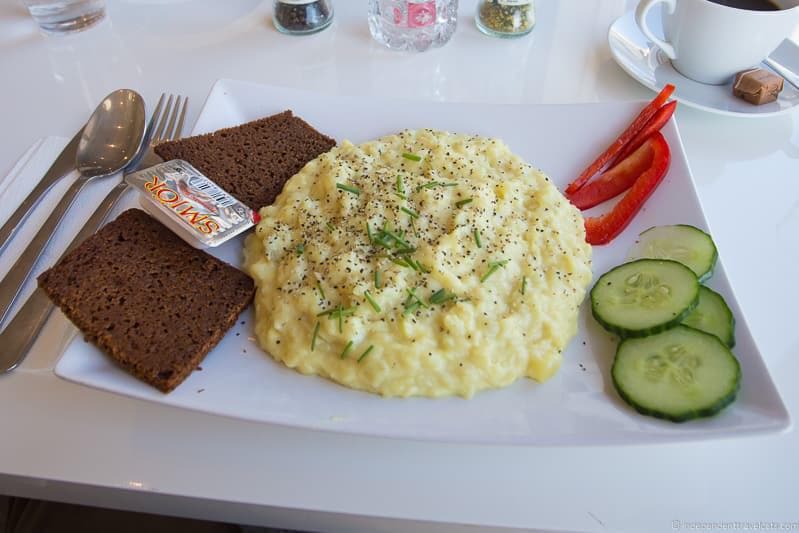
17. Mountain Safaris
Looking for a fun way to enjoy the mountains during the winter without having to hike, ski, or don snowshoes? Consider heading out on an ATV, a mountain buggy, or even getting a great view of the mountains from above in a helicopter.
Mountain Safari Tours
I don’t know of any places renting quad bikes or mountain buggies in Iceland, so you’ll probably need to join a tour if you want to do one of these activities. Several companies offer ATV rides, for example you can take a scenic quad biking tour from Reykjavík. Or if you’d rather see Iceland from above, you can do a helicopter tour which includes the mountainous areas around Reyjkavik!

18. Relaxing in Hot Springs
There is nothing quite like slipping into one of Iceland’s geothermally heated hot springs or swimming pools in the cold winter months! Most hot springs and public pools in Iceland are open year round, so it is easy to add a hot spring to your itinerary.
These range from the world famous Blue Lagoon to the local public baths to lesser known springs away from Reykjavík. Treating yourself to at least one is a must when visiting Iceland in winter!
Iceland’s Hot Springs by Car
Many people want to go to the Blue Lagoon , which given its popularity, we totally understand and it is about a 23 minute car ride from Keflavik airport or a 45 minute drive from downtown Reykjavík. If you want to go to the Blue Lagoon, you must pre-book a timed appointment. See our Blue Lagoon guide for lots of tips for visiting.
If you are looking for a nice alternative to the Blue Lagoon we’d recommend checking out spots like the Secret Lagoon or Myvatn Nature baths . Both are popular and scenic but less crowded and less expensive than the Blue Lagoon. Of course there are hundreds of geothermal hot springs, swimming pools, and spas in Iceland and here is a good list if you are wanting to visit a number of them on a road trip.
If you are looking for a local experience, I’d join locals at one of the public swimming pools, which generally include a geothermally heated large lap pool, hot tubs of varying temperatures, and a kiddie pool. You’ll find over a dozen of these in Reykjavík alone, plus one in about every Icelandic town of any size. Most popular with locals before and after typical work hours, we found our visits very relaxed in the afternoon. If you are planning to hit the lesser known spots and pubic pools, you’ll want to bring your own towel and any gear as these will not be provided and may not be available to rent or buy on site.
Note that you should never just jump into an unknown hot spring or pool you come across while hiking as some are hot enough to boil an egg, and the water temperature can change rapidly in some spots!
Iceland Hot Spring Tours
The Blue Lagoon can be booked as an easy day trip from Reykjavík with regular shuttle bus departures from the airport and downtown. You can book your Blue Lagoon time slot online here (must have a pre-booked time to visit) and then book a corresponding transfer. You can book a shuttle here .
You can also book day tours from Reykjavík that include a stop at a thermal bath or swimming pool along with a day of other activities. For the Blue Lagoon, we recommend checking out this list of tours that include a number of day trips to the Blue Lagoon, such as this day tour that includes stops at the main Golden Circle sites, Kerid Crater, and the Blue Lagoon.
If you are looking for a less busy alternative to the Blue Lagoon, there are many tours from Reykjavík that include alternative hot springs as well. For example, geothermal bath stops can be combined with Golden Circle tours (such as this tour ), a Super Jeep tour of the southern highlands, or while searching for the northern lights . This jam-packed full day tour includes the classic Golden Circle Tour, a stop at a geothermal pool, and lunch at a local Icelandic food stop!

So there are our favorite things to do in Iceland in winter! As you can see, there’s plenty to do in Iceland in winter, so don’t let the shorter days and colder weather put you off.
For more information and advice on planning your trip to Iceland we’d recommend checking out our Iceland trip planning tips , our recommended 7 day winter Iceland itinerary , our guide to 3 days in Iceland , our Iceland winter driving tips , our winter Iceland packing list , and photography highlights guide. Iceland can be an expensive destination and we recommend checking out our tips for traveling to Iceland on a budget .

Have you visited Iceland in winter, or would you like to? Which of these winter activities would you like to do? Let us know in the comments below!
Share this Post!
There are 41 comments on this post.
Please scroll to the end to leave a comment
John Post author
December 27, 2023 at 7:17 pm
What time is most of the limited sunlight in the winter
Jessica & Laurence Norah Post author
December 27, 2023 at 7:54 pm
Normally the sun rises in the morning and sets in the late afternoon or early evening during the winter in Iceland. This obviously changes a lot each month and the time changes a little each day. December has the shortest days and then they get longer as the winter goes on. So for example if traveling in January, on January 20th, the sunrise is 10:43am and sunset is 4:34pm, but you would still be able to see for a period before and after this during the twilight period. But it does get dark early during the winter so you do want to take the limited sunlight and day lenths into account when planning your travels, particularly for outdoor activities (also good to note if you want to avoid driving in the dark).
Hope that helps and do let us know if you have any further questions as you plan your trip to Iceland!
Best, Jessica
December 27, 2023 at 7:16 pm
Are there visitor sites set up to view the volcano? We are traveling in a few weeks to Iceland for a few days.
December 27, 2023 at 7:43 pm
The latest volcanic eruption at Sundhnúkagígar started on December 18th and as an update on December 21st said “there is no discernible volcanic activity in the eruption fissures”.
The latest from the tourism website is that he eruption is best viewed online with a live feed on the media sites mbl.is and ruv.is or from viewing sites from the towns of Reykjanesbær and Vogar. The best way to see it is probably from a helicopter and I think a couple of companies are doing helicopters tours that go over this volcanic site.
But currently there is really nothing to see based on recent live coverage and the area around there is not deemed safe to actually visit that area. the Met office notes that there is still a lot of seismic activity and there could be new fissures opening or another eruptions in the coming days/weeks. So you can check the live footage once in Iceland to see if there is anything to see (and currently viewing areas if any), but if there is another eruption you can normally view it from fairly far away but it will depend on what happens between now and your trip. But as of now, I don’t think there is much to see online or at the viewing sites.
But luckily for travelers, the eruption at Sundhnúkagígar has not interfered with air traffic or most travel plans for visitors except for the closure of roads around the village of Grindavík and the Blue Lagoon area. Currently the Blue Lagoon is closed but it may open in a few days, so will likely reopen by the time of your trip if there is no furter eruptions and it is deemed safe. If it is closed during your visit and you want another geothermal spa in that are, you might want to book tickets for the Sky Lagoon .
Hope that helps! Jessica
January 14, 2024 at 5:37 pm
UPDATE: As of January 14th, there was another volcanic eruption near Hagafell mountain and there is currently seismic activity and lava flow in the area. The Blue Lagoon has closed again out of caution for at least a few days and sadly lava is now flowing into the village of Grindavik, causing destruction there. Be sure to check latest updates once your trip starts.
lindsey rim Post author
March 9, 2020 at 1:55 pm
For being such a small country, both geographically and in terms of population size, Iceland has an incredible amount of activities that no visitor should miss! Fortunately, the country’s size also lends itself to being fairly navigable in a short amount of time, even with some essential activities requiring getting out into the wild.
March 10, 2020 at 10:51 am
Hi Lindsey, Indeed, it does pack a lot of punch, especially with natural attractions like waterfalls, beaches, glaciers, geysers, etc. It also has a lot of great activity options and museums and cultural activities. In just the 7 days you can see a lot in a relatively short amount of time because Iceland is fairly compact and lots of things are just off the main highway. If you are planning your trip, just let us know and happy to answer any questions.
Noon Post author
January 8, 2020 at 7:18 am
Love this and love how you write! Will be visiting in Feb – can’t wait!
January 8, 2020 at 10:02 am
Hi Noon, Glad you are enjoying our Iceland articles, and just let us know if you have any questions as you prepare for your trip! Happy travels, Jessica
Leonardo Pissinali Post author
September 10, 2019 at 1:37 am
Nice site with tips of things to do in Iceland
Laurence Post author
September 11, 2019 at 9:55 am
Glad you enjoyed it Leonardo. Wishing you a great trip to Iceland, Jessica
James Post author
April 21, 2019 at 3:03 am
Hi Laurence and Jessica. I love those winter activities in Iceland. It seems both of you are professional. I read many your blogs I really love the way you share your own experiences. My friends and i will keep this blog to be a guide to visit Iceland. Now, I already prepare a jacket for winter – I can say I’m ready for winter trip. Thanks for your sharing.
April 21, 2019 at 3:06 am
Hi James, Sounds like you are already getting prepared for next winter in Iceland! Just let us know if you have any questions and for winter gear, you can see our winter packing list to help with that as well. Best, Jessica
Lauren Post author
March 7, 2019 at 9:47 am
I wasn’t quite brave enough to visit Iceland in winter, but it looks like a spectacular place no matter what season. I love all your ideas of what to do when winter hits! Snowmobiling across Iceland’s landscape would be truly incredible.
March 8, 2019 at 5:46 am
Hi Lauren, Glad you enjoyed reading about our winter adventures in Iceland. Yes, you do need to brave the cold and weather in Iceland in winter, but it is a lot of fun and there are some beautiful winter landscapes then. Best, Jessica
Jon Post author
October 23, 2018 at 11:56 pm
I live in Iceland! You note so many of the wonderful thing to do here in winter, but not just a good place in winter. Reykjavik and Iceland are filled with lots of things to do such as museums like the beautiful attractions like great outdoors, day trips, Midnight Sun and the Northern Lights, eco tourism, volcanoes, mountains, lakes, glaciers, rivers, caves, black beaches and so much more.
October 26, 2018 at 3:39 am
Hi Jon, Thanks for taking the time to comment. Yes, there are so many things to do in Winter in Iceland but also lots to do the rest of the year as well! A beautiful country 😉 Best, Jessica
Stella Gough Post author
September 1, 2018 at 4:02 am
Nice and informative article on things to do in winter in Iceland. So many activities! Thanks for sharing it.
September 1, 2018 at 5:21 am
Hi Stella, Glad you enjoy the article and do let us know if you have any questions about winter activities while planning your trip to Iceland in winter! Best, Jessica
Laura Lynch Post author
January 4, 2018 at 1:31 am
We visited Iceland a few years ago for our first time in the winter. I thought it was going to be impossible to get around to all the awesome things, but it wasn’t. We did come across a blizzard or two and a few road closures, but it didn’t stop us from having a fantastic time.
January 4, 2018 at 10:58 am
Hi Laura, Thanks for sharing your experience driving in Iceland in winter! Yes, the weather can be tricky for driving which is why a guided tour can be a great option for those who do not wish to drive, particularly in the winter months. Glad you still had a fantastic time! Best, Jessica
Kelly Dunning Post author
January 3, 2018 at 12:26 pm
Iceland has been on my bucket list for a long time, but I had always thought that I should visit it in summer. However, after reading this I am considering visiting during winter. I think celebrating Christmas and New Years there would be so magical. I would love to take one of the Golden Circle Tours that you mentioned and to visit the ice caves. Whale watching would also be an incredible experience. I see you tasted the fermented shark – what was it like?
January 3, 2018 at 5:30 pm
Hi Kelly, It is a difficult choice whether to visit Iceland in the summer or winter as both have their pros and cons. If you have the chance, I’d do both, maybe the summer first and then return in the winter to focus on the winter activities and holidays. Whale watching in general is best in summer but as noted there are a pod of orcas that have been spotted the last several years only in winter which would be amazing to see (we sadly have not)! Yes, the fermented shark is an acquired taste and to be blunt I thought it was disgusting. On first bite it was OK, and then the taste grew and got much worse! It smells a bit like ammonia as well. However, there was an Icelandic man in the museum who was eating the samples like they were candy so to each their own! Most Icelandic people I think rarely eat shark but for some it is a delicacy. Best, Jessica
Jessica Post author
January 2, 2018 at 9:21 pm
Wow, this was a really helpful and comprehensive post! I had no idea skiing was a thing in Iceland and I definitely didn’t know snorkeling was! I am going to Sweden in search of the Northern Lights in a couple weeks and I am going to use some of your Iceland tips! I think they will translate well! Thanks!
January 3, 2018 at 9:51 am
Hi Jessica, Yes, I don’t think a lot of people know about all the things you can do in Iceland in winter (or other times of the year). Iceland is not really seen as a skiing destination yet by most but there are definitely a lot of opportunities. Snorkeling is year-round and the water stays about the same temp, and is always cold but still. Enjoy your trip to Sweden and I agree, many of these tips should indeed transfer. We also have a winter guide to Finland that may be even more similar in terms of activities! Best, Jessica
Yasha Post author
January 1, 2018 at 1:21 pm
Wow – what a lot of recommendations for things to do in Iceland in winter. There is only one problem – it’s so cold in winter… Ice tunnels, ice caves and glaciers look lovely, but you do look like you need many layers of clothing to visit them. Your photos are just amazing and I admit to being very tempted by the sights, the food and the experiences you outline in this post. It looks as if it is a truly unique place – no wonder it’s one of the most popular destinations at the moment.
January 3, 2018 at 12:10 pm
Hi Yasha, Yes, there are loads of things to do in Iceland during winter! It is actually not as cold as you might think, nothing compared to our visits to places like Canada and Finland. The ice caves and tunnels stay about the same temperature year-round so many of them you can visit them year-round (weather dependent of course) and the temperatures vary only by a few degrees year round! You do need to bring warm winter clothing, but we did not need to bring any special winter clothing that we did not already own from living in Scotland 😉 Definitely cold if you are from a warm weather location but not as cold as most people imagine I think. Hope you get a chance to visit Iceland!! Best, Jessica
Marcelle Post author
December 30, 2017 at 1:22 pm
It’s so funny, these two horses, the one with the white mane and grey fur and the fox red one, look like my horses. It’s a dream of mine to visit Iceland in winter time and of course, at least with a day tour on Icelandic horses. I’d love to see the Northern Light, too. It must be like a fairytale come true!
December 30, 2017 at 3:03 pm
Hi Marcelle, Yes, those horses are beautiful so you are lucky to have horses that look like them! There are many farms in Iceland offers tours and horse rides of various durations so that would be a great thing to do when you visit Iceland. Icelandic horse tours are offered year round but come between November and March for best chances to see the Northern Lights! Best, Jessica
Eric Gamble Post author
December 28, 2017 at 1:21 pm
I went to Iceland several years ago at the beginning of March and the end of their winter and absolutely loved it. I went hiking (via car rental) throughout the entire southern part. The only thing I wish I had done was those cave tubes you guys did. How amazing was that?
I loved all the waterfalls, rock formations, and several geothermal pools that are out there. I think if I get a chance to return, I would love to go back in Summer to see it not blanketed in white to see all the beautiful colors hidden beneath the snow!
December 30, 2017 at 1:23 pm
Hi Eric, Sounds like you had a great time and yes the ice tunnels or caves are great places to explore on your next trip. If you enjoy hiking, the best time is definitely the summer when more of the trails would be accessible and you get to see the colors. Hope you get a chance to return!! Best, Jessica
Edoardo Post author
December 27, 2017 at 4:01 am
Dear Laurence and Jessica Norah, thank you for posting your blog post about Iceland winter trips. I always desired to visit Iceland as an independent traveler, and sharing your experience helped me a lot to understand better how to organize myself. The inspirational experience you did are very interesting, so I think I will do something of similar. All the best and happy new year 🙂
December 27, 2017 at 7:11 am
Hi Edoardo, Glad you found our Iceland winter activities post helpful! You might also like our 7 day Iceland itinerary and our Iceland planning posts! Let us know if you have any questions as you plan your own trip to Iceland. Wishing you a wonderful New Year as well!
Happy travels, Jessica
Divya V Post author
December 27, 2017 at 2:00 am
Iceland has been on my winter bucket list for a while now, I hope I take a trip here next year :D. I would wholly watch the northern lights 🙂 and I have heard so much about the Ice Caves! So many great things to do in Iceland in winter time!
December 27, 2017 at 7:08 am
Hi Divya, Hope you get a chance to get to Iceland in 2018! The Northern Lights and ice caves are both definitely worth seeing, but there are also a lot of other things to do in Iceland to keep you busy 😉 Jessica
Leigh Post author
December 23, 2017 at 1:48 pm
I spent 1 night in Reykjavik this summer on a layover, and my next trip will definitely be a winter trip! I only had time for a food tour and the Blue Lagoon, but there is obviously so much to see, and the Northern Lights are a big draw for me!
December 27, 2017 at 7:14 am
Hi Leigh, Yes, 1 night is definitely not very much time to see much of Iceland but glad you got to see a couple of things. Seeing Iceland in winter is definitely becoming more popular but there are a lot of advantages of visiting in summer too (especially if you like hiking, mountains, seabirds, etc.). Hope you get a chance to return! Best, Jessica
Medha Post author
December 22, 2017 at 10:53 pm
Thank you for this comprehensive guide on all the activities possible in Iceland in winter. I am planning my trip in October next year mostly because I want to see the Northen Lights but I struggled in my decision to visit during summer vs winter because I want to make sure I am able to do all the activities and visit all the places. It seems from your guide above that almost all the good stuff is still doable and accessible during winter so I guess it’s not that bad to travel in October 🙂
December 23, 2017 at 8:22 am
Hi Medha, Glad the article was helpful! Yes, like most destinations with seasonal weather, there are going to be trade-offs and different experiences available no matter when you visit. I think most people visit during the summer on a first trip and then maybe come back for winter. We are planning to do it the other way around. But no matter when you go, you can still see many of the main spots in Iceland, although in winter we recommend focusing on the west and south (the area most people visit on a first trip to Iceland any time of the year).
In October, which is autumn, you’ll probably be there too early for some of the winter activities that require a lot of snow like skiing, snowshoeing, & dog sledding but you’ll be able to explore ice caves & ice tunnels, go ice skating, and go snowmobiling during that time of year. Northern Lights can certainly be seen in October (I’d recommend later in October for more dark hours) but it always just depends on the solar activity and weather! During the autumn months, Iceland has its annual international film festival and indie music festival if either of those are of interest. No matter when you visit, I am sure you’ll have fun and best of luck on seeing the Northern Lights!
Seana Turner Post author
December 20, 2017 at 11:43 am
I have to admit I am not much of a cold weather person, but those ice tunnels are pretty cool. I don’t think you could talk me into snorkeling, even with a dry suit, but I would love seeing those horses and the thermal baths. I’m sure the geysers are also amazing, as I loved being in Yellowstone and watching them. Reindeer trekking also sounds fun. I’ve never thought about going to Iceland before, but maybe… it looks more fun in these photos than I would have imagined!
December 20, 2017 at 1:58 pm
Hi Seana! Yes, not everyone is a cold weather travel person. Iceland is not as cold as some may imagine, even in winter, but it is still cold. I agree with you on the snorkeling/diving though! There is a lot to do in Iceland in the winter, but if you want to avoid the cold weather, I’d recommend visiting Iceland in the late Spring to early autumn. There is even more to do then and there are greater opportunities for hiking and spotting wildlife. We loved our winter trip earlier this year, and are tentatively planning to return again next year in late Spring or early Summer! Best, Jessica
Leave a Reply Cancel reply
Your email address will not be published. Required fields are marked *
Notify me of replies to my comment (just replies to your comment, no other e-mails, we promise!)
Subscribe to our monthly Newsletter where we share our latest travel news and tips
We only ask for your e-mail so we can verify you are human and if requested notify you of a reply. To do this, we store the data as outlined in our privacy policy . Your e-mail will not be published or used for any other reason other than those outlined above.
The 10 Best Things to Do in Iceland During the Winter
:max_bytes(150000):strip_icc():format(webp)/1_ErikaOwen-600x900-5bb3bec6c9e77c00260f18c6.jpg)
Most travelers think that summertime is the best time to visit Iceland , but don't make that assumption so quickly. Of course, the Midnight Sun is a sight that can only truly be appreciated in person and the warmer temperatures bring (slightly) better weather. To visit Iceland during the winter is to place yourself directly in a seasonal snow globe. Blizzards and white-out conditions are common and will often keep you contained to the city limits. That being said, there are a lot of tour operators offering experiences and activities outside of the city, complete with Reykjavik pick-up services, meaning you don't have to rent a car or worry about driving through the weather.
Ahead, you'll find 10 things that can either only be done during the wintertime or are best experienced between the months of December and February.
Spend a Cozy Weekend in Reykjavik
Creative-Family / Getty Images
Sometimes the best thing to do during the winter in Iceland is to stay put. Reykjavik is coziest during the colder months: restaurants are lit by candlelight, bars are packed with locals heading out for a nightcap, and the iconic Nordic architecture is most beautiful under a layer of snow. If you find yourself in the country for the holidays, make sure and bundle up for a walk around town. The city goes all out with their decorations.
Experience a Reykjavik New Year's Eve
GISBA / Getty Images
Speaking of holidays, New Year's Eve in Reykjavik is a true experience. After dinner, everyone will head to the streets surrounding Hallgrimskirkja dressed in their finest to welcome the new year. Fireworks are a common sight, as are communal shots of Brennivín, Iceland's traditional schanpps.
Tour an Ice Cave
golfer2015 / Getty Images
Within three hours of Reykjavik, you can find two large ice caves: the Katla Ice Cave inside of the Myrdalsjökull Glacier and the ice caves of Langjökull. Visiting an ice cave is something that needs to be planned ahead. Since the melting patterns of these caves has accelerated, it requires close monitoring to know whether or not they're safe to enter. Luckily, tour operators like Extreme Iceland and Arctic Adventures offer trips into these incredibly unique places.
Tag Along on a Dogsled
Annalize Ferreira / Getty Images
There are plenty of places to meet snow dogs in Iceland. Hey Husky is a great site for finding the right tour for you, but also look to Dog Sledding Iceland , Extreme Iceland , and Iceland Unlimited for other options. You won't regret spending an afternoon gliding along the countryside with these energetic pups. Some tour operators even offer multi-day trips, bringing you from hut to hut in the Arctic wilderness.
Hike a Glacier
Alberto Rossetto / 500px / Getty Images
If you plan on visiting some of the ice caves, factor in some extra time to scale a glacier. The same tour operators that offer ice cave experiences also offer hiking options. You can also hike Iceland's glaciers—Sólheimajökull near Reykjavik, Svinafellsjokull in Skaftafell National Park , or Vatnajökull in Vatnajökull National Park, to name a few—during the summertime, but they're best seen with a dusting of snow.
Soak in a Hot Spring
Karol Majewski/Getty
Hot springs can be enjoyed year-round, but there's something to be said about enjoying the steamy waters while the cold air is swirling around you. Here are a few of our favorites: Secret Lagoon (also known as Gamla Laugin) in Flúðir, Landbrotalaug in Snaefellsnes Peninsula, GeoSea in Husavik, and Grettislaug in Skagafjordur. Blue Lagoon is also a great option for the wintertime, as crowds will be smaller, but you should also hitting up a more remote hot spring for a true Icelandic experience. Just north of Reykjavik, you'll also find the Reykjadalur hot spring river , which requires a hike through a mountain valley to reach.
Hunt for the Northern Lights
Krzysztof Baranowski / Getty Images
The Northern Lights can only be seen for a few months out of the year in Iceland. You can't see them during the summertime since the sun is shining for nearly 22 hours a day during some weeks. To see them, your best bet is to visit between the months of September and March. Seeing them on your own is easy, if you've rented a car. Drive toward Thingvellir National Park , where the city lights of Reykjavik will be left behind. If you don't want to worry about driving, book a tour with one of the city's many tour operators .
Snorkel Silfra Fissure
TripSavvy / Chris VR
Silfra Fissure is an area where the Eurasian and North American tectonic plates meet. The two masses of land are constantly on the move, pushing away from each other a few centimeters every year. The results is a small channel of water with some of the clearest and most pure water on Earth, and you can snorkel in it.
Snorkeling Silfra Fissure is one of those things you can do year-round, but going during the wintertime buys you that bragging right of snorkeling Arctic waters in a month when no one has a real reason to be swimming around in the outdoors. You'll be outfitted in a dry suit that will keep you dry, warm, and incredibly buoyant. We recommend going with Iceland Adventure Tours , as you can't snorkel the fissure without going with a tour (entry into the area is monitored for safety).
Snowmobile on a Volcano
Thomas Janisch / Getty Images
Guide to Iceland offers a snowmobile tour of Mýrdalsjökull Glacier, where you'll also find the caldera of the famous Katla Volcano. After taking a snow truck up to the snowmobile base and whizzing up the glacier, you'll step off at a point where the caldera rests 2,500 feet below your feet. A short lesson on driving the snowmobile is also offered at the beginning of the tour, so all skill levels are welcome.
Go Skiing or Snowboarding
Comstock Images / Getty Images
Hitting the slopes is a must-do if you're a winter sports enthusiast visiting Iceland during the winter. There are a few areas that are particularly known for skiing and snowboarding: Tungudalur, Eyjafjörður, Tröllaskagi Peninsula, and Dalvik. The best time to ski in Iceland is actually late winter, starting in March right through June. For more information read our complete guide to skiing in Iceland .
The Top 22 Things to Do in Iceland
January in Iceland: Weather, What to Pack, and What to See
Weather in Iceland: Climate, Seasons, and Average Monthly Temperature
Iceland's Golden Circle: The Complete Guide
The Best Day Trips From Reykjavik
Your Trip to Iceland: The Complete Guide
New Year's Eve in Reykjavik, Iceland
The Best Countries in the World for Adventurous Travelers
12 Best Things to Do in New England in the Winter
The 12 Best Places to See the Northern Lights
10 Gorgeous Ice Caves to See in Iceland
10 Reasons to Visit Yellowstone in the Winter
The 9 Best Glaciers to See in Iceland
Vatnajökull National Park: The Complete Guide
The Best Winter Getaways for Families
The Top 10 Places to Visit in Iceland
13 Special Things To Do in Iceland in Winter
What happened when you told your friends and family you were planning a trip to Iceland in Winter? Was the look on their face something like? 😱 Did they think you were going to die of frostbite or get buried in an avalanche?
Honestly that’s what most people think about Iceland, but you might be surprised to know that Winter is the second most popular time of year to visit Iceland after Summer. Yeah! Tell that to your concerned loved ones. You’re definitely not the only one who figured out that Winter in Iceland is a special experience.
The reality is that there are SO MANY awesome Iceland winter activities, things you just can’t do any other time of year. And as they say in Iceland, “If you don’t like the weather, wait five minutes.” 😉
Read on for the best things to do in Iceland in Winter, what to wear in Iceland in Winter, what kind of weather to expect in Iceland during the winter months, and general safety tips for traveling Iceland in Winter.
1. Take an ice caves tour
Taking an Ice Caves tour is probably the top thing on a lot of people’s lists when they start planning a trip to Iceland. A big part of that is because Iceland’s ice caves are only open every year from mid-October to about mid-March , though you should check for each tour when they’re running, as the exact dates can change every year. Still, what it means is that you won’t be able to visit them in Summer because that’s when they’re flooded full of water! So getting to see them is something pretty special, and it was the first activity we booked when visiting Iceland in Winter.
You might also be wondering: do I really need to take a tour to visit the ice caves? The answer is Yes, you do need to go through a tour. It’s completely unsafe and not allowed to go out on the glaciers on your own! There are massive chasms you can just fall down in unstable parts of the glacier. The guides are experts and understand the glacier’s thickness and where they can drive their Super Jeeps 😎
Where to take an ice caves tour in Iceland
There are three main locations you might want to visit ice caves in Iceland, ordered by distance from Reykjavík:
- Sólheimajökull (2 hours from Reykjavík). This glacier is easily the most ideal if you can only make a day trip from the capital, and it’s easy to book both ice cave tours and glacier hike tours including transfer from Reykjavík.
- Mýrdalsjökull (2 1/2 hours from Reykjavík), Katla Volcano. Located closer to Vik, you could reach this glacier as a day trip from Reykjavík but you’d probably need to self-drive.
- Vatnajökull (4 hours from Reykjavík, 2 hours from Vik), Skaftafell National Park. This glacier is Europe’s largest and conveniently close to Jökulsárlón (Glacier Bay), which you’ll want to see anyways. It’s about a 4 1/4 hour drive from Reykjavík, meaning you’ll need to stay somewhere like Vik or Hof in order to reach it.
Keep in mind, you WILL be driving more slowly in Winter conditions!
If you’re going to Skaftafell, you’ll want to base yourself in towns like Hof (closer) or Vik (1 3/4 hours drive) if you have a glacier tour happening first thing in the morning. Read my post on where to stay in Iceland if you’re traveling the Ring Road and looking for tips on choosing accommodation.
I’ve marked the meeting points for the tours listed below. The majority of tours for a given glacier all start in the same place, but always double check with the tour company!
How to choose an ice caves tour
Most ice cave tours are more or less the same (meaning at any given glacier, they visit the same naturally occurring caves), with costs about $120-170 per person. It sounds pricey but you really won’t get lower than that. Yes, Iceland is $$$! Even if you book a “small group tour”, the reality is that most ice caves have more than one tour at them at the same time so you’re mostly paying for sharing the Super Jeep with more or less people. For that reason, the main variables you want to consider are: which glacier can you reach , how much time do you have and do you want to do glacier hiking ?
Here are the best value tours available in each of the three main ice cave locations in Iceland:
- (4h) Skaftafell: Ice Cave Tour & Glacier Hike – This tour is one of the least expensive Skaftafell glacier tours, quite long at 4 hours, and also has both ice cave exploration and hiking. If I were to go again, this is probably the ice cave tour I’d choose. If you’re going to end up at the same caves no matter which tour you get, in my opinion you might as well get the cheapest and the longest tour!
- (4h) Sólheimajökull: Ice Cave Tour – One useful thing about Sólheimajökull is the fact that you can reach it as a day tour from Reykjavík. This particular tour involves hiking to and from the ice cave, which takes about 1-1.5 hour each way, and is suitable for children as young as 10. You can even book the same tour with transfer from Reykjavík for an extra $50 or so.
- (3h) Katla Volcano: Ice Cave Tour – This ice cave is located at Mýrdalsjökull near Vik. You get to both see the ice cave and do a little bit of hiking. Come here if you can’t make it all the way to Vatnajökull but still want to have an ice cave experience!
2. Hike across Europe’s largest glacier, Vatnajökull
I’m pretty sure Iceland is the first place I’d ever encountered a glacier, and it was particularly special to do if for the first time at Europe’s largest glacier, Vatnajökull. The amazing thing to me is that it takes almost 45 MINUTES to drive from the starting point of most glacier tours, over the glacier’s surface, to reach the location of the ice caves.
In case you’re wondering, how physically strenuous is a glacier hike? you can put your mind at rest – children as young as 8 years old are allowed on the hikes, and you’ll also see seniors as well. You just need to be sure to wear proper hiking boots, to which they’ll be able to attach crampons (spikes) on the bottom. Besides that, just wearing warm clothing and gloves is basically enough. Don’t forget that Iceland is windy and when you’re on a glacier, there’s nothing to shield you from the wind. So wearing wind and water reisistant clothing is going to save your butt (literally!).
Except in this case where you can slide down on purpose 😉
TIP – If you’re based in Reykjavík, you can do a glacier hike on Sólheimajökull . Located just 2 hours away from the capital, this tour includes transporation from Reykjavík at the same price you’d pay for a on-site glacier hike at Vatnajokull. Alternatively you can save money by booking a tour that starts at the glacier's foot .
Glacier hikes on Vatnajökull
Both of these tours are operated by the same company, so the big difference is how much time you have on your hands. Besides the standard hike (ha!) you can also do an glacier hike and ice climbing tour .
- 3-hour hike: Skaftafell National Park Glacier Hike ($)
- 5-hour hike: Skaftafell Glacier Hike Adventure ($$)
In terms of pricing, the 3-hour tour is cheapest, followed by the 5-hour hike, and then the ice climbing and glacier hike which lasts 4 hours. My guess is the additional equipment and instruction accounts for the extra cost. In any case, the costs are not massively different and your biggest factor (as always!) comes down to how much time you have to spend here before moving on to the next leg of your trip.
3. Hunt for the northern lights
This MIGHT just be the dream of just about every person who visits Iceland in Winter. Tell me that’s not true! Also known as the aurora borealis , the northern lights are a natural phenomenon that happen in high-latitude regions thanks to solar wind. While most auroras we saw were green in color, you can also see them with tinges of purple, yellow, and even red. Iceland was the first place I’ve seen the Northern Lights in my entire life and it was easily one of the most exciting parts of my trip to Iceland in Winter.
How to find the northern lights in Iceland
In fact, in our 10 days in Iceland we saw the northern lights FIVE TIMES. One thing you might find surprising is that most of the time, the problem with being able to see northern lights is not actually aurora activity – it’s cloud cover. You can use this awesome aurora forecast website to see where the northern lights activity is and how the visibility will look. It’s super useful because you can look several hours in the future and plan your evening based on where you need to be to see them.
In our case, one night we even ended up taking a “nap” before venturing out to see the northern lights at 3AM. Let me tell you – IT WAS COLD. My fingers nearly froze off, because it’s totally hard to operate a camera with gloves on. But in the end, you can tell me if it was worth it:
Yeah, thought so 😏 I had to stand perfectly still for 30 seconds for this photo, and somehow, I survived!
How to photograph the Northern Lights in Iceland
Pretty much everyone wants to take photos of the Northern Lights, but if you’ve never done much photography, you might be surprised to learn that it’s not really possible to take photos of the northern lights with your phone. You need to take a long exposure photo, using a wide angle lens (at least 16mm on a crop sensor, 23mm on a full frame) with a very wide aperture (ideally f1.4, f1.8, or f2). On top of that, you need a tripod! I used this carbon fiber travel tripod to take all the northern lights photos you see in this post.
You can learn more about how to take pictures of the northern lights in my post about Iceland photography tips , but in general I would make sure you have a camera that’s capable of doing it and that you learn how to work with your camera before you arrive in Iceland . Nothing is more frustrating than tinkering with a camera when something amazing like the aurora borealis is happening and you’re trying to get your gear to behave!
Should you go on a northern lights tour in Iceland?
To me this depends entirely on whether you’re able to safely drive a car in Iceland in Winter. As I mentioned already, the road conditions can be VERY icy, and you want to have experience handling ice on the road. If you’re renting a car, there is no good reason to join a northern lights tour – you’ll have a lot more flexibility planning yourself with the Aurora Forecast website and driving to interesting locations. However, if you are NOT able to drive yourself, a northern lights tour might make sense . It’s rather unlikely you’ll see northern lights from the city center of Reykjavík, but you don’t have to stay too far out for the possibility of seeing them. I know it’s possible to see northern lights from within Akureyri, in North Iceland.
One good thing about Northern Lights tours is that many offer a free re-try if you don’t see any northern lights . Depending on whether you’re based in Reykjavík or not, this could be a viable option so you can re-book your tour when the aurora activity is forecasted to be strong and with clear skies.
Another cool option (even for self-drivers) is taking a northern lights boat tour . It’ll be hard to take photos with a rocking boat + tripod but who knows! I can imagine it’s a really special view, especially if you can see the lights reflected in the water.
4. Go whale watching
Iceland has a bit of complicated relationship with whales. You might have heard that it’s possible to eat whale in Iceland, similarly to how you can also eat puffin. However, a lot of people have said that consuming these animals is not promoting sustainable practices and that these days they’re mostly hunted for tourists.
Instead of eating them, in Iceland it’s possible to see them in their natural habitat – even in Winter!
Whale watching in Iceland in Winter
Iceland is famous for its whale-watching, and even though Summer is prime time in Iceland for observing wildlife, there are some whales that prefer it in the winter – such as the Orca pod that spends its Winters off the Snæfellsnes peninsula . You can also see Humpback whales in the Winter, and there are tons of boat tours that will take you out to see them.
In the Summer, many tours even claim to have a 97-99% success rate. That’s a pretty bold claim if you ask me, but I’m guessing there’s a reason for it 😉 Even in the Winter, you can still have really good chances, and similarly to the northern lights tours, many whale-watching tours will offer you a free re-try tour if you don’t see whales the first time.
Best places to see whales in Iceland
Whales love Iceland, and there’s an entire article about whales in Iceland and the best places to see them. To hit the highlights, here are the best places you can see whales in the country, with the best locations for Winter denoted with a star ★ :
- Húsavík – While this is the whale-watching capital of Iceland, a lot of the whale-watching tours shut down here in the Winter. Be sure if you’re booking a tour in Húsavík, that you double-check they’re operating during the dates you have planned!
- Akureyri – Most whale-watching tours will take you to the longest fjord in Iceland, Eyjafjörður. Since it’s less windy here, the tours are well-suited for people who tend to get seasick, children, and seniors. Here you can mostly see humpback whales, although blue whales, orcas, and fin whales have also been report. Book your tour here with a tour company that continues to operate in Winter and has great sighting success.
- Reykjavík ★ – While the peak season is April until October, you still have a really good chance of seeing whales in the bay near Reykjavík. This whale-watching tour also runs in Winter and offers you a free re-try if you don’t see whales on your first tour. Works great if you are based in Reykjavík.
- Snæfellsnes peninsula ★ – Your chance to see killer whales! Especially in Winter, this is the prime season to see them. This whale-watching tour from Grundarfjörður is in exactly the right spot for your chance at seeing killer whales. I highly recommend spending time in Grundarfjörður regardless because it’s close to Kirkjufell (pictured below), Iceland’s most famous mountain. You’ll get a double win if you can do both while you’re in this part of Iceland.
5. See Iceland’s most recognizable mountain on the Snæfellsnes Peninsula
If you’ve watched Game of Thrones there is a VERY good chance you already seen Iceland’s most famous mountain, Kirkjufell . It’s name literally means “Church Mountain”, and is reportedly the most photographed mountain in the country. The funny thing is that it only looks so nice and pointy when taken from this particular angle, so it’s hard to recognize when you’re driving up to it that it’s going to be the mountain you’re looking for!
You need a VERY wide angle lens for this photo! This was shot on a 16mm lens on a crop sensor camera and I wish it were wider.
If I’m going to give you one tip, again and AGAIN in this article, it’s this: BUY YOURSELF CRAMPONS! . Seriously I cannot tell you how many people I saw trying to walk to the viewpoint of Kirkjufell and slipping on their butts and falling down. I remember one specific man who just looked so confident, and everyone just watched him knowing he was going to tumble.
And tumble he did.
It is SO icy here because of the waterfall and mist from it, that the path (even with the rubber flooring) is incredibly slick. The other problem is that without crampons, people resort to walking in snow and that results in widening the path and impacting Iceland’s fragile nature . The best option: buy crampons, stay on the path, don’t fall on your butt, preserve nature.
6. Drive around the Golden Circle
If there was a Disney Land in Iceland – imma be honest – the Golden Circle would be it. LUCKY FOR YOU, it is totally NOT as bad in Winter as it in the Summer. Or was that because we did our tour ahead of a “No Travel Storm”? You be the decider. In any case, our experience traveling around the Golden Circle was pretty efficient until we finally had to stay in a giftshop near Gulfoss for a few hours until the winds weren’t strong enough to rip the doors off our car.
Are you excited for Winter in Iceland? I sure hope so.
Where to go in the Golden Circle in Winter
Anyways, back to the Golden Circle. This beautiful stretch of Iceland’s Southwest has some unmissable stops you’re going to want to see, and I’m not even joking here. There are a lot of people who come all the way to Iceland JUST to visit the Golden Circle. Here are some of my recommended stops for people visiting Iceland’s Golden Circle for the first time:
- Geysir and Strokkur – Geysir is where the term gets its name, a nature occurrence where the earth shoots super hot water into the air. If you’re American, you might liken it to “Old Faithful” in Yellowstone National Park. The Golden Circle is one of the few places you can see one with such regularity. While Geysir goes off only very rarely these days, you can see its little friend Strokkur erupt on a regular basis. Just don’t stand downwind!
- Gulfoss – This might be the first waterfall you see in Iceland! This powerful waterfall is very easy to access and has two vantage points: from the parking lot above, and also below. Try both for different perspectives on this waterfall.
- Þingvellir National Park – The location of Iceland’s first parliament all the way back in 930 AD. You can see the summer house of the parliament members, and watch the water run through this park. It’s beautiful even when it’s covered in snow.
- Silfa Fissure – Perhaps the only place in the world where you can snorkel between tectonic plates? You can either dive or snorkel, though you need to be open-water diving certified in order to do the diving option. Spots book up fast, so you’ll want to book your Silfra snorkeling tour in advance to secure a spot.
- Crater Kerid – This is one place we missed on our golden circle tour, but somewhere easy to add on whether you’re self-driving or not. It’s also included on many guided tours. You can see the pure blue color of the water filling this red rock crater, it creates a really great contrast in photos!
- Secret Lagoon – Secret Lagoon is basically a less hyped and less commericalized alternative to the Blue Lagoon. You have to swim at least once while you’re in Iceland, no matter the season! Book Secret Lagoon tickets in advance – you even even get tickets with transfer from Reykjavik included if you aren’t self-driving during your Iceland Winter trip.
7. Swim in hotsprings or natural baths
Swimming when it’s below zero outside – what could possibly go wrong? You have TONS of amazing options in Iceland when it comes to getting wet in the wintertime. While the Blue Lagoon might be the most Instagram-famous baths in Iceland, they are surely not the only option that you have. When we visited the Blue Lagooon (without buying tickets in advance!) they were sold out, so if you want them you need to BOOK EARLY.
If you’re a procrastinator like me, you can think about it like being spontaneous instead 😉 There are some fantastic alternatives to the Blue Lagoon as well, depending on where you’ll be visiting in Iceland in Winter.
Blue Lagoon alternatives (for procrastinators like me)
- Secret Lagoon – If you don’t get into the Blue Lagoon, the Secret Lagoon is a really solid backup plan. It’s easy to get to from Reykjavik and less famous online so you’re less likely to get denied entry because you didn’t book over one month in advance. In Winter.
- Seljavallalaug Zwembad – Honestly, this is a natural bath in the middle of a valley and it is VERY COLD getting in and out of here, I thought I was going to get hypothermia. But I didn’t, and looking back on the photos it’s was pretty cool so why not? You need to hike to get here, but believe it or not this spot is actually on Google Maps. What you need to do once you reach the parking is to walk along the river. It’s MUCH easier to cross the river where it’s wide and shallow. I fell in. I got wet. Don’t be like me. Keep going and you’ll find this natural bath after about 15-20 minutes of light hiking.
- Mývatn Nature Baths – We also went here and honestly it has almost everything you want to get from Blue Lagoon but with fewer tourists. Of course, it’s in North Iceland and you might not make it here. But it was really neat: hotter and colder sections, sections with a bunch of algae, so much steam you can barely see anything and super blue water. Love it!
8. Head to North Iceland
There are a lot of Winter guides to Iceland that might tell you not to bother going to North Iceland – but that’s the exact reason you should! North Iceland is far less touristed than the South, and it has some really special places worth exploring in it. Whether that’s the capital of the north, Akureyri , or the lake region that looks more like the surface of the moon, Mývatn , or maybe even Europe’s most powerful waterfall , Dettifoss which is in the Northeast of the country.
Best places to visit in North Iceland
- Akureyri – The capital of the north! This is a great spot to be based in central northern Iceland, though you’ll probably want to stay in Mývatn while you’re in the western part of the North.
- Dimmuborgir – These lava formations were supposedly home to the “Yule Lads”, a gang of trolls who lived in these formations. It’s said that the area looks like an entire city formed out of lava rocks, but it’s hard to see it when it’s covered in snow. I bet this place is more interesting once the snow melts though!
- Námafjall Hverir – If you’ve been to geothermal areas elsewhere on this trip, you should still visit this one – it’s bigger and more impressive than the others, and you can get even closer to some of the springs and bubbling pits.
- Mývatn Nature Baths – As I already mentioned, this is a much less expensive (and touristy!) alternative to the Blue Lagoon, here you can experience the Icelandic tradition of naked bathing and getting into ultra hot water. In the winter it’s hard to see the surrounding landscape because of the steam coming off of the water, but that also makes it even more interesting to explore.
- Krafla Power Plant – Iceland is a leader in producing the energy consumed in the country using geothermal means, and this powerplant is just one that harnesses nature to provide power to homes in Iceland. In the Spring you can take a tour of the plant, but in the mean time you can still drive up to the plant and see it at work.
- Skútustaðagígar – You can walk around the rim of some of these craters, which is definitely a unique experience. You’ll encounter these craters when doing a loop around Myvatn, you basically can’t miss them from the car window!
- Dettifoss – Dettifoss can be accessed from two different directions, from the east and from the west. On the East, you’ll meet an unpaved road which may be closed in Winter (it was for us). This side let’s you get right to the edge of Dettifoss, which is amazing for photos. The road on the West is newer, paved, and you only have to walk for about 20 minutes to reach the waterfall along a paved path. If you have the time, it’s probably worth it to view Dettifoss from both sides.
- Selfoss – While Dettifoss is more powerful, Selfoss is definitely the prettier waterfall. The distance markers are a bit misleading, as Selfoss is a quick walk from the car park and will be your last stop of the day.
- Góðafoss – Take it in because Góðafoss is the last proper waterfall you’ll see in Iceland if you’re driving counterclockwise around the Ring Road! Luckily it’s very beautiful, and extremely easy to access from the Ring Road. You can basically park next to the waterfall, and it can be accessed by foot from both sides by a bridge.
9. See the snow-capped eastern fjords
Driving Iceland’s east coast is considered one of the most beautiful drives in all of Iceland, and when you’re here you’ll understand why. There are so many beautiful places just sitting right outside your window, you’ll wish you could take a photo around basically every corner. There’s not a whole lot to do besides drive, but that’s entertaining enough when you have views like this!
Places to see in East Iceland
- Drive along the Ring Road – This long and windy road will keep you close to the sea. Keep an eye out for possible road closures in Winter, as you may need to improvise and take a slight detour off the Ring Road.
- Egilsstaðir – The only “major city” in East Iceland, here you can stock up at the grocery store, get gas, and even buy some crampons at a local outdoors shop (bear in mind: winter hours mean they open at 3pm).
- Seyðisfjörður – You have to take a mountain pass from Egilsstaðir to access Seyðisfjörður, but if weather permits it’s worth it to visit this adorable harbor town. There’s a weekly ship that heads to the Faraoe Islands and then on to Denmark from here, but the main attraction has to be one of Iceland’s prettiest, tiniest churches. Coming out of town, you can also pull off to see a small waterfall, naturally.
9. Tour the Reykjanes Peninsula
Most tourists visiting Iceland miss the Reykjanes Peninsula, which is an easy detour you can make on your way from the Keflavik airport to Reykjavík. We toured the peninsula right after picking up our car because reaching the city for the evening.
Things to do on the Reykjanes Peninsula
- Reykjanesviti – See an Icelandic lighthouse! This is also Iceland’s oldest lighthouse. Just down the road is also your a chance to experience Iceland’s geothermal fields.
- Krýsuvík and Seltun – A larger area for geothermal activity, where you can walk across bubbling mud pits by way of wooden pathways.
- Blue Lagoon – As I mentioned, I didn’t enter the Blue Lagoon because we didn’t book early enough. There are other options, but don’t underestimate how easy it is to do the Blue Lagoon on your way to and from the airport!
- Buy an Icelandic sweater – Handknit sweaters will run you around $200 or more, but are also sure to keep you warm with thick Icelandic wool!
10. See Iceland’s South Coast
Iceland’s South Coast, combined with the Golden Circle, are the most popular places to visit in all of Iceland. You can see an incredibly dense concentration of the natural sights that make Iceland so special in a very short amount of time: black sand beaches, waterfalls, stunning landscapes, aaaaand the crowds to match. Again, Winter isn’t AS busy at the Summer but it’s still a popular time to go. You’ll never be mad you got an early start to visit these places!
Here are some of the best places you should visit on Iceland’s South Coast during your winter roadtrip.
Places to see on Iceland’s South Coast
- Seljalandfoss – You can also go behind this waterfall, but be prepared to get drenched! Don’t miss the other waterfalls along the mountain.
- Skogafoss – We visited Skogafoss twice, once during a small snowstorm and once during sunshine. It’s amazing how different it looks depending on the weather!
- Dyrholaey Arch – Even though the next spot on this list is better known, the area you reach after turning onto the road to Dyrholaey has some of the best views. There’s a lower parking lot, which offers great views, and a steep and trecherous gravel road that leads you to even better vistas (plus the lighthouse pictured above, known as Dyrhólaeyjarviti ).
- Reynisfjara – I’ve got a confession: the basalt columns you find at this location are actually kind of tiny! There are so many tourists here, even in the dead of winter, that it’s not somewhere you’re going to want to spend a lot of time (unless of course you show up first thing in the morning and beat the crowds).
- Sólheimasandur Plane Crash – The walk to this plane takes about 45 minutes each way. It’s extremely easy to find (there’s a wide path lined with reflective markers every 50 meters), just make sure the weather is going to cooperate on your walk so you don’t end up encountering a storm on your way there or back. There’s no shelter 😉
11. Visit Diamond Beach at Jökulsárlón
Diamond Beach is right next to the area you’d depart from if you’re going on an ice caves tour or a glacier hike, making it an ultra-easy place to stop and take some photos. Like a number of beaches in Iceland, the black sand is the result of volcanic activity. You can pick up tiny chunk of glacier that have drifted down from Jökulsárlón (Glacier Lagoon) before ultimately getting swept out to sea.
12. Buy (and wear!) a Lopapeysa, a traditional Icelandic sweater
Iceland’s traditional winter sweater can be purchased while you’re in Iceland, and even worn on your trip. It’s made of Icelandic sheep’s wool, which is super super warm and comes in gorgeous patterns. You can buy a hand-knit sweater for around $200, though it’s also possible to buy non-hand-knit for a cheaper price.
I brought this one in Borgarnes but there’s also a popular place to buy them in Reykjavík, called the Handknitting Association of Iceland . When you’re buying hand-kit sweaters, every sweater is unique so you can spend ages shopping around and looking for the best one for you. Personally I love the flexibility of the neutral colors but you’ll find them in all kinds of patterns and sizes!
13. Get soaked in a waterfall
If there’s anything that’s an Icelandic rite of passage it has to be this: you’re going to get WET and MUDDY during your trip, especially when you visit during the Winter months. In fact, you’d be wise to pack a rain coat if you’re planning to walk behind Seljalandfoss. Pictured below is me getting utterly soaked in Skogafoss, one of Iceland's most famous waterfalls located on the South Coast.
Read on for more suggestions of what to pack in Iceland for Winter so you’ll be properly prepared to take amazing photos and have these awesome winter experiences!
TIP – Make sure your photography gear is weather reisistant! Ours got completely wet during this trip, but had no issues thanks to the fact that it’s meant to handle a bit of water. You’ll also want to be sure to pack lens cleaning equipment in order to keep spots off the lens that’ll ruin your photos.
What to wear for Winter in Iceland: packing list
- Crampons – As I’ve mentioned like a dozen times in this article, you want to get spikes for your boots. There is a LOT of ice, and before I bought my crampons I had to stop my hike to Svartifoss because it was too unsafe to continue on the narrow path without them. You will thank me a thousand times over if you buy crampons! I own these heavy-duty crampons but generally look for crampons with REAL spikes not just the little bottom-of-the-shoe grip. Also keep in mind the size of your winter boots – I don’t have huge feet but my winter boots are large, hence the large crampons fit me. ALSO not many stores carry them in Iceland while you’re out on the Ring Road, and where they do, they are EXPENSIVE. Shop early and save, seriously!
- Parka – It should go without saying, but you need a serious Winter jacket when you come to Iceland. While Iceland isn’t ultra cold, it has a serious wind factor and you’re going to want something that’s both weather reisistant and keeps wind out. I own two of these Fjallraven women's parkas and especially love the tons of pockets.
- Snow boots – You need boots that are both warm and waterproof. They don’t need to be the WARMEST of all time (depending on your body temperature that might be uncomfortable for you), but the most important thing is they need to keep your feet dry. I fell in a river with Sorel snow boots on and my feet stayed dry. I was wet, but impressed 😂
- Rain coat – I didn’t bring a rain coat, but if you’re planning to do some up-close waterfall photos (such as behind Seljalandfoss) you’re going to need one. They also look great in photos so pick a raincoat that stands out!
- Layers: long sleeves, leggings – Iceland is about layering, so you can dress and undress when you get in and out of your car as you drive around the country. One thing to remember is that wind layer! I liked wearing thermal leggings in Iceland under my pants as well for extra protection against the wind.
- Scarf, gloves, hat – You need these things, and don’t settle for your “Autumn season” versions. Especially when it comes to your hat and gloves, be sure to look for items with lining inside that are really going to keep you warm.
- Swimsuit – As I mentioned, there are a number of swimming opportunities in Iceland. Besides hotsprings and natural baths, a lot of hotels also have hot tubs you can soak in. It feels great after a long day of brutal Iceland weather!
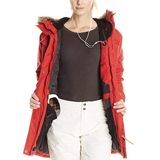
I own two of these jackets, the first of which I bought specifically to prepare for a trip to Iceland in February. Ultra warm, cozy, water-resistant, and not real fur!
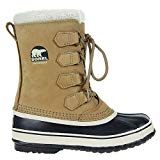
These winter boots are a good balance between warmth and not being gigantic. Waterproof and comfortable enough for short hikes.
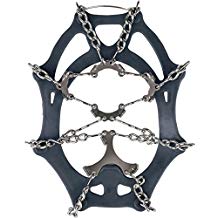
If you're going hiking in snowy or icy conditions, just buy these. You'll thank me later. My lifeline in Iceland.
What to do on an Iceland Winter Itinerary
If you’re looking for an Iceland itinerary that’s especially crafted for optimizing Winter experiences, check out my Iceland itinerary , which is meant for a 10 day roadtrip on the Ring Road. It includes stops for ice caves and covers the entire Ring Road. Apart from that, I’ve also written a dedicated article on where to stay in Iceland which is super useful because choosing accommodation in Iceland is NOT as simple as looking at the best photos! You want to consider things like access, road conditions, remoteness, on-site restaurants, and so on, especially when booking in Winter.
Iceland weather in Winter
My trip to Iceland was from the end of February to early March . I did a ton of research before deciding exactly when was the best time to go to Iceland. Here’s what I learned in the process:
- Iceland in November – Daylight dwindles quickly in November. On the first day of the month you can have about 8 hours of light, whereas on the last day only 5 hours. This is something you want to keep in mind in terms of how much driving in the dark you’ll be doing. Temperatures are around 4°C.
- Iceland in December – December is one of the darkest times of the year with the fewest hours of daylight. Temperatures around -1°C to 4°C (so, around or slightly above freezing).
- Iceland in January – Similar temperatures to December, between -1°C and 1°C. Again, don’t forget that what makes Iceland cold is the wind, not the temperature.
- Iceland in February – At the end of February, we noticed the days getting longer the more we were there. From the first day of February to the last, you gain 6 minutes of daylight every day . That means after a 10 day trip we’d gained an entire hour of daylight! Even though it’s one of the coldest months (-3 and +3°C) this makes it an ideal time for ice caves.
- Iceland in March – March is the time where you finally get more light during the day than darkness. You can still see Northern Lights and visit the ice caves in March. March also has some of the least tourists, as well as the time that whales start to return from their Summer migration. Temperatures still around -2 and +3°C.
Iceland Winter safety tips
The most important thing you need to know in order to drive safely around North Iceland is to get a car with GPS and 4-wheel drive, plus be sure to check the Iceland Road Network website every morning before you head out . This will tell you about road closures and any storm advisories. For the most part, Iceland’s Ring Road is extremely well-maintained but there is always the possibility that you need to drive before they’ve cleared it after a storm.
If you’re not used to driving on Winter roads, my advice would be NOT to learn how to do that in Iceland. We saw plenty of cars in ditches waiting to be pulled back onto the road!
Using GPS in Iceland
We only had one instance where we needed to change roads and we had to follow our GPS instead of Google Maps. By the way, don’t forget to download Google Maps in offline mode for your trip! You’ll still get GPS service in Iceland, even if you won’t have cellular service. That makes it totally feasible to keep looking things up when you’re on the go. Plus, if you happen to be coming from Europe, I found that my European cell plan worked perfectly in Iceland (at least, everywhere that had cell reception 😉).
6 safety tips for your Iceland winter road trip
- Only rent and drive a car if you’re an experienced Winter driver. We saw plenty of cars in ditches who probably couldn’t handle the ice, as I already mentioned!
- Get 4-wheel drive. It’s pretty standard on any car you’ll rent in Iceland in Winter.
- Get gravel protection for your car. There are MANY gravel roads in Iceland and you don’t want to get surpise fees at the end of your trip.
- Buy and hike with crampons. Last time I’m saying it in this article. Save your butt, buy a pair of crampons .
- Download offline maps for Google Maps. This can help you figure out what to do in the area even without cell reception. I also recommend picking up an Iceland travel guide book for more information available offline than Google Maps can give you.
- Get a car with GPS even though you have offline maps. Sometimes you’ll need to take alternative routes and we found that the car’s GPS understood those better than Google.
- Bring a phone battery charger for your car. Either double-check your car has USB ports or bring a charger.
- Respect closed roads. In Winter, many of the so-called F-roads are closed, that go into the country’s interior. With such poor cell service you do NOT want to get stranded in Iceland!
What do you want to see most in Iceland in Winter?
Let me know in the comments , I’d love to hear what you find the most special about this time of year in Iceland!

About the author
Hi there! I'm Monica, an American expat living in Germany for over six years and using every opportunity to explore the world from my homebase in Berlin. My goal is to capture my memories in photos and posts that show how easy it is to start from scratch and travel the world by working abroad.
Follow along on Instagram , Twitter , Bloglovin , & Facebook .
You might also like...
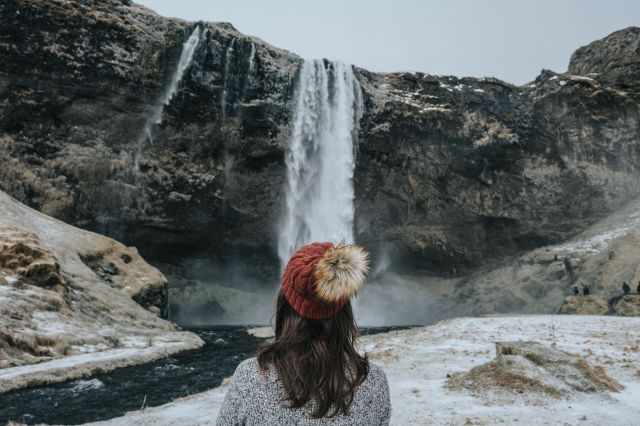
Iceland Ring Road Itinerary: An Efficient 10-day Roadtrip for 2024
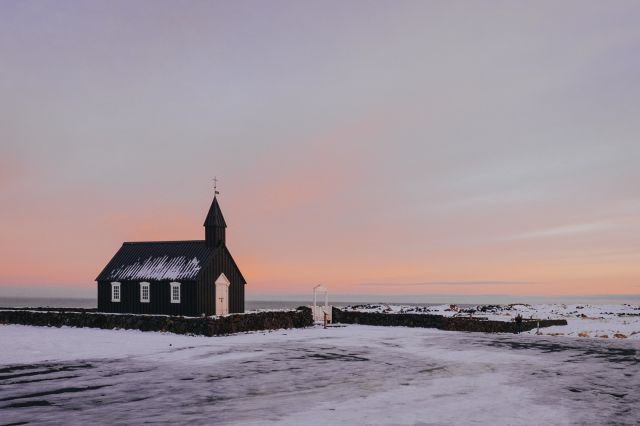
Best Places to Stay in Iceland Along the Ring Road
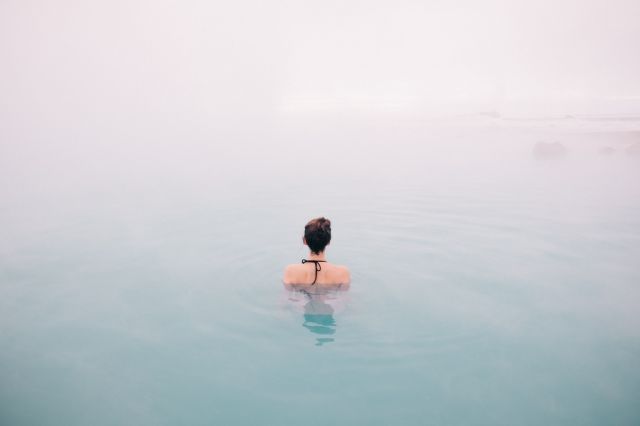
7 Reasons You Should Visit Iceland this Winter

Kate Abroad
Essential Guide to Iceland in winter: travel tips + itinerary for 2024
Is it a good idea to travel Iceland in winter? This is the question many people asked me when I proudly announced I’d be travelling to the near-arctic in early January, in the depths of the northern hemisphere’s winter.
Iceland isn’t known to be warm and sunny even in July so why would you go in the coldest darkest part of the year? Lots of reasons.
If you’re trying to decide when to visit Iceland, this guide 3 reasons why winter is a great time to visit Iceland and 3 reasons why you might not want to go then.

Iceland winter itinerary
If travelling to Iceland in winter, it’s easiest to base yourself in 1, or maximum, places and take day trips from there.
This way you have a warm home base to come back to after each day’s activities and aren’t dragging bags around in the snow.
More importantly, you don’t run the risk of being stranded in some small regional town if the roads are closed, as often happens in Iceland in winter.
With that in mind, here’s the recommended 7 day Iceland winter itinerary:
- Days 1-3: Reykjavik
- Day 4: Golden Circle
- Day 5: Glaciers
- Days 6-7: South Shore
This itinerary assumes you are based in Reykjavik for the first 5 days and in Vik for the last two. This makes booking accommodation nice and easy as you only need two places.
FAQ about visiting Iceland in winter
Winter in Iceland is from December to February (inclusive), similar to other Northern Hemisphere countries.
The average temperature in Iceland in winter is 0°C or 30°F
On average it snows 7 days per month with an average depth of 6cm
The average monthly rainfall is 60mm
No, it is dark most of the day in Iceland in winter but there are always a few hours of daylight, even if it’s not very bright.
The average hours of daylight per day in Iceland in winter si 4-7 hours, typically from around 10 am to 3 pm.
Related Post – Solo Traveller’s Guide to Iceland
The Pros – 3 reasons to travel Iceland in winter
1 you might see the northern lights.
The number one reason to go to Iceland in winter is to see the northern lights. Iceland is one of the few places in the world where you can glimpse the aurora borealis and visiting in winter gives you the best chance of seeing the lights. This is because Iceland has so many hours of darkness in winter (compared to so few in summer). There are also fewer people in Iceland in winter, reducing the already low levels of light pollution.
The combination of darkness plus lack of light pollution creates the perfect Northern Lights viewing environment. Numerous Northern Lights viewing tours run in Iceland every night in winter. Many of them are bus tours from Reykjavik. You can read about the options in my best Iceland day tours guide.

2 There are no crowds
Winter is undoubtedly the low season for tourism in Iceland. The crowds that flock to the island in summer have long since disappeared and Iceland is restored almost entirely to the locals.
This is a huge pro because by visiting Iceland in winter you can avoid much of the mass-market tourism and have a much more low-key authentic experience.
Think fewer people crowding in front of the waterfalls or blocking your views of the geysers.
Check out the pictures below to see how few other people were around when I visited some of the famous South Shore waterfalls in January.

I’m not going to lie, Iceland can be very touristy, so if that’s not your vibe, planning your visit for the off-season is a great idea.
3 It can be cheaper
Iceland is not a cheap destination. At all. Even a cup of coffee in Reykjavik is insanely expensive.
I can’t tell you the country is suddenly cheap in winter, but it’s certainly cheaper. The lower tourist numbers mean that tour companies and other operators offer discounts to fill spots.
You’ll also find low-season rates at hotels and sometimes even specials at restaurants.
It’s very difficult to do Iceland on a budget but your best chance of cutting costs is to go in the winter months. I would also recommend booking ahead to get the best deals.
You can read how much I spent on my Iceland trip in the last section of this post .
The Cons – 3 reasons not to travel Iceland in winter
1 there’s only five hours of daylight in winter.
Iceland is super close to the north pole. That means that, unlike equatorial regions where the daylight hours are consist year-round, the amount of daylight in Iceland varies significantly with the season.
While there is close to 24 hours of daylight in mid-summer, in winter in Iceland you will only have about 5 hours of daylight a day.
The sun doesn’t rise until 10-11am and it sets again around 3pm.
This can be an interesting phenomenon to experience for travellers from countries closer to the equator.
However, it leaves you with very little time to explore. Particularly because most of Iceland’s top attractions are natural wonders and there’s not much point in visiting a waterfall or geyser in the dark.
You won’t see much, and you definitely won’t get any good photos (have a look at the photos below, on the left is what I saw in January, the right is the same beach in full daylight in summer).

2 The famous Ring Road is often closed
Due to the occasionally extreme climate in Iceland in winter, many of the roads around the island can be closed. This includes the extremely popular Iceland ring road.
If a road trip around Iceland is on your bucket list, then winter is definitely not the time to do it.
While they don’t close all roads for all of winter every year, there are no guarantees which road will be open when you get there, and you could end up stuck partway around the island when snow or ice forces a road to close.
Given that most of us don’t have unlimited holiday time in which to wait out the weather, it’s best to avoid the winter months entirely if you want to do a road trip.

That said, you can still get to many of the best places on the ring road, including the Golden Circle and South Shore, in winter by doing day trips from Reykjavik. While it’s a less flexible option, you won’t miss out on Iceland’s top sights.
Related Post – Best day trips from Reykjavik
3 It’s really cold and quiet
The average temperature in Iceland in the winter months is 0 degrees. Or in other, words, close to freezing. It’s a long way from the t-shirt weather you get in a Sydney winter for sure.
Because most of Iceland’s towns and attractions are based around the coast, you can also get some vicious winds coming in off the ocean that adds to the chill.

If you’re someone who prefers warm temperate or beachy holidays winter is not the time to visit Iceland.
You would be better off planning your visit between June and August when the average temperature is around 10-15 degrees, and you’ll experience Iceland’s climate at its most moderate.
However, like any destination, it’s not about the weather, it’s about how you dress for it. Come prepared with enough warm layers and you can explore Iceland while staying cosy.
The Verdict- should you visit Iceland in winter?
My answer is yes. I did it and had an incredible experience.
Was it the same as visiting Iceland in summer? No.
Were there some things I missed out on? Maybe (honestly some of it wasn’t on my list anyway or wasn’t super accessible as a solo traveller in Iceland).
But there were also experiences I had that I wouldn’t have had had I visited in summer.
Happy travelling!
Kate is the founder of Kate Abroad. She has travelled to nearly 40 countries from Austria to Vanuatu, and lived in 3. She's on a mission to empower other Gen Zs and Millenials travel affordably by sharing helpful travel guides, stories and tips to over 200,000 readers.
Similar Posts

What is Frankfurt Famous For? 9 Top Reasons
If you’re considering a visit to Germany’s fifth biggest city, you might be wondering, what is Frankfurt famous for? Well, despite its reputation as a city of bankers, there are…
![iceland places to visit in winter 3 Days in Cannes Itinerary + Travel Guide [2024]](https://kateabroad.com/wp-content/uploads/2024/03/pexel-picture-300x200.jpg)
3 Days in Cannes Itinerary + Travel Guide [2024]
Wondering what to do with 3 days in Cannes? No worries, this Cannes 3 day itinerary has you covered. If you’ve landed on this guide, chances are you’re planning a…

Honest + Complete Contiki Ireland Tour Review
Wondering whether the it’s worth it to do a Contiki tour in Ireland? This Contiki Ireland review has all the information you need to decide. The Contiki Ireland tour is…

10 Best Places to Visit in East Iceland in 2024
If you’re doing a road trip of Iceland’s famous Ring Road from Reykjavik, then you might be looking for the best places to visit in east Iceland. You’re in the…

The best Iceland day trips from Reykjavik
Day tours are by far the easiest way to see Iceland. You can get picked up from Reykjavik, the capital city, and whisked away to the South Coast or Golden…

Essential Iceland Solo Travel Guide (2024)
If you’re planning a solo trip to Iceland and wondering what you need to know before you arrive then this Iceland solo travel guide has you covered! Solo travel in…
- Skip to main content
- Skip to primary sidebar
- Skip to footer

17 Top Things You Can Do in the Winter in Iceland in 2024
Jenna Gottlieb Last Updated: September 26, 2023
Winter is a great time to visit Iceland! The winter days may seem short, as there are just five hours of daylight around the solstice, but this is the time of year to see the northern lights! You can book exciting tours, chase auroras, and do all kinds of cool stuff. As a long-time resident of Iceland, trust my list of activities to try in the winter in Iceland to fall in love with this breathtaking country.
Pro Tip: It’s easier to organize your trip when you have all your resources in one place. Bookmark this post along with our Iceland Guide for more resources, the best restaurants , and where to stay in Reykjavík .
17 Amazing Things To See And Do In Iceland in Winter
The land of fire and ice has a lot of cool things to do in winter whether you’re looking to see the landscape or adventure on a snowmobile. You can take tours around the country, relax in geothermal pools, explore natural ice caves, visit remote towns, and soak in the local culture.
Hands down, the most popular thing to do in Iceland in the winter is to hunt for the northern lights. The elusive lights appear when the conditions align with solar activity and no cloud cover. There are also glaciers you can only explore in Iceland in the winter!
What You Have To Know About Traveling in Iceland in the Winter
You should know that Iceland in the winter is very different from the summer . In fact, the snowstorms are downright dangerous sometimes. There are areas that become inaccessible even to locals, so be sure you have a sturdy vehicle and strong winter driving skills. Otherwise, do as the locals and book a tour to that adventure activity, or use this list of my favorite things to do in winter in Iceland.
17. Fly to Akureyri and Explore Goðafoss Falls
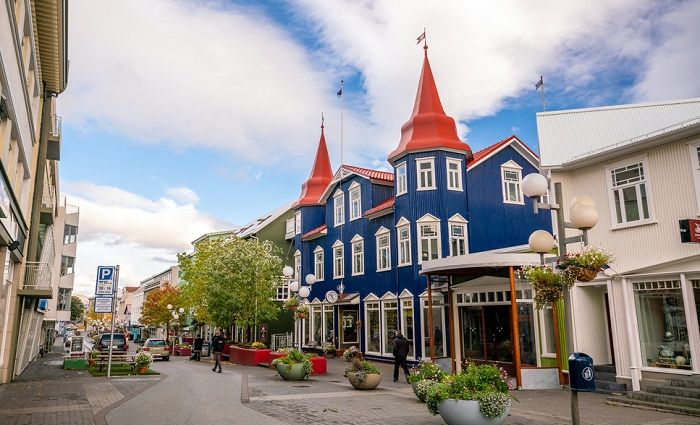
Sightseeing I Akureyri & Góðafoss I North Iceland
Akureyri is frequently referred to as Iceland’s “second city,” an amusing moniker given its small size of just 18,000 people. Yep, Iceland isn’t well populated. In the winter, many tourists choose Akureyri as their home base when exploring the north, opting to spend nights in the town while booking day tours to places like Mývatn and Húsavik.
One attraction you can´t miss in the north is Goðafoss, the waterfall of the gods, which is among the most beautiful falls in the country. Though it is not very tall, the cascade is divided into two horseshoe-shaped falls, making it unique among Icelandic waterfalls. It‘s my favorite to see as some of the falls can freeze during deep winter.
Location : Akureyri I Cost : Tours from $166
16. Walk Deep Inside A Glacier
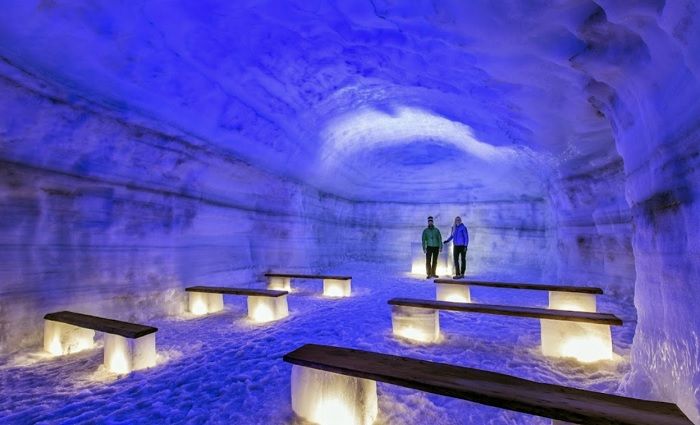
Ice Tunnel I Guided Tour I Langjökull (West)
Get up close and personal with the actual ice in Iceland! The Into the Glacier tour leads guests into the world‘s largest manmade ice cave on Langjökull glacier.
And what an adventure it is! A super truck will pick you up in the west Iceland town of Húsafell (or Reykjavík if you‘re not driving) for a stunning journey across Langjökull to the ice cave. If you’ve ever wanted incredible views of crevices and the chance to run your fingers along smooth ice walls, delve into the ice cave!
The walls are illuminated with LED lighting, and information about glaciers is posted throughout the tunnel. It’s not only a very cool experience (pun intended) but also very enlightening. I highly recommend doing this tour if you’re traveling with kids!
Location : Into the Glacier I Cost : Tours from $163
15. Ride Horses Across Iceland’s Distinctive Terrain
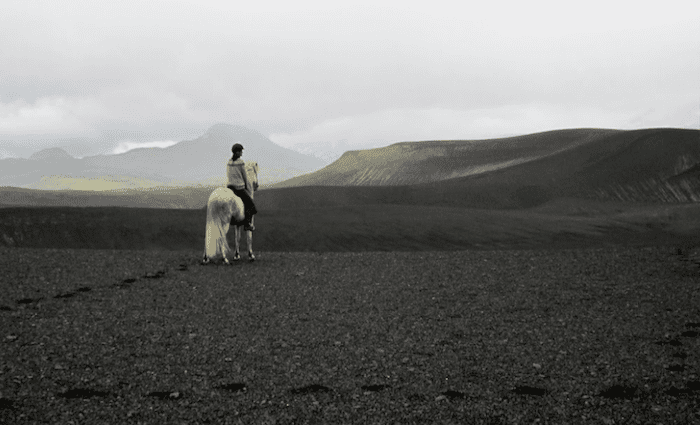
Horse Riding I Afternoon Outdoors I South Iceland (Hafnarfjörður)
Sure to take your breath away, heading out on Iceland’s iconic native horses is a fantastic way to explore the rugged landscape of the land of fire and ice. The horses are an adorably stocky breed but don‘t call them ponies—they‘re horses.
These iconic purebred horses are easy to spot, not just by their short stature but their fluffy manes and thick coats. The first members of the breed came over with the early settlers and are a celebrated part of the Icelandic culture and landscape.
Incredibly gentle, Icelandic horses are perfect for riders of every level, and tours are appropriate for all ages. They can be booked year-round, but there‘s nothing quite like riding Iceland’s native horse against a backdrop of waterfalls or lava fields in winter.
Location : Ishestar Horse Riding Center | Cost: Starts at $90
14. Attend Iceland Airwaves Music Festival
Music Festival I Early November I Reykjavík (Southwest)
Iceland Airwaves rocks! The annual music festival takes place every November across multiple venues in Reykjavík; Airwaves is the biggest music festival of the year, and locals love it. In fact, you’ll see several musical recommendations on our list of activities to try in Reyjkavik . Icelanders love their music.
The Airwaves festival showcases artists ranging from up-and-comers to headline-status musicians. You get everything from established international acts to Iceland‘s rich melting pot of domestic talent.
Past Icelandic performers include Björk, Daughters of Reykjavík, Vök, Hatari, and GusGus. The festival also attracts some of the biggest international acts, and in past years hosted Kraftwerk, Flaming Lips, Arlo Parks, and Nation of Language.
Location : Iceland Airwaves I Cost : Tickets from $125 (usually happens in November)
13. Stand Beneath (or Above) Skógafoss and Seljalandsfoss Waterfalls
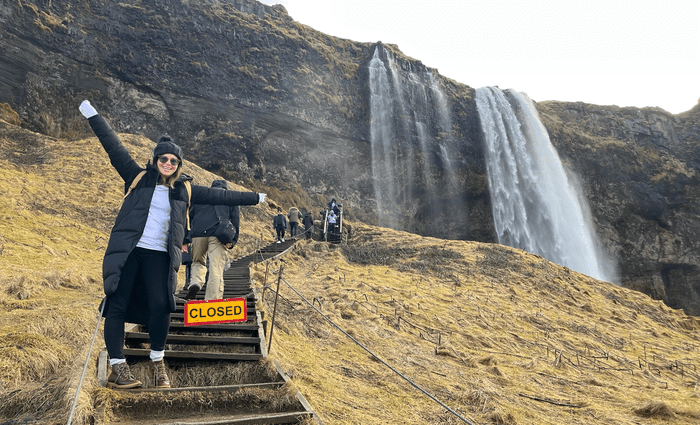
Breathtaking Nature I Guided Tour I South Iceland
After the Golden Circle, the South Coast is the most popular region in the south of Iceland. Here, you will see the gorgeous waterfalls Seljalandsfoss (pictured above) and Skógafoss. I actually like these just as much in the winter since the surrounding landscape has cool tones as opposed to the lush greens of summer.
While a tour is recommended, this is one area that you could opt to drive on your own. Make sure you are familiar with winter driving, have a sturdy SUV, and pay attention to weather reports.
Location: Seljalandsfoss waterfall | Skógafoss | Reynisfjara Beach | Cost : Tours from $187
12. Warm Up with a Hearty Icelandic Lamb Stew

Local Food I Guided Tour I Reykjavík (Southwest)
Are you curious about Icelandic cuisine? There’s no better way to become acquainted with Iceland’s food culture than on a Reykjavík food tour! A local guide will delight you with fun stories while enjoying the city’s landmarks like Tjörnin and Hallgrímskirkja. It’s the perfect way to get to know Reykjavík a little better than just exploring on your own!
This food tour visits local haunts (no tourist traps!), allowing guests to try Icelandic food staples like hearty lamb meat soup (pictured), as well as pastries, ice cream, and a pylsa from the famous Icelandic hot dog stand. We recommend showing up hungry for this tour!
Prefer to try other Icelandic food without a guided tour? No problem. Check out what foods we recommend trying to get to know Icelandic’s food culture.
Cost : Tours from $115
11. Go Snowmobiling on a Glacier
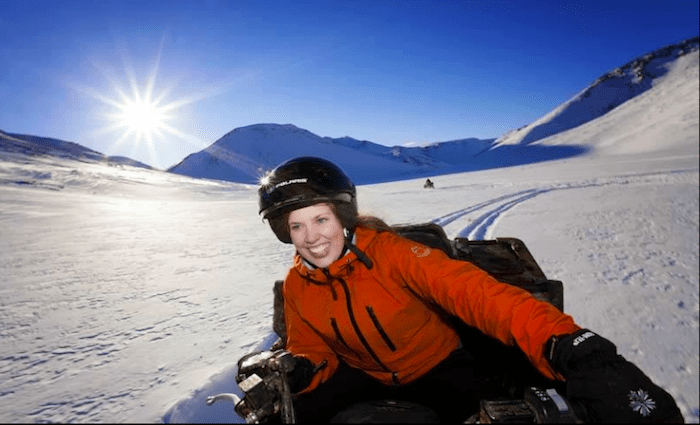
Snow Adventure I Guided Tour I Langjökull (West)
Hopping on a snowmobile and gliding along pristine ice on Langjökull glacier feels like a once-in-a-lifetime experience. It‘s an adventure you‘ll never forget. It‘s exhilarating to ride on the snow and icy slopes, with blue skies and the stark whiteness of the snow.
Tours pick you up in Reykjavík, transporting you to west Iceland on the second largest glacier on the island, Langjökull. A super truck takes you to base camp, where your adventure begins. If you are looking for a thrilling activity that still allows you to enjoy the landscape, this is it!
Pro Tip: Wear thermals, warm socks, gloves, a hat, a weatherproof top layer, and hiking or snow boots.
Cost : Tours from $210
10. Join In Reykjavík’s Epic Nightlife
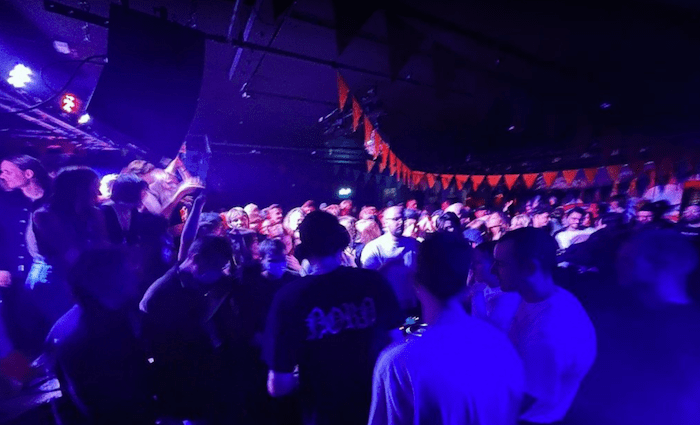
Local Culture I Bar Crawl I Reykjavík (Southwest)
Reykjavík may be a small capital city, but its nightlife is not something to miss. For such a small city, you can’t help but be impressed by the number of hot spots catering to different interests.
Laugavegur’s main drag is ground zero for the hottest bars in town. If you are up for dancing, Kiki Queer Bar is your spot. More interested in headbanging to some rock music? Check out Lemmy, Dillon, or Gaukurinn. If you want to catch a hot Reykjavík band performing live, see who’s playing at Húrra (pictured) or Mengi.
If a more refined or quiet evening night out is more your speed, I recommend the wine bar Port 9 or the cozy Luna Flórens. For cocktails, you can’t go wrong at Jungle Cocktail Bar and Slippbarinn for the expert mixologists on staff and the fun atmosphere.
Pro tip: Be prepared for a super late night out. The locals don’t venture out until around midnight!
Address : Kiki Queer Bar or Jungle Cocktail Bar or Húrra
9. Watch the Surf Crash on Reynisfjara Beach
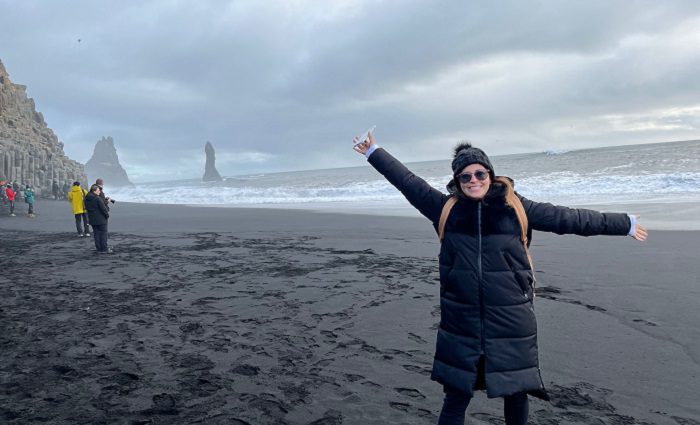
Must-Do Activity | Mythical Legends | Free
No tour of the south coast is complete without a stop at Reynisfjara , probably the most famous and most photographed black sand beach in Iceland. The contrast of the white waves crashing on the stark black sand and pebbles is beautiful, with towering basalt columns along the shore next to a small cave. It’s especially striking when there’s a fresh dusting of snow!
What else makes this a cool stop in the winter (no pun intended). The myth behind that towering column of rocks. It’s said that they were formed when two trolls we caught in the sunrise as they tried to pull their ship onto the shore. It makes for a fun story as you explore the beach.
Location: Reynisfjara Beach
8. Float Like an Iceberg at the Majestic Glacier Lagoon
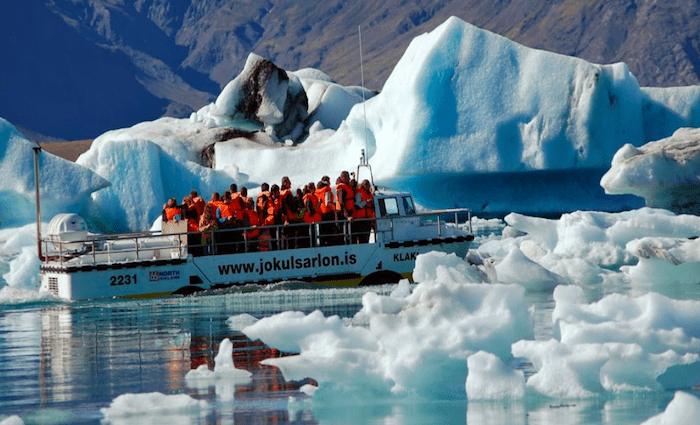
Icebergs I Guided Tour I Southeast Iceland | Open Seasonally
Jökulsárlón is where you will see huge chunks of ice floating in the water, and if you’re lucky, a curious seal or two. Take a 40-minute boat tour of the lagoon, which you should book in advance to get close to icebergs. (Only runs in spring and autumn into November) What I think is really cool? You get a chance to taste the ice!
And you’ll stop by the Diamond Beach, which is just next to Jökulsárlón. With its gigantic, ancient icebergs breaking off from the mighty Vatnajökull glacier, this glacial slice of Iceland is a sight you simply cannot miss.
The lagoon produces a feeling of incredible tranquility as the 1500-year-old ice silently drifts into the lake and slowly melts away. The lagoon covers 7 square miles and reaches more than 814 feet at its deepest point.
Location : Jökulsárlón I Cost : Tours from $45

7. See The Northern Lights Above Hallgrímskirkja
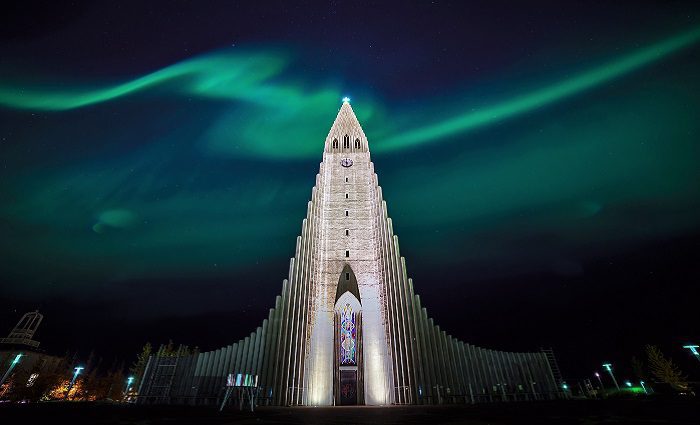
Architecture I City Center I Reykjavík (Southwest)
When you live in the land of fire and ice, you can expect the architecture to compete. Case in point: Hallgrímskirkja is one of the most photographed and visited sites in Reykjavík for excellent reasons.
And if you’re here in the winter, you’ll get what I think is the best view of all. With longer nights, you’ll have more time to find that perfect picture of Hallgrímskirkja with our stunning northern lights above it. I mean, just look at that photo! You can’t quite guarantee a shot like that in the summer, so winter is your best bet.
After admiring the exterior, head inside to see the gorgeous organ constructed in Germany, as well as beautiful stained glass windows. There are frequently held concerts ranging from choirs to organ performances, as well as mass. For many, the highlight of a trip to Hallgrímskirkja is a visit to the top of the tower, which has spectacular views of the city, especially under a coat of snow.
Location : Hallgrímstorg 1
6. Explore Gullfoss, Geysir, And Þingvellir On the Golden Circle
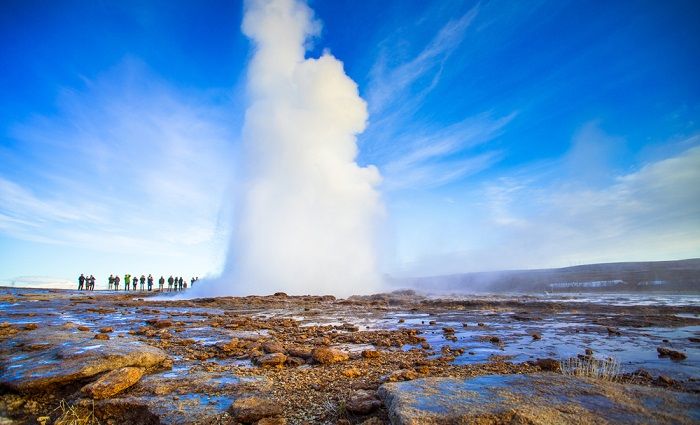
Golden Circle I Sightseeing I South Iceland
Want to know which tour locals would likely recommend for a taste of Iceland? It’s the Golden Circle. The tour will give you a slice of Icelandic history at Þingvellir, a view of Iceland’s gurgling geothermal activity at Geysir, and a look at a roaring, powerful waterfall at Gullfoss.
The sights are classically Icelandic and postcard-perfect in the summer, and, best of all, the route is typically driven in one day. If you get the chance, check out the Secret Lagoon and the tomato greenhouses and restaurant at Friðheimar, which are near the Golden Circle.
This is one of the other few routes that tourists could do on their own, but again, only if you’re comfortable with winter driving and rent a great SUV. Honestly, even us Icelanders book a tour sometimes just to avoid the hassle and because the guides really do know the best spots.
Location : Geysir | Gullfoss Waterfall | Þingvellir National Park | Cost: Tours start at $67
5. Channel Your Inner Viking While Drinking Mead from a Horn
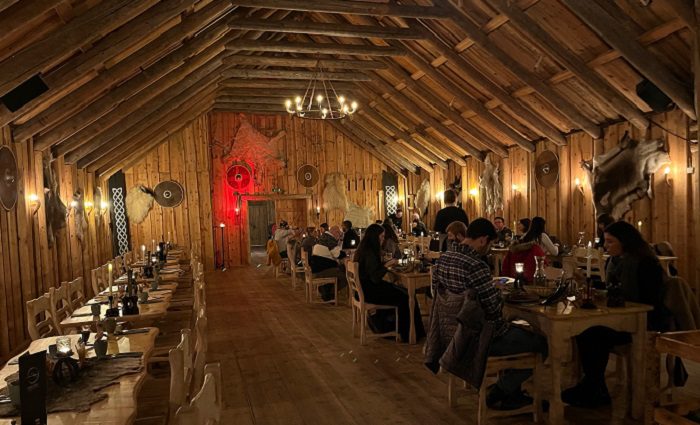
Authentic Viking Lodge I Rustic I Selfoss (Southwest)
When in Iceland, do as the ancestors did: drink from horn. Why? Because you can. Order mead with your meal and feel yourself become like a Viking as you drink from the horn of an animal.
Combined with the rustic decor inside this authentic Viking restaurant near the Golden Circle, you’ll definitely feel like you’ve stepped back in time. As for food, I loved the crab and seafood soup as well as the main dish Iceland is known for: lamb. There’s a reason it’s on our list of top foods to try !
Location: Efstaland, 801 Sveitarfélagið Ölfus
4. Celebrate New Year‘s at a Bonfire in Iceland
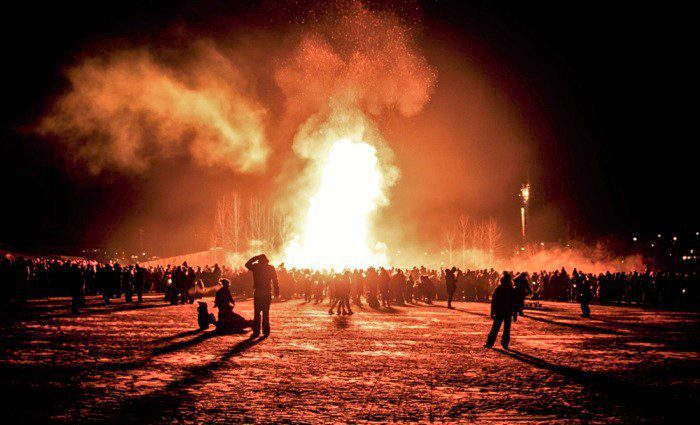
Fireworks I New Year‘s Eve I Reykjavík (Southwest)
New Year‘s Eve in Reykjavík is pretty epic. It‘s celebrated with a huge fireworks display and bonfires across the city. The bonfires are my favorite since that’s where Icelanders meet with their friends and family and sing together to ring in the new year. Join in!
In recent years, locals have created walking tours to help you experience New Year‘s Eve with the locals, taking you to bonfires, providing you with sparklers, and explaining the customs.
As midnight approaches, the fireworks begin, lighting up the skies across the city. I recommend walking over to Hallgrímskirkja to watch the display. It‘s a great time!
3. Wander Through the Inaccessible Crystal Blue Ice Cave
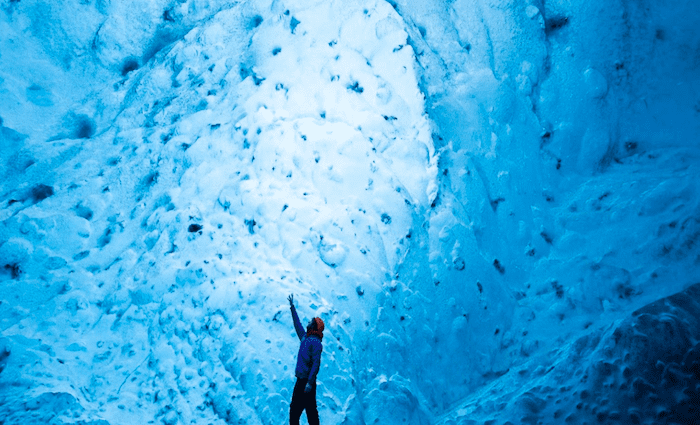
Ice Cave I Guided Tour I South or West Iceland
Natural ice caves form when the water underneath a glacier freezes, creating new ice tunnels every year. For that reason, natural ice caves, like the Crystal Blue Ice Cave, are only accessible during deep winter since they become unstable and melt in warmer temperatures.
The only way to see these caves is through a guided tour, as searching for them on your own is extremely dangerous. On a tour, you are equipped with the right gear and given a safety briefing before heading out with your trained guide.
Once inside an ice cave, you can see the different colors of the ice and run your fingers along the shapes and crevices. The light from outside can expose deep blue crystal hues, and it‘s incredible! This will truly become one of your most favorite winter memories of Iceland!
Cost : Tours from $141
2. Rejuvenate Yourself at the Heavenly Blue Lagoon

Geothermal Spa I Half-Day I Southwest (Reykjanes)
A trip to Iceland isn‘t complete without a visit to the Blue Lagoon. The geothermal waters are healing and rejuvenating against the backdrop of wintry lava fields.
Spending the afternoon or evening soaking in the stunningly relaxing pools here will be an unforgettable experience. Soak away that jet lag, the tired legs from your day tours, and the worries of work. You’ll probably even forget to use your phone for selfies with the obsidian rocks against the steaming blue waters. And that’s ok.
Nothing else will matter as you rejuvenate yourself in 100-degree Fahrenheit temperatures, soak in those mineral-rich muds, or book a full-body massage. You might even decide to stay the night and enjoy another day (or two) at this incredible lagoon.
Location, photos, and booking
1. Search the Skies for the Otherworldly Northern Lights
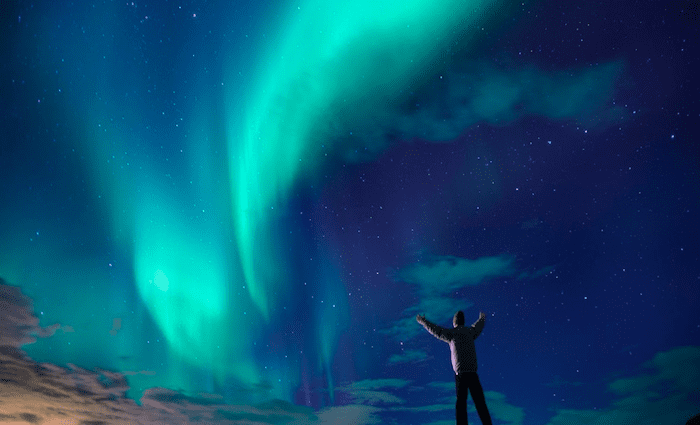
Aurora Borealis I Awe Inspiring I Across Iceland
You shouldn’t be surprised by our #1 thing to do in the winter in Iceland! It’s a favorite thing even for us locals. The aurora borealis is a natural phenomenon of glowing emissions of dancing, colorful lights easily visible on clear winter nights.
There‘s nothing quite like seeing the lights move and change colors in the sky, and it draws tourists from around the world who hope to get a vibrant glimpse. If the activity is powerful that night, you won‘t just see green displays but also hues of blue-violet, white, and even red colors! Iceland is an ideal place to see auroras, as locations above the Arctic Circle have the greatest frequency and intensity.
Northern lights season: The northern lights season is typically between October and March, with peak visibility from December to February. However, it varies and can change from year to year, so use our guide to the northern lights to plan your trip.
Pro Tip: Dress as warm as possible as it is very cold while you wait, then prepare to be amazed!
Cost: Tours from $53
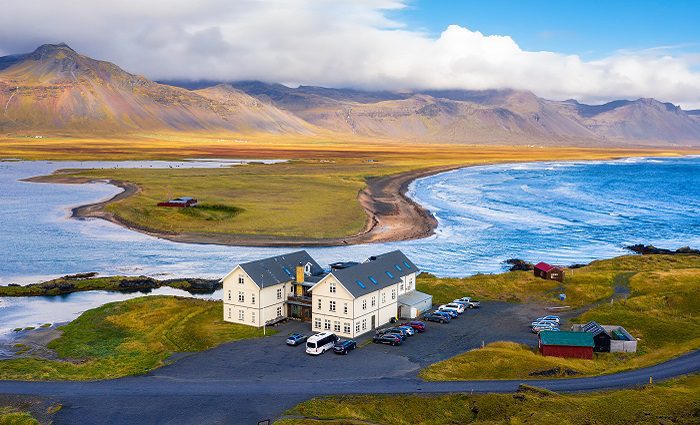
Where To Stay in Iceland
Planning to explore the breathtaking country of Iceland? Then use our guide to the best hotels and towns to stay in Iceland from Selfoss to Akureyri.
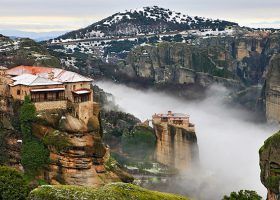
Reader Interactions
Leave a comment cancel reply.
Your email address will not be published. Required fields are marked *
- Travel Guide
- In The Press
POLICY & TERMS
- Cancellation Policy
- Terms & Conditions
- Privacy Policy


18 Things To Do & Places to Visit In Iceland

Where to Go in Iceland
What to see in iceland, top attractions in iceland, a map of 18 best things to do in iceland, 18. be inspired by snaefellsjokull glacier, 17. be amazed by the beautiful mount kirkjufell, 16. stroll on a black sand beach in south iceland, 15. discover why diamond beach is called diamond beach, 14. decide if reynisdrangar are basalt pillars or frozen trolls, 13. take in the sea-arch dyrholaey, 12. see the largest glacier in europe, 11. enjoy natural treatments at the blue lagoon, 10. go whale watching in husavik, 9. wildlife spotting in the hornstrandir nature reserve, 8. drive to the eastfjords.
- 7. Seek Out Wild Reindeer in Eastfjords
6. Explore the Lake Myvatn Geothermal Area
5. take a detour from the golden circle, 4. photograph the beautiful asbyrgi canyon, 3. hike through skaftafell nature reserve, 2. drive the golden circle, 1. chase the midnight sun or the northern lights, what should you avoid in iceland.
Find the top things to do in Iceland and read about where to go and what to see. Whether it's natural wonders, cultural experiences, or hidden gems, read on and learn all about Iceland's must-see attractions.
There are too many things to do in Iceland to keep count. It’s a realm of stark contrasts. It’s an island of striking landscapes where rivers run through deserts and molten lava erupts from ice.
It’s a country where the natural elements dance between the poles of fire and frost, with endless nights during the depth of winter and summers where the sun never sets.
It can be a little overwhelming to decide what to do and where to go in Iceland. Before you book your trip, there’s a lot to consider. Find the perfect place to stay on the largest selection of accommodations in Iceland and choose from a wide variety of tours you can be a part of. To enjoy everything Iceland has to offer, it's best to rent a car and the cheapest car rentals in Iceland can be found here .
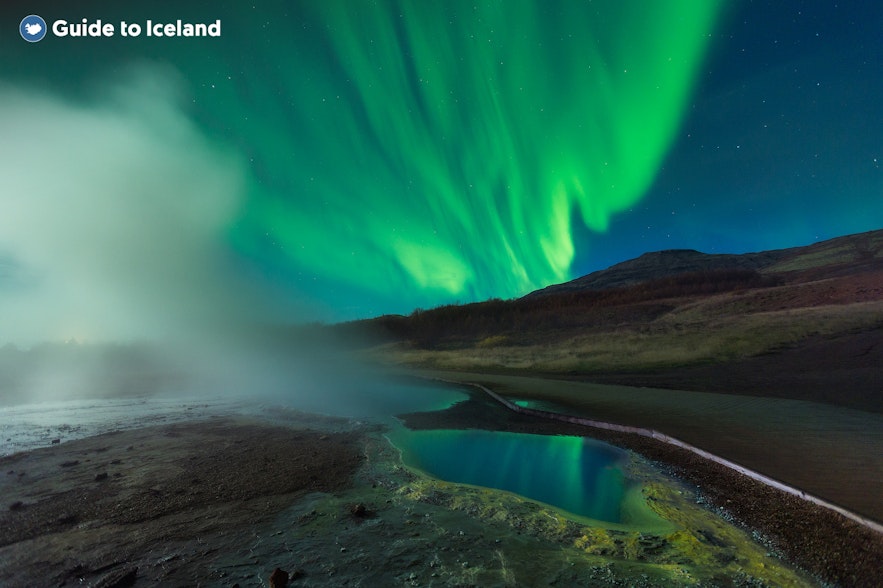
The first major location in Iceland that almost every traveler will experience is Reykjavik . You'll reach the island's only city after flying to Keflavik International Airport and crossing the volcanic Reykjanes Peninsula .
The country's capital has spectacular landmarks such as Hallgrimskirkja church , the Harpa Concert Hall , and the interactive museum at Perlan . It is also a brilliant place to experience nature, with whale and puffin watching tours in Faxafloi Bay and plenty of conservation reserves, such as Seltjarnarnes and Heidmork .
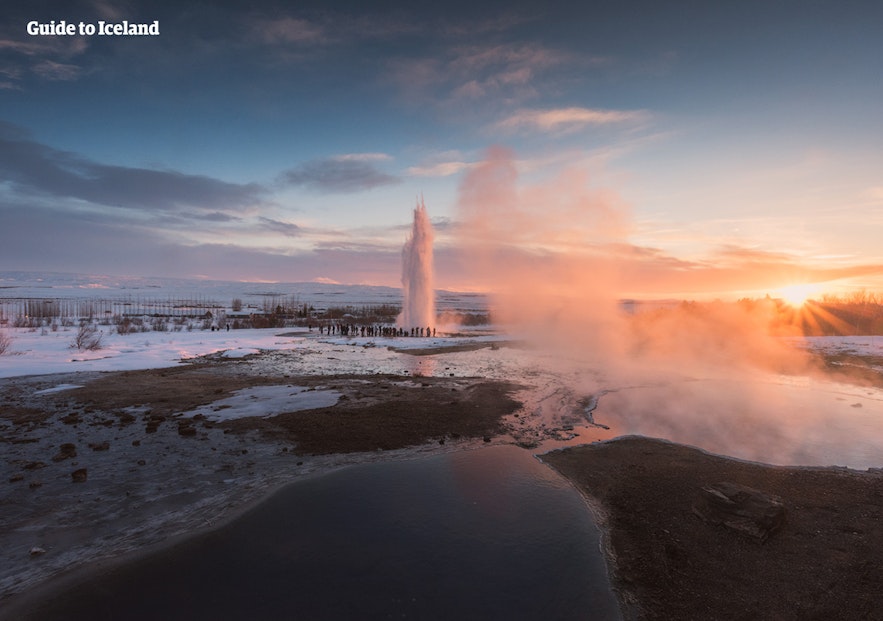
Along this trail, you'll discover a UNESCO World Heritage Site between two tectonic plates named Thingvellir National Park , the exploding hot springs of the Geysir Geothermal Area , and the breathtaking Gullfoss waterfall . You can also find lesser-known but equally beautiful attractions on longer explorations, such as the Kerid crater lake .
The South Coast sightseeing route is also easy to explore from Reykjavik. This route will expose you to the world-famous Skogafoss and Seljalandsfoss waterfalls, the black sand beach of Reynisfjara , and impressive volcanoes such as Eyjafjallajokull , which notably erupted in 2010.

The Ring Road encircles Iceland and provides a dream holiday for those eager to marvel over Iceland's diverse nature. Such a journey exposes you to the magical Eastfjords , the geothermal wonders of Lake Myvatn in North Iceland, and countless other attractions.
Top Ring Road Tours
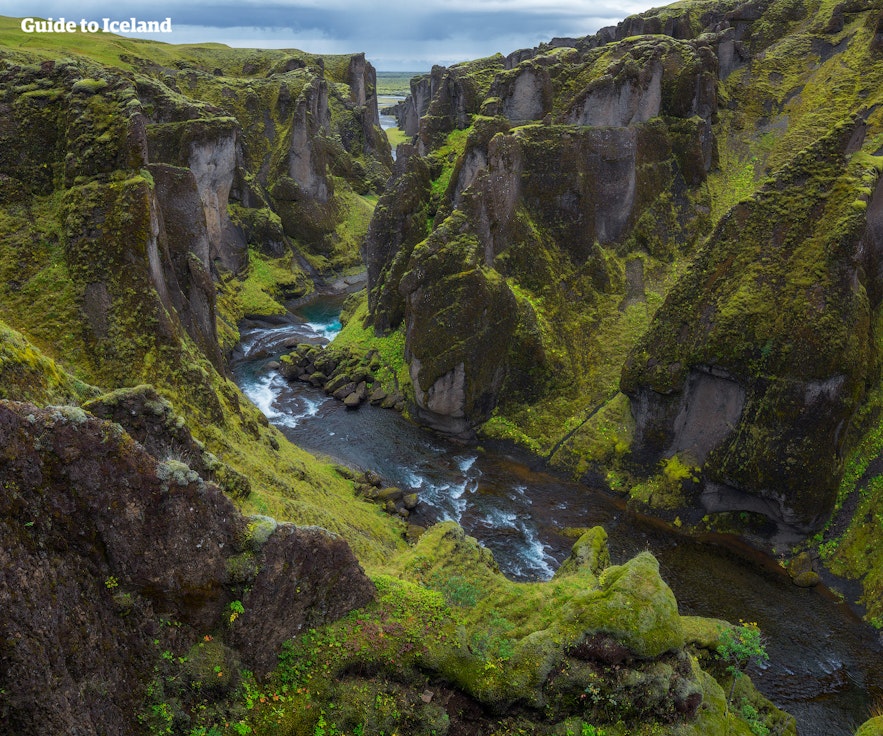
It's no secret that Iceland has some of the world's most unique and stunning nature, shaped by volcanoes and glaciers. The country's small population makes this even more special, as many of its landscapes and features remain untouched and pristine.
Most notable among Iceland's attractions are its incredible waterfalls, bubbling hot springs, gleaming ice caps, dramatic fjords, and lunar-like lava landscapes. Fascinating wildlife also populates the island, with whales and dolphins in the seas and abundant birdlife on the shores and further inland.

Speaking of summer, Iceland is also a great place to enjoy the magical light of the midnight sun. This phenomenon occurs from mid-May to mid-August, when the sun never sets, providing bright nights and plenty of extra hours for sightseeing and adventure.
Top Summer Tours & Packages
Iceland's winters are characterized by the phenomenon known as aurora borealis. This magical display appears between September and April when the sky is dark, clear, and the forecast is strong. Seeing the northern lights in Iceland is a top bucket list activity for almost all winter travelers.

Top Winter Tours & Packages in Iceland
3-day northern lights tour of iceland’s golden circle & south coast with ice caving & glacier hiking, 8-day guided northern lights winter tour of the complete ring road of iceland, scenic 4-day northern lights tour of vatnajokull ice cave, jokulsarlon & the south coast.
Many of the top attractions in Iceland have been mentioned in the paragraphs above. Reykjavik, the Golden Circle, the South Coast, and the northern lights are all among the most famous, but there are plenty more that travelers should make every effort to see.

- The Blue Lagoon : Iceland has many geothermal spas around the country, but the Blue Lagoon is the most popular. Located on the Reykjanes Peninsula near Keflavik International Airport, this attraction is a perfect place to begin or end a holiday in Iceland.
- The Snaefellsnes peninsula : Nicknamed' Iceland in miniature', this peninsula in West Iceland has everything that makes Iceland famous. Historic villages, abundant wildlife, dramatic mountains, waterfalls, and spectacular beaches can all be explored in a day. The Snaefellsjokull National Park, home to the Snaefellsjokull glacier , is particularly notable.
- The Westfjords : One of Iceland's most remote and sparsely populated regions, the Westfjords are named after their countless dramatic fjords, framed by enormous flat-topped mountains. Though off the Ring Road and largely only accessible in summer, this is an ideal location for travelers hoping to see untouched nature, tiny fishing villages, and plenty of animals, such as arctic foxes, whales, seals, and puffins.
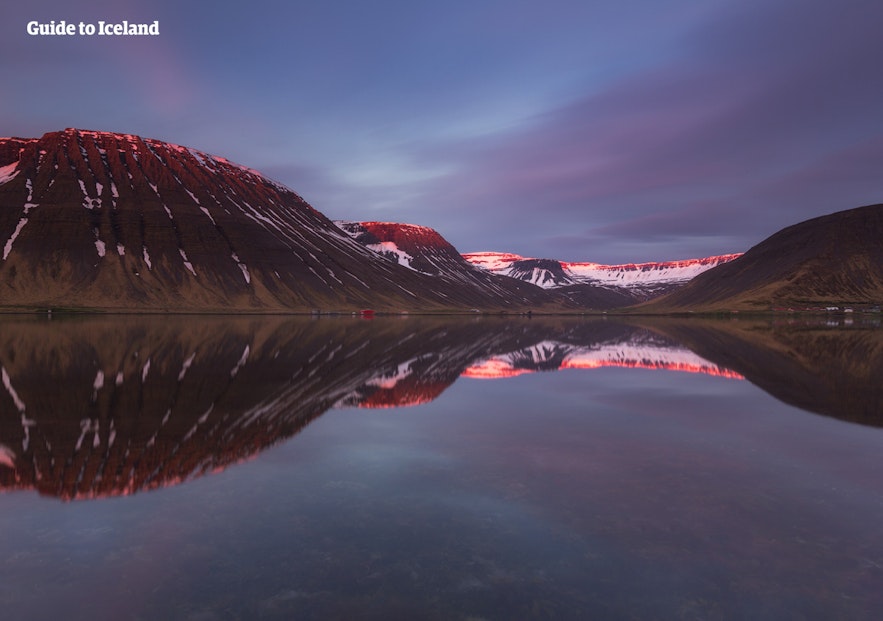
- North Iceland : This vast region is most famous for the Lake Myvatn area and the beautiful town of Akureyri . The Diamond Circle , however, is a fantastic sightseeing route that features the incredible canyon of Asbyrgi , the whale-watching town of Husavik , and the second-most powerful waterfall in Europe, Dettifoss . North Iceland also has countless hidden gems off the beaten track.
- The Eastfjords: Like the Westfjords, the Eastfjords have many beautiful bays, dramatic mountains, and tiny villages. Unlike the Westfjords, however, this area is on the Ring Road and accessible year-round. It is also the only place where you can see wild reindeer in Iceland.
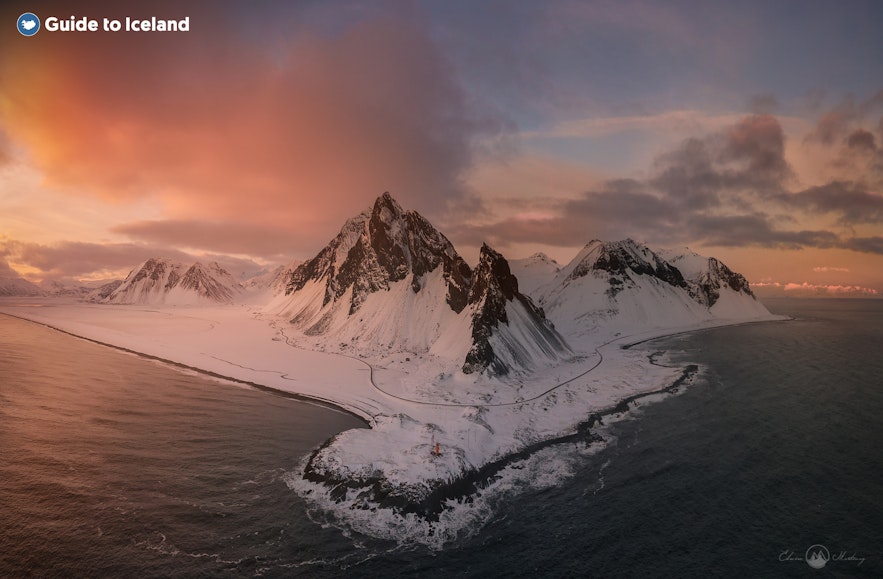
- Vatnajokull National Park : Iceland's greatest national park is centered around the largest ice cap in Europe, the Vatnajokull glacier. Though you can access many of its attractions from the east and north, the most popular are in the south. These include the iceberg-filled Jokulsarlon glacier lagoon and the breathtaking Skaftafell Nature Reserve.
- The Highlands : An untouched, uninhabited region defined by volcanoes, hot springs, and glaciers, Iceland's highlands are a fantastic place for adventurers. Hiking is particularly popular here, particularly along the Laugavegur trail . This route connects the volcanic Landmannalaugar Nature Reserve with the dramatic Thorsmork Valley and can be crossed in four to six days.
Your average sightseeing guide of Iceland is probably the size of a dictionary. There are so many unique Iceland attractions and landscapes that fitting all of them into a holiday may seem like an impossible task. So, we’ve made a map of must-see places in Iceland below for you to reference:
You might notice that there are only 17 attractions on the map, but that’s because number 18 is not restricted to a location!
To optimize your time in Iceland, we recommend you check out these best self-drive travel plans in Iceland .
Popular self-drive tours
10-day self-drive tour of the complete ring road of iceland with top attractions & snaefellsnes, best 1-week summer self-drive tour of the ring road of iceland & golden circle, best 7-day northern lights self drive tour through south iceland to jokulsarlon ice cave.
If you don’t want to drive, you can book Iceland vacation packages from Keflavik International Airport or Reykjavik, which will take you to the best surrounding sites in fun, small-group, guided tours.
Top Vacation Packages in Iceland
Whether you’ve decided to self-drive around Iceland or take a tour, we’ve rounded up, not only the top 10 things to do in Iceland but the top 18. This includes the must-see places, things to do and see in Iceland, and what you should avoid.
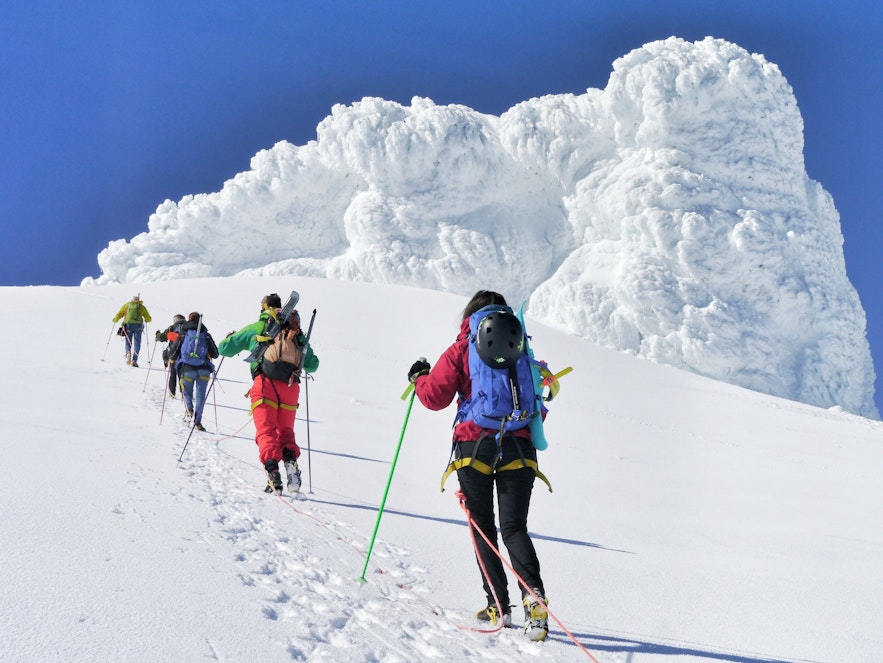
If you want to see Iceland’s diverse landscapes and features, all you need to do is plan a day trip to the Snaefellsnes peninsula.
The Snaefellsnes peninsula has been nicknamed 'Iceland in Miniature' due to the sheer variety of landscapes, you can see on the peninsula. There’s so much to see and do there that you may want to read our ultimate guide to the Snaefellsnes peninsula .
But its crown jewel is the Snaefellsjokull glacier. It’s a twin-peaked glacier that sits over a volcano on the peninsula’s tip, surrounded by jagged lava fields and a dramatic coastline on three sides. You can see it from some of the area’s other top attractions, such as the all-but-abandoned hamlet of Budir and the Londrangar sea stacks.
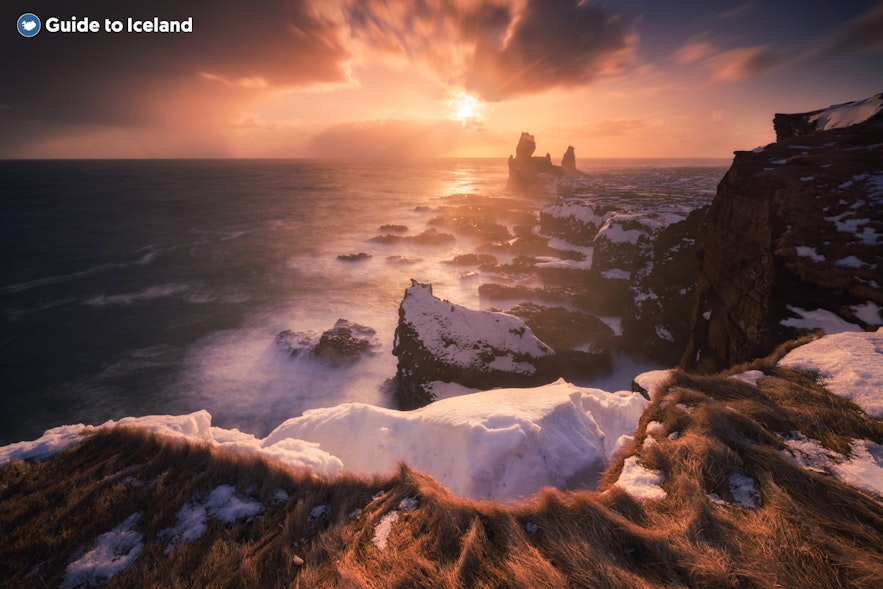
The glacier has such a special place in Icelanders’ hearts that they declared it a National Park in 2001. It shares this status with only two other sites in the entire country (both featured on this list).
Many art pieces, particularly literature, have been inspired by the Snaefellsjokull glacier. The most famous is Jules Verne’s classic science fiction novel A Journey to the Center of the Earth from 1864. If you’re wondering what to see in Iceland, the Snaefellsjokull glacier is a great choice.
On a clear day, you can see it all the way from Reykjavik across Faxafloi Bay, but there’s no comparison to seeing the glacier up close.
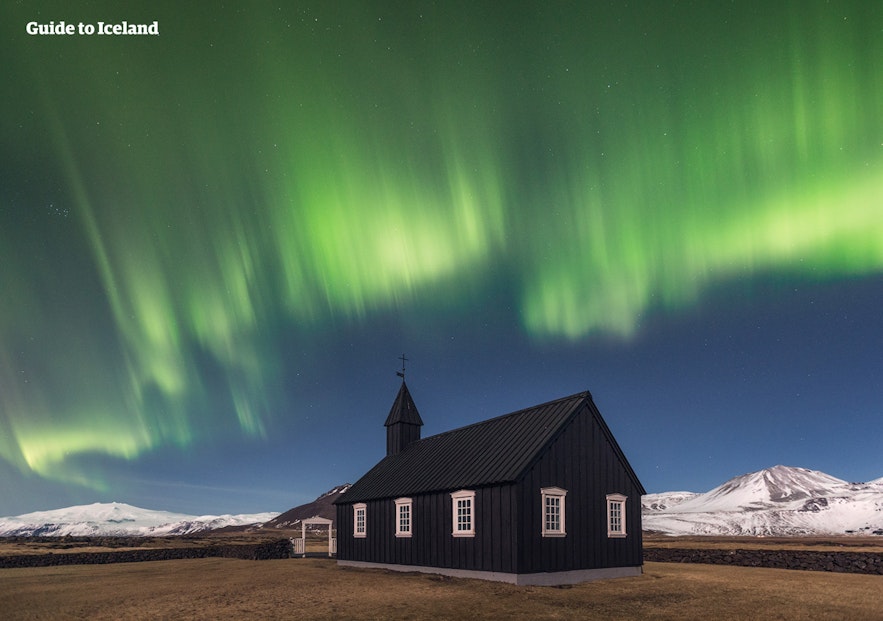
It’s possible to drive to the glacier and back within a day, but you will probably want to spend more time there. It’s one of Iceland’s must-see attractions included in many self-drive tours, such as a six-day winter self-drive tour of Iceland’s Golden Circle & Snaefellsnes because you need to spend more than a day there!
Top Snaefellsnes Tours
There are plenty of Snaefellsnes tours and packages to choose from, including ones that take you on a snowcat ride on the glacier’s icy surface .
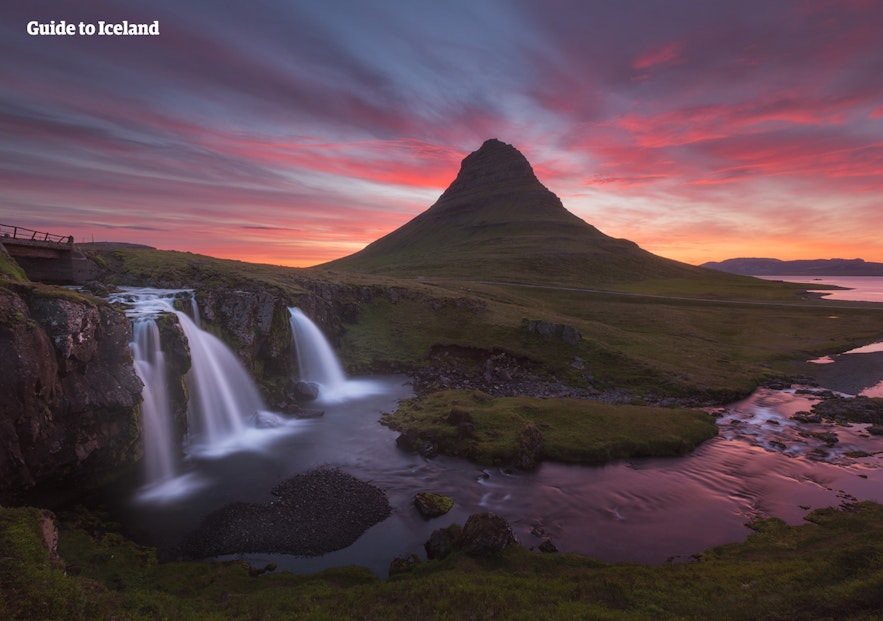
Of all the spectacular places to see in Iceland, Kirkjufell mountain is one of the most impressive. Kirkjufell is one of the most photographed mountains in Iceland. You might also recognize it as the Arrowhead Mountain north of The Wall in the Game of Thrones TV series.
Kirkjufell mountain translates to Church Mountain and is a popular destination for self-drive tours. The water in front of the mountain makes it even more scenic. It produces either a mirror image or becomes a perfect white blanket of ice and snow in the winter.
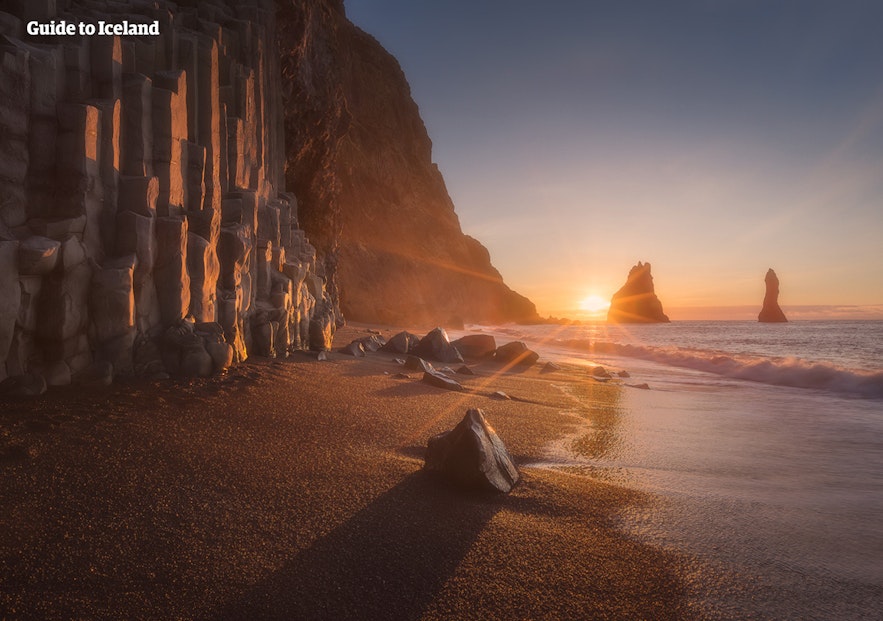
Iceland’s South Coast is extremely popular among travelers. It’s a region everyone should consider when deciding what to do in Iceland.
Iceland’s glaciers and coastal erosion have left the vast majority of its coastline jagged, with fjords defining the West, North, and East. However, much of the South Coast is vulnerable to glacial flooding, which has flattened the rocks into black sand.
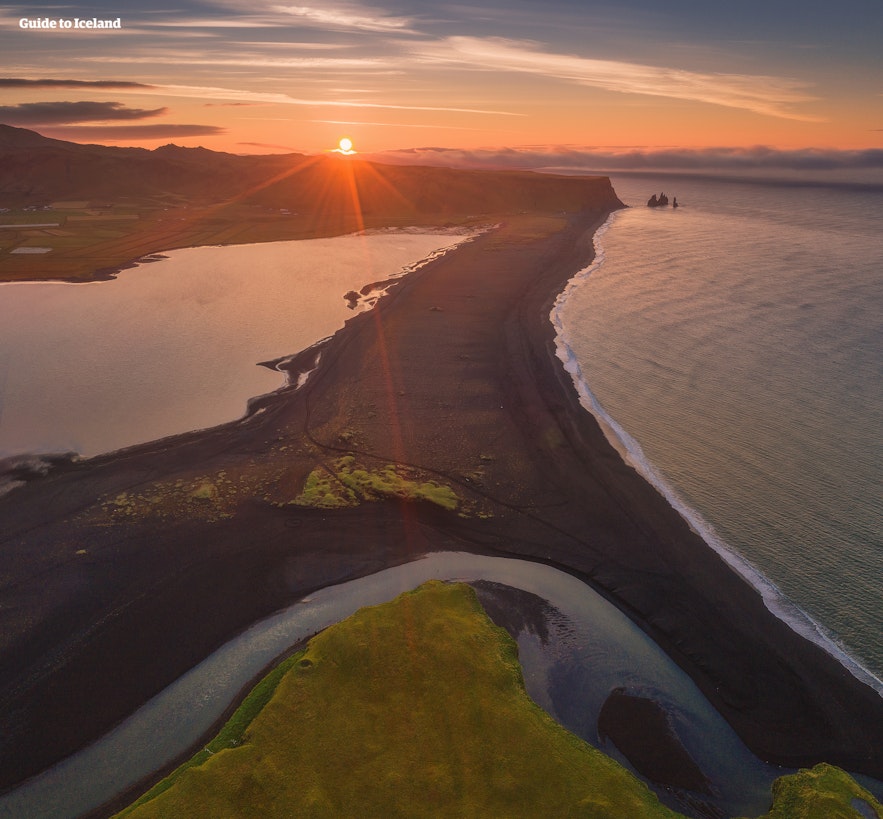
If you decide to take a tour of the South Coast of Iceland , be sure to explore the black sand beaches along the coastline.
The most famous of these black sand beaches is Reynisfjara, near the village of Vik . Like many of the most beautiful places in Iceland, Reynisfjara beach’s beauty comes from its stark and haunting landscapes.
The black sand beaches might be some of the best things to see in Iceland, but swimming in them is forbidden. The sea is dangerous because of cold water temperatures and strong currents. Reynisfjara is especially risky because of the sneaker waves that unexpectedly surge upon the shore.
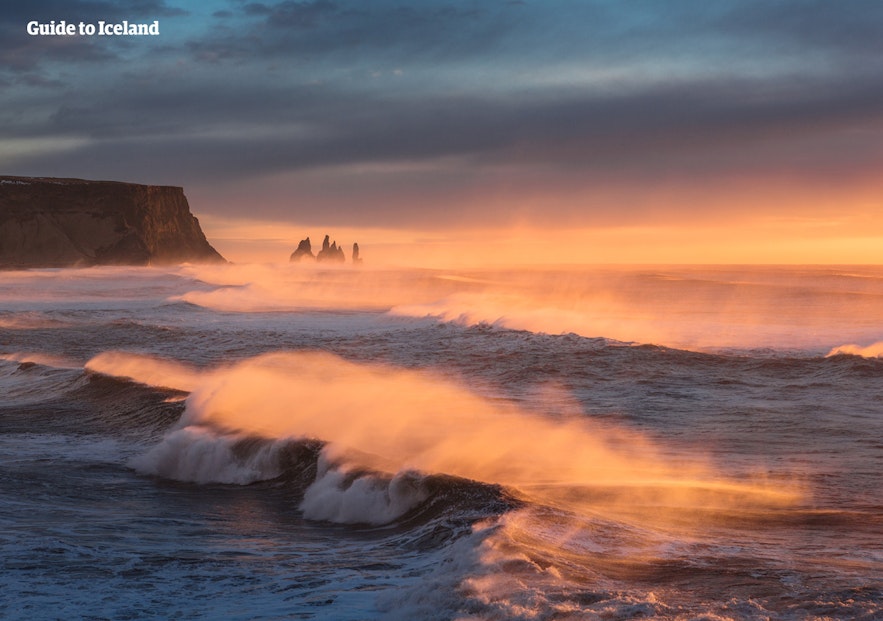
You should stay at least 67 to 100 feet (20 to 30 meters) from the surf at all times and take any safety advice provided at attractions seriously.
Top South Coast Tours
Best ice cave tour in vatnajokull glacier starting from jokulsarlon glacier lagoon, 2 day ice cave tour with south coast waterfalls & jokulsarlon glacier lagoon.
Reynisfjara is not the only beach on the South Coast worthy of note. Further east is ‘the crown jewel of Iceland’s nature,’ the Jokulsarlon Glacier Lagoon, beside Diamond Beach .
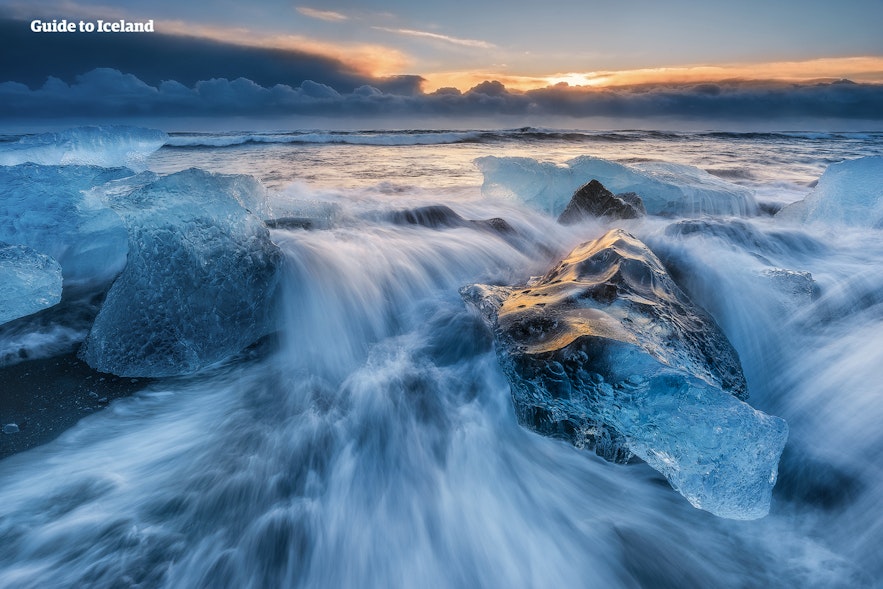
The lagoon is full of icebergs that slowly make their way toward the ocean after breaking from a glacial tongue year-round. When they reach the sea, the waves push them onto the beach, and the result is mesmerizing.
The blue of the ice and the white of the surf contrast with the black sand and make Diamond Beach exceptionally beautiful and one of Iceland’s best places to visit.
Add the colors of the northern lights or the dramatic hues of the midnight sun, and you have a view that looks like a fantasy novelist created it.
As if that wasn’t enough, sometimes you can also spot seals playing in the lagoon and out at sea.

The mighty waves of South Iceland have carved two basalt pillars called Reynisdrangar . They’re near Vik and were featured in Game of Thrones as Eastwatch-by-the-Sea.
Like many of Iceland’s most striking rock formations, some say these pillars are trolls frozen in the morning sun's light. They face Reynisfjall mountain , where you can find Iceland’s famous black basalt hexagonal columns.
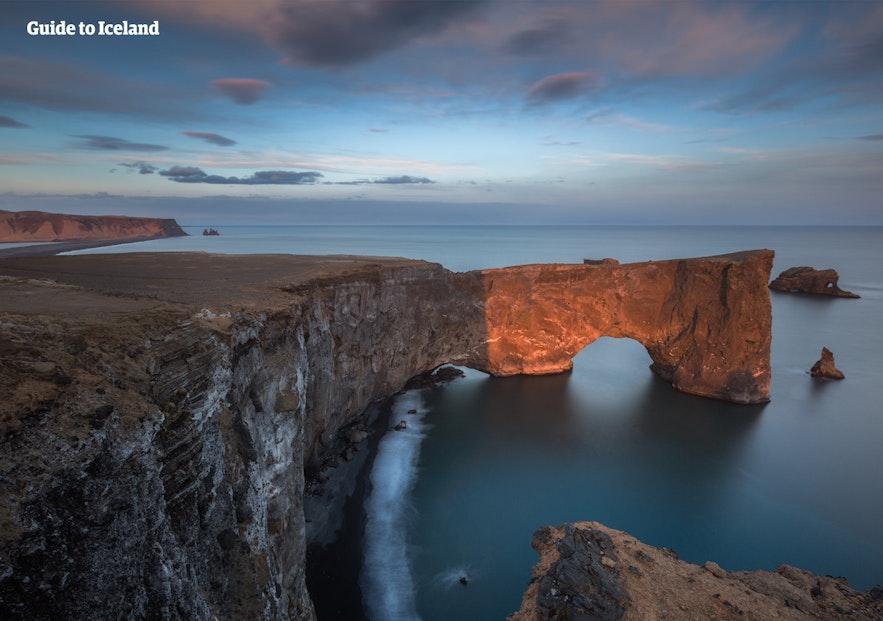
In walking distance of Reynisfjara is the magnificent sea arch of Dyrholaey . From its peak, visitors can see incredible views of the surrounding area, and nesting puffins cover the arch in summer. Dyrholaey is just one of the many top places to see puffins in Iceland .
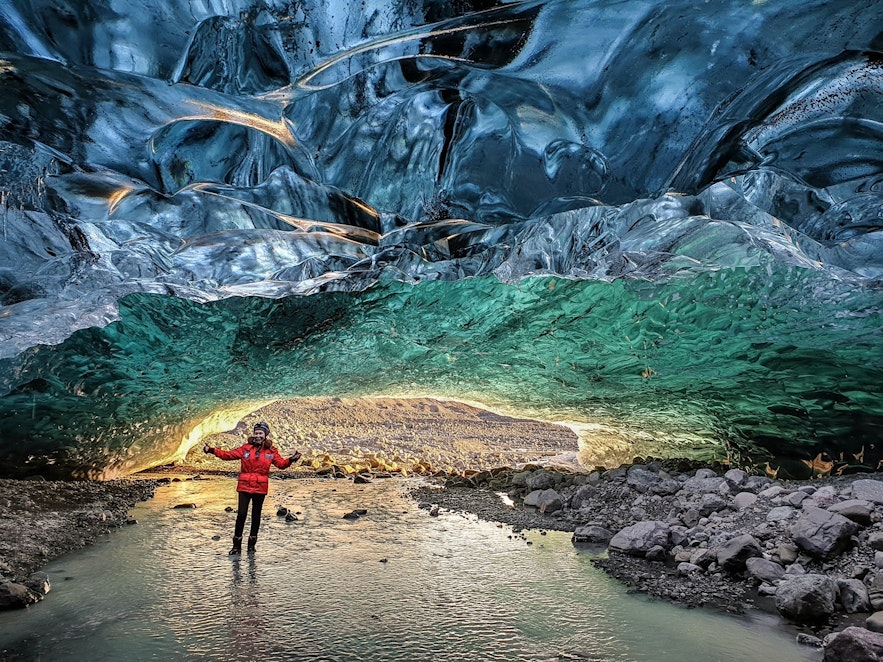
One of the best places to visit in Iceland is the Vatnajokull glacier, the largest glacier in Europe. It makes up 8% of Iceland’s landmass with countless stunning ice caves , each a marvelous feat of nature.
Under the ice are at least three active volcanoes and the tallest peak in Iceland. Vatnajokull glacier also feeds countless rivers and outlet glaciers. It’s featured in Games of Thrones and two James Bond movies.
Top Glacier Tours
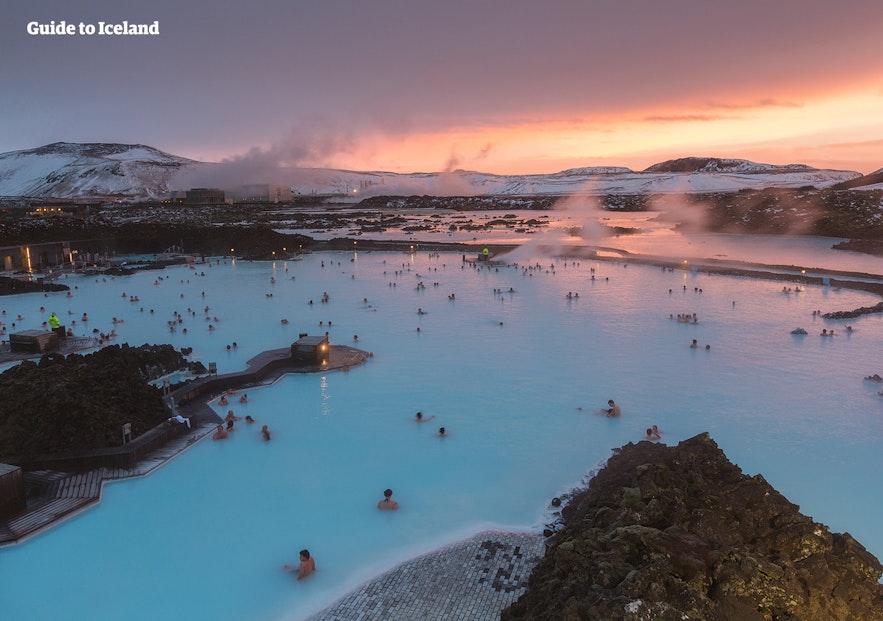
The Blue Lagoon is the country’s most visited geothermal spa and perhaps the most popular attraction in Iceland. The water here is an opaque, milky blue, unlike anything found elsewhere on earth.
The hot pool is rich in minerals and thriving with good bacteria. Silica masks are available for all guests, too. Both the water and masks have given the lagoon a reputation for healing.
The Blue Lagoon sits within the volcanic Reykjanes peninsula’s incredible nature, which is known for its stark and haunting landscapes.
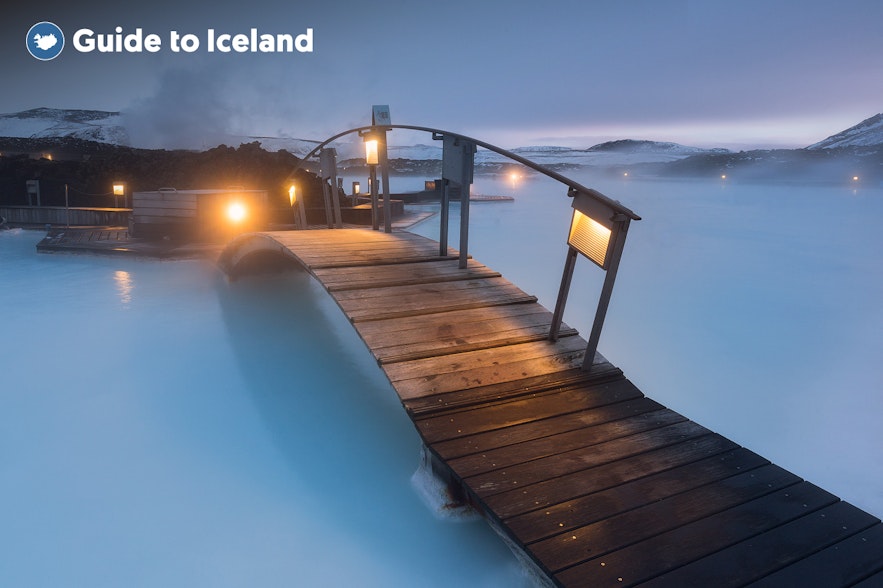
The spa is surrounded by lava fields coated in grey moss. When seen through a veil of steam, the scene is otherworldly.
A trip here to relax and rejuvenate at the start or end of your journey is perfect. Those looking for something even more luxurious may want to consider some of the private treatments available.
Some treatments available at the Blue Lagoon include in-water massages and natural beauty treatments tailored to your skin. The latter use rare algae and minerals with specific procedures for those with skin conditions, such as psoriasis.
The lagoon is just 14 miles (22 kilometers) from Keflavik International Airport and 31 miles (49 kilometers) from Reykjavik’s city center. Conveniently, there are affordable airport transfers to the Blue Lagoon.
Top Blue Lagoon Tours
Please note that the Blue Lagoon is a top-rated Iceland attraction, therefore, it's best to book your admission ticket in advance.

There are over twenty species of whales, dolphins, and porpoises in Iceland’s waters, with many cities offering boat tours .
Whale-watching is a common activity in ports such as Reykjavik and Akureyri, and in regions such as the Westfjords, you can catch sight of whales from shore. But one of the best places in Iceland to whale watch is the small northern town of Husavik.
Husavik, nicknamed ‘the whale-watching capital of Europe,’ sits by Skjalfandi Bay . The area is teeming with sea life in the summer. You can spot harbor porpoises, white-beaked dolphins, and humpback whales almost every day.
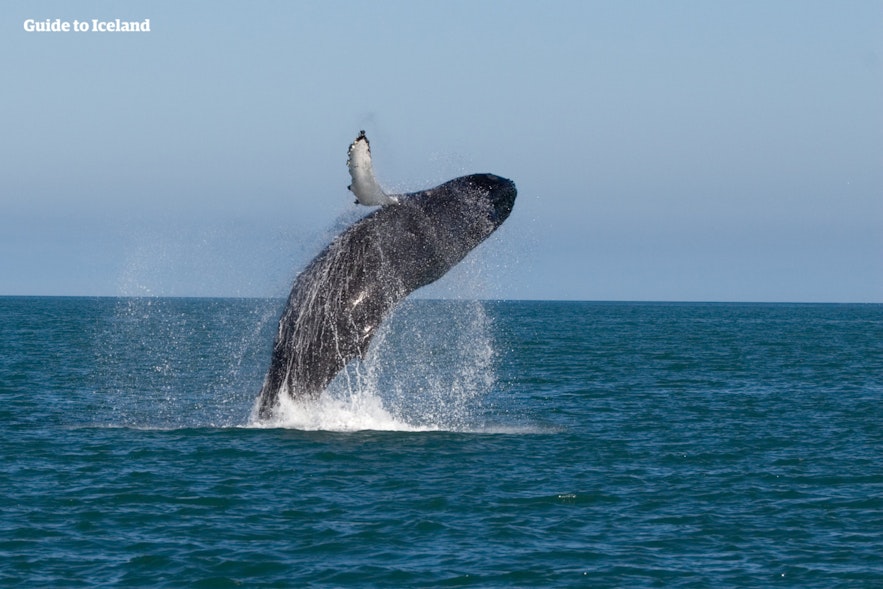
Occasionally, lucky guests may see more unusual species such as orcas, blue whales, fin whales, and even rare narwhals.
Top Whale Watching & Puffin Tours
Summer is also the nesting season for many migratory bird species in Iceland, most notably the puffin.
You can spot these birds on whale-watching tours from Reykjavik, Akureyri, and Husavik. There are even tours that combine puffin and whale watching from Husavik .
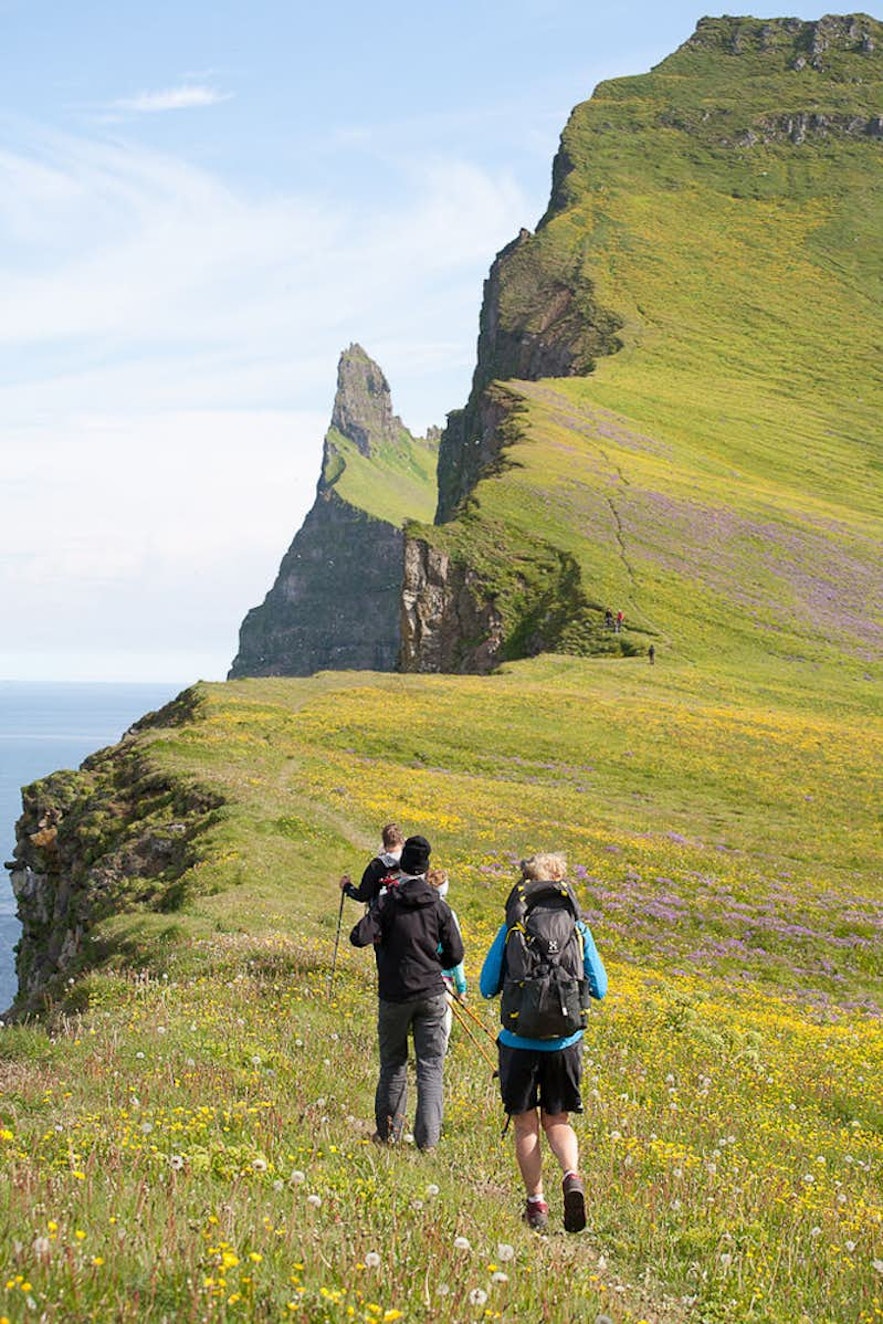
Intertwined with the Sagas and inhabited until the early 20th century, the northernmost part of the Westfjords is called Hornstrandir . Abandoned due to its remoteness and lack of industry, one might think this place doesn’t belong on a list of what to do in Iceland.
But it has recently found new life as an incredibly well-preserved nature reserve.
There’s so much wildlife in this area of Iceland that it’s one of the best places to go in Iceland for wildlife lovers and photographers. This wild land is the least populated part of the country outside the Highlands and is best known for its non-human residents.
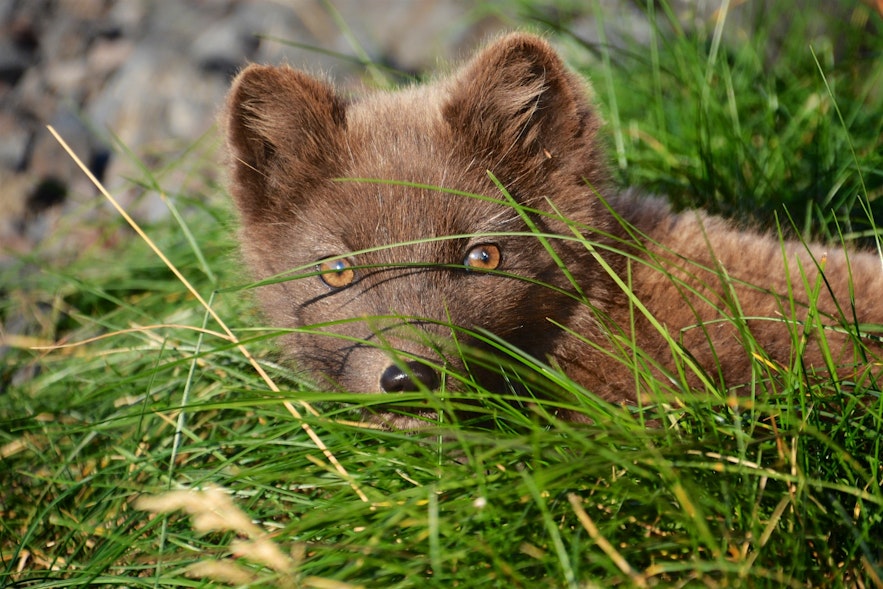
The magnificent cliffs rise to 1,752 feet (534 meters) above sea level and are home to tens of thousands of seabirds. You have a high chance of spotting Iceland’s only native land mammal in the overgrown fields, the Arctic fox.
Top Westfjords Tours
The animals in this region have no problem with humans getting close to them. While feeding wild animals is heavily discouraged, the fearless foxes here will happily eat out of the palm of your hand.
You can reach the Hornstrandir area by ferries from Isafjordur and the Strandir district. It’s also possible to book tours of the Westfjords , taking the hassle out of the experience.
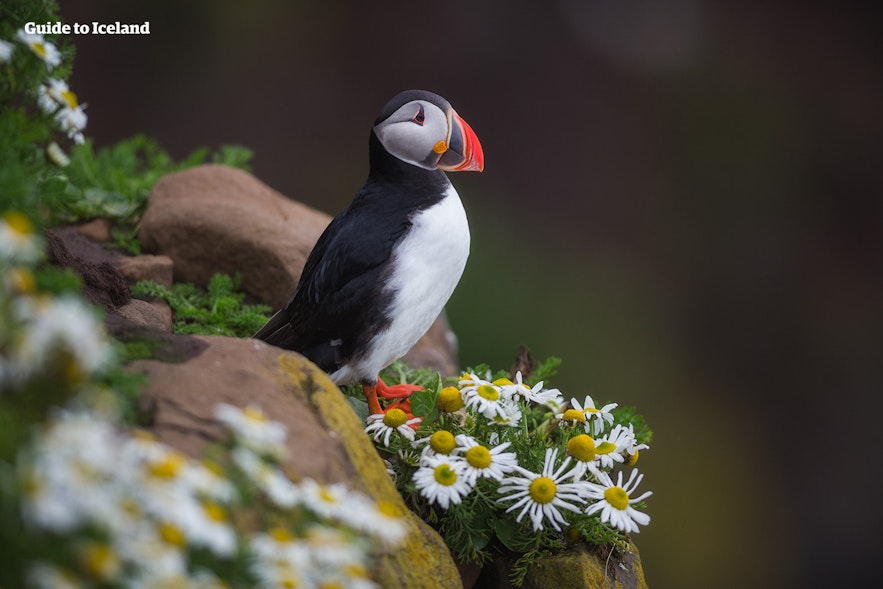
Where should you visit in Iceland if you like remote, off-the-beaten-path things to see and do? Aside from Hornstrandir, the Eastfjords are sparsely populated and mark the country’s farthest point from Reykjavik.
Only those driving the full ring road or who have booked a vacation package around the country are likely to see them. However, those who visit often return, saying it was their favorite part of the country.
This remote corner of Iceland is far from crowds of travelers, providing the tranquillity many seek on their trip to the island. Renting a car is necessary to reach this remote region of Iceland, so you can explore it at your own pace.
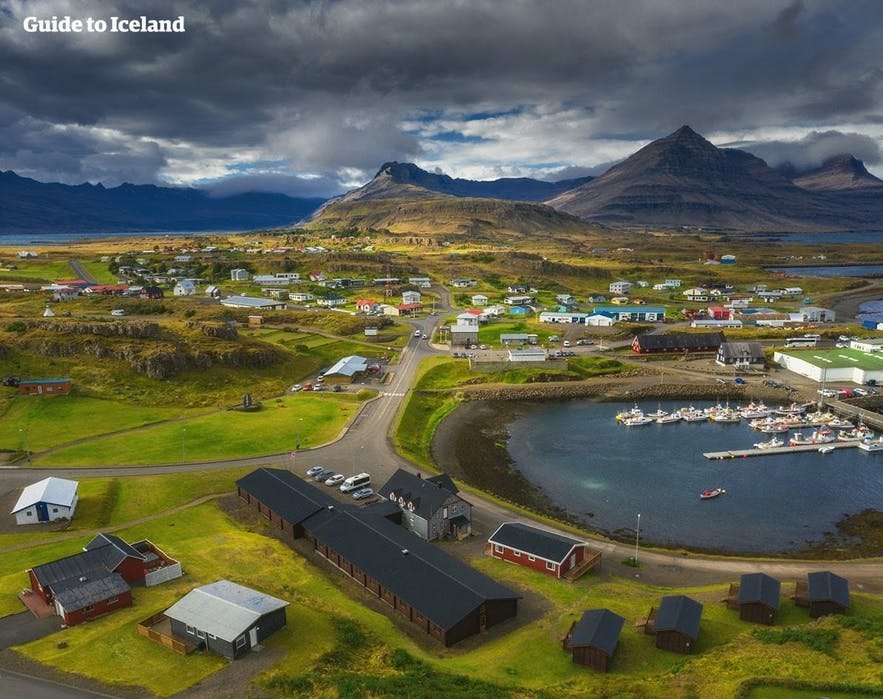
Driving up and down high mountain passes and along dramatic cliff edges, you’ll see magnificent seascapes and incredible views of Vatnajokull National Park and its enormous central glacier.
Despite its remoteness, the East has several settlements such as Djupivogur , Seydisfjordur , and Egilsstadir , where you can find services such as gas, food, and comfortable accommodations. These traditional towns and villages are seated within incredible natural surroundings.
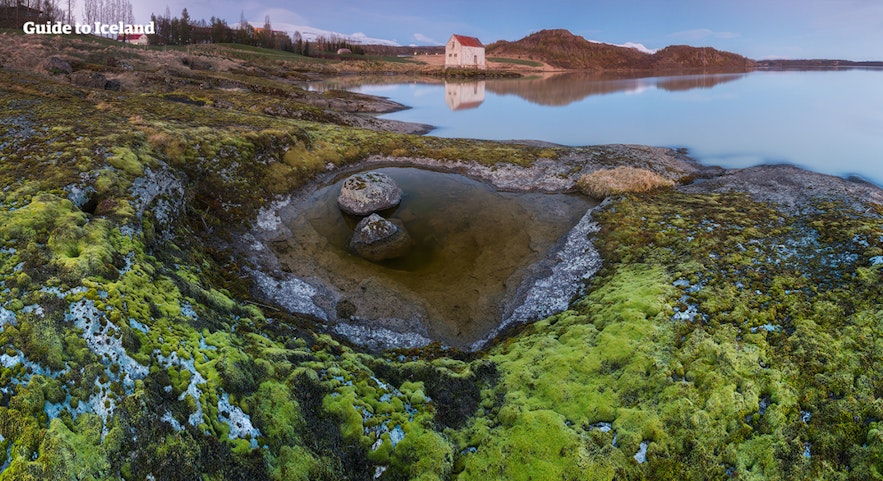
Seydisfjordur is spectacular, nestled deep within a fjord with sheer cliffs and magnificent ocean views. Many of East Iceland’s top attractions are in the area, such as Husey and Borgafjordur Eystri .
Top Eastfjords Tours
7. seek out wild reindeer in eastfjords .
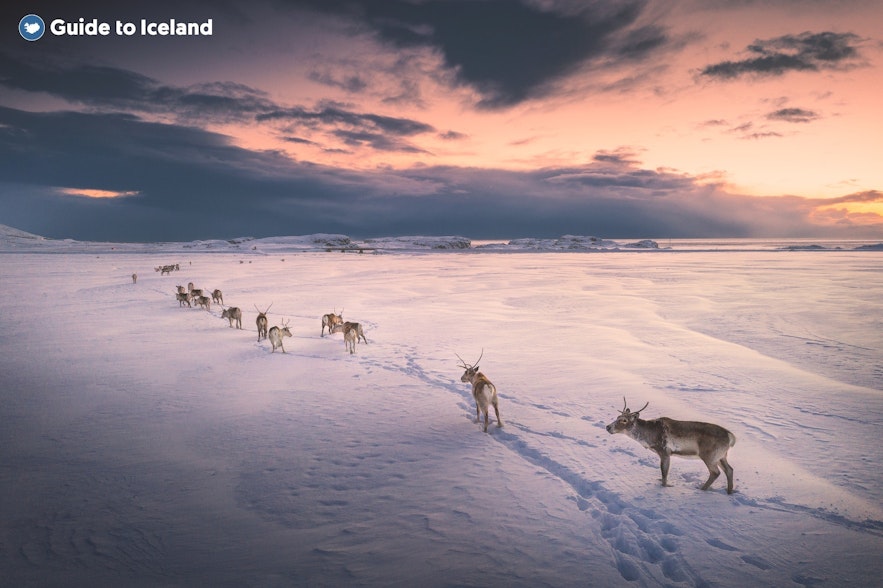
As you drive through the Eastfjords, keep a keen eye out for the local wildlife. The waters are fertile and filled with marine life, and numerous sea birds fly in the skies above. The Eastfjords are also the only region in the country where you can see reindeer roaming free.
One reason why they aren’t on most lists of Iceland’s things to see might be because reindeer aren’t native to Iceland. A royal decree introduced them in the 18th century from Norway and Denmark, but only those in the Eastfjords survived.
The best place to spot them is at the fjord near the town Seydisfjordur or on a super jeep wild reindeer experience tour.

Forty-nine miles (78.8 kilometers) east of the ‘Capital of North Iceland,’ Akureyri, is a geological and geothermal wonderland called the Lake Myvatn area.
A series of catastrophic eruptions formed these lakes over two millennia ago. The area now boasts a wealth of hidden gems you can reach by taking a tour of Myvatn .
The lakes themselves are beautiful in their formation and the life that flourishes within them.
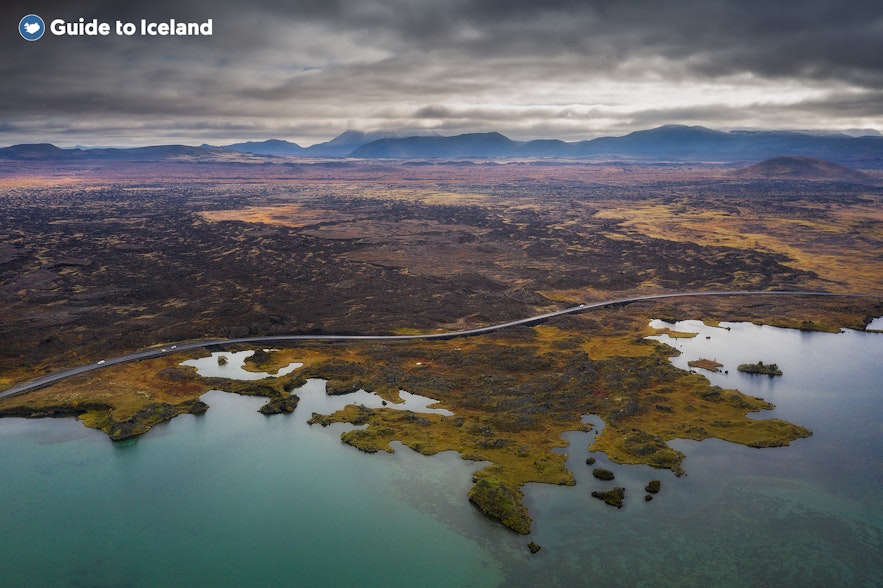
Dozens of bird species flock to the waters in summer, and those interested in flora should look out for moss balls, which form in a few other places around the world.
But the geology that surrounds Myvatn lake is perhaps even more spectacular. Perfectly formed pseudo-volcanic craters line many banks. You can walk up to and around them and discover the secrets of Iceland’s volcanism.

Dimmuborgir , meanwhile, is a field of lava so dramatic it’s often called the Black Fortress. In this lava field, hidden in a cave, is the increasingly famous Grjotagja hot spring .
Though you cannot bathe in this water due to its ever-changing temperature. Many scenes of the TV series Game of Thrones were shot in Iceland , and this cave was a shooting location for one of the franchise’s most famous love scenes featuring Jon Snow and Ygritte.

However, those who want to take a dip in geothermal waters need not look far. The Myvatn Nature Baths are perfect for unwinding when traveling through the region.
Top Myvatn Tours
Visitors to the Myvatn lake area will find many other fascinating sites just a short drive away.
For example, Myvatn lake is close to Namaskard Pass , where you can discover seething fumaroles and bubbling mud pits on a stark mountain plateau.
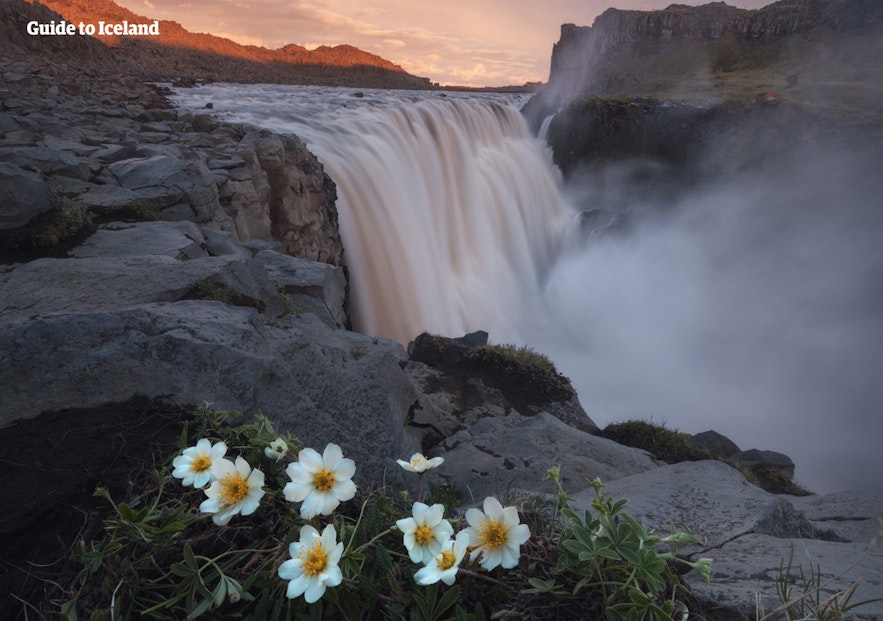
It’s also close to some incredible waterfalls, notably Dettifoss, the most powerful waterfall in Europe.
The most popular short road trip in Iceland is, without a doubt, the famous Golden Circle. However, if you want to add a little zest to your self-drive Golden Circle tour , there are also several top things to do in Iceland that require just a slight detour from the route.
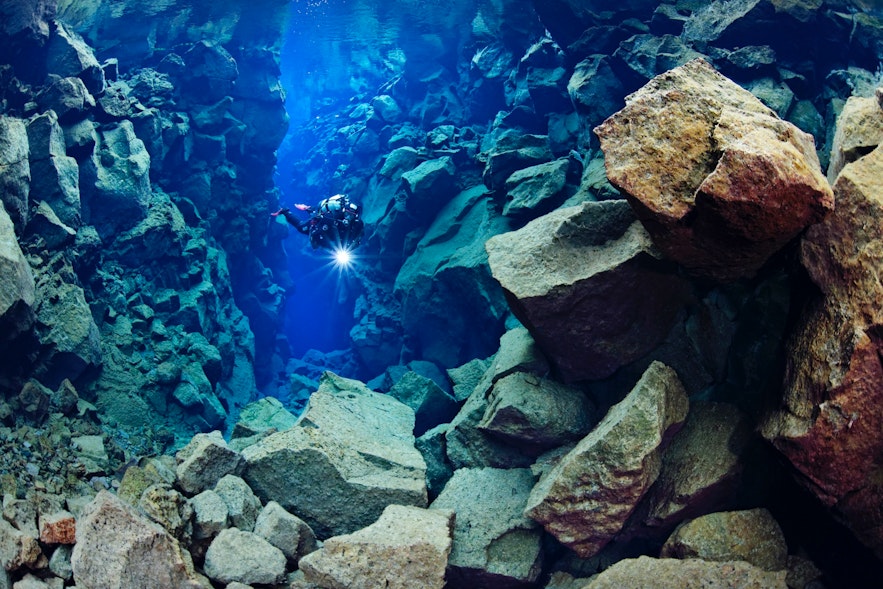
Due to these sites’ popularity and the fact it only takes half a day to get around them, many tour operators offer additional fun activities to the Golden Circle .
Thrill-seekers can snorkel in the Silfra rift or join a cold water diving tour (if qualified) in Thingvellir’s freshwater springs, Silfra rift , for some of the best underwater sights in the world.
The adventurous can add a snowmobiling trip , which departs from the Gullfoss waterfall and takes you onto the surface of the mighty Langjokull glacier .
Top Snorkeling Tours
Unforgettable drysuit snorkeling in silfra with underwater photos & transfer from reykjavik, snorkeling tour between continents in silfra with free underwater photos & snacks, meet on location 30 minute snorkeling tour in the crystal waters of silfra.
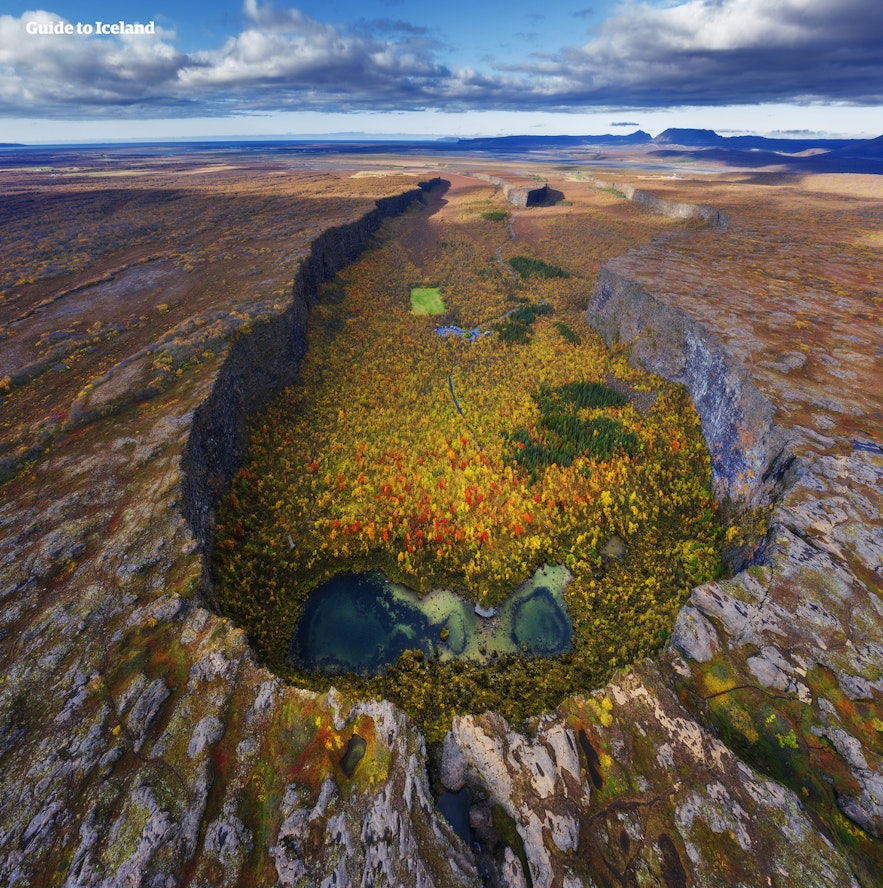
In Northeast Iceland, just off the beaten track, is a natural feature so intricately formed that legend has it that the canyon was created as a result of divine intervention.
According to the myth, the horseshoe canyon of Asbyrgi was formed when one of the hoofs of Odin’s eight-legged Icelandic horse came in contact with the ground. This is a must-see in Iceland if you’re interested in Norse mythology.
Top Photo Tours
The cliffs surrounding it and the plateau that rises from the center allow for some of the country’s most dramatic views and photographs.
The valley is also beautiful from within, filled with thickets of birch, willow, fir, larch, and pine. Indeed, it’s so rich with vegetation that it’s hard to imagine this location is actually in Iceland.
It’s no surprise that many myths about Iceland’s hidden people (elves) originate from here.
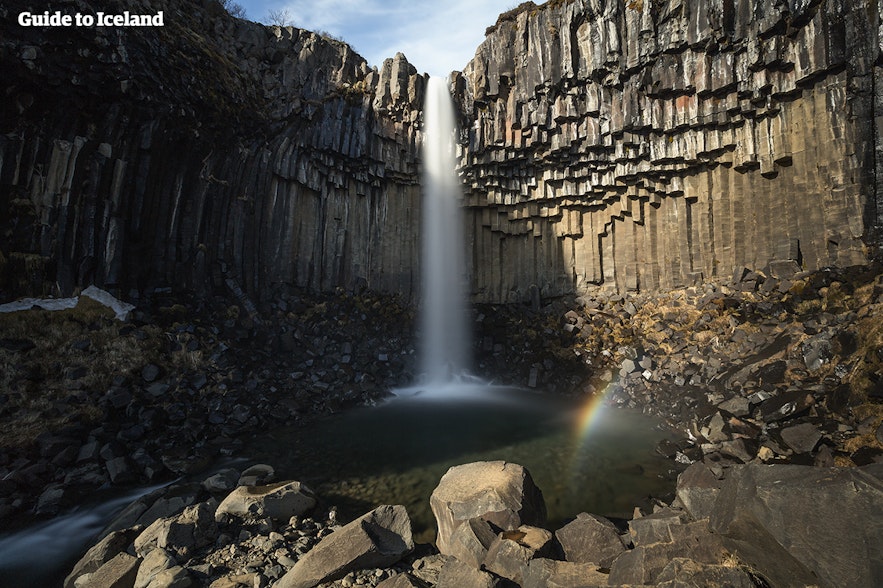
Skaftafell Nature Reserve has such varied landscapes it was once a national park.
Now it’s the most alluring and accessible section of Vatnajokull National Park and one of Iceland’s best places to visit for nature lovers.

You can camp in the greens of a birch wood forest by a beautiful glacial stream, just a short walk from haunting black deserts and dramatic lava fields.
The glacier tongues and lagoons throughout the reserve all originate in Europe’s largest glacier, Vatnajokull. Those eager to enjoy the magnificent views from the top can book a glacier hiking tour on one of the glacial outlets, Svinafellsjokull .
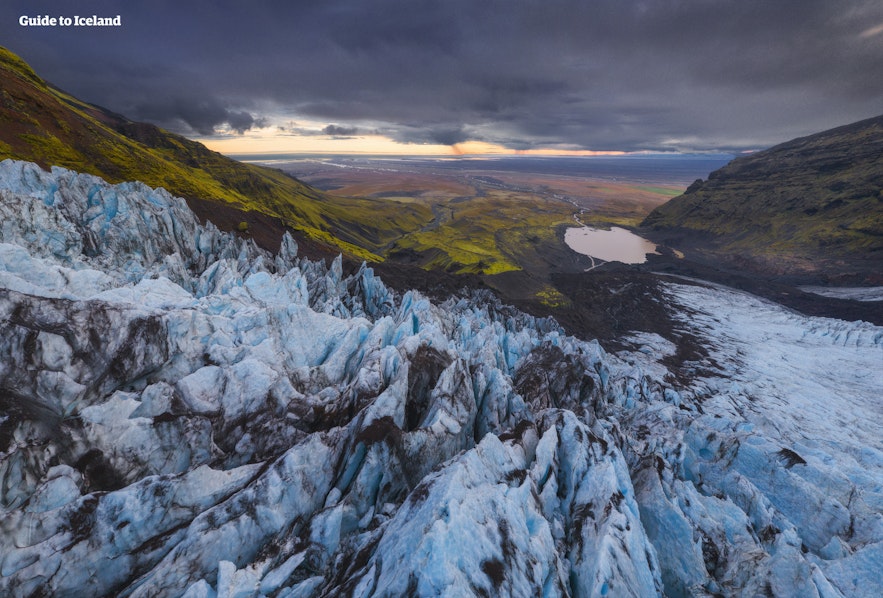
Even if you don’t want to walk on the ice, you can enjoy the area’s many other hiking trails .
The trail to Svartifoss waterfall is the most notable, where the water flows over an impressive cliff of black basalt columns.
Top Skaftafell Tours
Skaftafell is conveniently located on the South Coast of Iceland, 35 miles (56 kilometers) from Jokulsarlon Glacier Lagoon and Diamond Beach.
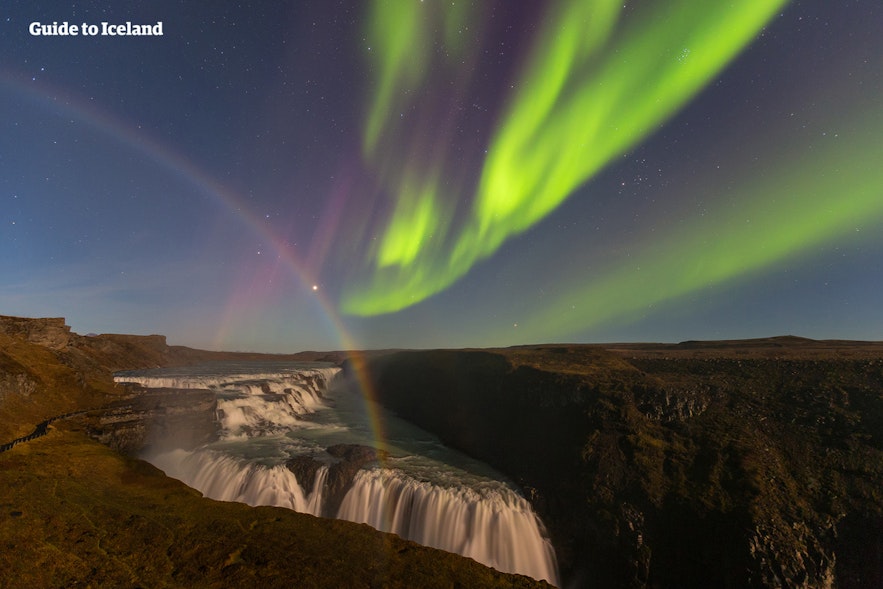
We teased it earlier in the list, but there's no doubt that the Golden Circle is one of the top attractions in Iceland. The route is 186 miles (300 kilometers) long and takes you to the most spectacular Iceland attractions in Southwest Iceland: Thingvellir National Park, the Geysir Geothermal Area, and the Gullfoss waterfall.
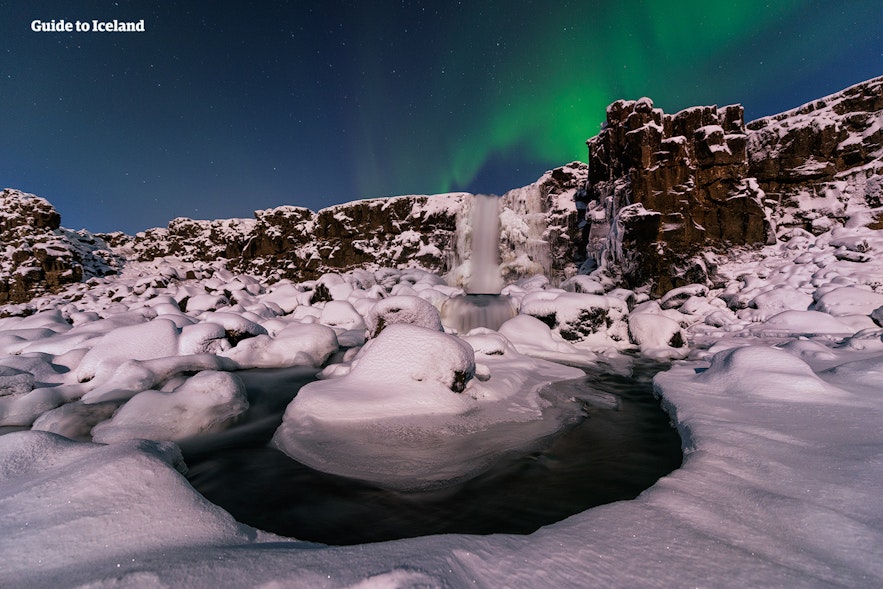
Thingvellir National Park is the only UNESCO World Heritage Site on Iceland’s mainland. Located in an incredible valley between the North American and Eurasian tectonic plates, it boasts a spectacular landscape of lava fields and forests interrupted by crystal-clear streams.
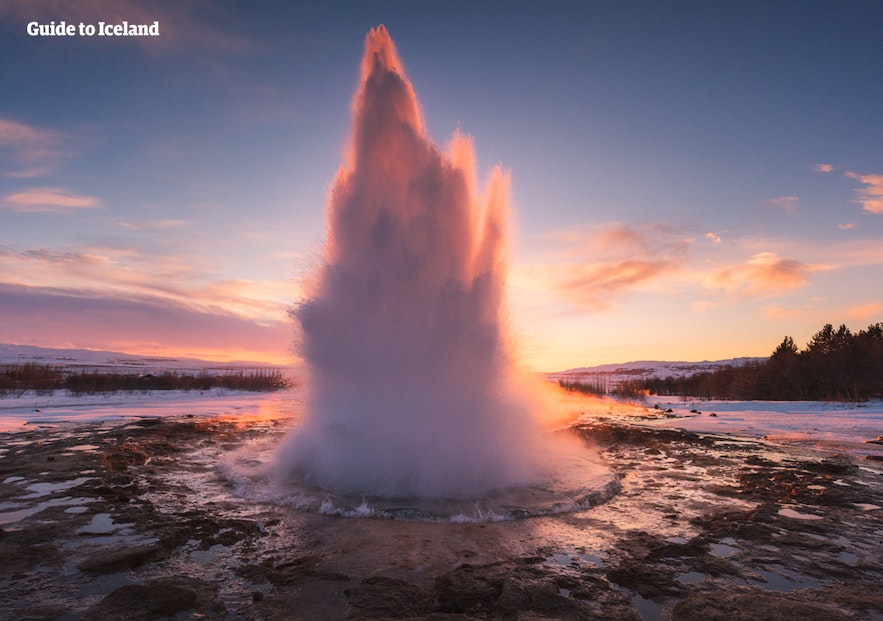
Meanwhile, the Geysir Geothermal Area has such iconic geysers that the word 'geyser' derives from the very same Geysir.
Though Geysir is now virtually dormant, its neighbor Strokkur erupts over 65 feet (20 meters) in the air every five minutes, providing plenty of photographing opportunities.
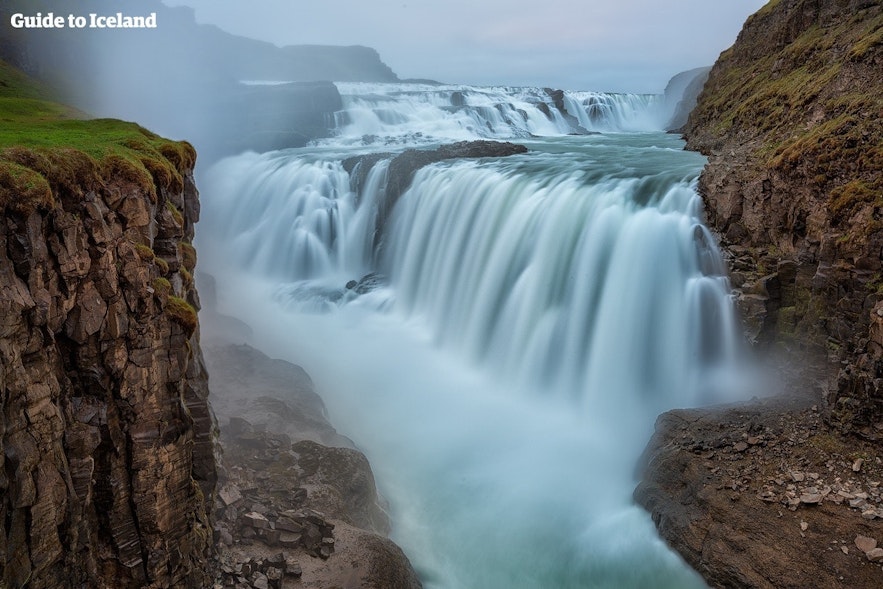
Gullfoss is the best-known waterfall in Iceland, surging with enormous power down two tiers into an ancient valley carved out during the last ice age. On a sunny day, you might just find a rainbow or two slicing through the mist!
There are plenty of guided tours of the Golden Circle , but many visitors also opt to self-drive so that they can see Iceland’s sights at their own pace.
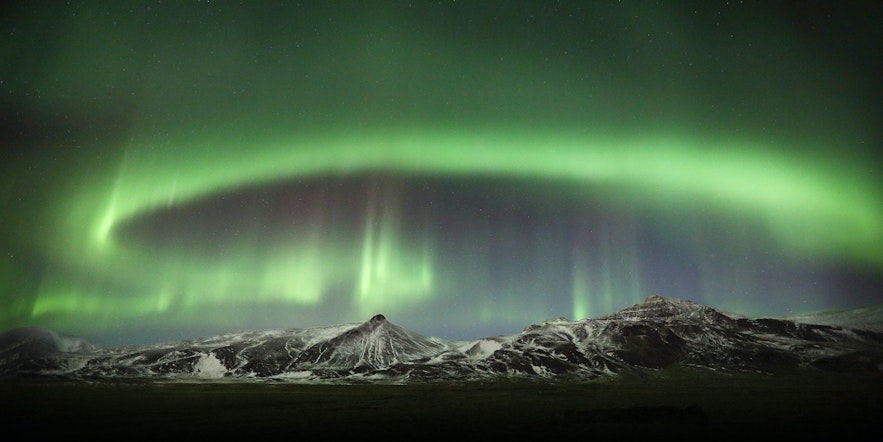
The charm of a never-setting sun and the beauty of the northern lights are stunning natural sights to behold and a must-see in Iceland. Although not an actual site, they are undoubtedly the top Iceland attractions. Both have a plethora of tours dedicated to them.
We’ve written a whole post on when exactly is the best time to visit Iceland to see the northern lights. Generally, the best time is between late August and April, with mid-winter offering you the best chance of seeing them. Of course, joining a northern lights tour guided by experts also increases your chances of spotting the aurora borealis.

Come to Iceland between May and August and enjoy the never-setting sun if you prefer warm weather. There are many top midnight sun tours to choose from to experience the magical hours. Learn more about this phenomenon in our complete guide to the midnight sun .
Since both are top things to see in Iceland, you may want to visit Iceland twice to witness both the magic of the northern lights in winter and the midnight sun in summer.
Top Northern Lights Tours & Holidays
There are some things to avoid in Iceland for various reasons. We’ve covered all of them in our dumbest things to do in Iceland.
In terms of places to avoid - we’re happy to say that all the attractions in Iceland are as pretty in real life as in photos. That said, the best thing to do to avoid disappointment is to book your visits in advance to famous Iceland tourist spots. The chief among them is the Blue Lagoon.

We hope this helps you find out where to go in Iceland and the best things to do to make the most of your stay here. Let us know your favorite natural attraction in Iceland, and share any hidden gems you discover while traveling across the unique landscape.
Don’t hesitate to leave your comments and queries below.
Popular articles

Guide to Iceland | The Story of the Leading Travel Agency of Iceland

The Complete Guide to the Midnight Sun in Iceland

Top 20 Most Beautiful Waterfalls in Iceland

22 Photos of the Aurora in Iceland

Mountains in Iceland
Other interesting articles.
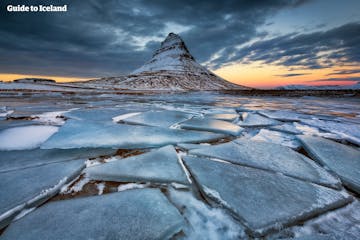
Photography in Iceland
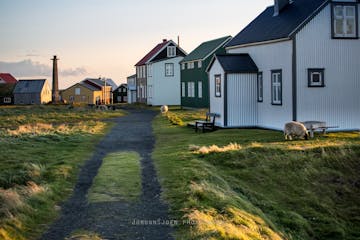
Top 5 Islands in Iceland
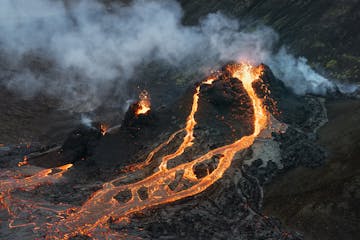
10 Insane Photos of the Fagradalsfjall Volcanic Eruption in Geldingadalur

Download Iceland’s biggest travel marketplace to your phone to manage your entire trip in one place
Scan this QR code with your phone camera and press the link that appears to add Iceland’s biggest travel marketplace into your pocket. Enter your phone number or email address to receive an SMS or email with the download link.
Top things to do in Iceland
Book your complete trip with the best companies only

Explore an Ice Cave

Visit a Live Volcano

Find the Northern Lights

Visit the Blue Lagoon

Go on a Road Trip

Do the Golden Circle

See the Glacier Lagoon

South Coast Tours
- Work With Us
- Blogging Resources
- Trip Planning

- Destinations
- Solo Travel
- Couples Travel
- Family Travel
- Expat Tips + Stories
- Expat Interview Series
- Inspiration + Musings
Iceland in Winter: 25 Things To Know Before You Go
Let’s travel to Iceland in winter!
What a brilliant idea!
Except… If Iceland is anything, it’s extreme, and winter is when Iceland is when it’s at its MOST extreme. If you’re not prepared for it then you might not be able to enjoy your trip as much as you could.
And who goes to Iceland and says they didn’t like it?!
Just mention Iceland and someone will tell you it’s their dream destination. And yes, it’s bucket-list worthy, but Iceland in winter is no lighthearted affair!
I’ve been to Iceland in winter twice, and the conditions on both my trips were very different.
That’s the thing about winter travel in Iceland, it’s well known as one of the most beautiful places on earth, but it’s also one of the most inherently changeable. It’s a relatively small island in the North Atlantic Ocean after all!
Iceland deserves its fame and all the accolades it receives, and you might be thinking, “not another travel blogger writing about Iceland” but if I didn’t genuinely wish I had known all of this before I visited Iceland during winter, I wouldn’t be wasting my time writing it!
Knowing these tips for winter in Iceland will make your trip all the better, and you’ll get to avoid the stress that we experienced!
Below you’ll find some of the best things to do in Iceland in winter, but also how to plan your winter Iceland trip in a way that will make it the best it can be!
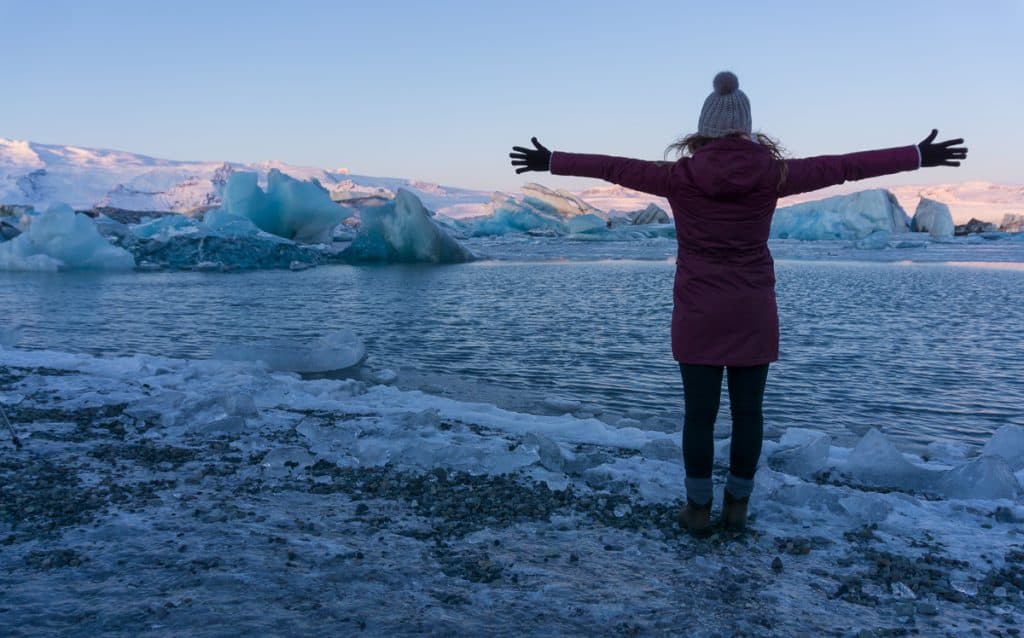
Driving in Iceland in winter is no cake walk
I’m making this number one because, in my opinion, it’s the most important consideration in deciding to travel to Iceland during the winter months.
Let’s be clear. Driving in Iceland in winter is downright scary, especially if you’re not used to the conditions, but honestly, even if you are. Extreme, remember?
That means snow and ice on the road, direct drops into the frozen water on either side, insanely strong winds buffeting your car around along with a whole lot of loose snow so you can’t even SEE the road… need I go on?
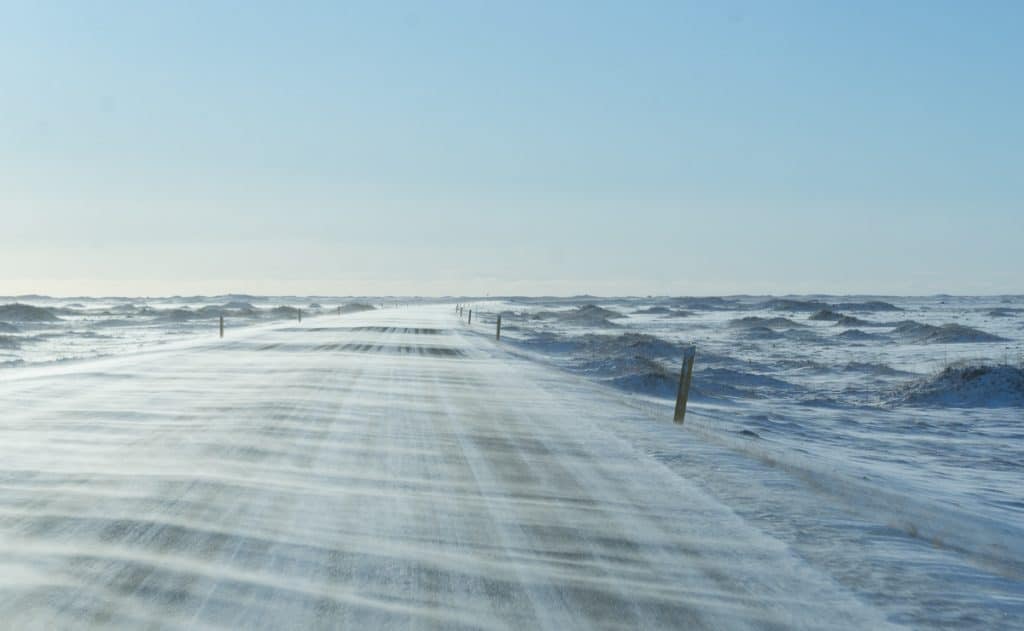
Only you will know what sort of conditions you’re happy driving in.
We hired a small hatchback assuming the roads would be clear because my first trip to Iceland in October it was. Except for this time, it was a few weeks further into winter and the roads were actual ice.
This and the strong winds meant that journeys took us much longer than we expected, we saw less than we wanted, and we were stressed out by it all.
If you’re not happy driving in these conditions then don’t, there are many Iceland winter tours that will allow you to experience Iceland without putting yourself at risk.
That’s how it can really influence your trip. Because if it’s your dream to drive the Ring Road then winter may not be the right time to go unless you’re confident in driving in this kind of weather, or you choose the very beginning or very end of winter (Sept/Oct and March/April).
Our road trip in Iceland in November was amazing and we don’t regret it but do wish we had booked a 4×4 and allowed more time to reach different locations; you don’t drive fast on ice!
Make sure you check the road conditions before you set out each day, so you know what to expect!
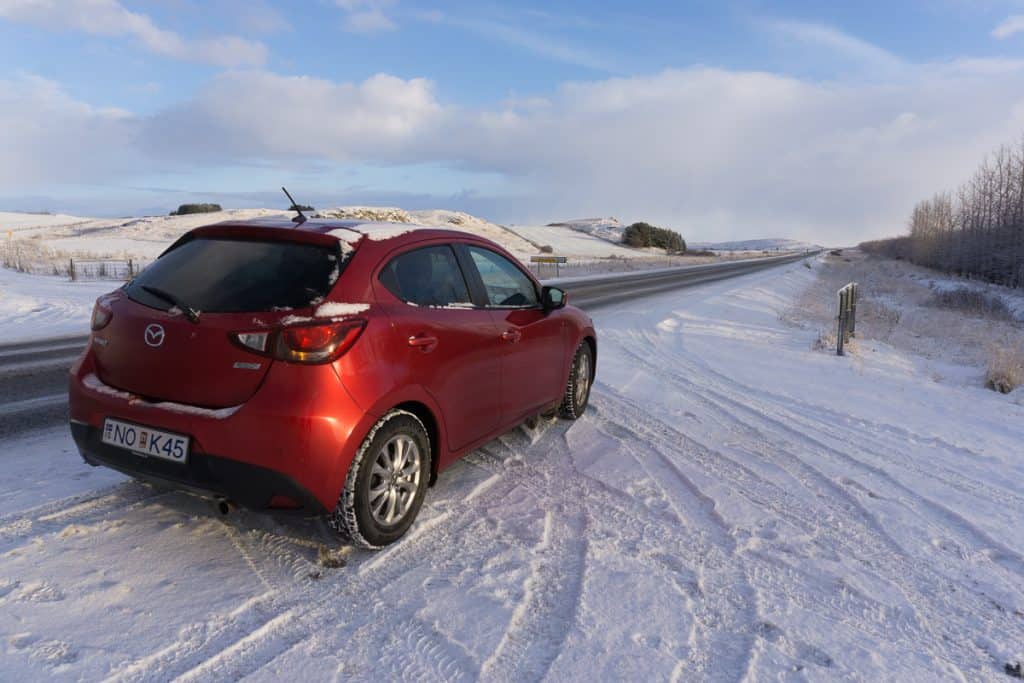
Daylight hours are slim
One of the pros and cons of Iceland in winter is the light.
During the winter months in Iceland daylight is somewhat of a rarity. For example, it’s only light in November from 10 am – 4 pm and in December it drops to as little as 5 daylight hours. On the one hand, this means more time to potentially see the Northern Lights, YAY!
On the other, it means you can’t fit as much into your day as you could if you visited Iceland in summer.
You’ll need to plan carefully because the lack of daylight in combination with the longer travel times due to road conditions means you won’t be able to see as much each day.
However, you can also take advantage of the low light if you’re into photography. There are no worries about glare like in summer, the sunrise and sunset times can provide some magical moments for your memories and your photos.
Visit somewhere such as the Jökulsárlón Glacier Lagoon at sunrise and you’ll understand how light can be a pro!
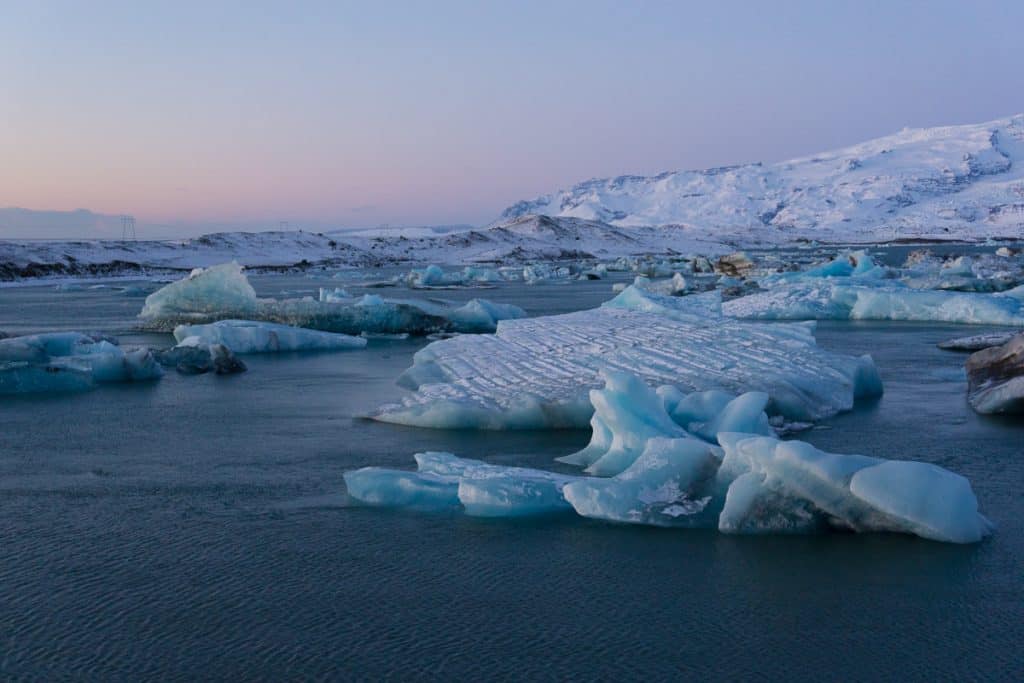
An Iceland itinerary is crucial
There’s so much to do in such a relatively small country that planning an Iceland itinerary is really important, otherwise you’ll be wasting crucial time when you’re on there.
In winter some attractions are closed, on roads that are closed, or just plain harder to get to in general. Your gut reaction will be to try and do everything, mine certainly was, but be realistic.
Allow yourself time to reach each place safely. Make sure you are able to get the photo you want rather than the one you have to rush.
We learnt to make the most of a few places rather than rush around many, and it really paid off in the short time we had there.
We often book flights before we plan what we want to see, but if you’re travelling in winter for one week or less you’ll soon see that an Iceland winter itinerary that includes the whole Ring Road, the Golden Circle, and Snæfellsnes Peninsula is unrealistic.
Plan to see just one or two of these, and maybe just to Jökulsárlón on the Ring Road!
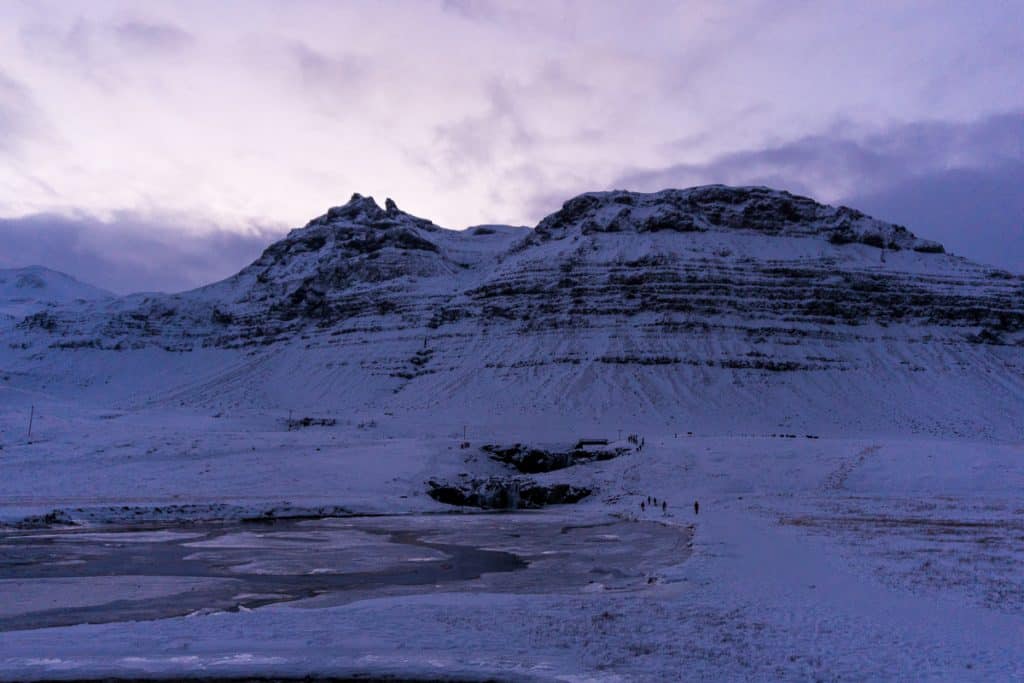
If you’re lucky, you’ll see the Northern Lights
Although Iceland is well-known as a Northern Lights destination, there is absolutely no guarantee you’ll see them.
The longer you’re in Iceland the better your chances, and many people only visit for a few nights and expect to see them.
Unfortunately, I’ve heard of people visiting Iceland in winter multiple times and still never seeing them!
The first time I went to Iceland I saw a very faint cloud that showed up as the Aurora in my friends camera, but to the naked eye didn’t look like much. This time around we were lucky to be treated to an amazing display of Aurora in Snæfellsnes!
Treat the Northern Lights as a bonus to your Iceland trip, rather than a requirement.
Of course, do your best to put yourself in a situation to see them. Although they can be viewed in Reykjavik if they’re strong, it’s better to journey outside the city where there’s less light pollution.
This might mean joining a Northern Lights Tour if you don’t have a vehicle or looking up some likely locations in advance.
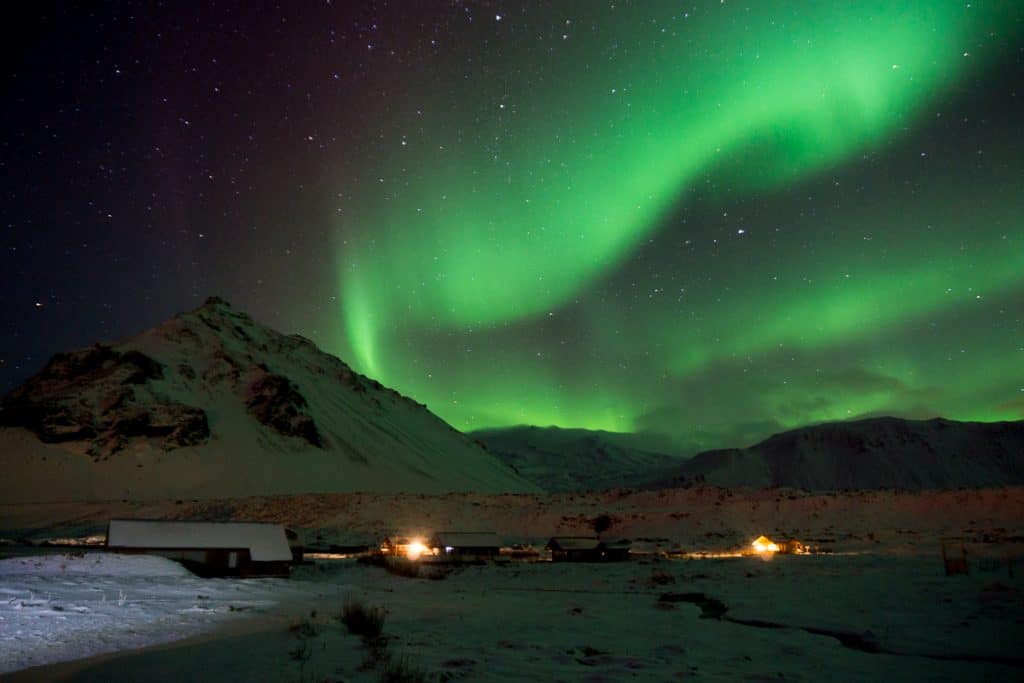
Everything has an app or website now and the same can almost be said for the Northern lights!
There are several sites that can be used to get warnings about where and when the lights may appear that night. When I was there they were accurate one night but I never saw them the other times it said they were about.
We used the Iceland Metrological Office Aurora Forecast .
Iceland in winter is a photographer’s dream, but be prepared
If you’ve been dreaming of Iceland then you’ve likely looked at a LOT of photos of dramatic landscapes.
While many of them will show Iceland in summer and you’ll need to search for or reimagine them as covered in snow, it’s certainly true that Iceland is an amazing place to take photos. And you’re probably imagining yourself in some of the same scenarios you’ve seen others in and seen photos you want to take yourself.
But like many things about travelling Iceland in winter, you should undergo a little preparation to avoid disappointment!
There’s nothing wrong with taking pictures on your phone if you have one with a fairly up to date camera, and it will yield you some great results because ultimately Iceland is stunning and amazingly picturesque.
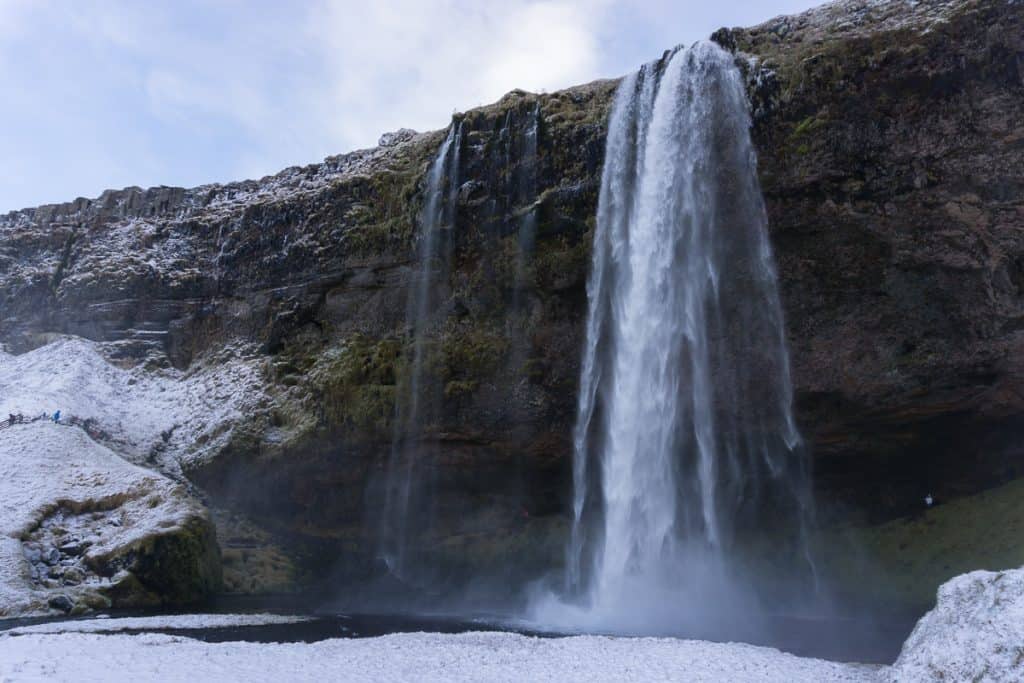
If you plan on taking a camera that’s a little more complex, like a DSLR for example, then it is well worth spending a bit of time in advance preparing.
Shooting in the snow creates a whole new set of problems and takes time to get right.
The key thing is that it doesn’t necessarily matter what you shoot with, but you need to know how to use it.
A tripod is a godsend and we honestly don’t know how we would have managed without one, especially as we were experimenting with some long exposure shots and it’s crucial if you want to try your hand at capturing the Northern Lights. If you are lucky enough to see them they can literally be in the sky for minutes. In that time you need to know how to set your camera to make sure you can capture them because unless they’re really extreme a phone will struggle.
We looked into the best camera settings for capturing the Northern Lights before we left and had them saved in advance to increase our chances of getting a good shot. It’s lucky we did!
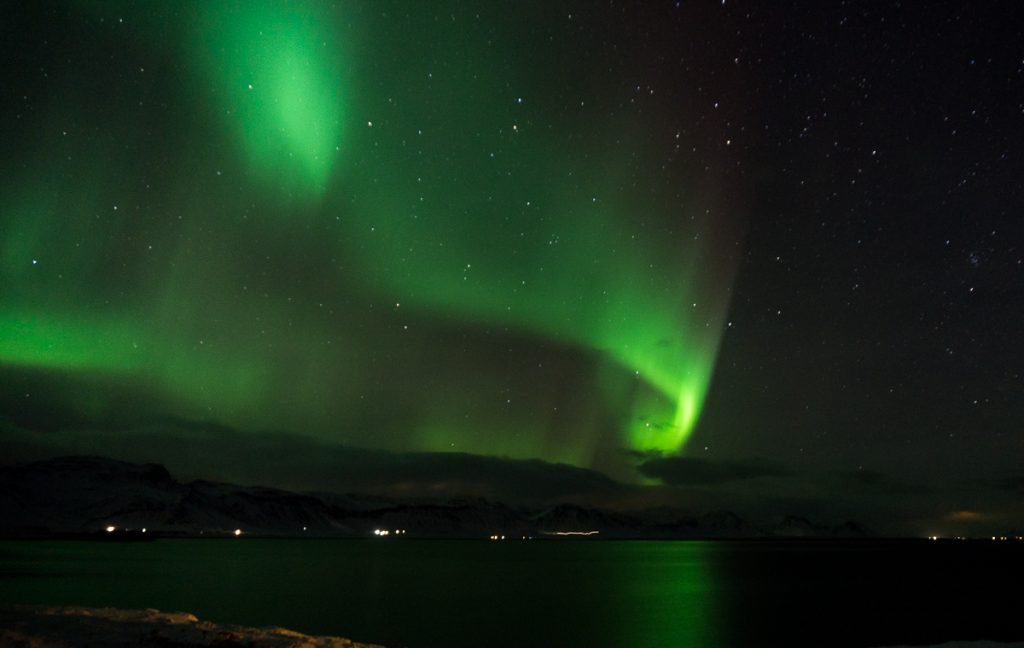
Basically, you should try a wide-open aperture, a high ISO and a long shutter speed with your camera on a tripod. Use a remote or set a 2-second timer to reduce the chances of bumping it.
You might need to adjust your focus to manual to focus on the stars first. From there you can make adjustments, but it can be hard when they’re moving all the time and long exposures take what feels like forever!
It really is hard to come out from behind the viewfinder as you try to get the perfect shot, but remember to look up and enjoy this stunning natural phenomenon.
Keeping your gear safe and dry can be a little tricky so make sure you can get your camera covered quickly and keep that lens clean in adverse weather.
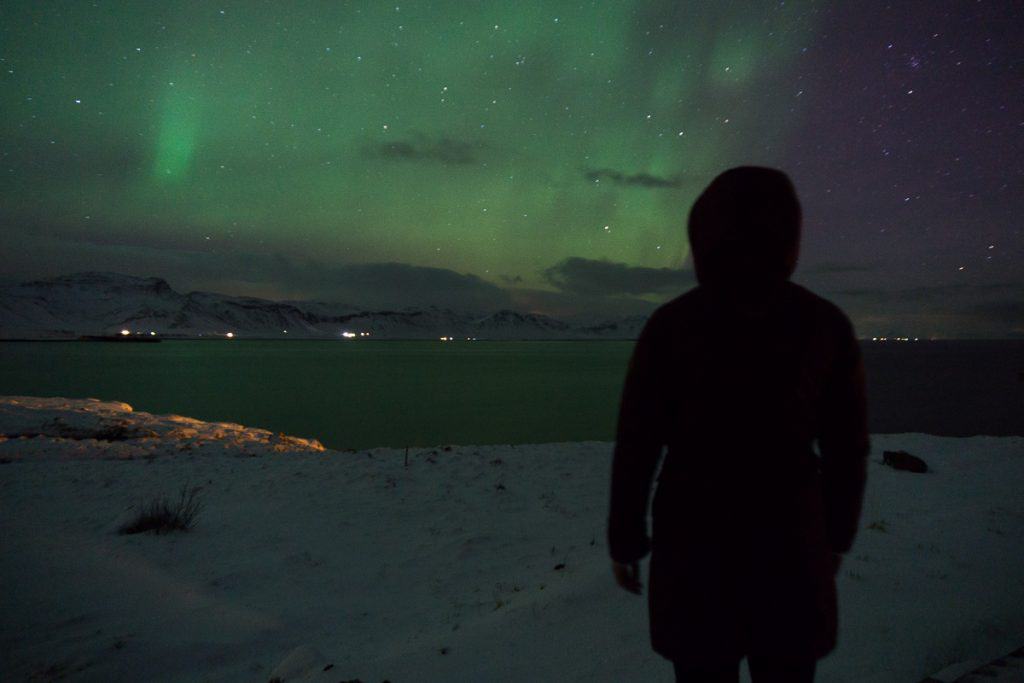
It’s cold
Obviously…but how cold is Iceland really?
The thing about winter in Iceland is that it’s not colder than many other popular winter destinations, and it’s actually even warmer than some!
I was colder in Berlin in winter than I ever was in Iceland, and in wintertime, it’s warmer on average than the Eastern US. You can expect the temperature to be around 0 to 4 degrees Celsius, although of course at higher altitude it can be much cooler!
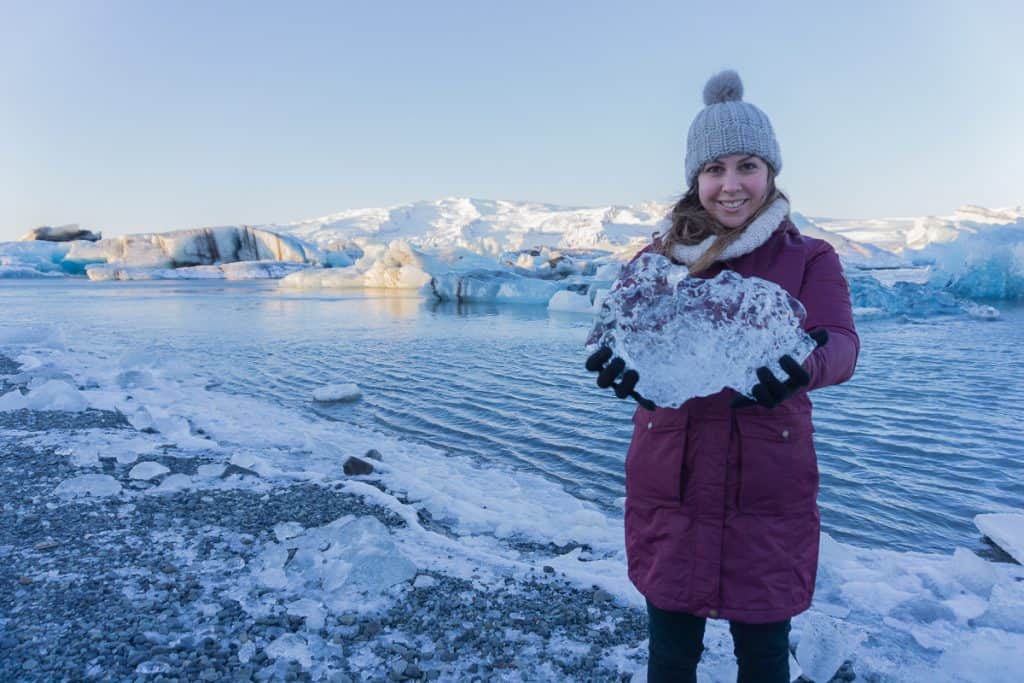
The weather is extreme and unpredictable
Although it isn’t as cold as you might think in winter, that doesn’t mean the weather in Iceland isn’t extremely unpredictable. We faced everything from beautiful blue skies to complete whiteouts (while we were driving of course!) and crazy winds like nothing I’ve ever seen.
The car rental company actually specifically told us to watch our doors when we open them because the winds can basically rip them off and then the car’s a write-off.
Expect that the weather will be changeable and you might need to adjust your plans a bit as you go along.
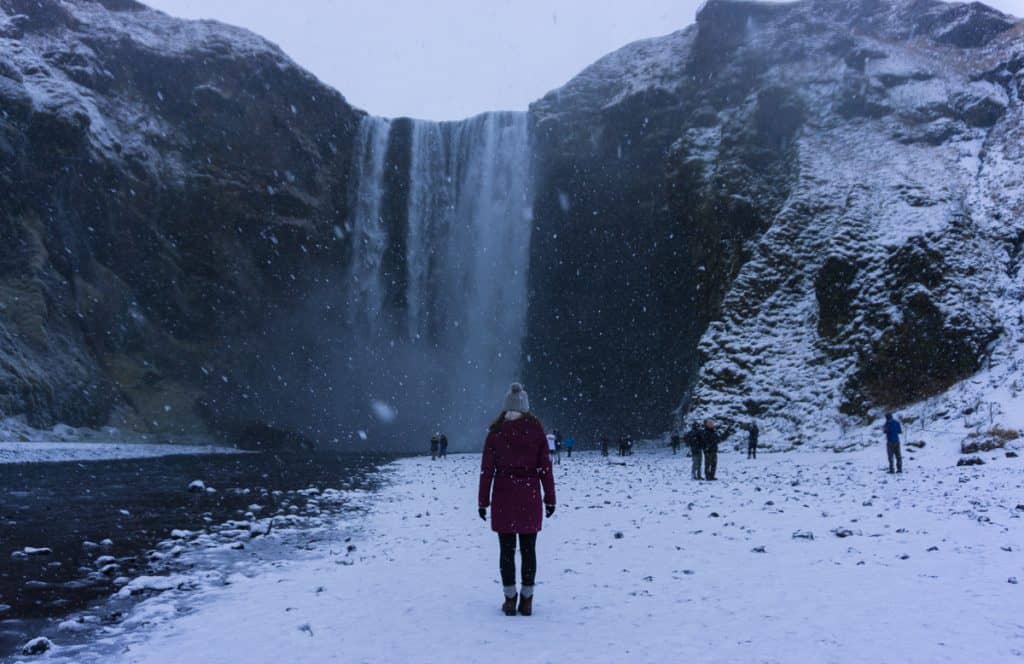
Iceland is still expensive in winter
The rumours you’ll hear when you talk about Iceland are true. It is a very expensive country. Unlike many places that have a cheaper offseason (offseason travel in Europe is my favourite!).
The peak season may be from June to August, and accommodation and flights may become slightly more affordable, but overall Iceland is not the cheapest location for a holiday.
Getting around Iceland can be expensive, because you’ll either need to take a tour or hire a car to get the most out of your experience and they’re not the cheapest, and even if you opt for lower-end accommodation it’ll still be more expensive than many other European destinations, and you still need your own sleeping bag!
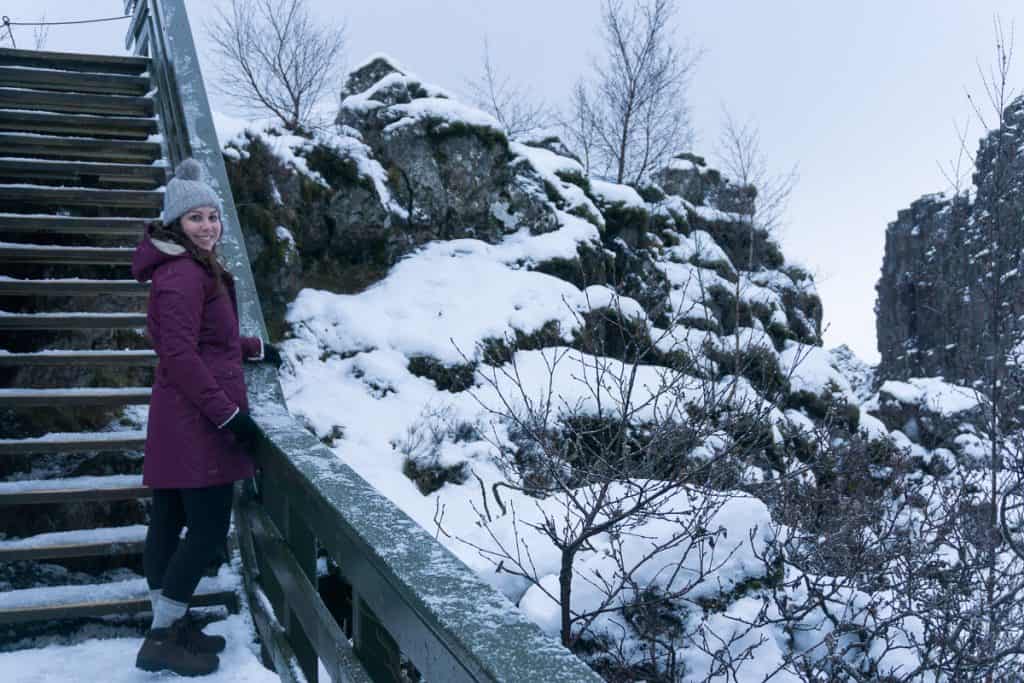
That’s not to say you can’t travel Iceland on a budget, it’s just that what that budget is, is relative!
The biggest area where you can tighten the purse strings is your food and alcohol budget. A pint of lager can cost £9-10 and a main meal £20 at minimum (that’s burger and chips in town). Instead, buy food at supermarkets, take packed lunches, or try food from petrol stations. The burgers are surprisingly good.
Also, don’t forget to grab some duty-free alcohol on your way in, because it’s the cheapest you’re ever going to see it, even if you take advantage of happy hours.
The trick to Iceland is to accept the cost of things and prepare yourself each day to buy as little as possible while out.
Make use of bars that have happy hours and, if you’re staying at a hotel check the price of their menu, it may be the only thing for miles around to eat!
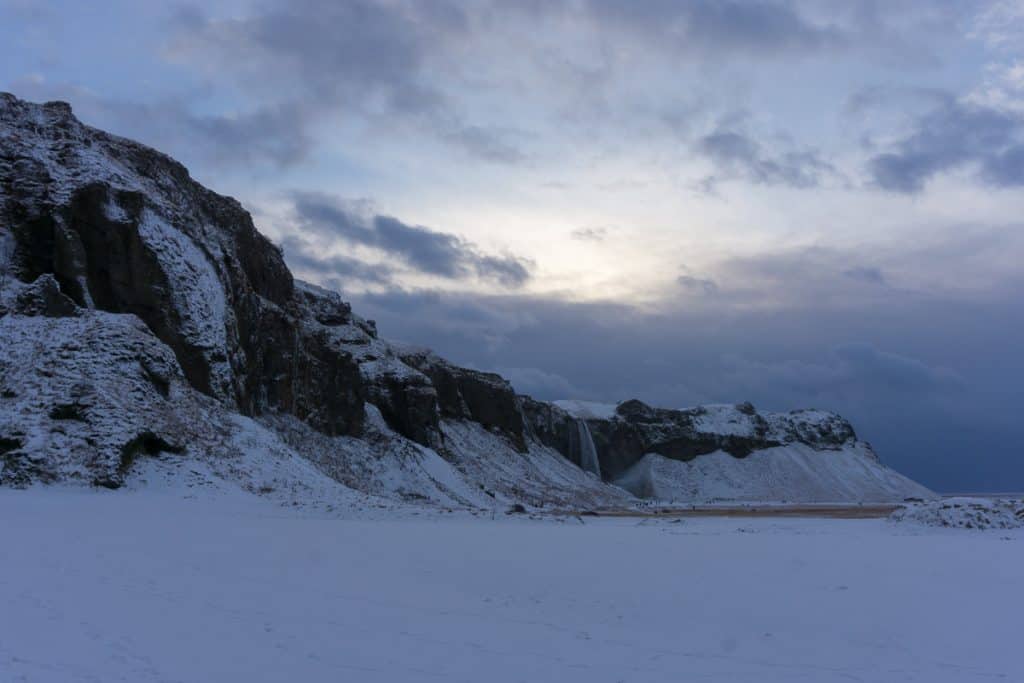
And it’s still busy in winter too
I haven’t experienced Iceland in summer, so I genuinely can’t tell you what it’s like, but as someone who has travelled a lot, I wouldn’t call Iceland quiet in the winter season.
Every attraction we went to still had plenty of other people around, other than when we went to Jokulsarlon really early, but then within half an hour there were plenty more people around. There are still tour busloads of other visitors to contend with, and we didn’t go to the Blue Lagoon because it was booked it.
It was so different from my visit in 2013 when my two Icelandic friends drove me around the Golden Circle and across to Jökulsárlón, and we were the ONLY people at almost every place we stopped. Including the lagoon!
So much so that when the petrol light came on and our cards wouldn’t work at the self-pump station we genuinely worried about running out of petrol and no one passing us!
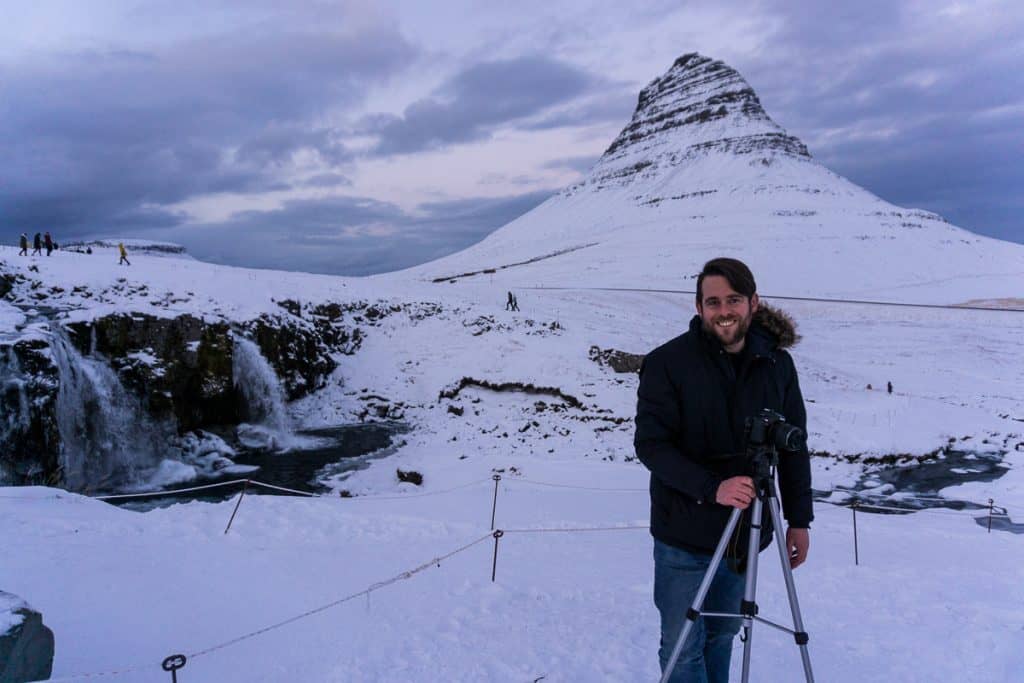
Iceland in winter looks different to what you might expect
Iceland winter travel is very different to the other seasons and different to what you might be expecting.
Many of the images used to showcase Iceland are summer images, with lush greens and epic vistas.
The winter turns Iceland into a different looking country altogether, and even though I did some research on Iceland in winter I didn’t expect it to look like it did, with SO much snow everywhere.
Many of the pictures I’ve seen advertising or talking about winter in Iceland show a sprinkling of snow on the ground at the main attractions, and slightly heavier in some places.
Of course, it depends on the year, but we went to Iceland in November and everything was completely white.
I asked my Icelandic friends if this was normal, since the first time I visited it was October and there was far less snow, but they assured me come November it’s usually like this! This isn’t a bad thing at all, but it might not be what you were thinking!
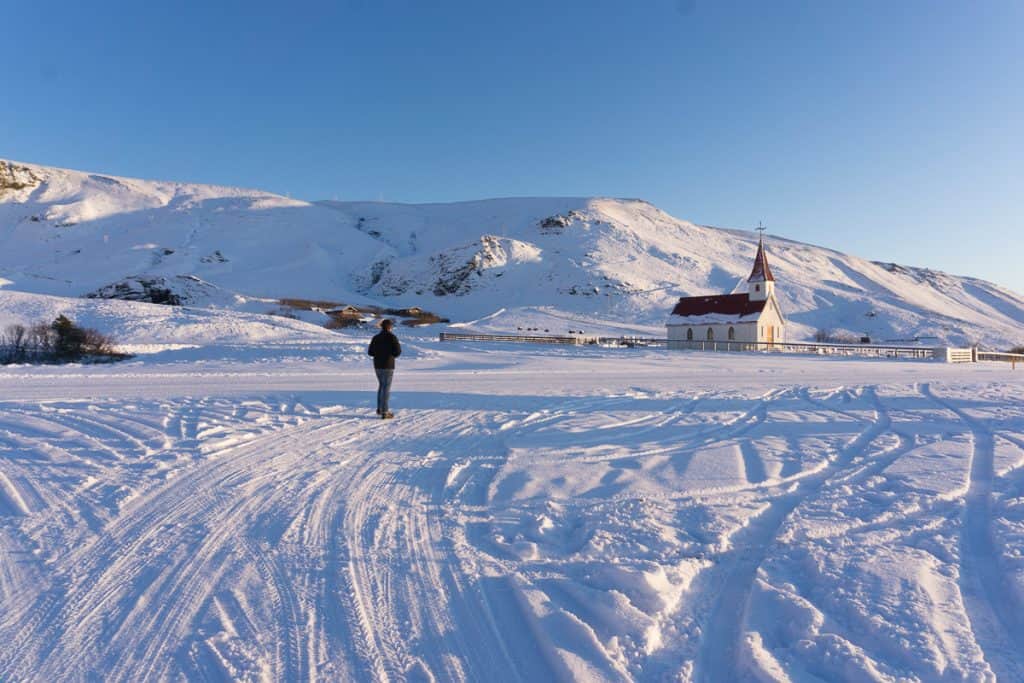
Kirkjufell is beautiful in the snow
Kirkjufell (Church Mountain in Icelandic) has become an icon if Iceland, appearing in promotional material all over the place, and cementing its reputation by featuring in Game of Thrones.
It rises 463 metres and sits on an isolated peninsula in Snæfellsnes in the west of Iceland. From one side the mountain looks steep with a flat top, and from the other, it looks rounded.
I’ve often seen photos of it in green and orange with the changing of the seasons, but I had never seen it completely white like it was when we visited Iceland in winter.
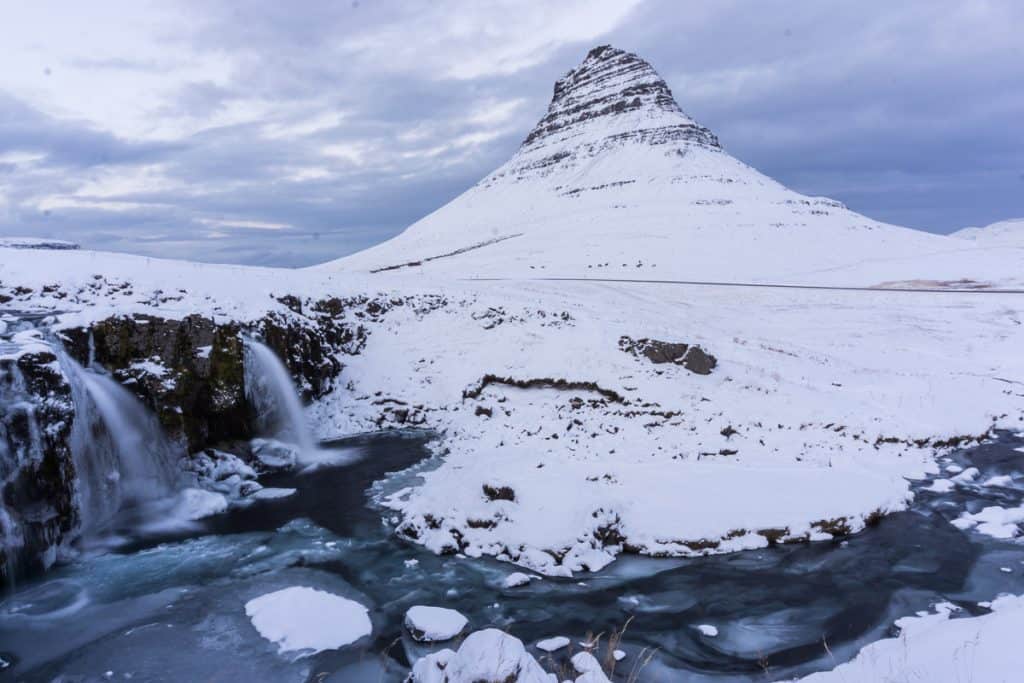
The Golden Circle is a great winter day trip from Reykjavik
Ok so it’s great any time of year, but in winter it can be particularly spectacular!
The main attractions are Thingvellir National Park, which becomes a winter wonderland, the Geyser geothermal area where you can see water bursting high above the snow-covered landscape and Gullfoss waterfall, which can be surrounded by ice.
There are also some other stops that have become more popular recently, like the Kerid Crater Lake, although if it’s frozen over it loses a bit of its dramatic appeal.
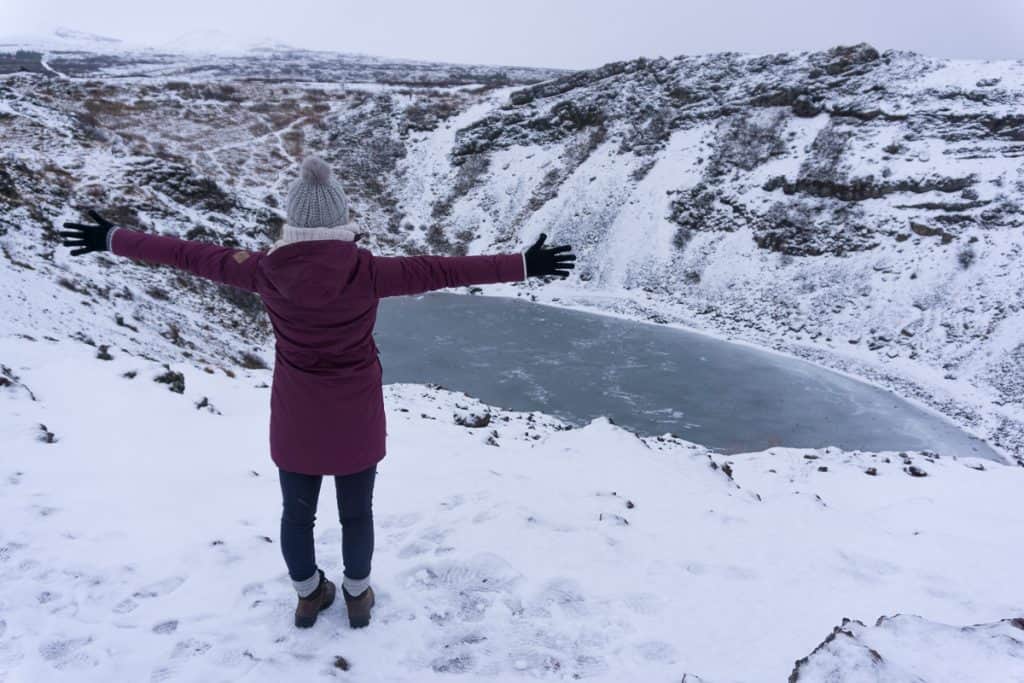
You’ll need your swimsuit for all the natural hot pools and springs
If you thought that travelling to Iceland in winter would mean leaving your bathing suit at home then you’d be very mistaken!
Most people are aware of the Blue Lagoon, of course, a geothermal spa that’s one of the top attractions in Iceland.
It’s a matter of personal opinion as to whether to Blue Lagoon is worth visiting. It is quite expensive and you need to book in advance, but luckily there are plenty of free natural hot springs and hot pools all over Iceland.
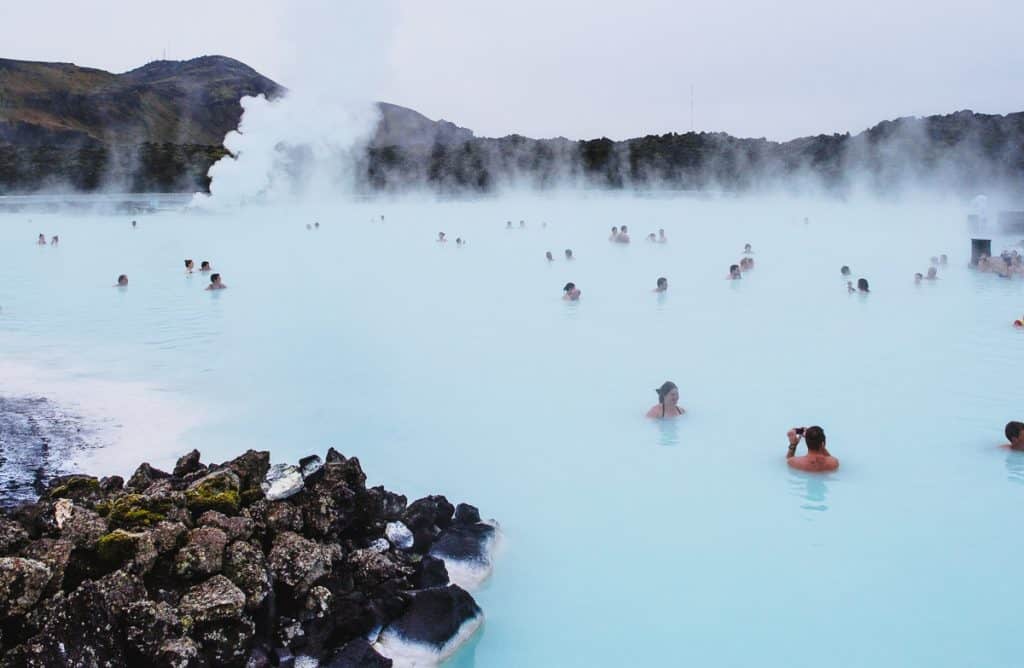
But don’t discount the local swimming pools as well
If you’re wondering where the locals go for their geothermal fix, there are actually a lot of manmade pools you can pay a small fee (compared to the Blue Lagoon!) to visit.
I’m not going to give away my local friend’s favourite pool but a quick Google search of swimming pools should help you to find some options wherever you’re staying!
They may not be natural, but many of them are still heated by geothermal waters.
And you can snorkel and dive in Iceland in winter too
Snorkelling and diving might not sound like things you want to do in the freezing waters of Iceland, but trust me, you do!
At Thingvellir on the Golden Circle route is Silfra, a crack between the North American and Eurasian tectonic plates that’s one of the best places to snorkel and drive in the world. The water in the Silfra fissure stays the same temperature year round, and underwater visibility is over 100 metres.
As a birthday present my husband treated me to snorkeling in the Silfra fissure, and it was incredible. We were the only people on our 2 pm tour, the last of the day in winter.
Our guides loaded us up with gear (dry suits) to help protect us from the cold as much as possible, and we entered the clear water surrounded by snow. The water is so clear that the blue looks like someone turned up the saturation up, but it seriously looks like that!
Read More: Silfra: Snorkeling Between Tectonic Plates in Iceland
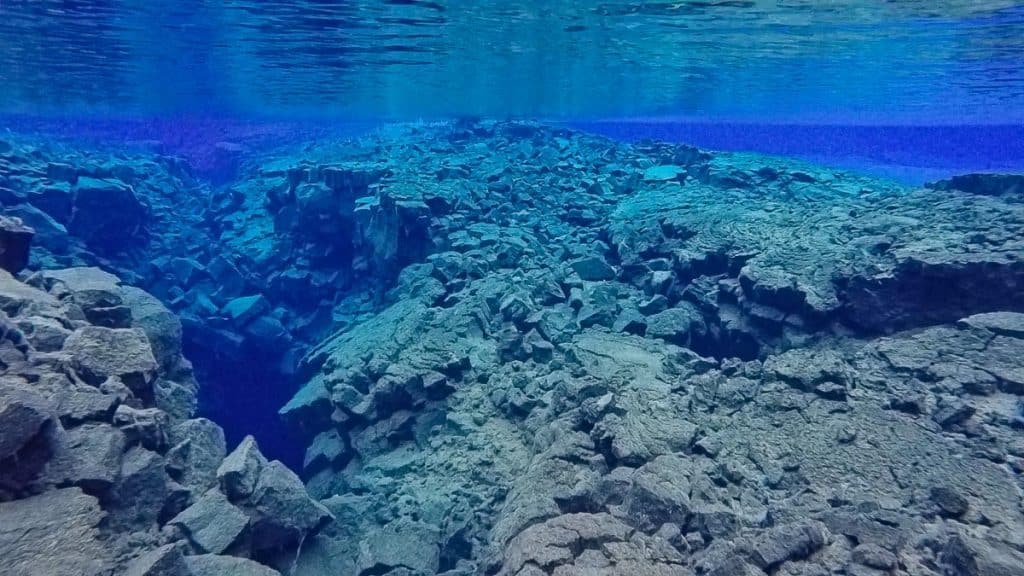
Icelandic horses
Need I say more? These small horses are so cute!
They’re a special breed developed in Iceland from the horses brought by Vikings over 1000 years ago, and although they’re called horses, they’re more like the size of ponies.
You’ll see them quite near the roadside in many locations, and they’re pretty friendly if you want to stop and take a photo. Just be careful if it’s a busy road!
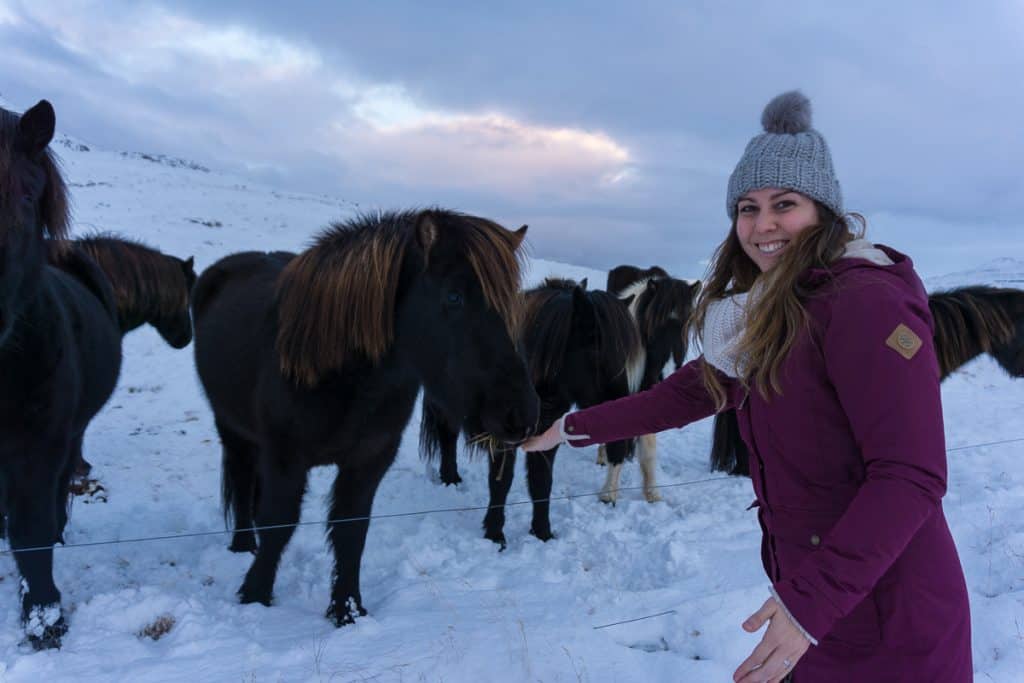
Yes, that crashed airplane in Iceland is real
But do you really want to trek 4km each way to see it?
In 1973 a US Navy plane crashed on Sólheimasandur beach. Everyone survived but the wreckage was abandoned. It’s become a well-photographed attraction, but due to its popularity the road has been closed and you now need to walk to see it, along with the hoards of other people who will be doing the same.
If you want to see it for yourself and it’s not blowing a gale like when we drove past the newly built parking area then, of course, you should go, but 100% do not expect to get photos of it with no one on it, unless you visit super early, super late, in bad weather, or use photoshop!
You should get travel insurance
It might seem extreme to get insurance for a short break, but with all the outdoor things you’ll be doing and in potentially adverse weather it’s better to be on the safe side.
The few times we fell over on the ice and could have broken ourselves, or our camera gear made it worth it. You don’t know what situations you’ll find yourself in. So just do it ok!
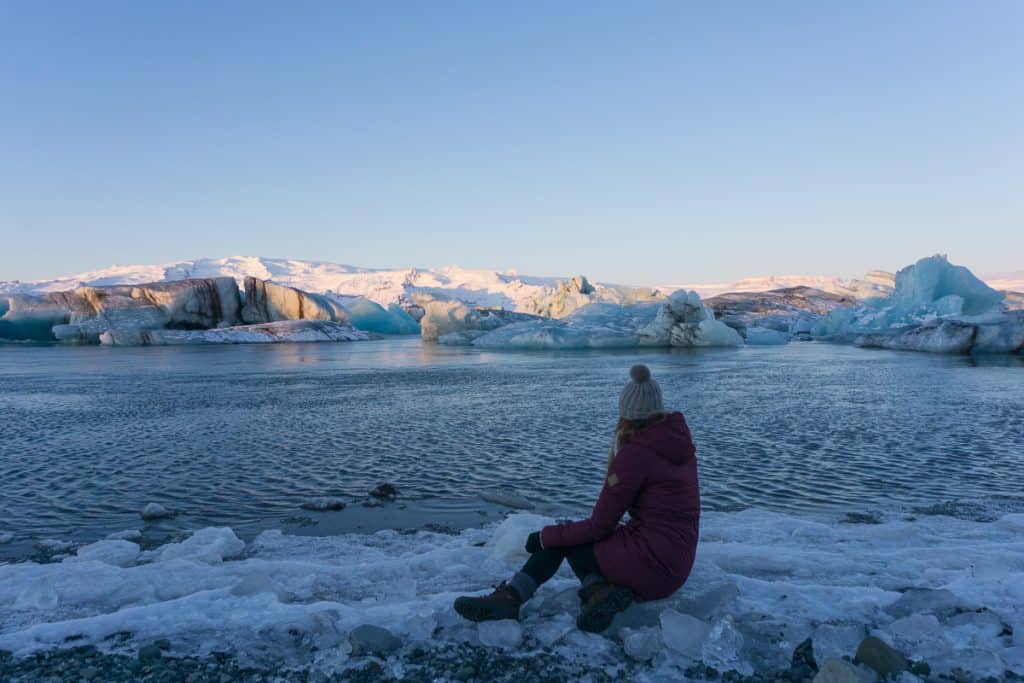
And don’t forget the car hire insurance
On top of normal travel insurance, car hire insurance is crucial in Iceland.
Sometimes it’s tempting to opt out of car insurance because you think you drive all the time and nothing happens, but Iceland isn’t exactly your normal driving situation. There’s the extreme wind that can cause damage to the car through loose gravel, windscreen chips from the same gravel, icy roads, and unfamiliar conditions. This even applies in summer!
It is possible to get car excess insurance as part of travel insurance, or in a separate policy online much cheaper than the ones offered by the hire company. The only issue with this is that some hire companies will then want a credit card hold in case something happens because effectively you would have to pay upfront then claim from the other insurance. And this hold/deposit can potentially be £2500.
For example, if you chip the windscreen you will then be charged for this amount to take up yourself with your separate insurers later on.
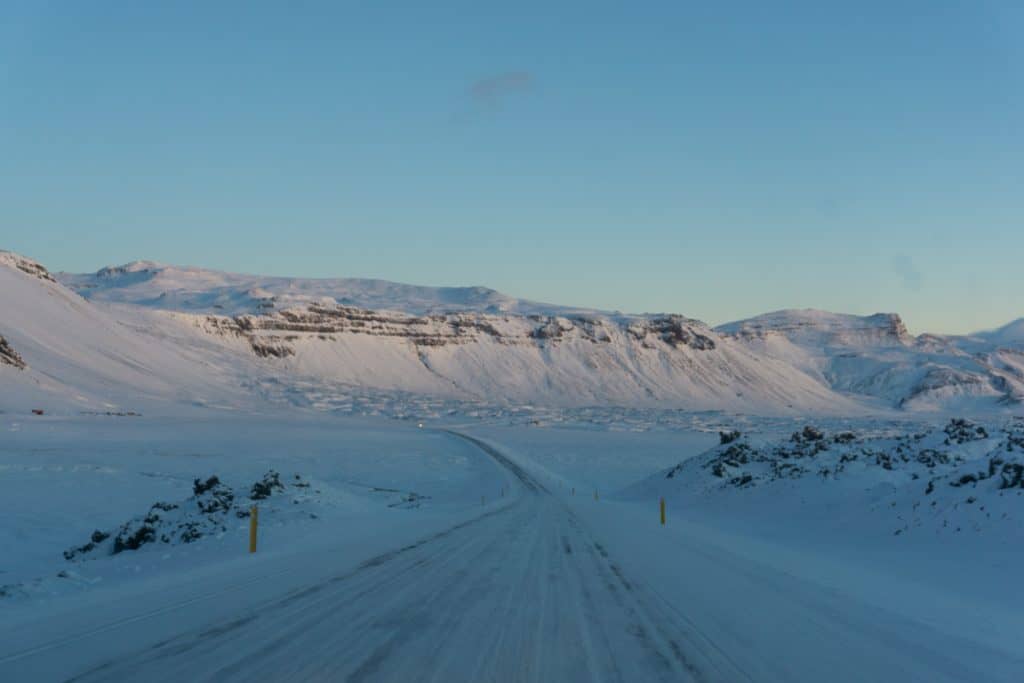
It’s very hard to say what the best option is because if you don’t need it, it feels like wasted money and if you do you’ll never be happier to have spent it.
We found car insurance online for £58 or with the company for £168 and though the second was more expensive it meant no excess and no deposit from our credit card which we might have wanted to use elsewhere. Think it through carefully.
Take the right gear
Billy Connolly once said “In Scotland, there’s no such thing as bad weather, only the wrong clothes.”, and I can safely say this applies to Iceland too!
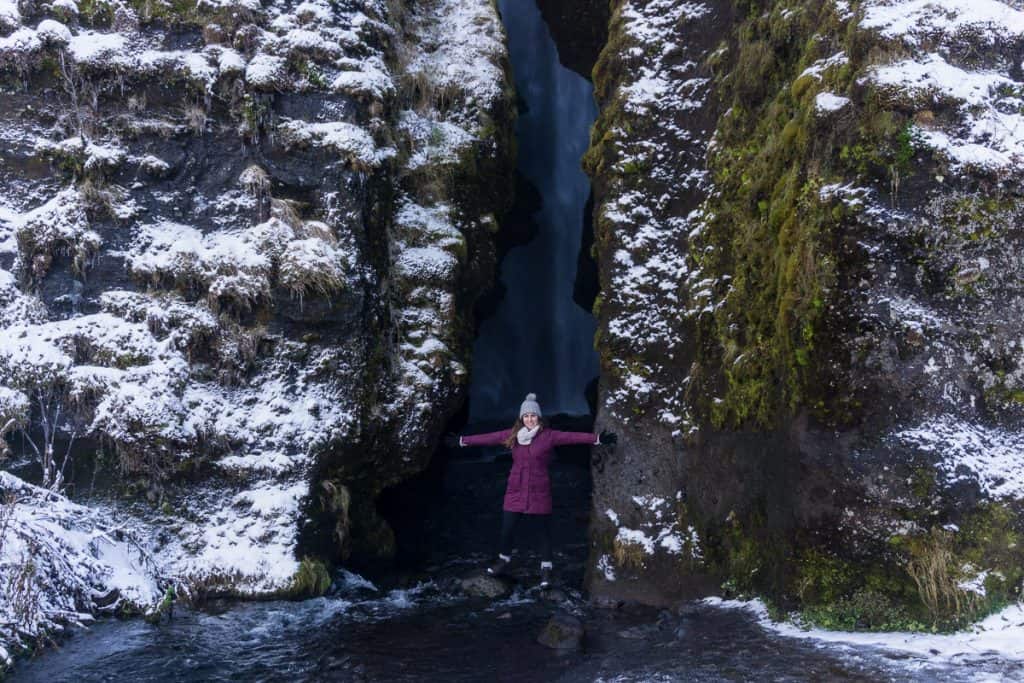
Winter weather in Iceland requires preparation (do you sense a theme to this piece?). Some visit and will say it’s mild if a bit snowy others will tell you it’s freezing and a blizzard.
The truth? It can be both.
Our trip was gloriously snowy with sunshine and bitingly cold with tons of cloud.
We packed some good thermals and warm, waterproof coats. After that, layers are your friend so you can stay in control.
It’s a good idea to try and avoid jeans if it’s snowing because they stay wet. Good, waterproof boots are a must and we both chose to wear hiking boots the whole trip.
While we were out and about we saw people with some very wet and very cold feet as their trainers just weren’t up to the job.
You don’t need to spend a fortune on winter gear for Iceland. Consider water-resistant and warmth and look for budget options, or try second hand!
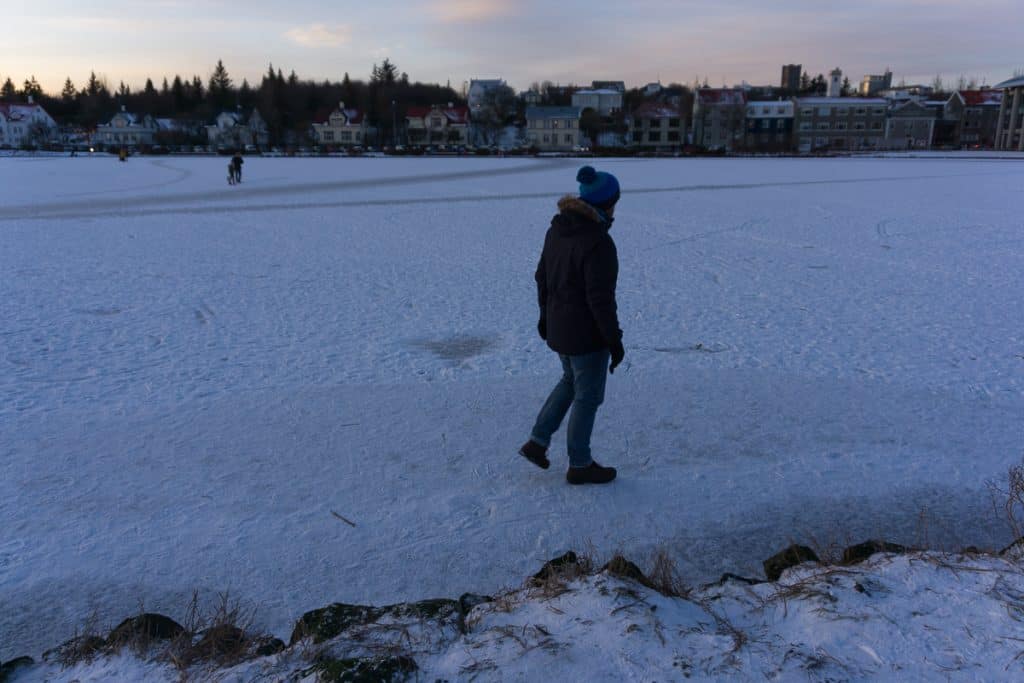
The ice part of Iceland really is epic
Iceland has 269 named glaciers and an uncountable amount of ice caves. You can only take a tour of the ice caves in winter, because of the danger of them collapsing.
Basically, they change every year, and tour operators have to scope out new places to guide people all the time. Touring an ice cave in Iceland is magical, and an experience you definitely need to plan into your itinerary if you want to make it happen since the tours are so popular!
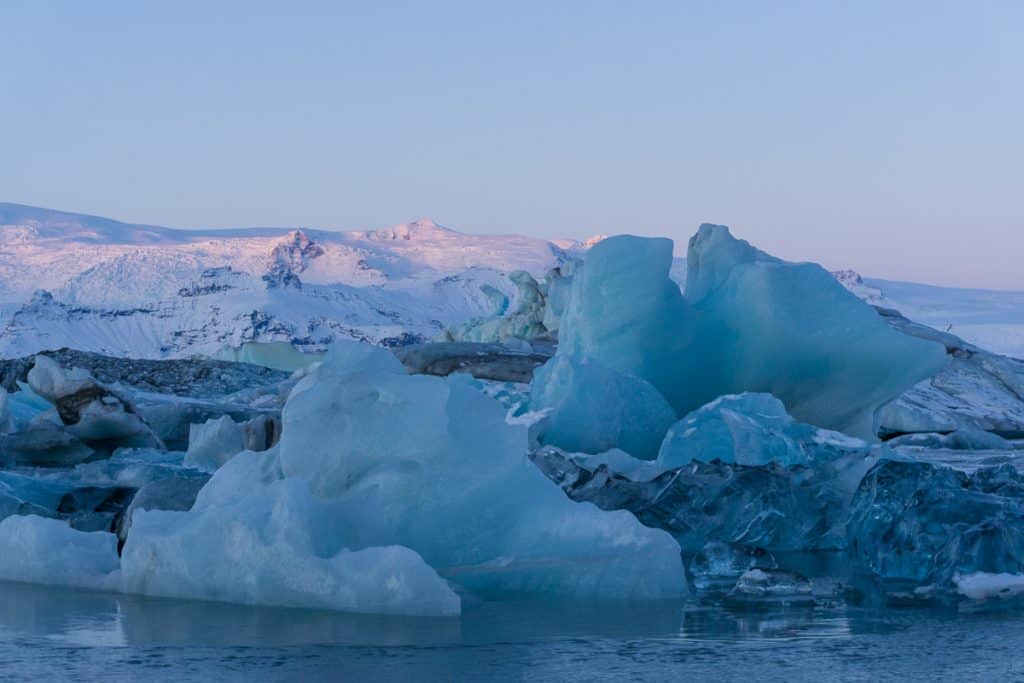
And don’t miss the Jökulsárlón Glacier Lagoon if you have the time
You need to set aside at least 2 days to make the journey from Reykjavik to Jökulsárlón in winter, and preferably 3 if you want to do more stops along the way and spend some decent time there without driving in the dark. It’s still one of my favourite places ever, and what made me fall in love with Iceland in the first place.
There’s so much to see on the drive there (or back) and unfortunately, we ran out of time to see a lot of it due to the lack of daylight hours in winter.
However, being able to watch the low sunrise at the lagoon isn’t something I’ll forget in a hurry. If you have even more time, consider a stop at Iceland’s OTHER glacier lagoon .
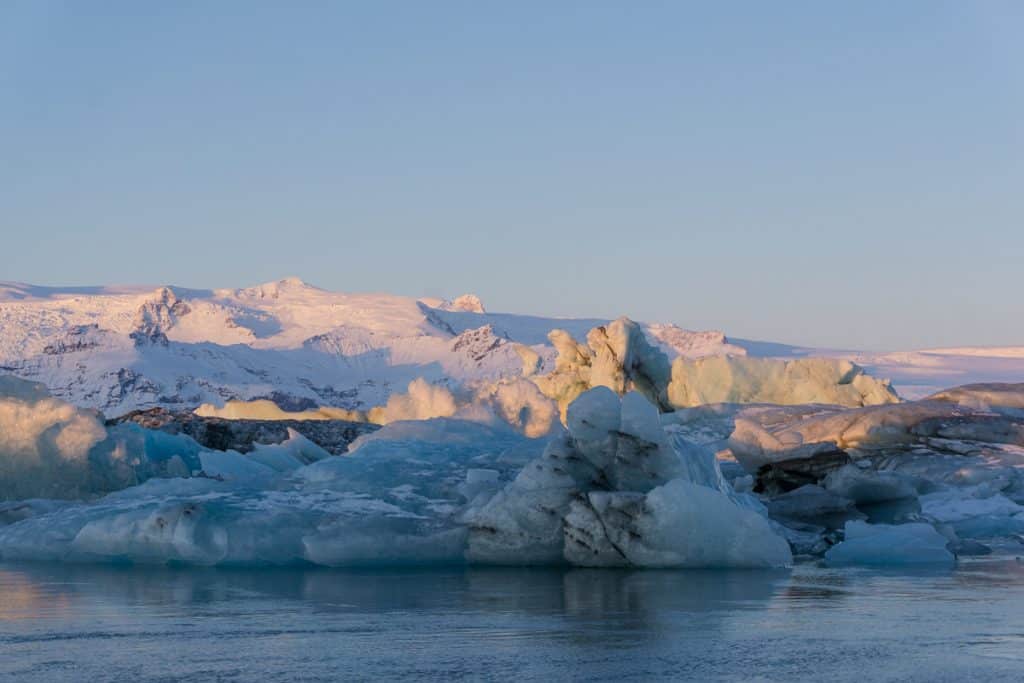
Don’t be disheartened
Iceland winter travel can be hard and if the weather is against you it can also mean you may not see what you want to.
Our first day left us struggling with Iceland a bit due to a snow storm and very little visibility. Unlike other places, Iceland does make you work for the sights it has to show you so bear with it!
Luckily, we ended up driving part of the same road again, this time with clear skies we were able to take in the landscape and experience everything we’d missed, it really took our breath away.
Manage your expectations and don’t go expecting stunning views around every corner, sometimes it may be a little cloudy.
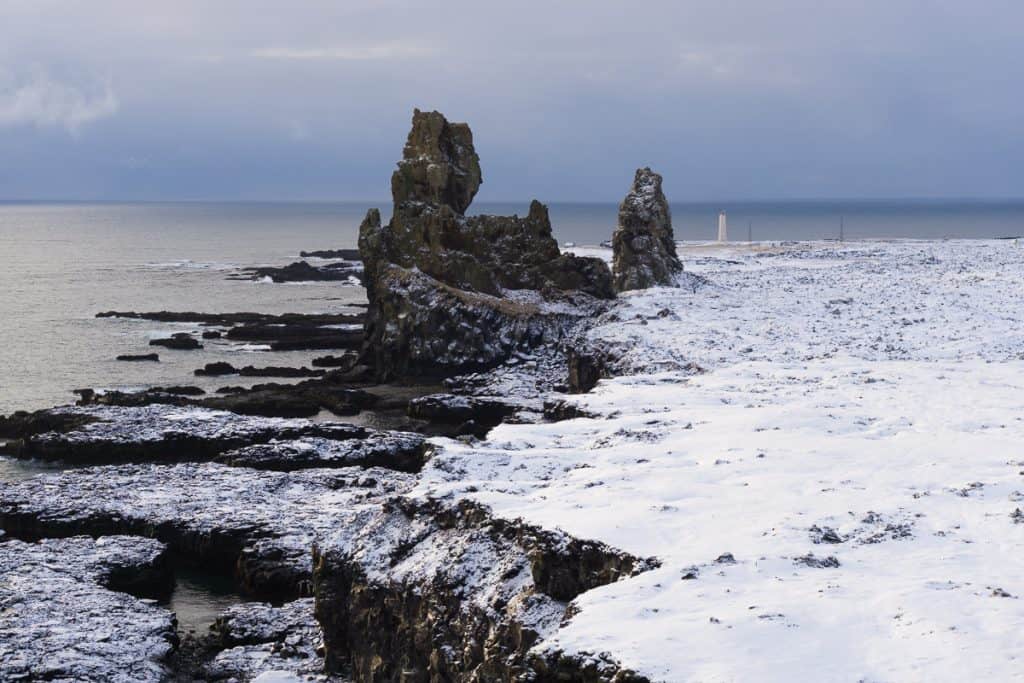
Remember: The extra work is worth it
From the early starts to the stressful drives, the cold weather and the annoying layers, and even the high cost of things – there are many things to frustrate you about your trip. But all of it is very much worth it.
Is it as good as everyone tells you? YES! Iceland isn’t overrated, but it does take planning and patience.
I feel like our trip was a great success now. We lucked out with several clear days and saw the elusive northern lights, but that was after I had a mini-meltdown when halfway through we hadn’t seen as many of the things I had planned and wanted us to and we were super stressed out about the driving.
Everyone kept telling me how great our trip looked, and it was after I relaxed and allowed us to go with the flow with whatever the country threw at us!
If you go wanting to see particular things and the northern lights for example, you open yourself up to disappointment unless you’re planning a long trip where your chances of being them are higher.
Enjoy the country and what it offers in winter, knowing your plans might need to change and you’ll have to find alternative things to do, but they might be just as good!
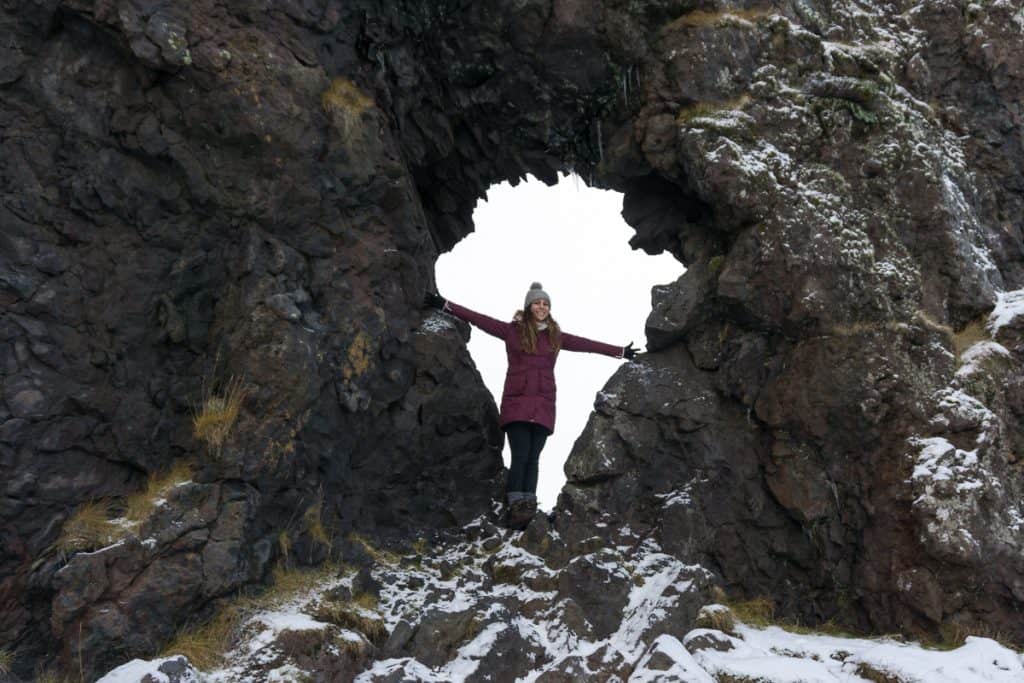
It really is magical
To see this beautifully rugged country in the winter months is an experience that you’ll never forget. It is truly one of my favourite places in the whole world.
Yes, the weather is unreliable but if you kit yourself right then you’re ready for it. If you drive sensibly giving yourself time to get from place to place you’ll be able to see snow-covered mountains, huge waterfalls, and stunning landscapes and not stress.
It’s a magical place, so do what you can, and enjoy all that Iceland in winter has to offer!
Where to stay in Iceland
Accommodation in Iceland can be expensive, especially if you leave it until the last minute to book and have limited options.
The places you’ll most likely be staying in winter are Reykjavik, Vik, and Hof, or near Jökulsárlón Glacier Lagoon and Snæfellsnes.
Note that some of the following are affiliate links.
Spend a couple of nights in Reykjavik, or use it as your base.
Where you stay will depend on your budget, but everything from hostels to hotels and Airbnb are options. For a budget option try Loft Hostel or look at apartments in the city centre that will allow you to do some of your own cooking and save money!
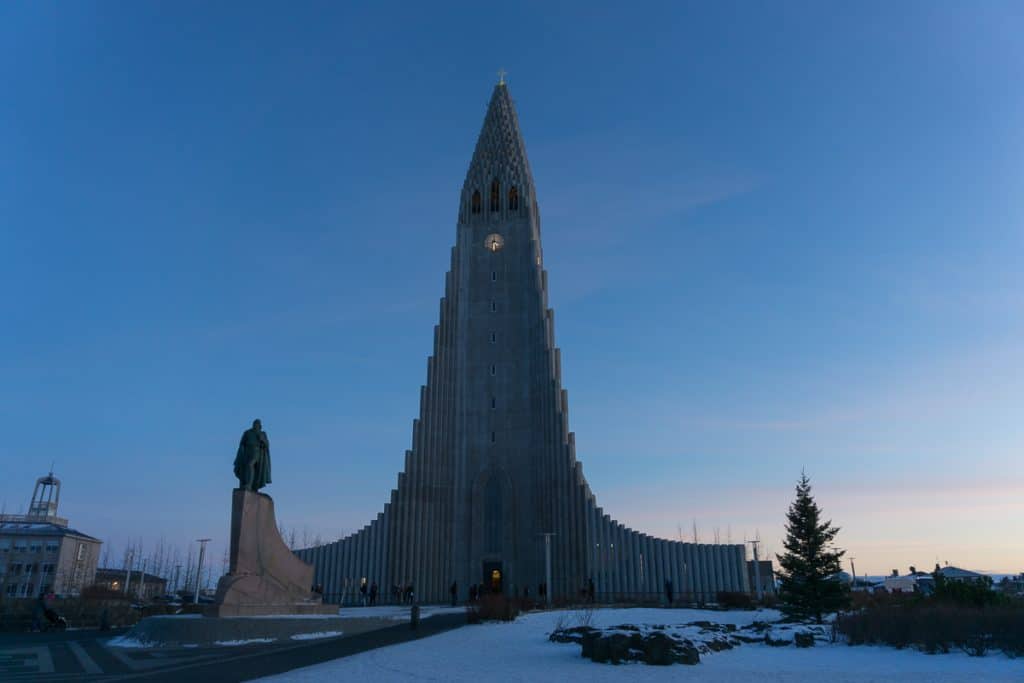
Vik makes a great stop on the drive to Jökulsárlón Glacier Lagoon, and by breaking the journey you’ll be able to see many more places along the way. Vik itself is a great destination, with black sand beaches and striking rock formations.
Note that there are few places to stay in Vik itself, so you might need to consider the surrounding area as well. Icelandair Hotel Vik and Kosy Vik are located in Vik itself, close to the beach, and are great mid-range options, or even with considering for solo travellers because a room in a hostel isn’t cheap!
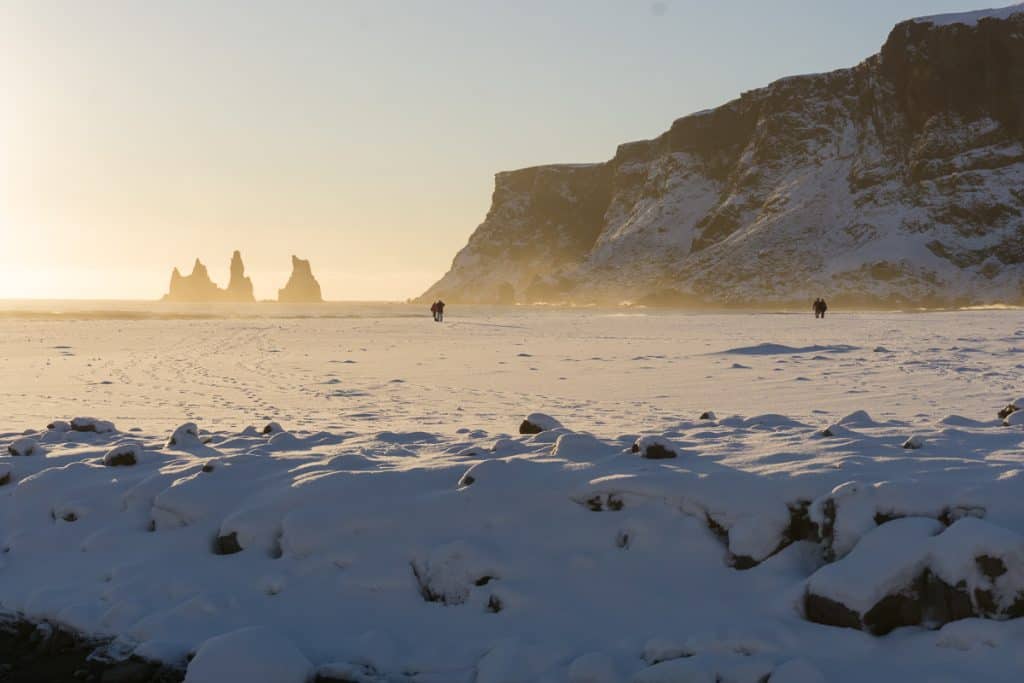
Jökulsárlón
I can HIGHLY recommend the Fosshotel Glacier Lagoon . It was an amazing place to stay for the night before we went to watch the sunrise at the Jökulsárlón lagoon just down the road.
The rooms were beautifully done with high ceilings and large windows to try and spot the Northern Lights from. Their included breakfast was a huge, tasty buffet spread, and perfect to set us up for the day.
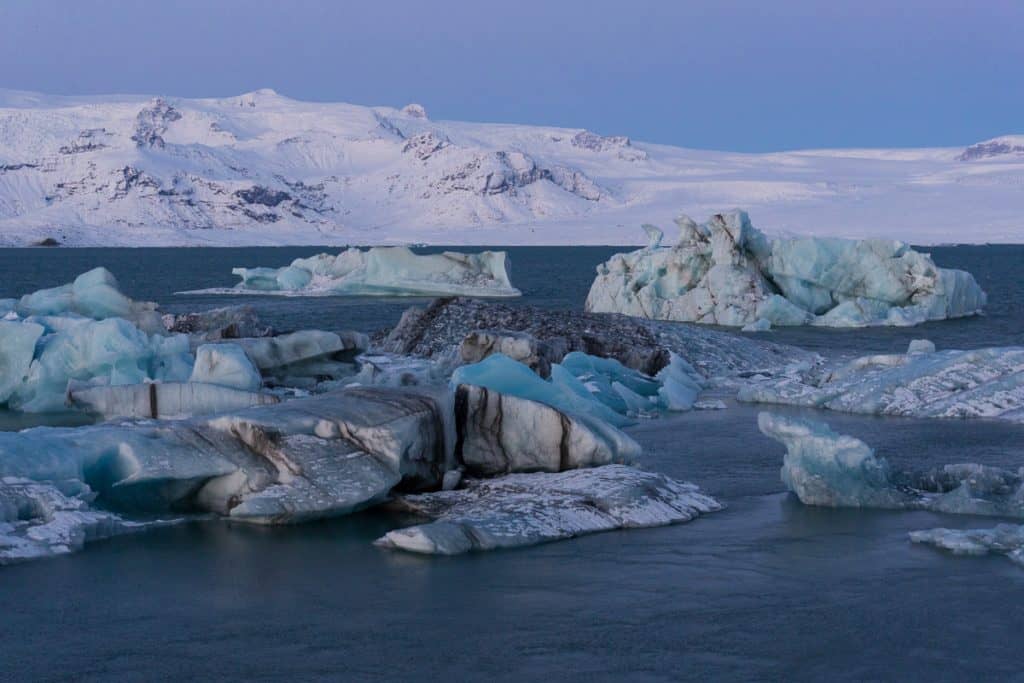
Snæfellsnes
The peninsula has a lot of accommodation spread out across it, and it’s worth staying a night somewhere to give you more time to explore.
You don’t need to be too particular since you’ll likely drive around most of it anyway, but we loved staying near Arnarstapi , and it’s where we saw the northern lights!
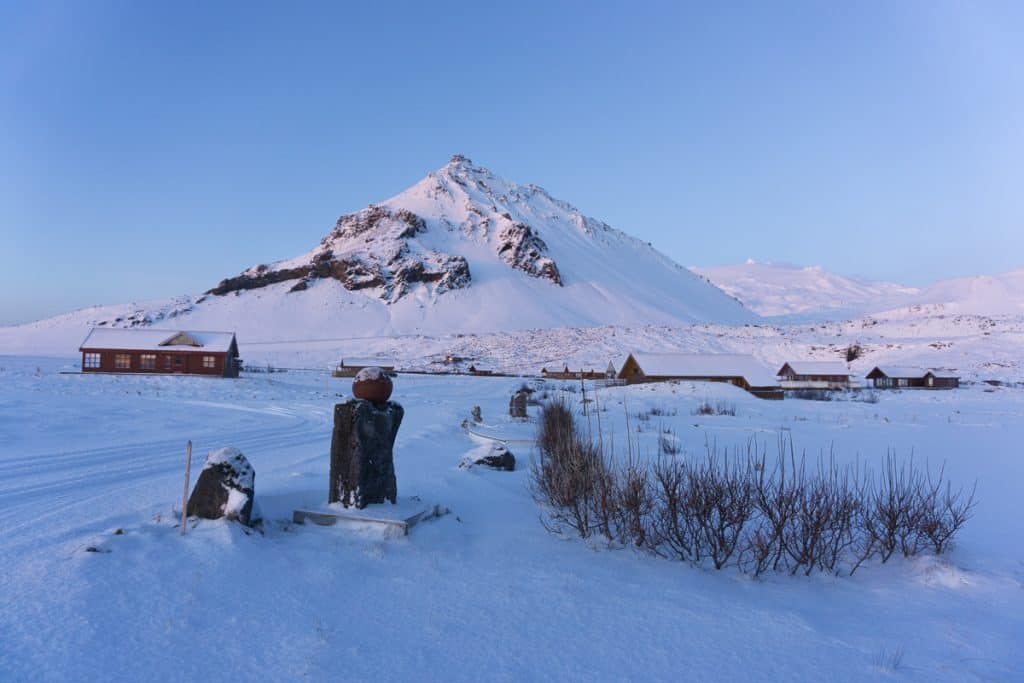
Planning your Iceland trip? Check out these posts:
- Without a car? Check out The Best Iceland Winter Tours: Getting Around Without a Car
- Want to have an epic experience? Read Silfra: Snorkelling Between Tectonic Plates in Iceland
- Visiting in November? Read What it’s Like Visiting Iceland in November + Top Tips For Your Trip
- Game of Thrones fan? Check out the Game of Thrones Locations in Iceland Guide + Map to Find Them
- Want to see epic scenery? Check out 21 Epic Hikes in Iceland (For All Levels!)
Sonja x If you liked it, pin it!
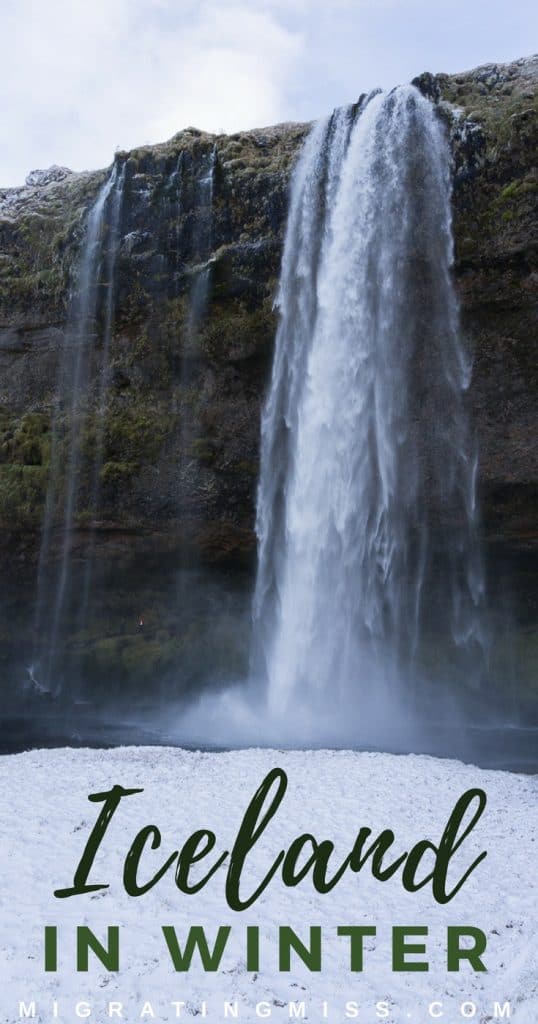
Sonja - Migrating Miss
Sonja is from New Zealand but now lives in Scotland with her husband and two little boys, after having lived in 5 other countries along the way including the USA, Australia, Canada, and Spain. Travelling has always been her passion and she has now made it her full-time job and worked in the industry for the last 8 years. She shares her living abroad experiences and best tips to make your travel experiences the best they can be!
10 thoughts on “ Iceland in Winter: 25 Things To Know Before You Go ”
I love your photos Sonja! Iceland is so beautiful in winter, but as you say a whole different ballgame than during the summer! We had quite a few scary situations on the road, and I’m glad we didn’t go for a huge road trip, but rather just a day trip in the car! For our brief trip in December, guided tours were definitely the way to go for a relaxed experience!
Thanks so much! I’d love to go in summer as well to see what it’s like, although sandstorms are an issue then too haha. We definitely had some hairy moments too! In hindsight I wouldn’t have been so ambitious with travelling so far. It’s easy to look back now and say it was fine because overall it was a great trip, but at the time my blood pressure was definitely up haha.
I want to go to Iceland so badly but this was seriously SO helpful. I would definitely be looking at going in the winter (mainly for the northern lights and also I freakin love winter) but some of these things I’d never have even considered. And the horses oh my goshhhhhh. Seriously saving this post for future use. And sending it to my mom to convince her we def need to go to Iceland.
Thanks!! I’d definitely recommend it but like I said, be prepared haha. You can still go a little earlier or later (like October or March/April) and be able to see the northern lights. They’re around all year, it’s just that in winter you see them the most and it’s darker!
Absolutely beautiful and informative post! Thanks for sharing this helpful info. I’m yet to visit Iceland and these days I’m kicking myself as to why I didn’t include it on my 3-month Europe trip back in 2013, it seems so popular now! Obviously it would be cold and windy there but I didn’t realise the strength of the wind would be enough to rip off a car door at times – crazy stuff! I’ll definitely be referencing yoir tips for when I do get to visit, awesome advice 🙂
It has definitely increased in popularity, but just make sure you plan a trip next time you’re over haha. I hope you do make it soon! 🙂 🙂
So much good info here! I’ll be bookmarking it now haha.
Aw thanks!!! 😀
What an amazing photos!! Iceland looks so amazing, I hope to get a chance to go someday! Thanks for sharing Migrating ?
Thank you!! 😀
Leave a Reply Cancel reply
Your email address will not be published. Required fields are marked *
Save my name, email, and website in this browser for the next time I comment.
Sign up for tips, info, and travel antics delivered once a month to your inbox. Go on.
- All Tours & Activities
- Northern Lights Tours
- Golden Circle Tours
- South Shore Tours
- Blue Lagoon Tours
- Sky Lagoon Tours
- Hvammsvík Hot Spring Tours
- Hot Springs & Pools
- Volcano Tours
- Adventure Tours
- Reykjavik City Tours
- Super Jeep Tours
- Special Offers
- Private Tours
- Meet on Location
- Highland Bus
Your Cart is empty
Looks like you haven’t picked any tours yet!
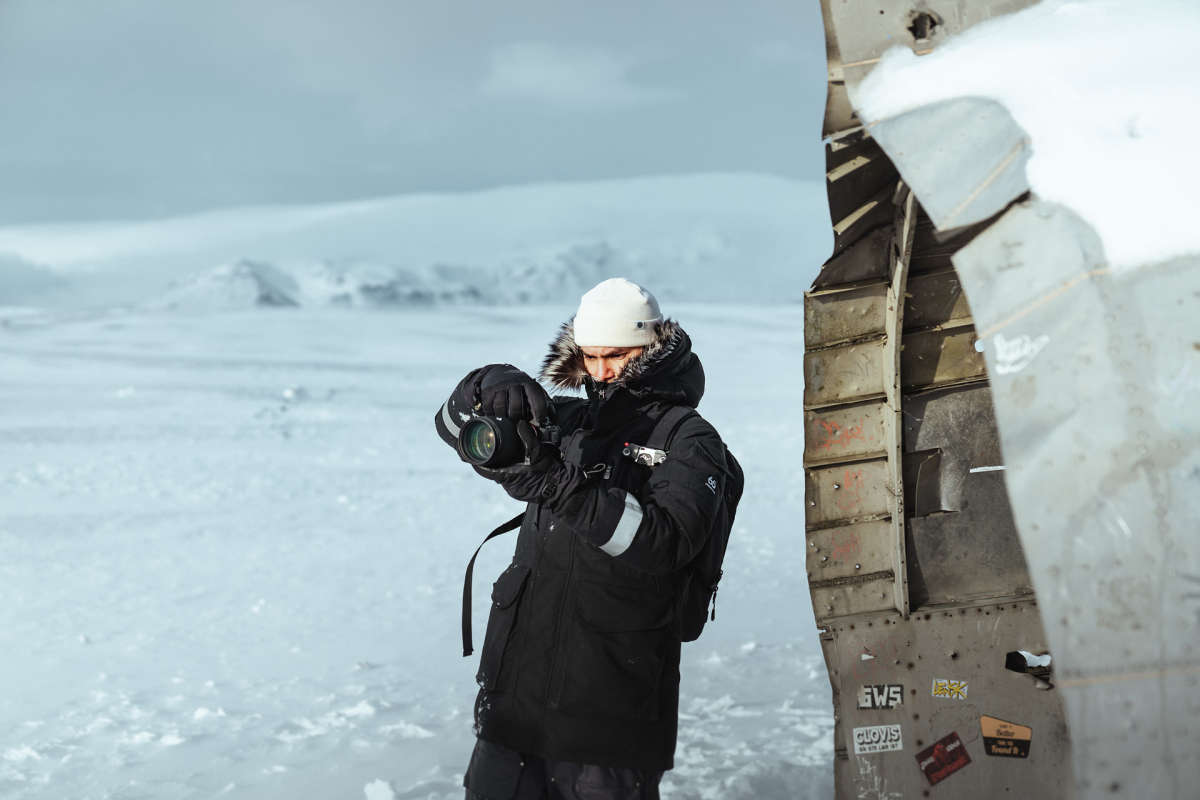
Why Visit Iceland in Winter: Your Complete Guide
December 21, 2023
Snow-strewn landscapes, spectacular glaciers, and the white peaks of volcanoes—Iceland in winter offers all the wonder you would expect from the land of ice and fire. It’s a fantastic time to visit, when Iceland is at its most magical, thrilling, and welcoming.
In this blog post, you’ll discover the sights, attractions, and unique experiences that make winter in Iceland so special. And you’ll find some of the most important information to know to enjoy your trip.
At Reykjavik Excursions, we offer various tours and activities for winter travel in Iceland . They give you the easiest way to see the country in all of its wintry glory .
When are the winter months in Iceland?
In Iceland, winter is the longest season, incorporating the months of November, December, January, February, and March. This is the time when Iceland is at its coldest and darkest.
Once upon a time, when Iceland used the Old Norse calendar, the country had only two seasons—summer and winter—that each lasted for six months. According to this traditional calendar, April would be a winter month too , as winter would run from the last week of October to the last week of April. In fact, still today, the first Thursday after 18 April is celebrated as a national holiday in Iceland—to welcome the warmer, longer days of summer. Of course, though, official summertime doesn’t stop the temperature often being below freezing, sometimes even into May.
What is Iceland like in winter?
Being so far north, Iceland in winter is typically cold and dark. It’s also mesmerizingly beautiful—with snow-covered mountains, gorgeous pale wintry light, and the opportunity for ice adventures.
In Reykjavik, temperatures between October and March range between 0.6°C (33.1°F) and 4.9°C (40.8°F). While they can fall a lot lower than that (the city’s record low temperature is -19.7°C, or -3.5°F), usually they don’t often drop too far below zero. You should expect it to be much colder outside of the city though.
That’s why, at this time of year, the glaciers that have formed Iceland’s landscape grow larger. These can be explored by foot or snowmobile, and you can discover the world of caves and caverns that form beneath them too.
Of course, we couldn’t talk about Iceland in winter without mentioning the northern lights. An unbelievable phenomenon for which Iceland is particularly renowned, the aurora borealis shimmer across clear winter skies at night. It’s not something to be missed.
In winter, Iceland’s villages and towns show a different side too. Much of life goes on indoors and every home or bar becomes a cosy, warm, and welcoming place to be. There’s nothing quite like that feeling of coming in from the cold to sit down by the fire with a beer or a mug of cocoa.
Christmas in Iceland
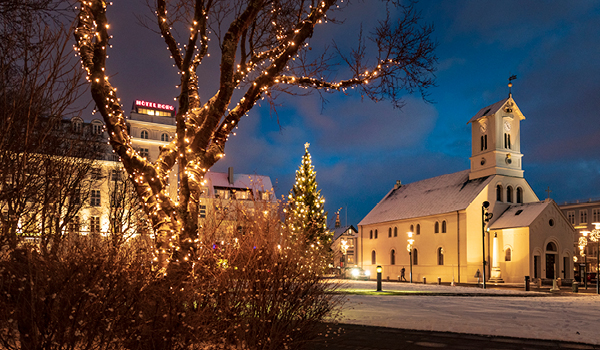
Did you know that there is not one, but thirteen Santa Clauses in Iceland’s Christmas traditions ? That every year a book flood takes place and that a sock-stealing Christmas cat stalks the streets of Reykjavik? Browse our selection of things to see and do at Christmas in Iceland for some inspiration.
Is Iceland completely dark in winter?
The far north of Europe has the reputation for being completely dark throughout the winter. But this is actually a bit of a myth.
On the shortest day of the year—the 21 December—Reykjavik has over four hours of daylight, with the sun rising at 11:22 and setting at 15:29. But at the beginning of November, Reykjavik gets eight hours of daylight. And in early March, the day lasts for over 10 hours.
Of course, the further north you go, the shorter the days will become. But there’s still plenty of daylight to enjoy, and plenty to enjoy indoors when it’s dark outside.
Is Iceland snowy in winter?
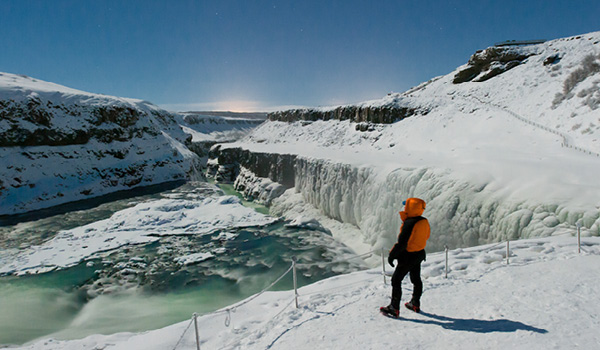
Iceland in winter has very low temperatures—which makes the whole country very snowy. It does have some of Europe’s largest glaciers for a reason!
But how much does it snow in Iceland? In Reykjavik, there are only four months of the year where there is no snowfall at all: June through to September. In any average year, you can expect at least a little bit of snow in every other month of the year.
In winter, from December to March, the Icelandic capital sees between 17 and 23 centimetres (between 6.7 and 9 inches) of snow each month on average, according to the Icelandic Met Office . March is typically the snowiest month, with 23.2 cm (9.1 inches) of snow.
Yet just as temperatures fall as you leave the city, snow is more likely outside of Reykjavik, particularly at height.
Driving in Iceland in winter
Driving in Iceland during the winter is often a worry for visitors. However, the roads are well maintained and Icelanders typically travel around the country by car—even during winter.
You can enjoy the freedom of exploring by car for yourself, on one of the many self-drive tours of Iceland that we offer at Reykjavik Excursions.
But weather conditions in Iceland can be volatile, particularly during the winter. And you may not want to risk the hassle of road closures or the risk of bad weather.
If you do choose to drive, consider some of our advice:
Hire a car prepared for winter conditions. Trusted car-hire operators should make sure that your car is ready for the winter road.
Always plan ahead. Give yourself plenty of time to get to your destination. You don’t want to be caught out when it gets dark.
Check the weather forecast before travelling. If heavy snow or a winter storm is forecast, it’s best not to travel. For the most reliable information, use the Iceland Met Office's website .
Stick to the major roads. Southern Iceland has paved and reliable roads. But in Iceland’s Highlands , or in parts of the north and east, that’s not always the case. We wouldn’t recommend that you drive unpaved roads unless you’re experienced. Always check the road conditions beforre heading out for a drive.
Things to do in Iceland in winter
So, what are the best things to do in winter in Iceland? Explore 9 of our favourite activities to enjoy in Iceland during the colder season.
1. See the northern lights
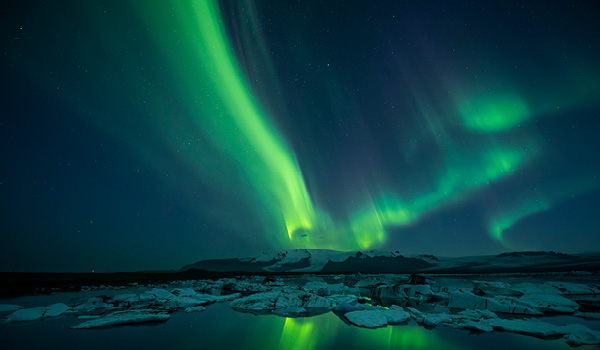
The northern lights are one of the biggest reasons why visitors come to Iceland in winter. That’s because it’s during those long dark nights that this breath-taking display is easiest to see.
For those who don’t know, these dancing waves of light are particles from the sun that crash into the Earth’s atmosphere. They’re most commonly witnessed at the planet’s poles—the north and the south—which makes Iceland a great place to experience the spectacle.
You don’t need to go far from Reykjavik to see them. For example, they can be witnessed from Seltjarnarnes Peninsula, at the northwestern edge of the city. But there are great places across the south of Iceland where you can combine glorious scenery with a glimpse of this extra-terrestrial display.
Explore our range of northern lights tours to find the option that’s best for you.
2. Soak in hot springs and geothermal pools
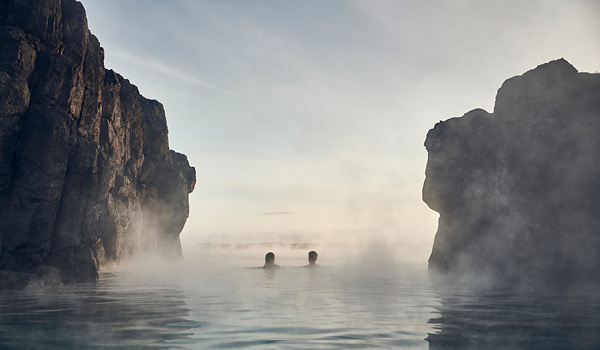
A wholesome, calming experience of Iceland in winter comes from immersing yourself into the warm waters of the country’s geothermal springs and pools. Iceland bears the nickname of the land of ice and fire thanks to the volcanic activity that heats the world below (and sometimes above) the surface of the earth.
Iceland’s geothermal activity makes for an incredible destination for those who love spas and saunas. The Sky Lagoon is a popular option just outside Reykjavik, while the Blue Lagoon is probably Iceland’s most famous spa location.
Yet there are many other hot springs and pools to explore too. Regardless of where you choose, the natural spa experience is a real thrill when you’re surrounded by snow.
3. Travel the famous Golden Circle route
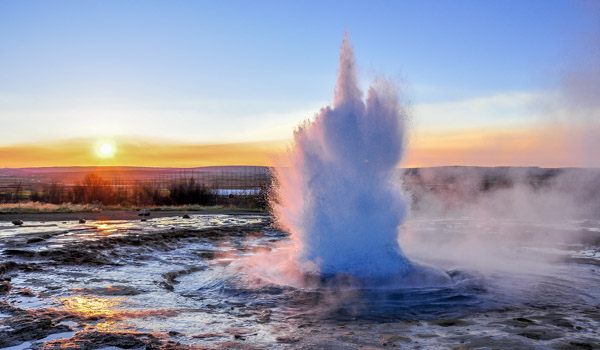
As Iceland’s natural wonders go, there aren’t many more famous than the Golden Circle .
The Golden Circle is the name of the tour itinerary that includes three of south Iceland’s most famous sights: Gullfoss Waterfall, Geysir Geothermal Park, and Þingvellir National Park. Here, marvellous scenery combines with fascinating history, to create experiences that should definitely be included in any trip to Iceland in winter.
In the Geysir Geothermal Park, you’ll see the violent bursts of water that are propelled into the air thanks to geothermal activity. At Gullfoss, witness one of the most awesome torrents of water in Iceland. And in Þingvellir, discover the site of the oldest parliament in the world.
The benefit of visiting in winter? You’ll experience these sublime landscapes without the crowds—but with a splendid dusting of snow instead. Find out the best way to visit with our Golden Circle tours .
4. Visit the South Coast of Iceland in winter
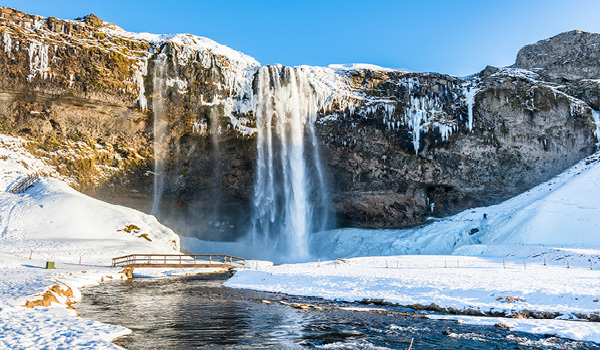
Iceland’s south shore is one of the most fascinating regions in Icleand and there’s plenty of attractions to visit.
Seljalandsfoss and Skógafoss, for example, are two waterfalls in the region that are inspiring in any season. Meanwhile, the national parks of Vatnajökull and Skaftafell host the ancient glaciers that have created Iceland’s sublime landscape, such as Eyjafjallajökull, Sólheimajökull, and Mýrdalsjökull.
One highlight of the south coast is the region around Jökulsárlón, the glacial lagoon . This lagoon has been created by the melting of the Breiðamerkurjökull glacier. As a result, it’s a very special place, where you can see icebergs floating across the serene waters.
The nearby Diamond Beach —with its ice crystals stranded on the black sands—shouldn’t be missed either.
But that’s not all. Explore our full range of south coast tours here.
5. Go glacier hiking and visit ice caves
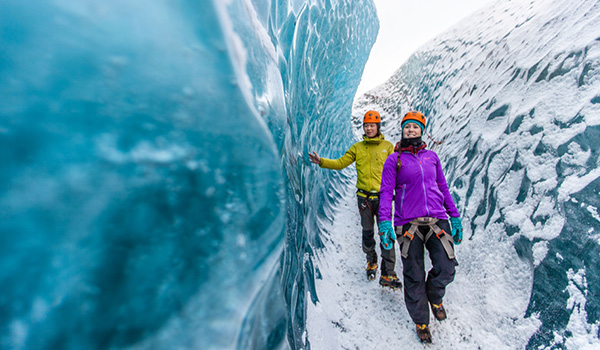
In many ways, its glaciers are what make Iceland so special. And there’s no better moment to witness Europe’s largest sheets of ice than in winter. In fact, with glaciers covering about 11% of the whole island, you’d be missing out if you didn’t pay them a visit.
One of the easiest glaciers to reach is Snæfellsjökull. It’s also one of the most beautiful—and can be seen from Reykjavik on a good day. It sits on the Snæfellsnes Peninsula of western Iceland, where you can see many different landforms—from glaciers to black sand beaches—all in a day.
Alternatively, combine a glacier walk with a visit below the ice. Iceland’s ice caves are a truly unique experience that’s only possible during the winter, when these cold caverns form. The Solheimajokull glacier walk is one of the favourites among visitors to Iceland.
While you’re here, check out all of the glacier and ice cave tours we have available.
6. Take a snowmobile tour
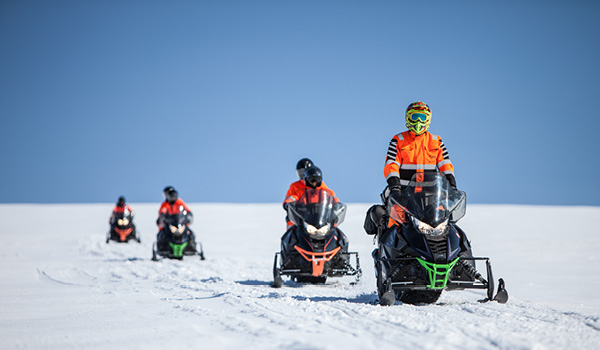
Rather than just walking on the glaciers, why not turn your journey across these massive ice sheets into a dynamic, and even more thrilling, adventure?
Iceland is among the world’s best places to take a glacier tour by snowmobile. This way you can see the magic of these vast expanses of ice, while enjoying the adrenaline rush of higher speeds. In winter, you’ll have to wrap up warm, but it’s one of the most exciting experiences you can have on the ice.
Langjökull and Mýrdalsjökull are two popular glaciers to explore on snowmobile. Explore our snowmobiling tours to book yours.
7. Experience a whale watching tour
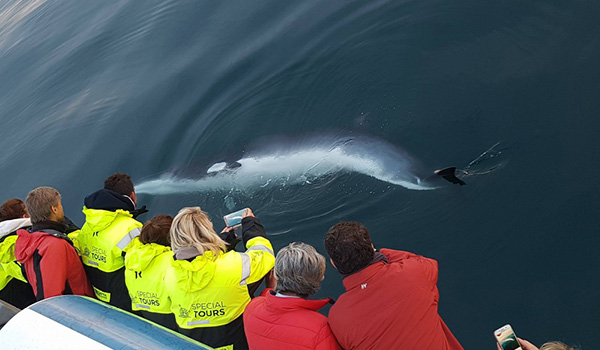
Iceland boasts a surprising range of charming wildlife—from Arctic seals to reindeer, from puffins and white-tailed eagles to the unique Icelandic horses. Yet there’s nothing quite as majestic as the whale. Over 20 species of whale call the seas around Iceland home. These include humpback whales, orca, and even blue whales.
Of course, not all of these amazing creatures are here all year round. But during the winter you can see sperm whales, humpbacks, killer whales, and more species that often venture deep into Iceland’s sea fjords. You’ll see dolphins and seals throughout the year too.
Both Reykjavik and Akureyri in the north are great places to take a whale watching tour. You can explore your whale watching options here .
8. Try winter snorkelling and diving
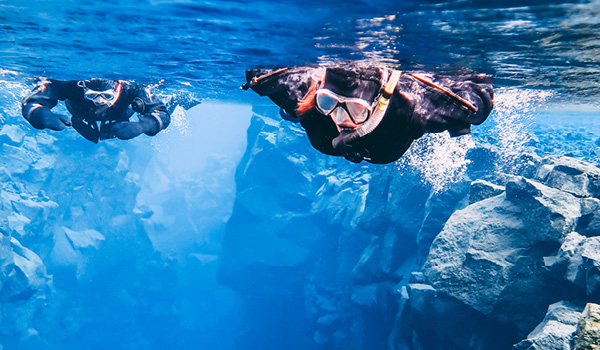
Diving or snorkeling in winter? In Iceland? You bet.
We won’t tell you that it’s warm (although it’s not exactly warm in summer either). But the beauty of submerging yourself into one of Iceland’s lakes is well worth the shock.
One of our favourite places to dive in Iceland is Silfra, in the heart of the Þingvellir National Park. Silfra is a rift in the earth created as two tectonic plates—the Eurasian and the north American—have drifted apart.
You’ll find this deep, mysterious underwater ravine in Þingvallavatn, the largest natural lake in Iceland. What’s particularly cool about the diving experience here? You’ll be swimming in the meltwater from glaciers.
While Silfra is one of the best, it’s not the only diving experience you can have in Iceland. Find out more in our snorkelling and diving tours .
9. Explore the city of Reykjavík
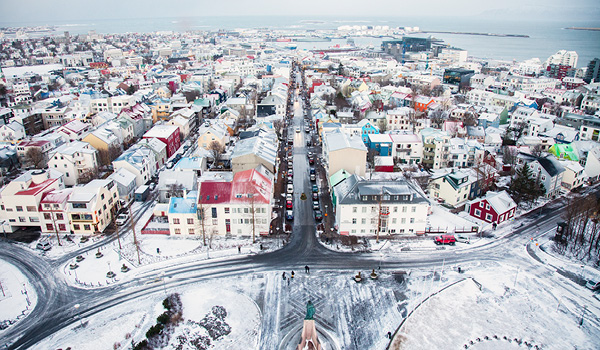
Alongside spectacular scenery, unique activities, and unforgettable experiences, Iceland also offers its fair share of cultural opportunities too. If you’re going to spend some time in any city in Iceland, make it Reykjavik.
Iceland’s capital is an exciting, fascinating, and wonderfully welcoming city at any time of year. But maybe in winter it’s extra-special. Thanks to its unique food and drink culture, impressive architecture, and friendly residents, it makes for an unforgettable experience.
Here’s some of the things that you can get up to:
• Visit the Hallgrímskirkja church, one of the tallest buildings in the country with architecture inspired by the unique geology of Svartifoss waterfall.
• Head up to Perlan. Expect views over the city from Öskjuhlíð hill, along with a magical natural museum.
• Stroll along Laugavegur and Skólavörðustígur. Reykjavik’s two central streets are bustling corridors of boutiques and bars—and are particularly beautiful in winter.
• Take a helicopter tour. Witness Reykjavik and the surrounding area from above.
• Enjoy an authentic food and drink tour. Sample some Icelandic delicacies such as harðfiskur (or stockfish) or hangikjot (smoked lamb). And wash it down with some local beer.
Discover many more things to do in Reykjavik . Or let us show you around on one of our Reykjavik tours .
What to pack and what to wear in Iceland in winter?
When considering what to wear to visit Iceland in winter, remember one simple thing: it’s going to be pretty cold. That means you’ll need to pack wisely. We recommend bringing a waterproof and windproof jacket, thermal layers, as well as a hat and gloves. If you’re going to visit any of the outdoors sights, sturdy waterproof shoes are a must too.
Generally, it’s smart to dress in layers. These tend to be warmer and they’re more convenient to take off if temperatures change.
Whatever you do, bring a change of clothes too, to change into if you get wet.
Is Iceland worth visiting in winter?
Yes, Iceland is worth visiting in winter. Many of the country’s most famous sights—from the Blue Lagoon to Jökulsárlón, from the Golden Circle to Vatnajökull National Park—are still accessible. And what’s more, you’ll see them in all their fabulous winter glory.
Yet there are particular perks that only visitors to Iceland in winter can enjoy. Consider the northern lights, probably one of the most jaw dropping spectacles on earth. Or the mystery of Iceland’s ice caves. These are simply experiences you wouldn’t be able to enjoy at any other time of year.
Is it best to visit Iceland in winter or summer?
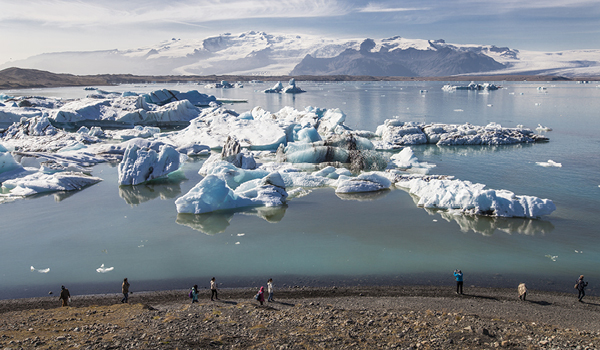
Ultimately, when you want to visit is up to you. There’s no “best” time to visit Iceland . Really, that will depend on what you want to get up to.
If you’re up for experiencing the northern lights, gorgeous snowy landscapes, winter diving, snowmobile rides, and more, the winter is the best time to come. But the summer is full of its own joys too, including the midnight sun, warmer temperatures, and opportunities for outdoor adventure.
Whichever season you prefer to visit, the people of Iceland will make you welcome.
Come and visit Iceland in winter with Reykjavik Excursions
Iceland in winter is a destination that’s icy and serene, and warm and welcoming, in equal measure. With its mighty glaciers, winter wildlife, and the superb display of the northern lights, it promises an experience you’ll never forget.
Whenever you decide to come to Iceland, trust Reykjavik Excursions to make your travel easier. We run tours across Iceland’s south coast throughout the year and we can help you organise your own tailored journey too. We’ll help you travel in comfort, style, and safety no matter the season.
Explore our winter tours and activities in Iceland to start your adventure.
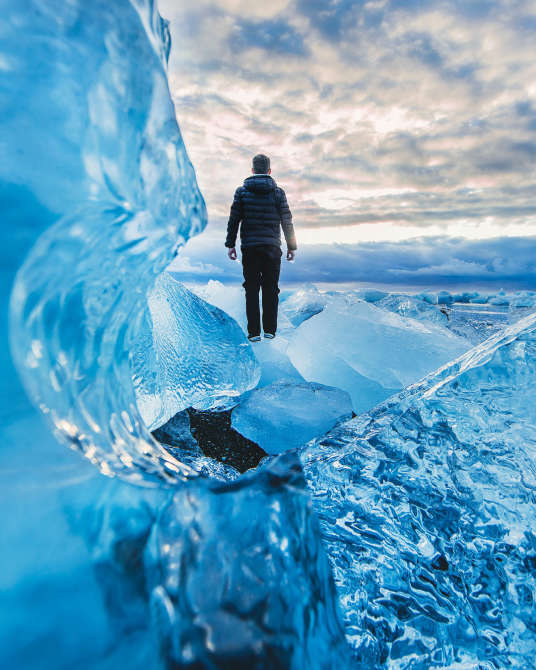
Tours in the spotlight
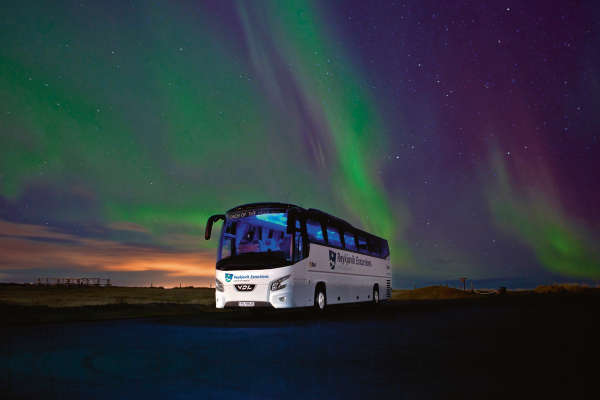
NORTHERN LIGHTS
Northern Lights Tour
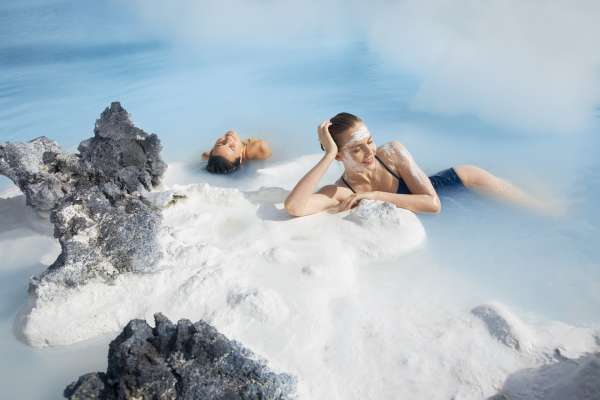
BLUE LAGOON
Reykjavík - Blue Lagoon Comfort Admission & Transfer
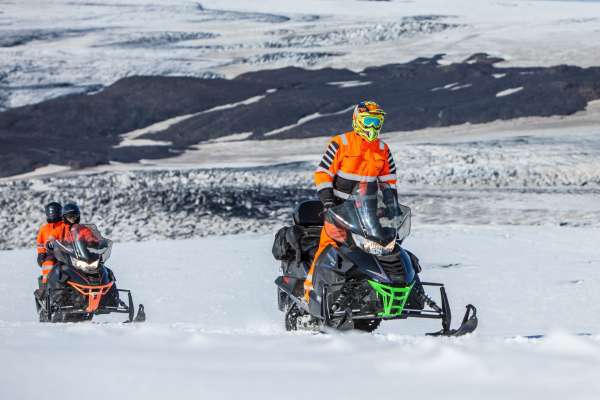
SNOWMOBILING
South Coast & Glacier Snowmobile Adventure
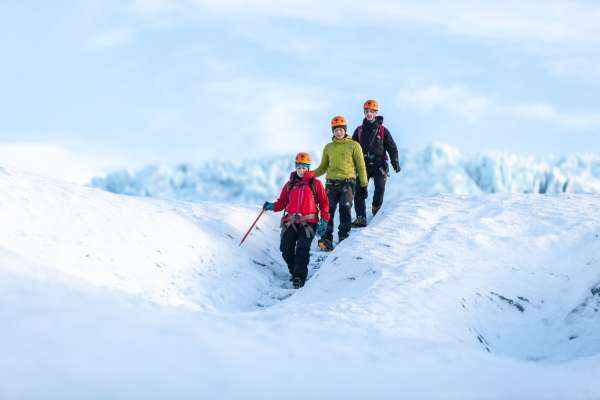
South Coast & Glacier Hiking
Reykjavik excursions blog.
Get inspired! Information and tips and must see places in Iceland, fun facts, customs and more.
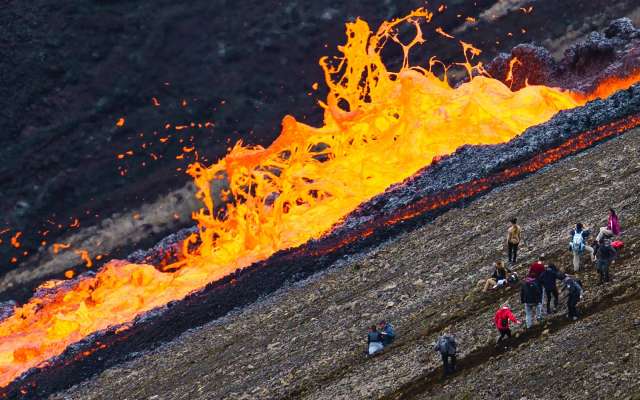
Litli-Hrútur Eruption 2023 - The New Eruption near Fagradalsfjall on the Reykjanes Peninsula
Once again, the enthralling spectacle of Iceland's Reykjanes volcano is back in the limelight! After 11 months of peaceful dormancy, the volcano is now alive and kicking, treating locals and tourists to another captivating visual performance. If you've been yearning for an adventure that's truly out of this world, this might just be your calling!

5 Amazing Things to Do in Iceland in Winter (Unforgettable Experiences!)
By Author Jurga
Posted on Last updated: March 15, 2024
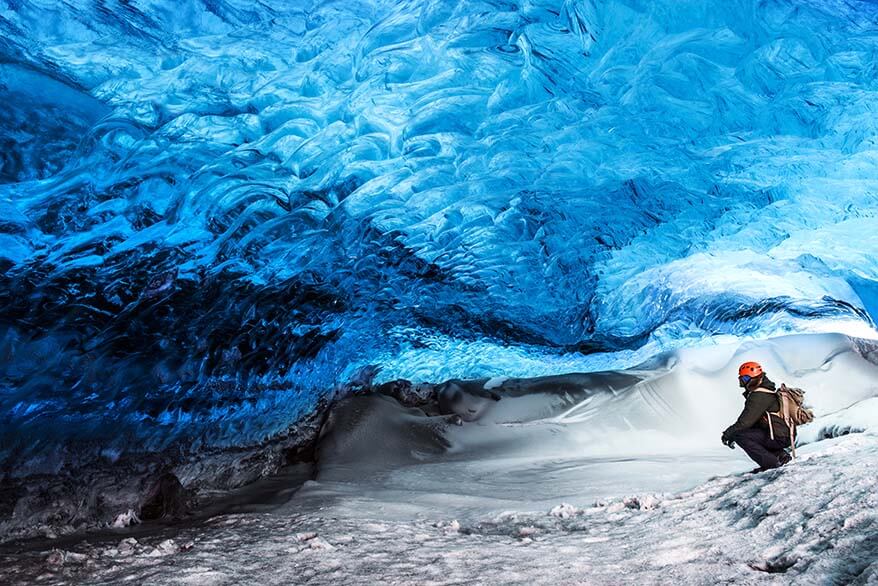
Traveling to Iceland in winter and wondering what are the best things to do in Iceland in winter? You’ll find some inspiration in this article. Take a look!
Iceland is a magical place in winter. Watch the Northern Lights, visit the ice caves, or go hiking on a glacier…. These and other incredible experiences will make your winter trip to Iceland unforgettable. In this post, you can learn about the most incredible things to do in Iceland in winter that will get you booking a flight right away!
Sure, it is cold in Iceland in winter and you will have to face the elements if you decide to visit the Arctic during winter months, but it’s definitely a once in a lifetime experience that I would recommend to everyone!
What makes Iceland so special and what can you expect of your winter trip? Here is my selection of the most unforgettable things to do in Iceland in winter. Find out!
READ ALSO: Iceland winter itinerary & Iceland winter travel tips
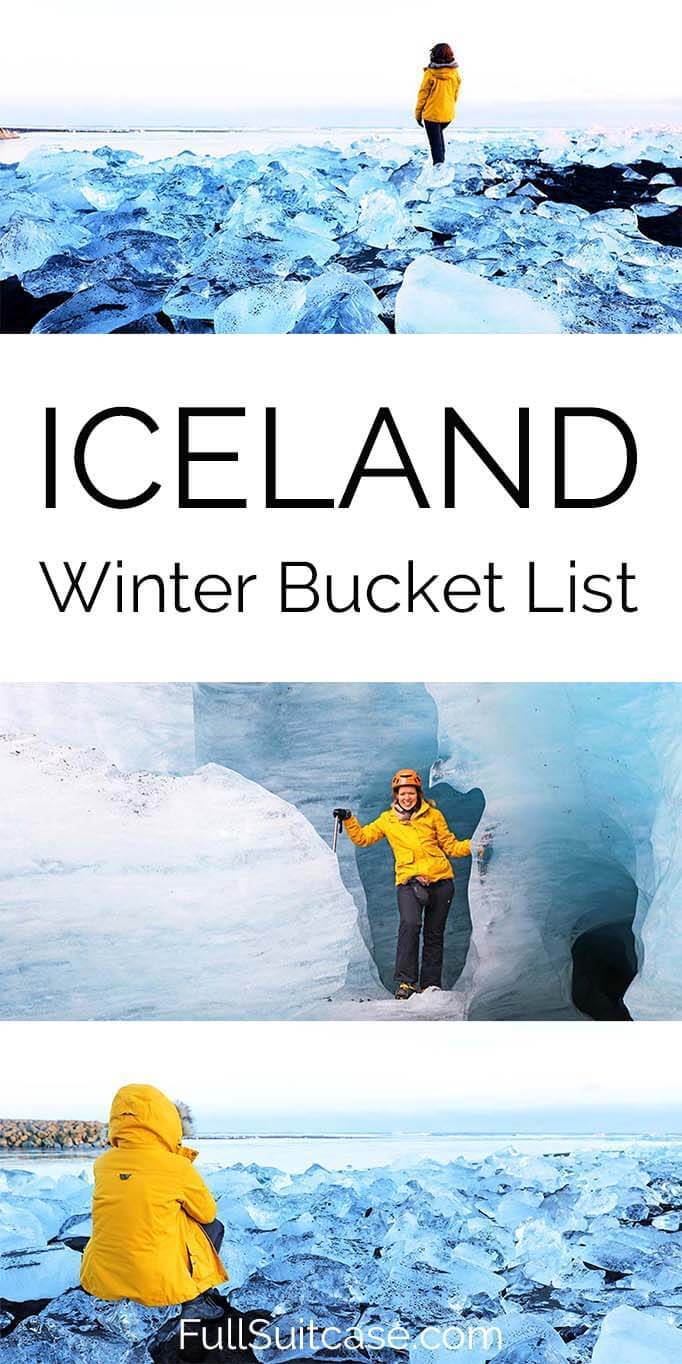
Bucket List Worthy Winter Activities in Iceland
Below is just a short list of the very best things to do in Iceland in winter. Some of these winter activities are unique to Iceland and each is a good reason to visit Iceland in winter in each own. Find out!
Here are the best experiences and things to do in Iceland in winter:
1. See the Northern Lights
The Northern Lights are one of nature’s greatest displays. It’s a dazzling experience that is difficult to describe in words because it is so unique every time. No two aurora displays are ever the same and I don’t think you could ever tire of watching them.
For many people, the chance of seeing the Northern Lights is the prime reason to travel to Iceland in winter, despite the high cost and the cold. But as with all natural phenomena, it can never be guaranteed…
With luck, you will see the sky turn green and purple and it will be one of the most humbling experiences you could imagine. But don’t get obsessed with auroras and don’t let it spoil your vacation even if you don’t see them. There are so many other exhilarating winter experiences that make a winter trip to Iceland worthwhile.
Good to know: You don’t need to go on an organized tour in order to see the Northern Lights in Iceland, but knowledgeable guides and years of experience might come in handy when it comes to aurora hunting. The biggest advantage of going with a tour is that they really do their best to find places where conditions for aurora viewing are optimal for that specific night.
✓ Here you can book one of the best-rated small-group Northern Lights tour s from Reykjavik .
LEARN MORE: Where, When & How to See the Northern Lights in Iceland
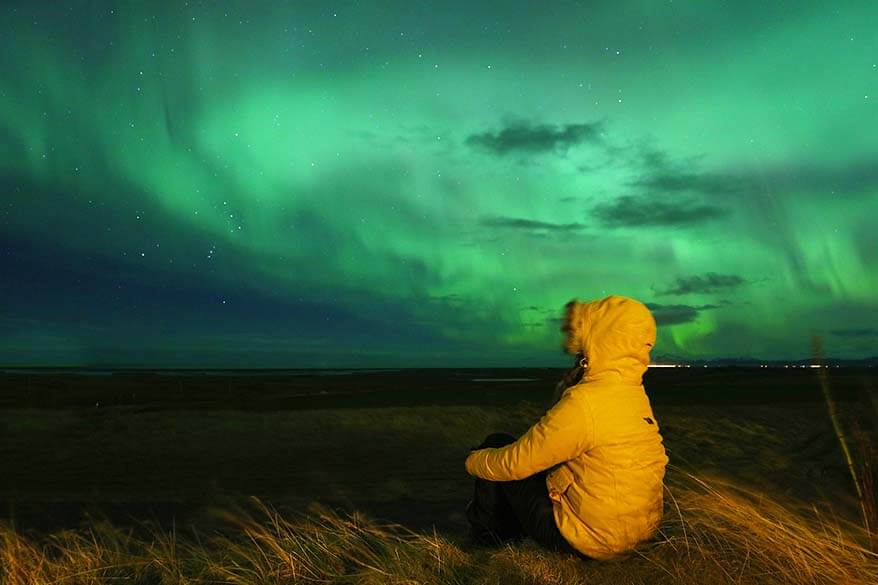
2. Experience a True Winter Wonderland – Jokulsarlon & Diamond Beach
The cold and the wind turns Iceland into a true winter wonderland, so when you travel to Iceland in winter, you’re in for a real treat. Frozen waterfalls, icebergs, water that turns into ice as you watch…
Don’t miss the black sand beach, also called Diamond beach, at Jokulsarlon Glacier Lagoon if visiting Iceland in winter! Diamond beach is located just across the road from the famous glacial lagoon. The scenery here changes all the time so make sure to check on both sides of the bridge. To me, this was the most special winter experience in Iceland. I could have stayed on that beach the whole day!
You can drive to Jokulsarlon glacier lagoon with a rental car, or take an organized tour. Note that Jokulsarlon is really far from Reykjavik and if you decide to visit Jokulsarlon from Reykjavik in one day, it will be a very long day in the car.
✓ Here you can find the best organized day tour from Reykjavik to Jokulsarlon glacier lagoon !
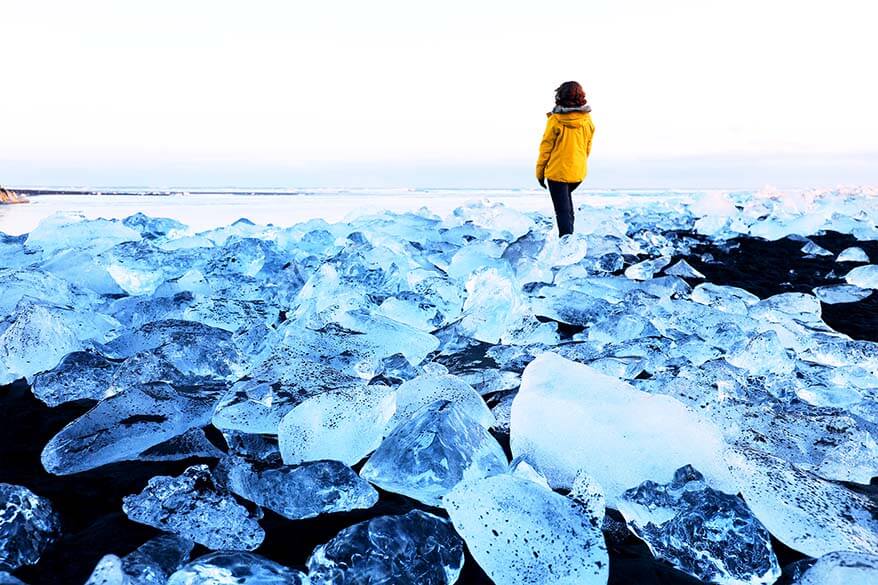
3. Discover the Ice Caves in Iceland
How amazing would it be to walk inside a glacier?! Visiting a natural ice cave is one of the winter-only experiences in Iceland, so don’t miss it. Every ice cave is different and you never really know what you’ll get to see before you go in, but they are a truly mesmerizing wonder of nature. Definitely a bucket list experience and undoubtedly, one of the best Iceland winter activities.
Ice caving is not something you can experience on your own, but no worries, there are knowledgeable guides that will take you on this epic journey under the blue ice.
There are several places in Iceland where you can visit ice caves:
The most popular tours to the natural ice caves go to Vatnajokull Glacier in South East Iceland. The best natural ice cave tours leave from Skaftafell or from Jokulsarlon – take a look at availability and if you want to do it, book well in advance.
Langjokull Glacier in South West Iceland has a man-made ice tunnel that you can visit the whole year round . There is now also this highly-rated monster truck tour that brings you to a natural ice cave that has been discovered here recently.
Katla Glacier in south Iceland has a natural ice cave that is accessible in the summer (see tours , also from Reykjavik).
TIP: Note that ice-caving tours in Iceland are extremely popular and are often fully booked long in advance. So if you are traveling to Iceland in winter, this is one experience you definitely want to book beforehand.
✓ Don’t miss this incredible experience in Iceland in winter! No matter which caves you decide to visit, be sure to book an ice-caving tour in advance !

4. Go Glacier Hiking
For those who want to get up close and personal with the ice in Iceland, I can recommend glacier hiking. This is your chance to experience a truly surreal landscape with the most spectacular scenery!
Glacier hiking was one of my favorite activities in Iceland in winter. It’s a humbling experience, one that makes you truly appreciate the vastness and the power of nature.
Glacier hiking is not strenuous, but don’t attempt it on your own! You do need appropriate gear and a guide who is familiar with the area and the ice. Just like many other Iceland winter activities, glacier hiking is something you need to book in advance.
✓ Here you can book your glacier tours . It’s also possible to go glacier hiking as a day trip from Reykjavik .
LEARN MORE: Glacier hiking in Iceland
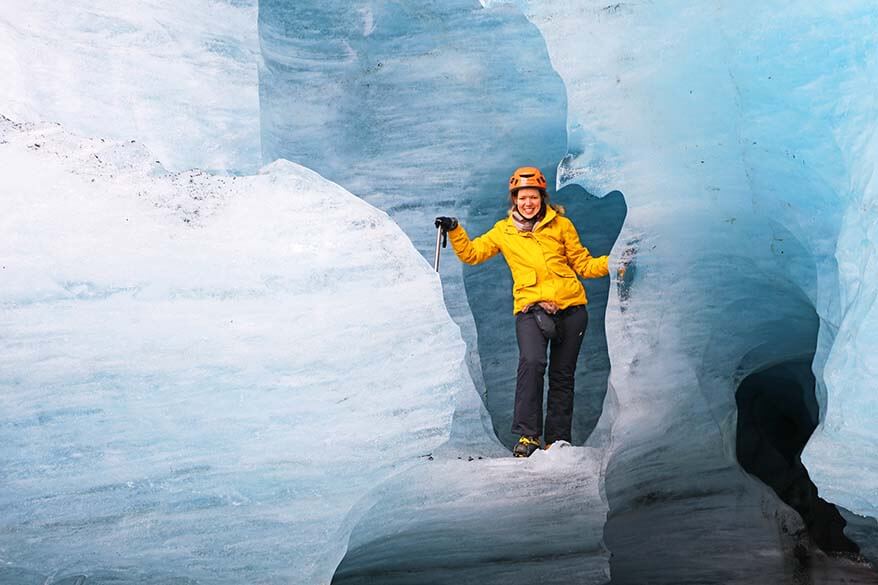
5. Bathe in Iceland’s Geothermal Pools
Bathing in a hot geothermal heated pool in winter is definitely a bucket list experience. This is one of the most fun winter activities in Iceland that everyone can easily do.
There is no better way to end a day full of exhilarating winter activities than taking a dip in a hot pool on a cold winter evening.
The Blue Lagoon is a very popular option because of its proximity to the Keflavik airport and to Reykjavik. The recently opened Sky Lagoon in Reykjavik is quickly gaining in popularity as well. But Iceland has many other natural geothermal pools all over the country!
Secret Lagoon and Laugarvatn Fontana Wellness are both good options along the Golden Circle, and there are countless other geothermal pools all over Iceland.
In the North of Iceland, the most popular options include Myvatn Nature Baths and Geosea Geothermal Baths in Husavik. One of our personal favorite local pools in Iceland is Sundlaugin á Hofsósi .
Good to know: Pretty much every town in Iceland has a swimming pool heated with geothermal energy, saunas, and hot tubs. These local pools offer great value for your money and going for a swim is one of the best things to do on cold dark winter evenings in Iceland!
TIP: Blue Lagoon, Sky Lagoon, Secret Lagoon, Fontana Wellness are all very popular and so it’s best to book your tickets in advance.
✓ If you are in for a winter hike and a dip in a natural hot tub, you can also hike to Reykjadalur Valley that’s famous for its hot spring .
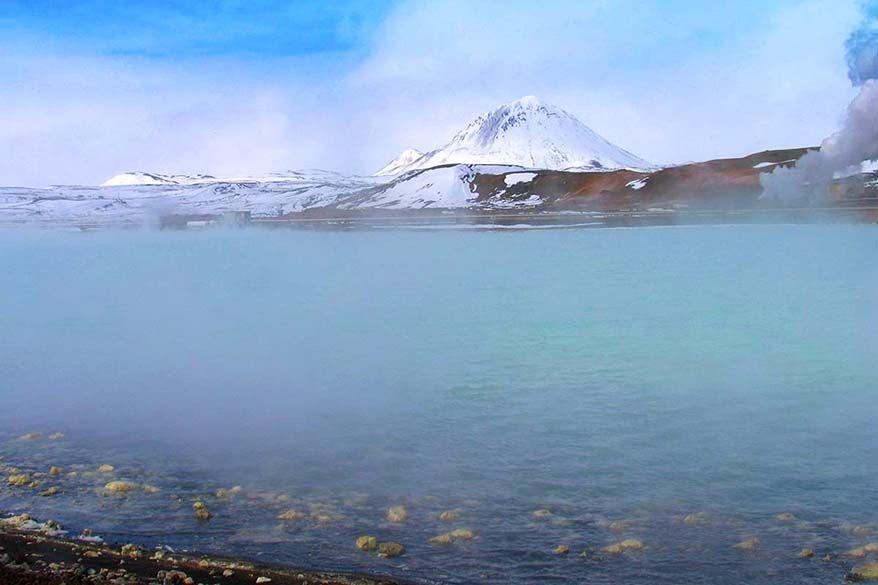
Other Great Winter Activities in Iceland
The five previously mentioned winter experiences in Iceland are each worth a trip to Iceland in winter. But of course, there are many more things to do and experience in Iceland in winter!
Here are some more ideas for fun winter activities in Iceland:
- Snowmobiling on a glacier .
- Icelandic horse riding through lava fields in winter .
Also Reykjavik city has a lot to offer in winter, with interesting museums, great restaurants, and lots of fun tourist attractions. New Year’s celebrations in Reykjavik are also well-known as the biggest party in town! So if you are visiting Iceland in winter, be sure to spend plenty of time in the city!
READ ALSO: Top Things to Do in Reykjavik
TIP: To make your Iceland trip truly enjoyable, you need to travel well prepared. Make sure to check our tips for packing for Iceland in winter and also our guide with some of the most important season-specific tips for visiting Iceland in winter .
Are you interested in a FREE Printable Packing List for Iceland in Winter?
Sign up for Full Suitcase newsletter and we will send it to you right away. So that you don’t forget to pack any of the essentials and enjoy your Icelandic winter adventure even more!
Agree with Full Suitcase Privacy Policy
Please check your mailbox to confirm subscription. If you don’t see the email right away, please check Promotions and Spam folders.
More tips for your winter trip to Iceland:
- Best Things to Do in Reykjavik
- One Day in Reykjavik
- Is Reykjavik Worth Visiting
- Perlan Museum
- Where to Stay in Reykjavik
- Best Half-day Tours from Reykjavik
- Tips for Visiting Iceland in Winter
- Iceland Winter Itinerary
- Driving in Iceland in Winter
- Best Winter Day Trips from Reykjavik
- What to Wear in Iceland in Winter
- Best Places to Stay in Reykjavik
- Where to Stay in Iceland
- How to Get to Reykjavik from Keflavik Airport
- Essential Travel Tips for Iceland
- How Expensive is Iceland (& How to Save Money)
READ ALSO: Iceland Travel Guide – all the info in one place
If you found this post helpful, don’t forget to bookmark it and share it with your friends. Are you on Pinterest? Pin this image!
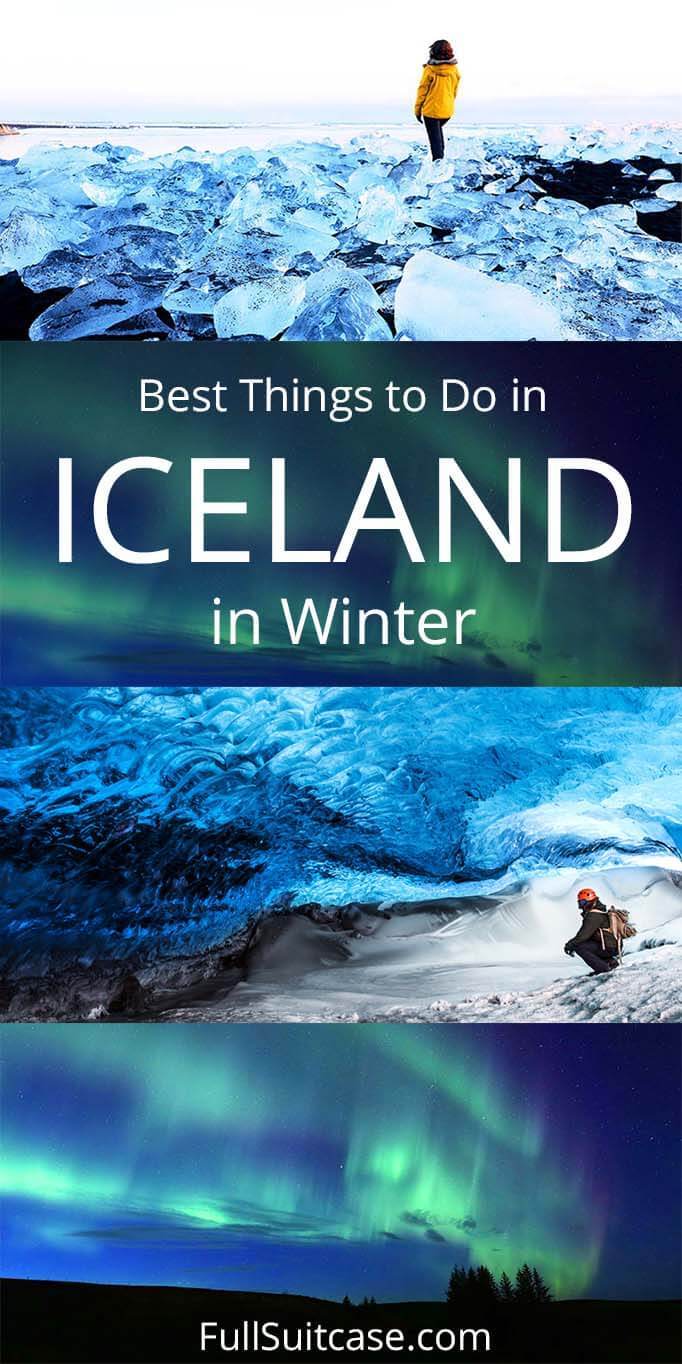
This site uses Akismet to reduce spam. Learn how your comment data is processed .
Thursday 24th of March 2022
Thank you for all your tips and help,im off to Iceland,in 2 weeks ,with my husband and friend,and this has really helped me a lot thanks.
Friday 25th of March 2022
Glad you found our blog useful with planning your trip, Eileen. Have a great time in Iceland!
Sunday 8th of March 2020
Thanks for this guide. I had no idea there were such beautiful ice caves in Iceland until I read your article. We just returned from our Iceland winter trip end of February and the ice cave tour was the highlight.
Glad to hear that, Lynn. Thanks for sharing your experience.
Tuesday 15th of October 2019
beautiful pictures. I was in Iceland about 3 years ago but unfortunately didn't see the northern lights was sooo disappointed. pls could you give me more tips on what months and time of day is best to see the northern lights as I am planning again to go sometime next year with my 9 year old daughter
Hi Jane, unfortunately, Northern Lights are a natural phenomenon and it's really impossible to predict. Compare it with seeing a rainbow - it can happy anywhere and any time. With the Northern Lights, exactly the same, except that you need to be high up North, have darkness, and clear skies. The rest - pure coincidence that depends on solar activity. Here you can find our tips for finding and photographing the Northern Lights. I think that with a 9-year old, you better go in September if you can. It's not that cold (so easier to stay outside for a longer period of time) and the chances are as good as you can have. Also, if you already visited Iceland and your main focus is to see auroras, you may want to consider Northern Norway instead. The weather is usually more stable there, so it's usually easier to find cloudless skies and see the Northern Lights. Here you can read about my experience with Northern Lights in Tromso. If you still rather prefer Iceland, then try to go in September-October or February-March. But it's just a general guideline and you don't know what you get till you are there. Another thing - taking a tour will always increase your chances to see auroras. They have the experience, keep an eye on the weather radar, and go to the places where chances to see auroras are highest for that specific night. Many tours in Iceland offer a second try for free if you don't see them the first time. Here you can find these and other winter tours in Iceland. If I can give you one more tip - plan your trip in such a way that you'll enjoy it no matter what. Then Northern Lights will be just a cherry on the cake. Whereas if you just concentrate on seeing auroras and you pick the bad weather week, you might be very disappointed again. Hope this helps.
Monday 21st of January 2019
Hi! Fantastic blog and SO helpful - thank you thank you!! Question - did you or anyone you know ever go snorkeling in Silfra between the two tectonic plates? It is rated as a highly must do activity on other sites but was curious if you had any feedback (didn’t see it anywhere in any of your posts). Thanks in advance!
Hi Margaret, no I personally have no experience with Silfra snorkeling in Iceland. However, this question has been asked multiple times in our Facebook group for Iceland & Scandinavi travel, and everyone who has done it was super enthusiastic. Many people do it winter as well. They say that you have to be prepared that your face will get really cold, but for the rest it's perfectly ok. You can read many customer reviews on these best-rated Silfra snorkeling tours as well. Hope this helps.
Rucha Smith
Tuesday 12th of September 2017
Yes, I agree with you that Iceland is a magical place in winter. Last November I had visited this land with my boyfriend. We had seen both Geothermal pools and Northern lights. We really enjoyed our trip. We were happy to be away from the crowds.
Thank you for sharing your experience Rucha. Indeed, visiting Iceland in winter is a perfect way to escape the crowds.
- Skip to main content
- Skip to secondary menu
- Skip to footer
ZigZagonEarth
Plan unforgettable road trips!
20 best things to do in Reykjavik in Winter (Iceland)
Last updated on November 1, 2023 by Claire Robinson - this article contains affiliate links. If you purchase through them, I get a small commission ( more )
Let’s have a look at some of the best things to do in Reykjavik in Winter. The Icelandic capital has been developing some great attractions that remain open year round for you to enjoy:
- architecture,
- street art,
- northern lights,
A great town to enjoy for a couple of days!
Before my tips + photos, here are my favorites for Iceland:
My favorite platform to rent a car in Iceland: DiscoverCars
The unmissable boat tour: Whale Watching
Fun activity: Swimming in Silfra Fissure
My favorite places to stay:
- Reykjavik: see best rated hotels – e.g. Vintage Boutique Hotel
- Lake Myvatn: see best rated hotels – e.g. Hotel Laxa
- Vik area: see best rated hotels – e.g. Hotel Vik i Myrdal
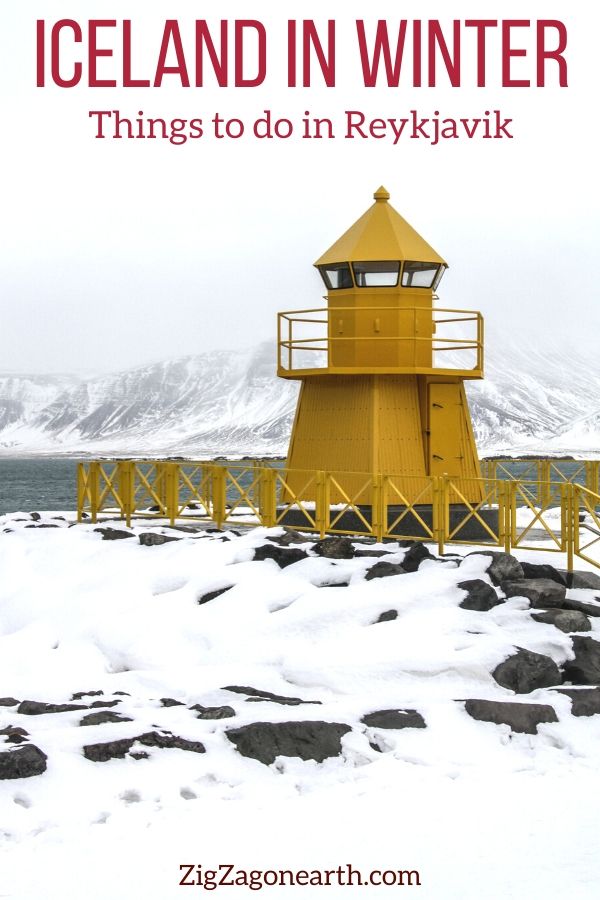
Top 5 things to do in Reykjavik in Winter – Summary
My 5 favorite things to do in reykjavik in winter.
- Admire the unique architecture of the cathedral and explore the surrounding area to find street art and quirky shops
- Walk on the waterfront with beautiful views mixed with art and architecture (Sun voyager sculpture, Harpa concert hall)
- Visit the Perlan – enjoy the interactive museum, learn more about the northern lights at the Planetarium and head to the outside platform for fantastic views of the city
- Head to the harbour to enjoy 2 wonderful attractions: Flyover Iceland (an immersive experience) and Whales of Iceland with the life-size replicas.
- Visit one of the most unique museums you will ever see: the Phallological Museum (penis museum)
I am sharing details and picture about all of them further in the article.

Planning Tips to visit Reykjavik, Iceland in Winter
How to get to reykajvik from the airport.
Reykjavik is a 40min drive from the International airport in Keflavik. They have a really good system of shuttles available for all the flights… Your various options are:
- Take a shuttle bus (cheapest) – Pre-purchase your ticket in your currency , and once at the airport, go outside, show your ticket and climb on board. This will take you to the bus hub near the city center, where you will be dispatched into other buses to go to the various hotel areas
- Take a direct shuttle minibus – Pre-purchase your ticket in your currency , and from the airport you climb into the minibus that will get you directly to your accommodation area (no need to change bus)
- or Book a private transfer to be able to leave whenever you are ready and head directly to the door of your accommodation
- or rent your car at the airport.

Need to rent a car in Iceland?
- Compare prices on my favorite platform: Discovercars.com – one of the best rated comparison sites!
- Prefer a compact car for the narrow streets in villages
- Consider their full coverage option – it for peace of mind!
- Book early to have a large choice of vehicles!
See all my tips

How long to spend in Reykjavik?
Just to visit the town and enjoy the great museums, I recommend 2 days. Reykjavik can also be the base of your holidays by doing day trips. But if you have the time, I recommend to go on a road trip for several days so that you can see a lot more and spend less time on the road.
Getting around Reykjavik in the snow
- The attractions of Reykjavik are a little spread out but you can still walk between a lot of them: Cathedral area to the waterfront to the harbour area for example
- However the Perlan is not easy to reach on foot (although possible)
- You can take taxis between some of the areas. For example from the harbour to the Perlan I paid 2500 ISK (15USD)
- If you have a rental car, you can also get around by car but don’t forget to pay for parking
- Your other option is to use the Hop on Hop off bus that will take you to all the attractions of the capital city – Pre-purchase your ticket in your own currency
- And finally, you can join a guided tour of Reykjavik if you just want to sit, relax and not take the decisions – see options

Visit Tips
- My recommendation is to rent your car before or after visiting Reykjavik and just enjoy the town without the hassle
- Be careful on less visited streets as the sidewalks can be slippery
- If you are booking day trips from Reykjavik, the minibus are not allowed to enter some areas. They have set up a system with touristic bus stops. The tour company will tell you the closest stop to your accommodation where you should meet
Accomodations in Reykjavik

I stayed at 3 different accommodations in Reykjavik (and I paid entirely for them, they did not know I was a blogger). All were very good.
- For a home feeling and a fantastic location, I really enjoyed my charming B&B called Reykjavik Treasure – check out photos and availability
- For a spacious apartment with cooking facilities in the city center, I had a great time at the Rey Apartments – check out photos and availability
- I also stayed at Castle House Luxury with a spacious room and good price – check out photos and availability
Otherwise, you can consider these options depending on what you are looking for:
- HOSTEL – The Reykjavik City Hostel has a good rating inside Reykjavik – check out photos and availability
- LUXURY – Head downtown in large smart apartments at the Black Pearl – check out photos and availability
- DESIGN – If you like modern design, have a look at the 41- a Townhouse hotel! – check out photos and availability
- FAMILY – Have a look at the Old Charm Reykavik Apartments. They have 2 and 3 bedrooms apartments and a decor with a lot of character – Check availability and availability
- But there is a wide range of places to stay in the capital city – Choose among the best rated accommodations in Reykjavik
Walking on the Seafront – the Sun Voyager
Like in most towns by the sea or by the water, one of the best activities is to walk along the waterfront. In Reykjavik, the area is wide and away from the cars which is very enjoyable. Even if covered in snow it is quite easy to enjoy the seafront. Plus, there are several highlights to enjoy along the way. And those are free! (Is your budget tight? See more tips on the article by Map Made memories about visiting Reykjavik on a Budget )

#1 – The Sun Voyager
The most famous, in the middle of the promenade, is the Sun Voyager sculpture. Its Icelandic name is Solfar. The artist is Jon Gunnar Arnason. He envisioned it for a competition in honor of the 200th anniversary of the city. The sculpture was unveiled in 1990. It represents a dreamboat, and ode to the sun through which he wanted to convey “a dream of hope, progress and freedom”. Best to visit at sunrise. Careful in Winter, as it is very slippery around the metal legs.

#2 – The yellow lighthouse
Another highlight, especially if you enjoy photography, it is the yellow lighthouse. It was created by the architecture firm Yrki Arkitektar. The design is based on the channel lighthouses that were used in Reykjavík’s old harbour from 1913-1917. This is very photogenic, on top of being an important safety feature for the harbour.

#3 – The Hofdi House
On the other side of the road from the seafront promenade (near the lighthouse) is the Hofdi House. It was built in 1909. It is one of the most significant buildings in Reykjavik in regards to history. It was, indeed, the location of the summit between presidents Ronald Reagan and Mikhail Gorbatsjov in 1986. The meeting marked the end of the Cold War. Learn more

#4 – The Harpa concert hall
At the other end of the seafront is the Harpa Concert Hall. Its design was a collaboration between Danish-Icelandic artist Ólafur Elíasson, and the Danish firm Henning Larsen Architects. When the project started it was not welcomed by all (like most crazy shaped building) but it has since become a landmark of Reykjavik. It opened in 2011.
Check out the shows you could be enjoying on the Harpa website

Planning a trip around Iceland in Winter? Check out my travel guide eBook to facilitate the planning:
Plan your dream trip in Iceland thanks to my guide
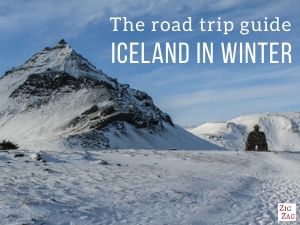
- 6 maps to easily plan your itinerary
- 75+ pre-selected locations
- GPS coordinates direct to the carparks
- Winter tips to make the most of your time
- 115+ original photos to help you choose
Cathedral and city center
Next you have to head uphill a little to reach the area around the Cathedral. This is a lovely area, with lots of shops, bars and a great atmosphere.

#4 – The Reykjavik cathedral – Hallgrimskirkja
This is the most iconic building in Iceland. It was commissioned in 1937 to Gudjon Samuelsson. And it took 41 years to build the church. The architecture is unique and reminiscent of the Svartifoss waterfall with the wall of basalt columns. At its highest point, it reaches 74.5 meters (244ft).
Entrance is free. But you have to pay if you want to go up to the viewpoint.

#6 – Find the street art
I recommend that you spend some time exploring the neighborhood with the colorful houses, the quirky shops and the street art. Whole walls are painted and sometimes the sidewalk too.

I don’t drink coffee
But I also like other drinks and sweets! Do you like the free content you find on my blog? All my tips and practical information, without intrusive advertising…

The Perlan building, located on top of a hill overlooking the city, has quickly become one of the most popular attractions in the city. Originally it was just a cluster of hot water tanks. But it has be completely transformed into an attraction dedicated to the wonders of Iceland.
You can visit and just pay for the viewing platform. Or you can pre-purchase your entrance ticket in your own currency to enjoy the museum and the ice tunnel (and the viewing platform). Plus, you can also book your seat to one of the Planetarium shows. You can also book a meal at the famous revolving restaurant inside.

#7 – The planetarium
One of the options inside the Perlan, is to take a seat inside the planetarium. You can enjoy a nice show during which you will learn more about the Northern lights. It is not like seeing them (for real) but it is an enjoyable moment.

#8 – The interactive museum
Then you can enter the museum. This is a very modern place with a lot of interactive displays where you can touch or just move to have explanations appear. You will learn more about the volcanic activity, the glaciers, the flora and the fauna. If you are interested in learning more about Iceland, this can take you a whole day.

#9 – The ice tunnel
With the museum ticket, between 2 levels, you will be able to visit the ‘ice cave’ or ‘ice tunnel’. Thanks to the hot water tanks, the maintenance of the ice is energy efficient. Once again it is not like visiting a real glacier cave (which is a magical experience – see my article about them ) but it is still fun.

#10 – The viewing platform
But my favorite part of the Perlan is the 360° view of the area. There is a circular platform around the building to admire the landscapes in all directions. Despite the cold, I stayed up there a long time as I found the winter scenery of Reykjavik fascinating. I prefer Nature to cities, but having a view that combines both works for me!

Reykjavik’s attractions at the harbour
Next you can head to the harbour area. It is not a nice place to walk around as it has mostly large shops. But the two attractions below were my favorites in the city.
#11- Flyover Iceland
OK the ratio price vs time spend is really expensive. BUT this is something you cannot do anywhere else!It combines the 4D cinema and the feeling of flying with unbelievable images of Iceland. Be ready to move your feet thinking you are going to touch the top of the mountains! Careful there is a limited number of seats, so it gets full. Pre-book your entrance.

#12 – Whales of Iceland
I know that going on a boat trip to see real whales in the sea is probably your priority ( see options here ). But when you are on a boat, most of the time you don’t see that much. You see a giant back, and maybe a tail for an instant when the whale dives. But that’s all. So if you want to better understand the size of these fascinating animals, the museum Whales of Iceland is the place to go. The have life-size replicas of all the species visiting Iceland. Fascinating! Pre-purchase your entrance in your own currency.

Other Museums in Reykavik
Reykjavik has many other museums throughout town. Here a few to consider:
- #13 – The Saga museum – small museum but with lots of information bout the Viking settlers and their sagas See location and opening hours
- #14 – The Settlement exhibition – Underground museum in an archeological dig See location and opening hours
- #15 – The maritime museum – fishing has been essential in the Icelandic history. This museums dive into the maritime heritage of the country See location and opening hours
- #16 – The Punk museum – learn about the evolution of the Punk scene in Iceland See location and opening hours
- #18 – The National museum of Iceland – this is where you can find the archeological treasures of Iceland: viking ship, arts and crafts, furniture, religious artefacts… See location and opening hours

#19 – Phallalogical Museum a.k.a. the Penis Museum.
But one of the most unique experiences you could have is at the Phallalogical Museum a.k.a. the Penis Museum. They have a really large collection of penises from different animals, including giant whale ones. I recommend the audioguide. The voice of the man who collected all those specimens is a bit monotone, but what he shares makes the visit even more fascinating.
See location and openi n g hours

#20 – Northern lights in Reykjavik
It is extremely rare that the lights are strong enough for you to see them from Reykjavik. There is too much light produced by the city. You have to book a tour that starts in the evening and take you out to chase them, and hopefully find them.
- BUS TOUR – One of the cheapest options is to go on a bus tour. You leave from Reykjavik and the driver takes you to the best spots he knows depending on the forecast – Check out Program, availability and Price
- SMALL GROUP TOUR – This is my favorite options, it is easier to go from one spot to another chasing the northern lights because you can gather everyone more quickly and you can go off the beaten tracks – Check out options
- PRIVATE TOURS – check out options
- NORTHERN LIGHTS CRUISE – A more original option is to go on a boat off the coast of Reykjavik to find the dark and hopefully see the Norther Lights – Check out options

Food in Reykjavik
Of course, there is also a large choice of restaurants in Reykjavik. But this is not my expertise. I tried looking for an article by another blogger about the best restaurants in Reykjavik. But in the fist few pages of Google, all I can see are articles where the author has not even been to one restaurant…
And if you love learning about food while traveling, check out the Food tours in Reykjavik
Day trips from Reykjavik in Winter
However if like me, you prefer city to nature, there are also plenty of winter day trips you can enjoy from Reykjavik. The main tours are:
- Golden Circle Tour with Thingvellir National park, the waterfall Gullfoss and the geysers – see options and book
- The magnificent Snaefellsnes peninsula (a.k.a. Iceland in miniature) with fjords, waterfall, lava formations… – see options and book
- The first half of the South Coast with the famous waterfalls and black sand beaches – see options and book
- The Silver Circle if you want to go underground under a glacier and in a lava tube, as well as see one of the most beautiful waterfall in Winter: Hraunfossar – Book your tour
For more information, check out my article about the best day trips from Reykjavik in Winter .
And if you want to plan a road trip before or after your visit to Reykjavik, check out my travel guide that facilitates the planning of your itinerary:
Want to see more of Iceland in Winter:
- Best things to do in Iceland in Winter – read article
- 35 pictures of Iceland in Winter – read article
- Iceland Ice Cave Tours and tips – read article
- 7 Iceland waterfalls in Winter – read article
- Tips for visiting Iceland in Winter – read article
- Planning an Iceland Winter Road Trip – read article
- Iceland Winter itinerary suggestions – read article
- Driving in Iceland in Winter – read article
And keep track of your own trip!
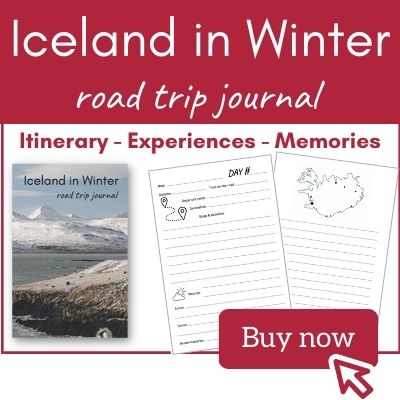
Want to see more of ICELAND IN WINTER
PREVIOUS:
Godafoss in Winter
NEXT:
Iceland Winter Tours & Day trips from Reykjavik
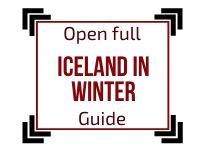
Inspired? Share it on your favorite platform!
Par Claire Robinson Region Lovers SARL 76600 Le Havre FRANCE VAT FR21845103191
Follow ZigZag on Facebook
Follow ZigZag on Pinterest
Website in French: ZigZagvoyages.fr
Website in German: ZigZagreisen.de
Website in Spanish: ZigZagviajes.com
And discover the French regions:
Normandielovers.fr LoireLovers.fr CorsicaLovers.fr Provencelovers.fr
Privacy / Terms of Use / Disclosure Policies / Refund policy
Become an affiliate for the ZigZag road trip guides
As an Amazon Associate I earn from qualifying purchases. ZigZagOnEarth.com is a participant in the Amazon Services LLC Associates Program, an affiliate advertising program designed to provide a means for sites to earn advertising fees by advertising and linking to Amazon.com, Amazon.uk and Amazon.ca

50+ Spectacular Things To Do in Iceland
I celand, a land of fire and ice, is a country unlike any other. Located on the edge of the Arctic Circle, this small island nation is home to some of the most spectacular natural wonders in the world. Below I share my personal favorite things to do in Iceland.
From towering glaciers and cascading waterfalls to bubbling hot springs and steaming geysers, Iceland is a place of extremes that will take your breath away. But it’s not just the stunning landscapes that make Iceland a must-see destination; the country’s unique culture and history, charming towns, and friendly locals make it an unforgettable travel experience.
Where Is Iceland?
Iceland is an island located in the North Atlantic Ocean. It is located on the constantly active geologic border between North America and Europe.
Iceland Map
Best things to do in iceland:.
Whether you’re an adventure seeker, a nature lover, or simply seeking a new and exciting destination, Iceland has something for everyone. In this blog post, we’ll explore the best things to see and do in Iceland, and help you plan your perfect Icelandic adventure .
1. Chase the Northern Lights!
Watching the Aurora Borealis dance in the night sky is an unforgettable experience, and Iceland offers numerous locations that are known to be amazing for spotting the lights. Main tips: drive away from larger cities, visit in the winter months, and check the forecast.
Check prices and reviews for Northern lights Day Trips from Reykjavik
2. Take a Road Trip on the Ring Road
The country’s main highway that circles the entire country. The Ring Road is a 1322 km (820 miles) loop connecting most towns and villages. No GPS needed here!
3. Take a Dip in one of Iceland’s Many Natural Hot Springs
Iceland’s hot springs are a natural wonder and a must-visit attraction for any traveler. Take a dip, relax, and marvel at the stunning scenery around you.
Check prices and reviews for the best Hot Springs Tours!
4. Go Dog Sledding in the Snow
Dog sledding in Iceland is an exhilarating way to explore the country’s snowy terrain and experience the unique bond between humans and animals. With trained guides and a team of energetic huskies, visitors can glide through Iceland’s stunning wilderness and take in the stunning views from a completely different perspective.
Check prices and reviews for this Husky Sledding Tour
5. Go Skiing
Bring your athletic side and go skiing in the mountains. With numerous ski resorts and backcountry options to choose from, Iceland is a great destination for experienced skiers looking for a new and exciting challenge.
6. Enjoy a Midnight Sun Hike
A midnight sun hike in Iceland is a unique and unforgettable experience that allows visitors to explore the country’s stunning landscapes under the magical glow of the sun. With nearly 24 hours of daylight during the summer months, a midnight sun hike is a great way to experience the country’s natural beauty in a completely new and mesmerizing way.
Best Things To Do in Reykjavik
7. visit the hallgrimskirkja church.
Take in the stunning views from the top – located in the heart of Reykjavik, Hallgrimskirkja is a stunning church with a towering spire and minimalist design. It is one of the most iconic landmarks in the country.
8. Go on a Walking Tour of Reykjavik
Learn about its history and culture. A walking tour is an excellent way to explore Reykjavik’s charming streets and learn about the city’s rich history and culture. Led by experienced guides, visitors can discover hidden gems and landmarks, while gaining insight into the city’s unique identity and way of life.
Check prices and reviews for guided walking tours in Reykjavik
9. Visit the National Museum of Iceland
Learn about the country’s fascinating history. From Viking artifacts to contemporary art, the museum showcases the diverse and unique heritage of Iceland and is a must-visit for anyone interested in the country’s past and present.
10. Explore the Old Harbor
Try some fresh seafood at one of the local restaurants. Visitors to the Old Harbor can enjoy a variety of activities, including whale watching tours, seafood dining, and exploring the local shops and galleries. The area also features several museums and cultural attractions, such as the Reykjavik Maritime Museum, which provides insight into the history and traditions of Iceland’s seafaring culture.
11. Take a Whale Watching Tour from the Harbor
A whale watching tour from the Old Harbor in Reykjavik is an unforgettable experience that allows visitors to get up close and personal with some of the world’s largest and most fascinating creatures. With experienced guides and modern boats, visitors can embark on a thrilling adventure and witness the majesty of humpback whales, orcas, and other marine life in their natural habitat.
Check prices and reviews for Whale Watching Cruises in Reykjavik
12. Check out the Reykjavik Art Museum
See some of Iceland’s best art. With a diverse collection of contemporary and modern works by both Icelandic and international artists, the museum offers a unique and immersive cultural experience that showcases the best of the country’s vibrant and dynamic art scene.
13. Explore the Picturesque Streets of Old Town
See the colorful houses on Laugavegur street . Laugavegur is Reykjavik’s main shopping and dining street, and a bustling hub of activity and culture. With its charming architecture, lively atmosphere, and unique shops and eateries, it’s a great place to explore and immerse yourself in the city’s vibrant and diverse culture.
14. Take a Food Tour of Reykjavik
Sample some of the local cuisine – A food tour in Reykjavik is a delicious way to experience the city’s unique culinary scene and sample some of Iceland’s most iconic dishes. With experienced guides and carefully curated itineraries, visitors can explore the city’s best restaurants, cafes, and food stalls, and learn about the country’s rich culinary heritage along the way.
Check prices and reviews for food tours in Reykjavik
15. Check out the Reykjavik Flea Market
The Reykjavik flea market, also known as Kolaportid, is a vibrant and bustling market that offers visitors a glimpse into Iceland’s culture and history. With an eclectic mix of vintage items, handmade crafts, and traditional foods, it’s a great place to find unique souvenirs and immerse yourself in the local culture.
16. Visit the Videy Island
A tranquil oasis just a short boat ride from Reykjavik, offering visitors a peaceful escape from the hustle and bustle of the city. With scenic walking trails, historic landmarks, and stunning views of the surrounding sea and mountains, it’s a great place to reconnect with nature and unwind in a serene and picturesque setting.
Reykjavik is a great homebase if you don’t want to rent a car, and there are endless day trips you can take from the city!
Where to stay in Reykjavik : a great base for an Iceland vacation. I recommend Hotel Odinsve , it’s a great location in the city center, but located on a very quiet street. The hotel rate includes a wonderful breakfast as well. I suggest checking Hotels.com and Booking.com for the best rates!
Best Things To Do Near Reykjavik:
17. relax in the blue lagoon.
Blue Lagoon is a world-famous geothermal spa located in southwestern Iceland, known for its milky blue waters, silica mud masks, and unique mineral-rich properties. A must-visit for relaxation and rejuvenation, the Blue Lagoon offers visitors a one-of-a-kind experience to soak in its warm, mineral-rich waters surrounded by stunning volcanic landscapes.
Check prices for Blue Lagoon Tickets (with transportation)
18. Visit the Þingvellir National Park
Þingvellir National Park is a UNESCO World Heritage Site and a historic landmark in Iceland, known for its geological and cultural significance. It is home to the world’s first parliament, Þingvallavatn Lake, and a stunning rift valley formed by the separation of the Eurasian and North American tectonic plates, making it a unique destination for hiking, camping, and exploring Iceland’s rich history and natural wonders.
Check prices and reviews for Thingvellir National Park Tours
19. Drive the Golden Circle
The Golden Circle is a popular tourist route in southwestern Iceland, encompassing Þingvellir National Park, Geysir Geothermal Area, and Gullfoss waterfall.
It offers visitors a chance to witness the geological wonders of Iceland, from the dramatic tectonic plate rift at Þingvellir, to the erupting geysers at Geysir Geothermal Area, and the powerful waterfall of Gullfoss, providing a compact and diverse experience of Iceland’s natural beauty.
Check prices and reviews for Golden Circle Tours from Reykjavik
20. Explore the Geysir Geothermal Area
Geysir Geothermal Area is a geothermal hotspot located in southwestern Iceland, known for its impressive geysers, hot springs, and bubbling mud pots. It offers visitors a rare opportunity to witness the raw power of geothermal activity, with erupting geysers shooting hot water and steam into the air, creating a unique and mesmerizing spectacle that is quintessentially Icelandic.
21. Have lunch at the Famous Gullfoss
Gullfoss, also known as the “Golden Falls,” is a majestic waterfall located in southwestern Iceland, known for its sheer power and stunning beauty. With a series of cascading falls and a breathtaking canyon, Gullfoss offers visitors a chance to witness the raw and untamed beauty of Icelandic nature, and it is often considered one of the most iconic waterfalls in Iceland .
22. Take a Guided Tour of the Thrihnukagigur Volcano
Descend into its magma chamber. Thrihnukagigur volcano is a dormant volcano located near Reykjavik, known for its unique feature of having an open magma chamber that visitors can descend into.
This rare opportunity allows adventurous travelers to explore the interior of a volcano, with its colorful and otherworldly rock formations, providing a truly unique and unforgettable experience that is unparalleled in many other destinations around the world.
Check prices and reviews for the Thrihnukagigur Hike and Tour
Best Things To Do in Western Iceland and the Westfjords
23. explore the snæfellsjökull national park.
Snæfellsjökull National Park is located on the Snæfellsnes Peninsula in western Iceland, known for its stunning landscapes, diverse wildlife, and the iconic Snæfellsjökull glacier-capped volcano.
The park offers visitors a chance to explore the unique geological features of the area, from lava fields and cliffs to black sand beaches and moss-covered lava fields, while also being steeped in mythology and folklore.
Check prices and reviews for Snaefellsnes National Park Day Trips
24. Visit Mount Kirkjufell and take the Short Hike to Kirkjufellsfoss
Mount Kirkjufell and Kirkjufellsfoss are also located on the Snæfellsnes Peninsula and are widely regarded as some of the most picturesque spots in Iceland.
Mount Kirkjufell is a distinctive cone-shaped mountain, while Kirkjufellsfoss is a stunning waterfall that flows at the base of the mountain. Together, they form a stunning backdrop for photography, hiking, and enjoying the natural beauty of Iceland.
25. Explore the Picturesque Town of Ísafjörður
The largest town in the Westfjords. Ísafjörður is known for its picturesque location, charming atmosphere, and rich maritime heritage. It offers visitors a chance to experience the beauty of the fjords, explore local museums and galleries, and enjoy outdoor activities such as hiking, kayaking, and bird watching, making it a unique destination off the beaten path.
26. Go on a Boat Tour To see the Puffins in Westfjords
Explore wildlife in the nearby islands. A boat tour in the Westfjords offers visitors a chance to explore the rugged and remote landscapes of this remote region of Iceland from the sea.
With its dramatic cliffs, fjords, and abundant wildlife, including puffins and seals, a boat tour in the Westfjords provides a unique and exhilarating adventure for nature enthusiasts and those seeking to explore the untamed beauty of Iceland.
Check prices and reviews for the best Puffin tours in Iceland
27. Visit the Charming Village of Hólmavík
Hólmavík is a small town located in the remote Strandir region of Iceland, known for its stunning landscapes, rich history, and unique culture.
It offers visitors a chance to experience the unspoiled beauty of the Westfjords, learn about local folklore and witchcraft at the Museum of Icelandic Sorcery and Witchcraft, and enjoy outdoor activities such as hiking, bird watching, and hot springs bathing.
28. Take a Scenic Drive
Drive along the rugged coastline and enjoy the stunning views that the Westfjords have to offer – they are truly unbelievable.
29. Visit the Rauðisandur Beach
This beach is a secluded and stunning golden sand beach located in the Westfjords of Iceland, known for its otherworldly beauty and tranquility.
With its remote location, panoramic views of the surrounding mountains, and unique reddish hue of the sand, Rauðisandur beach offers visitors a chance to experience a truly off-the-beaten-path destination that feels like a hidden gem in Iceland.
30. Explore the Abandoned Fishing Village of Hesteyri
Accessible only by boat or on foot. Hesteyri is a remote village located in the Hornstrandir Nature Reserve in the Westfjords of Iceland, known for its pristine wilderness, rugged landscapes, and rich history.
Best Things To Do in Northern Iceland
31. visit the hofsós swimming pool.
Hofsós is a small coastal town in Northern Iceland known for its geothermal heated swimming pool offering panoramic views of the surrounding mountains and ocean, making it a popular destination for relaxation and rejuvenation while enjoying the stunning natural beauty of Iceland.
32. Learn about Icelandic Culture and Lifestyle at the Historic Farmstead of Laufás
Laufás is a historic farmstead located in Northern Iceland, known for its well-preserved turf houses that offer insight into Icelandic culture and lifestyle from the 19th century.
Visitors can explore the traditional Icelandic buildings, including a church, a farmhouse, and other outbuildings, and learn about the history, architecture, and way of life of the people who lived and worked on the farmstead in the past.
33. Visit the Mývatn Area
Known for its geothermal activity and stunning landscapes. Home to Lake Mývatn among other wonders, the Mývatn area in Northern Iceland is a mesmerizing landscape of unparalleled natural wonders, boasting a surreal mix of volcanic craters, steaming mud pots, and vibrant geothermal hot springs.
With its otherworldly beauty, abundant birdlife, and opportunities for hiking, lava cave exploration, and bathing in natural hot springs, Mývatn is a truly unique destination for nature enthusiasts and adventure seekers alike.
34. Explore the Stunning Goðafoss Waterfall
Learn about its fascinating history. Goðafoss, meaning “Waterfall of the Gods,” is a majestic waterfall with a horseshoe-shaped cascade, surrounded by dramatic rock formations. It also has a fascinating history as a site where the ancient Icelandic chieftain Þorgeir Ljósvetningagoði decided to convert to Christianity.
35. Go on a Whale Watching Tour from the Town of Húsavík
Kown as the whale watching capital of Iceland. Húsavík is a small town located on the shores of Skjálfandi Bay in Northern Iceland. Its stunning coastal scenery, charming harbor, and abundant wildlife, including whales, seals, and seabirds, make Húsavík a popular destination for nature lovers and those seeking a unique and unforgettable experience with Iceland’s marine life.
Check prices and reviews for Traditional Oak Ship Whale Watching Tours From Husavik
36. Visit the Charming Town of Akureyri
Known for its vibrant culture and beautiful surroundings. Akureyri, often referred to as the “Capital of the North,” is Iceland’s second-largest city located in the scenic Eyjafjörður fjord. This charming town is known for its lively cultural scene, beautiful surroundings, and friendly locals, making it a popular destination for tourists seeking a taste of urban life amidst Iceland’s stunning natural landscapes.
37. Take a Tour of the Impressive Dettifoss Waterfall
This is the most powerful waterfall in Europe. With its awe-inspiring display of raw, untamed power as water rushes over volcanic basalt cliffs, Dettifoss is a mesmerizing natural wonder that leaves visitors in awe of its sheer magnitude and beauty.
38. Explore the Remote and Picturesque Fishing Village of Siglufjörður
Learn about its history and culture. With its stunning coastal landscapes, quaint houses, and fascinating heritage as a former herring fishing capital, Siglufjörður offers visitors a unique and immersive experience of Icelandic coastal living and maritime traditions.
Best Things To Do in Eastern Iceland:
39. visit the charming town of seyðisfjörður.
Seyðisfjörður, a remote village nestled in a picturesque fjord in eastern Iceland, is known for its vibrant arts and culture scene, with colorful houses, unique street art, and a renowned music festival.
40. Go on a Hiking Tour of the Stunning Stórurð Boulder Fields
The Stórurð boulder fields, located in the eastern part of Iceland, are a mesmerizing geological wonder with giant boulders scattered across a mossy landscape, offering a surreal and otherworldly experience for nature enthusiasts.
41. Explore the Remote and Scenic Vopnafjörður Fjord
Vopnafjörður fjord, located in the northeastern part of Iceland, is known for its rugged beauty, steep cliffs, and rich history, offering visitors a chance to immerse in Iceland’s coastal landscapes and seafaring heritage.
42. Visit the Hengifoss Waterfall
Located in eastern Iceland, Hengifoss waterfall, is a striking waterfall with red rock formations and dramatic cliffs, surrounded by stunning natural scenery, making it a popular destination for hikers and nature lovers.
43. Go on a Boat Tour to see the Puffins
As well as puffins you’ll pot many other seabirds in their natural habitat.
44. Visit the Icelandic Wilderness Center
Learn about the history and traditions of the region. The Icelandic Wilderness Center offers a unique and immersive experience of Iceland’s wilderness, history, and folklore, with exhibits, guided tours, and outdoor activities for visitors to explore and learn about the country’s natural and cultural heritage.
45. Go Glacier Hiking on Vatnajökull
Vatnajökull, located in southeast Iceland, is Europe’s largest glacier, known for its awe-inspiring ice formations, glacial lagoons, and dramatic landscapes that attract adventure seekers and nature enthusiasts alike.
46. Visit the Jökulsárlón Glacier Lagoon
Take a boat tour to see the icebergs up close. Jökulsárlón glacier lagoon, located in southeast Iceland, is a stunning natural marvel with floating icebergs and crystal-clear blue waters, offering visitors a chance to witness the mesmerizing beauty of Iceland’s glaciers up close and even take a boat tour to explore the icy wonderland.
Best Things To Do in Southern Iceland:
47.marvel at the skógafoss waterfall.
Hike up to the top of the waterfall for a breathtaking view. With a drop of 60 meters and a width of 25 meters, it’s a popular destination for visitors to the region, offering stunning views, hiking trails, and a dramatic backdrop for photography.
48. Explore the Historic Town of Vik
Vik has some of the most picturesque surroundings in Iceland. Vik is a small coastal village located in southern Iceland, known for its stunning black sand beaches, dramatic cliffs, and picturesque scenery. With its unique geological features, such as the famous Reynisfjara beach and basalt columns, Vik is a popular tourist destination and a must-visit spot along Iceland’s scenic Ring Road.
49. Explore Reynisfjara
This is the world-famous black sand beach located near the village of Vik in southern Iceland. Known for its unique basalt columns, towering cliffs, and roaring waves, Reynisfjara is a stunning and otherworldly destination that offers visitors an unforgettable experience of Iceland’s rugged and breathtaking coastline.
50. Visit the iconic Seljalandsfoss Waterfall
Walk behind the cascading water. With a height of 60 meters, a lush green backdrop, and a unique viewing experience, Seljalandsfoss is a bucket list natural wonder that offers an up-close and immersive encounter with Iceland’s breathtaking landscapes.
51. Visit the Skaftafell National Park
Go on a hiking tour of the stunning landscapes. Skaftafell National Park is a stunning wilderness area located in southeastern Iceland, nestled between glaciers, black sand deserts, and volcanic peaks. With its diverse landscape of glaciers, mountains, rivers, and lush vegetation, Skaftafell National Park offers visitors unparalleled opportunities for hiking, camping, glacier walks, and other outdoor adventures in a truly mesmerizing and remote wilderness setting.
52. Explore the Fjaðrárgljúfur Canyon
Known for its steep cliffs and beautiful waterfalls. Fjaðrárgljúfur Canyon is a true hidden gem of Iceland, with its strikingly steep cliffs, emerald-green river, and otherworldly rock formations. Tucked away in a remote part of southeastern Iceland, Fjaðrárgljúfur Canyon offers a one-of-a-kind experience for nature lovers, where the raw, untouched beauty of the landscape leaves visitors in awe of Iceland’s unique and mesmerizing geology.
Day Trips from Iceland Top Tours
I love to do a combination of exploring on my own as well as a few organized tours when I travel. I love to learn about the history and culture in a new location and tours with local experts is a great way to do this.
I recommend Get Your Guide and Viator because you can cancel most bookings for free up to 24 hours before they start and their customer service is available 24/7 in multiple languages.
Where To Stay in Iceland
When planning a trip to Iceland , one of the most important decisions you’ll make is where to stay. The good news is that Iceland has a range of accommodations to suit every budget and taste, from budget-friendly hostels to luxury hotels and everything in between.
Reykjavik, Iceland’s capital city, is the most popular destination for travelers and has a wide range of accommodations to choose from. If you’re looking for a budget-friendly option, there are plenty of hostels and guesthouses in the city center, as well as a number of Airbnb and VRBO options.
If you’re willing to spend a bit more, there are several mid-range and luxury hotels to choose from as well. The city center is the most popular area to stay, as it’s close to many of the city’s main attractions and nightlife.
Lodging Outside of Reykjavik
Outside of Reykjavik, there are plenty of other great places to stay in Iceland. One popular option is to rent a cabin or cottage in the countryside, where you can enjoy the peace and quiet of Iceland’s stunning landscapes.
Many of these cabins come equipped with kitchens, so you can save money by cooking your own meals. Another option is to stay in a guesthouse or bed and breakfast in one of Iceland’s charming small towns, such as Akureyri, Egilsstaðir, or Seyðisfjörður. These towns offer a glimpse into Iceland’s unique culture and history, and are a great way to experience life outside of the capital city.
For those who want to be close to Iceland’s natural wonders, there are several hotels and guesthouses located near popular attractions such as the Blue Lagoon , the Golden Circle , and the South Coast. These accommodations offer easy access to some of Iceland’s most stunning landscapes, and are a great option for those who want to spend more time exploring and less time driving.
No matter where you choose to stay in Iceland, it’s important to book your accommodations well in advance, especially during peak travel season (June-August).
Keep in mind that Iceland is a relatively small country, so even if you’re staying outside of Reykjavik, it’s still easy to explore many of the country’s top attractions by car or tour. With a bit of planning and research, you’re sure to find the perfect place to stay in Iceland, no matter what your budget or travel style.
What to pack: The temperatures each season vary greatly, but even in summer it can be cold. I visited in June and the high was 68 ° F (20 ° C ). Heading out of Reykjavik for the Golden Circle Tour, it was must cooler. I was very happy I brought along fleece lined leggings , a light down jacket , warm socks (I love Ice Breaker ), a waterproof outer layer and rain jacke t, and some hiking boots (I love Keen ). If you are visiting in Winter, you’ll want to bring heavy duty layers.
Best Time To Visit Iceland
Iceland is a destination that can be visited year-round, but the best time to go depends on what you want to see and do. Each season offers its own unique experiences, and the weather can vary greatly depending on the time of year.
Summer (June-August) is the most popular time to visit Iceland, as the weather is mild and the days are long. During the summer months, Iceland experiences nearly 24 hours of daylight, which means you’ll have plenty of time to explore the country’s stunning landscapes. The high season also means that there are more crowds and higher prices, so it’s important to book your accommodations and activities well in advance. Summer is a great time to go whale watching, hiking, and explore the country’s many national parks.
Fall (September-November) is a great time to visit Iceland if you’re looking to avoid the crowds and experience the changing colors of the Icelandic landscape. September is still relatively mild, but by November, temperatures can drop below freezing. Fall is a great time to see the Northern Lights, as the nights are getting longer and clearer.
Winter (December-February) is a magical time to visit Iceland, especially if you’re looking to see the Northern Lights. The country is covered in snow and ice, and the shorter days mean that you have a higher chance of seeing the Aurora Borealis. Winter is also a great time to go ice caving, glacier hiking, and snowmobiling. However, it’s important to note that the weather can be unpredictable, and roads and activities may be closed due to snow and ice.
Spring (March-May) is a great time to visit Iceland if you’re looking for mild weather and fewer crowds. The country starts to thaw out after a long winter, and you’ll have the chance to see baby animals and blooming wildflowers. March and April are still great months to see the Northern Lights, but by May, the days are getting longer and the skies are brighter.
Ultimately, the best time to visit Iceland depends on your interests and what you want to see and do. No matter when you go, be sure to pack warm and waterproof clothing, as the weather in Iceland can change quickly. With its stunning landscapes, unique culture, and endless opportunities for adventure, Iceland is a destination that will leave you in awe no matter what time of year you visit.
Iceland Resources & Tips
Getting to Iceland is quite straightforward, and you’ll find some great flight from the US. Numerous major cities provide direct flights to Keflavik Airport (KEF), which serves as the starting point for all tours in Iceland .
Check out tools like SkyScanner or Cheapo Air for cheap flights or Going (formerly Scott’s Cheap Flights). You don’t even need to shell out any cash because Skyscanner and Cheapo Air have a free version.
Airport Shuttle: The airport offers a convenient shuttle service called Flybus that operates between the airport and Reykjavík. The trip takes approximately 45 minutes, with multiple stops in the city center. This option is ideal if you want to explore Reykjavík during your layover.
In cities like Reykjavik there are cars, buses , or tours to get around.
- Best Car Rental Deals: Rentalcars.com , AutoEurope and DiscoverCars .
- Best Sites to Find Hotel Deals: Hotels.com and Booking.com
- My Favorite Hotel Review Website: TripAdvisor
- Best Tours: Viator and Get Your Guide
Read More About Iceland
- How to Book Cheap Flights to Iceland
- Iceland and Scandinavia Travel Tips from the Road
- Iceland’s Hot Golden Circle Tour Including the Secret Lagoon
- 5 Tips for Your First Trip to Iceland
- 21 Strange, Fun and Weird Facts About Iceland
Pin it for Later!
Follow 52 Perfect Days on
Facebook | Twitter | Pinterest | Instagram
The post 50+ Spectacular Things To Do in Iceland appeared first on 52 Perfect Days .

Tips to travel Iceland on a budget, plus travel expert-approved gear
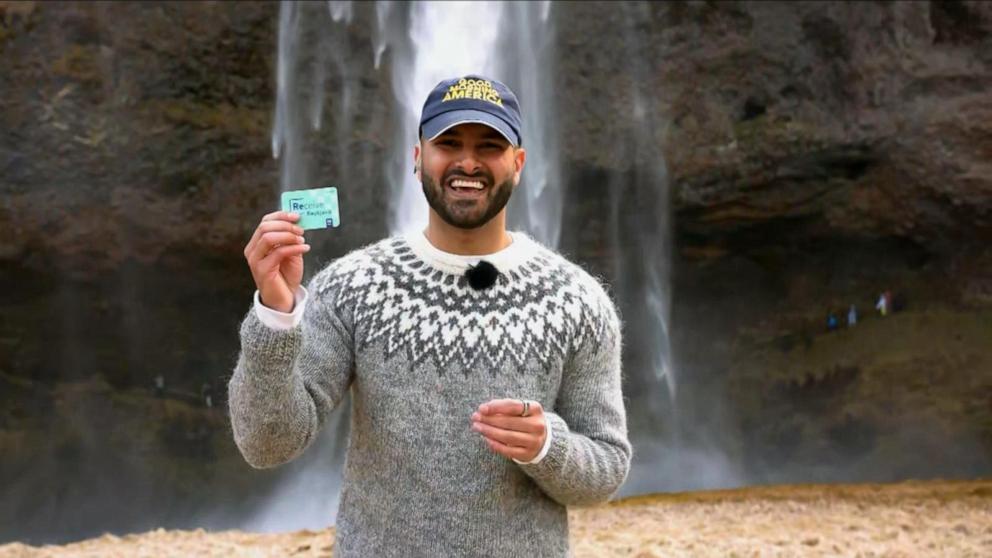
Need some summer vacation ideas that won't break the bank? "Good Morning America" is off to Iceland and packing expert tips to help create the perfect travel bucket list on a budget.
From free dips in hot springs to the stunning Seljalandsfoss waterfall, ABC News' Ashan Singh explored the Nordic island nation and shared the top ways to enjoy every stop of the trip without overspending.
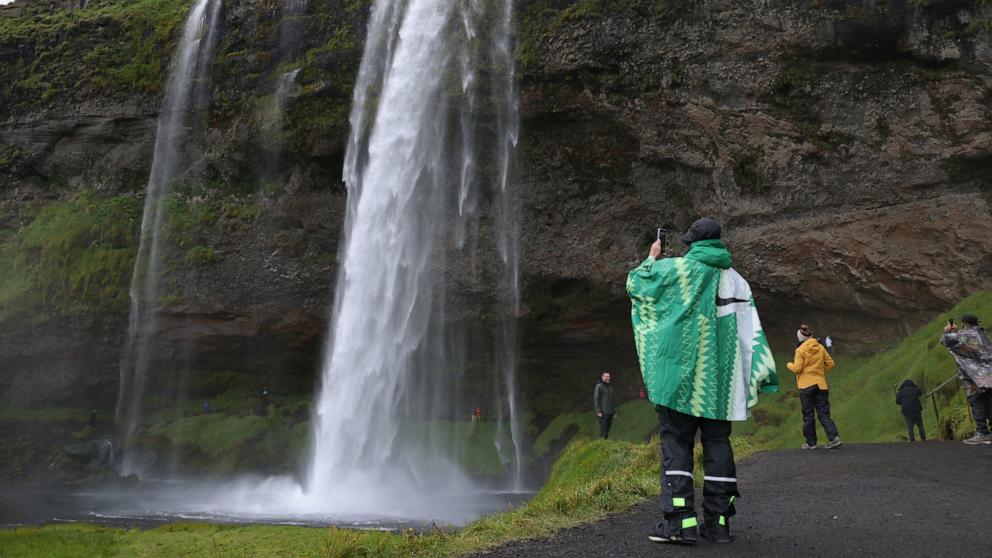
"Iceland is a tremendous deal from the Boston area in particular -- flights are only about five hours in each direction -- you could take just a long weekend there and still get an action-packed trip," Eric Rosen director of travel content for The Points Guy, told "GMA."
TPG has seen deals for as low as $400 and for travelers who don't care where they're seated on the plane, some fares drop as low as $230.
When it comes to hotels, Rosen offered another simple tip, spend now on credit cards from brands like Hilton or Marriott that, once the spending threshold is reached, offer large bonus points.
"Hilton cards for instance, offer anywhere from 130 to 180,000 points typically as part of their bonus," he said. "And that's going to be good enough for two maybe even three nights at some of these hotels in Reykjavik. And that could be your whole trip right there."
Iceland activities on a budget

Get a taste of the city's culture with the Reykjavík City Card, which gives visitors access to multiple museums, art galleries, pools and even bus transportation for free.
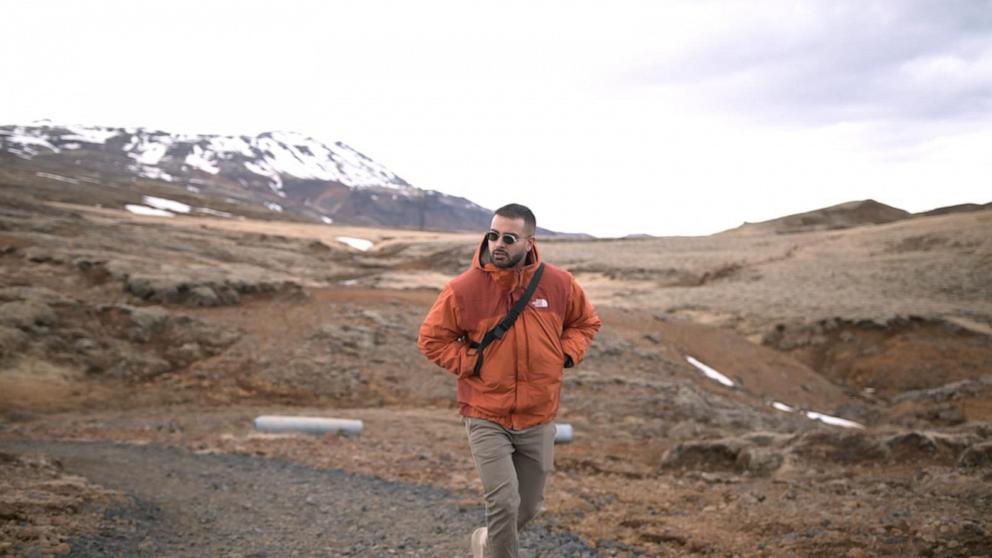
Enjoy going home with a fashionable souvenir? Local knits are quintessentially Iceland, but with handmade sweaters priced up to $500, Singh sought out second hand store, Extraloppan to score a sweater as low as $50.

Rent a car. Singh found deals for as low as $86 a day.
Save on a more extravagant meal by finding a deal through the Dineout Iceland app, which for a small fee offers discounts all over the land of fire and ice.
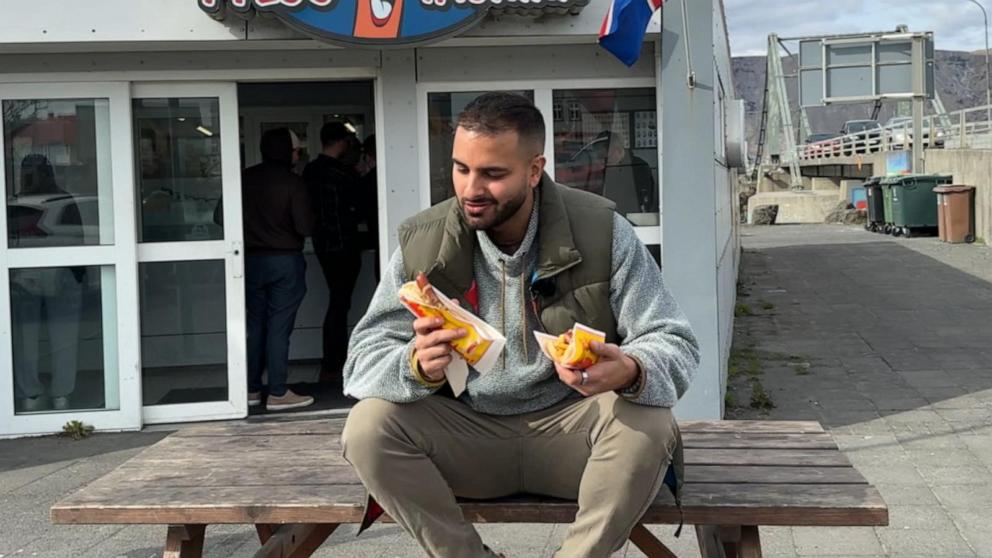
Looking for a cheap and quick local bite? Try a roadside hot dog for just $4.
Visit the free National Parks and take in sights like waterfalls and geysers, but Singh suggests skipping the Blue Lagoon, which can cost $350 for a family of four, instead opt for taking a dip in a local, free hot spring.
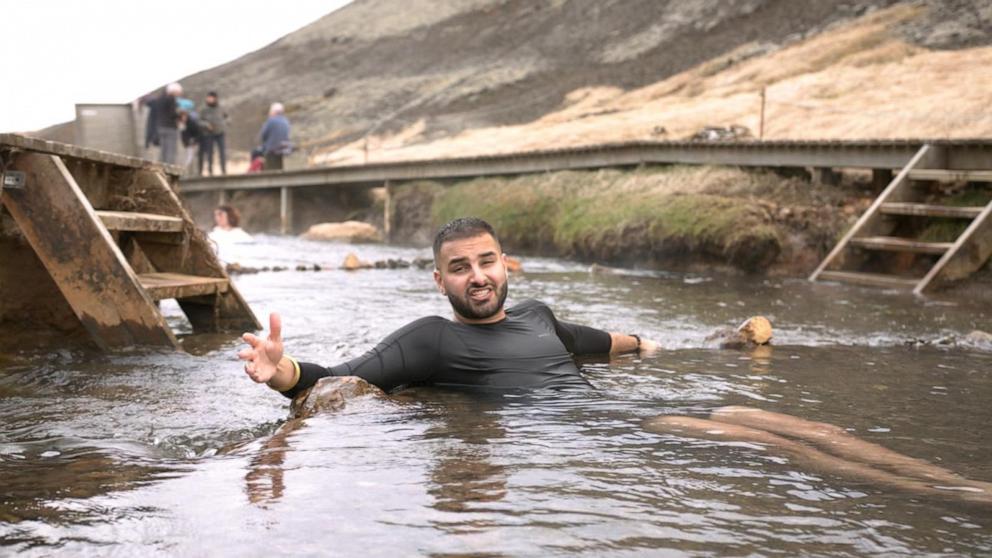
Editor’s Picks
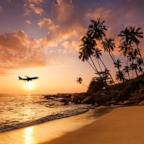
Bucket list travel on a budget: Expert tips for airfare, loyalty programs, credit card perks and more
- Apr 25, 2024

It's not too late to book summer travel deals, these expert tips make it easier
- Apr 30, 2024
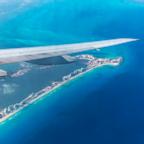
Google reveals top destinations for summer vacation 2024
- Apr 09, 2024
Expert recommended travel gear

REI Co-op Trailmade Pants - Men's
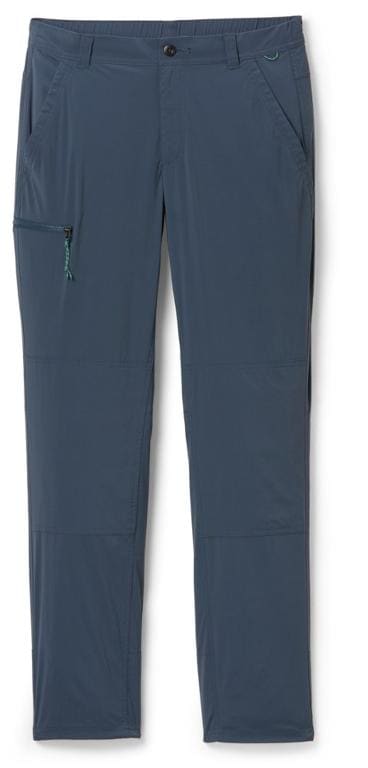
REI Co-op Trailmade Pants - Women's

Men's Trail Model 4 Hiking Shoes

Women's Trail Model 4 Hiking Shoes

Michael Josh Large Outdoor Picnic Blanket
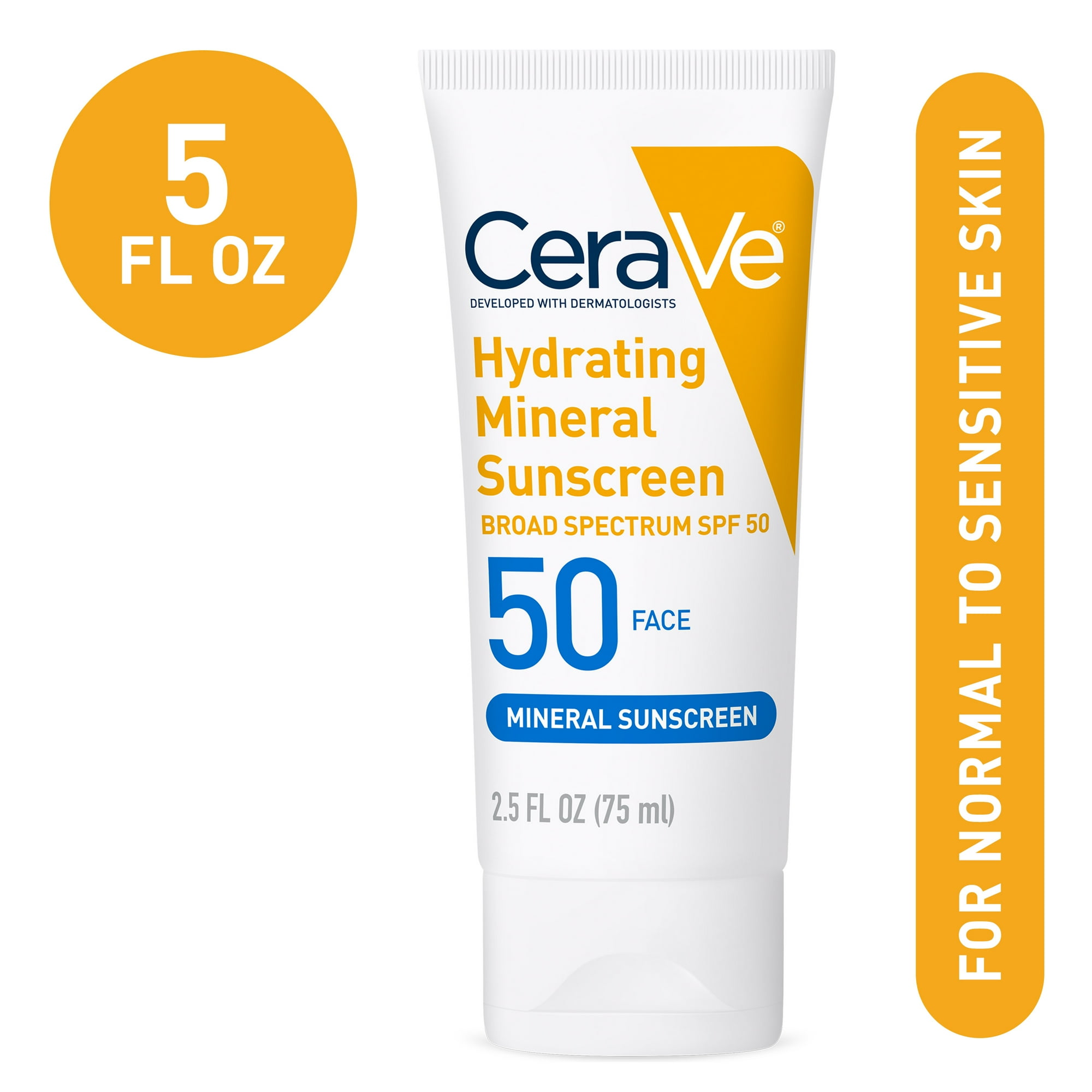
CeraVe Hydrating Face Mineral Sunscreen Lotion SPF 50 for All Skin Types, 2.5 fl oz

Aveeno Baby Sensitive Skin Face & Body Gel Cream for Kids with Prebiotic Oat, Clinically Proven 24 Hour Hydration for Soft Skin, Quick Drying and Lightweight, Hypoallergenic, 8 oz
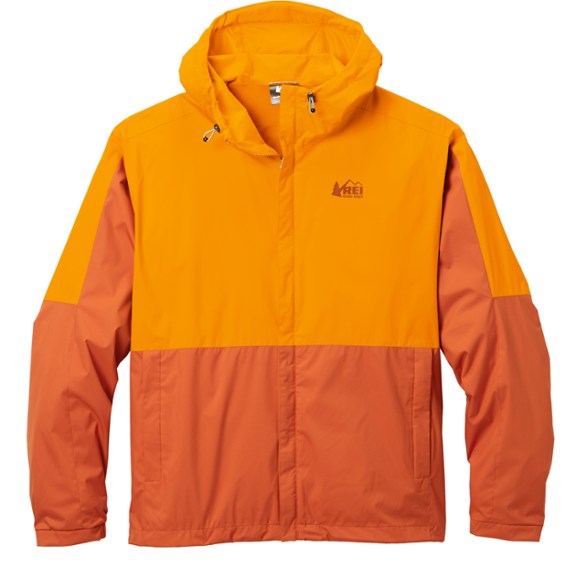
Trailmade Rain Jacket - Men's
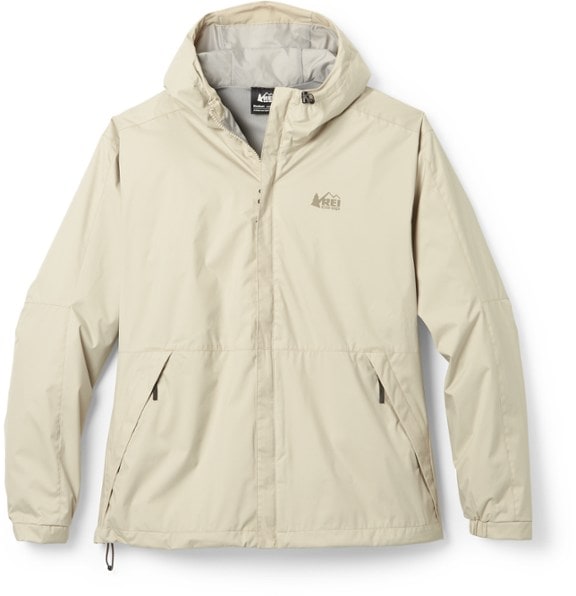
Trailmade Rain Jacket - Women's

EPICKA Universal Travel Adapter One International Wall Charger AC Plug Adaptor with 5.6A Smart Power and 3.0A USB Type-C for USA EU UK AUS (TA-105, Grey)
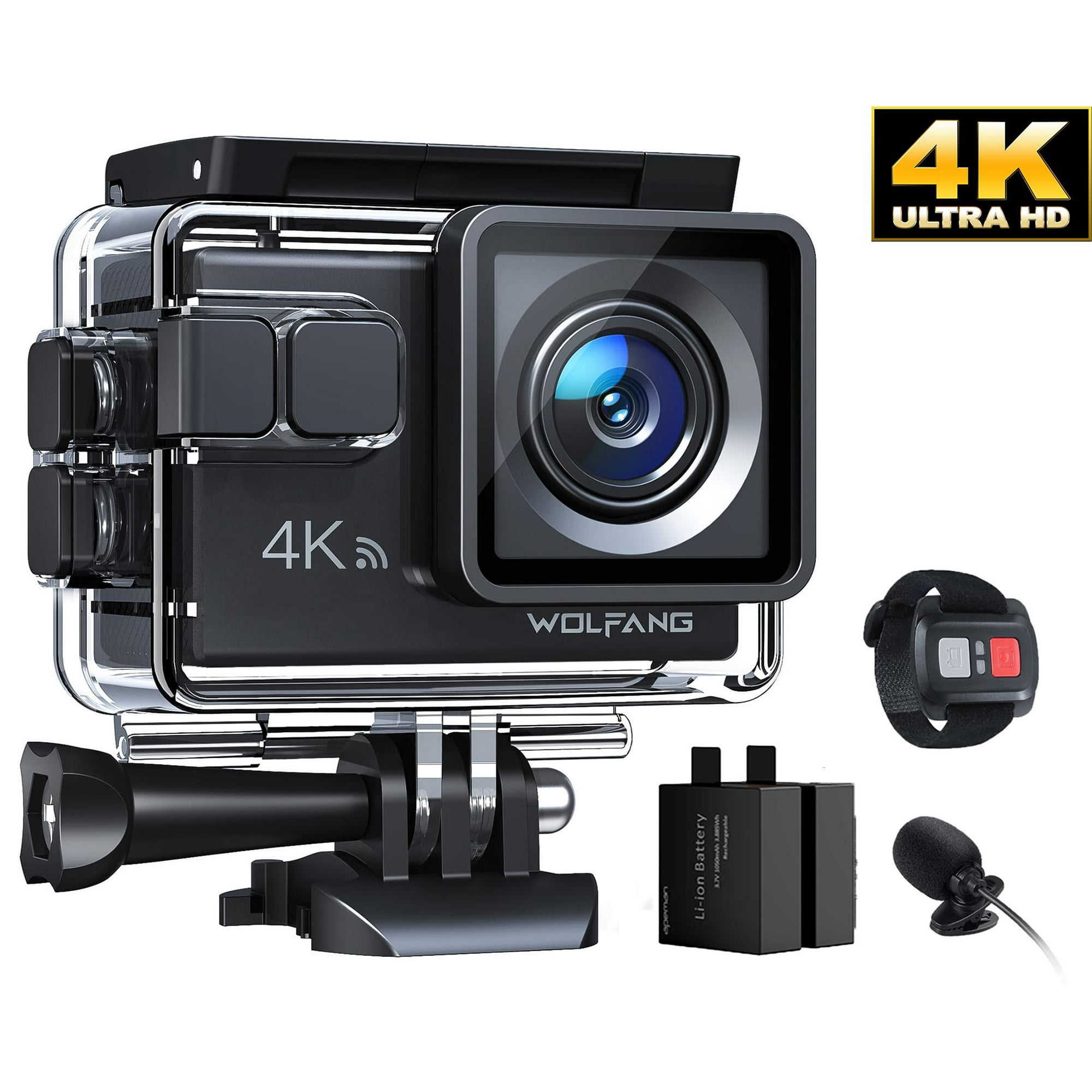
Action Camera 4K 20MP Sport Camera 40M Waterproof Underwater Camera Volg Video Camera WIFI Wide Angle Helmet Camera EIS Stabilization Dual Microphone

Anker Nano Power Bank with Built-in Foldable USB-C Connector

4Monster Camping Towels Super Absorbent

Vapur Flexible, Collapsible Wide Mouth Anti-Bottle with Detachable Carabiner
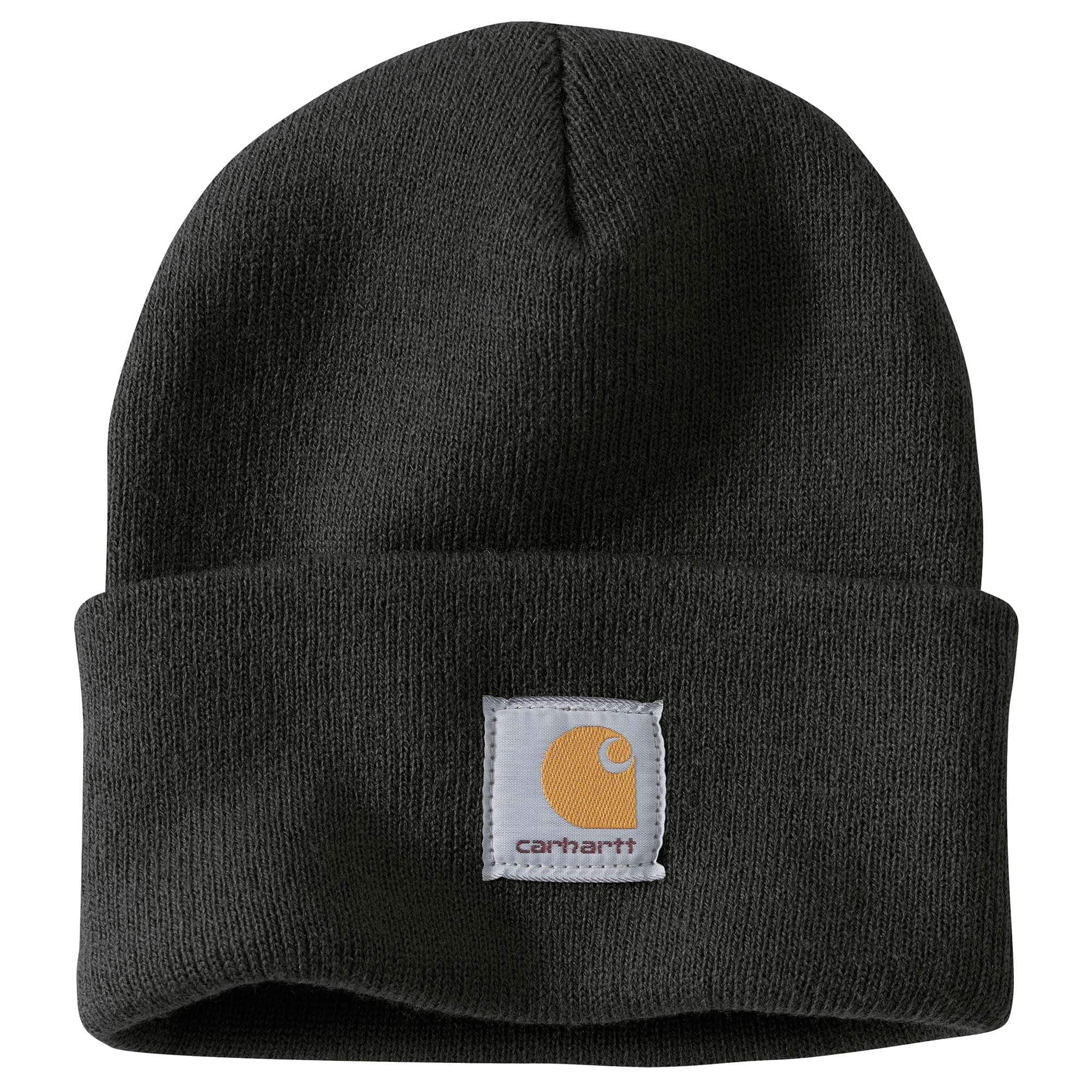
KNIT CUFFED BEANIE

THE NORTH FACE Apex Insulated Etip Glove - Men's
- $39.18 to $41.51

Indoor Instant Privacy Bed Tent for Sleeping,Quick Set-up Bed Canopies,Portable Bed Drapes with Large Space and 3 Doors (Black, Twin)

Manta Sleep Mask - 100% Light Blocking Eye Mask, Zero Eye Pressure, Comfortable & Adjustable Sleeping Mask for Women Men, Perfect Blindfold for Sleep/Travel/Nap/Shift Work

[Weighted Sleep Mask

Lonely Planet Iceland (Travel Guide)
Up next in travel—.
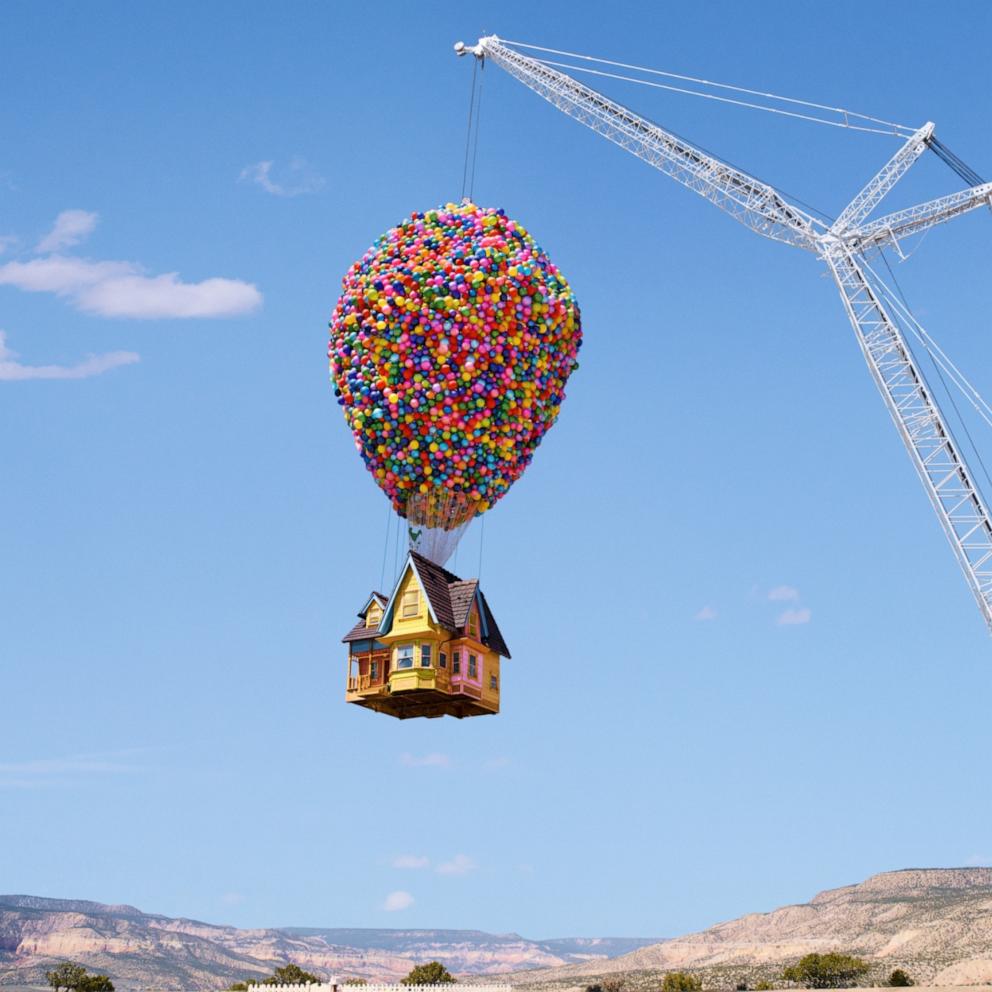
Airbnb launches stays at 'Up' house, 'Inside Out' headquarters and more 'Icons'
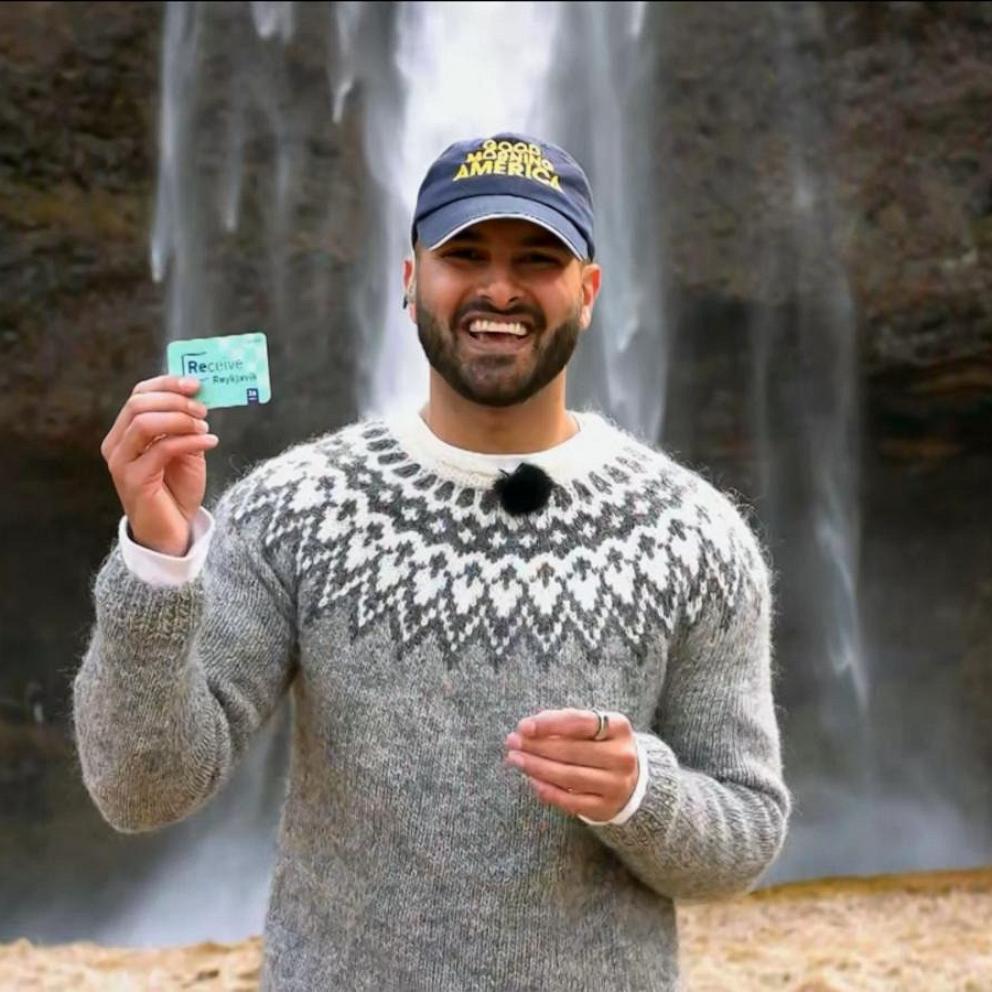
Southwest Airlines CEO says airline may reevaluate open seating after financial loss
Shop editors picks, sponsored content by taboola.
- Privacy Policy —
- Your US State Privacy Rights —
- Children's Online Privacy Policy —
- Interest-Based Ads —
- Terms of Use —
- Do Not Sell My Info —
- Contact Us —
© 2024 ABC News
Weekend Money: 10 biggest mistakes people make in job interviews
From handshakes to how you dress, recruiters and business owners have shared the most common mistakes they see in job interviews. Read this and our other Weekend Money features below, and leave a comment, and we'll be back with live updates on Monday.
Saturday 4 May 2024 10:02, UK
Weekend Money
- 10 biggest mistakes people make in job interviews
- Cinema first is back - so should movie lovers unsubscribe?
- Brexit rule changes, disability vouchers and manifestation cynicism: What readers have said this week
- Interest rates, inflation and fuel prices: What you need to know about economy this week
Best of the week
- It turns out Sainsbury’s boss was right about self-checkouts
- State pensions 'could be in doubt for future generations'
- New ISA rules were supposed to help savers - they've just made everything more complicated
- Money Problem: 'A company won't fix dodgy building work - what can I do?'
- Gameboys, designer shoes, 1950s furniture: Items in your attic that could be worth small fortune
- Train strikes in May - everything you need to know
Ask a question or make a comment
You filled out the job application, got the call (they're interested, phew!), but now... it's interview day.
If the thought of selling yourself to a stranger brings you out in a cold sweat, you're not alone - but you can help yourself by not making the following common mistakes...
1. Not dressing app ropriately
Paul Webley, managing director of Blaze Media Digital Marketing Agency in Merseyside, says: "If you are coming for an interview in a marketing agency, dress smart. No need to be in a suit. It's cute if you are but just dress how you would expect to dress in the job and, if in doubt, err on the side of being slightly smarter.
"With us, there are loads of photos of the team in the office on the website and socials (which you should have looked at) so there is no excuse."
2. Handshake mishaps
Paul's second interview mistake is: "This one is a real pet hate and probably doesn't matter as much in the current world but... learn how to shake a person's hand. You have to do this within every job from time to time.
"There is nothing more off-putting than a limp shake. Having a firm, polite handshake is a basic human skill in business and beyond."
3. Complaining
This is another one from Paul: "We had someone a few months ago tell us that they didn't think they should have to come into the office for an interview. This was for an office-based role. If they don't think it's worth coming in then the job is not going to be for them."
4. Not checking your tech
Tas Ravenscroft, senior consultant at recruitment firm Cherry Pick People , says: "Overlooking details like the interview location or the platform being used (such as Teams), and not testing your tech beforehand, can disrupt the interview process. This is especially crucial as most first interviews are now conducted via video conferencing."
5. Bad mouthing previous employers
Tas says: "We see that candidates sometimes feel too comfortable on interview and decide to talk about their past experiences (if aggrieved) negatively, which is a big NO. Instead, my advice is to focus on the lessons learned and how you've grown from challenges in your career."
6. Not asking questions - or asking about benefits or sick pay policy
Tas says: "There are no right or wrong answers to this, but asking questions at the end of the interview is a big YES. It shows you're interested, engaged and would like the opportunity to either progress or land the role.
"I'd say in your first interview, ask about company culture, day to day tasks, expectations of this role, who's the best performer and why?
"Questions I'd stay away from are benefit-related questions, or I recently had someone ask what the sick pay policy was like in the first interview… Safe to say they didn't get invited back. If you work with a recruiter, you will have salary and benefits info before, so no need to ask on interview."
7. Not showing enthusiasm
For Mike Carlucci, managing director of Reading-based Italian-food importer Tenuta Marmorelle , this is a big one: "A lot of people at the moment are applying for everything and anything. They apply for hundreds of jobs.
"The result is that you get applicants who are not enthusiastic or passionate about the role or sector as they see it just as a job. There are few people looking for actual careers at the moment. In our industry, the food industry, you need to have passion and enthusiasm."
8. Talking too much
Andrew MacAskill, founder of Executive Career Jump , says: "Sometimes this is down to nerves, other times it is down to overthinking and often it is due to the questions being too broad, which leads to them saying lots and hoping the right answer is in there somewhere."
Ian Nicholas, global managing director at Reed , says a common slip-up people make is to carry on talking after giving their answer.
"Some interviewers may purposely leave a pause just to see how the interviewee will react under the pressure - so be confident in what you've said and know when you've finished."
9. Under-preparation
Habiba Khatoon, director of Robert Walters UK , says: "This means they haven't researched the company, are unaware of the key aspects of the role they are interviewing for and can't make connections between their CV and experience and the role.
"Most interviewers can easily catch on when a candidate has turned up unprepared and when they do, they can lose interest in that candidate quite quickly."
Italian food importer Mike agrees: "It is so important to spend five minutes to go on to the website, see what the company does, how they started and any general information you can get. This really makes someone stand out from the 100s of applicants."
10. Being late - or too early
James Rowe, managing director of the Recruitment Experts , says: "I would suggest arriving 20 minutes early to give you time to prepare, but don't walk through the door too soon! Turning up five to 10 minutes prior to your interview start time shows you're punctual but won't rush the hiring manager… they need breaks too!"
By Brad Young , Money team
Almost half of Britons (45%) subscribe to two or more streaming services, according to comparison website Finder, but box office figures show the theatre-going experience is making a comeback.
The pendulum is swinging back from streaming-first to theatre-first releases, and streaming platforms like Amazon and Apple are making moves on to the big screen with the likes of Saltburn and American Fiction, or Killers of the Flower Moon and Napoleon.
That means movie-lovers are facing a conundrum, according to a senior media analyst: should they prioritise spending cash on trips to the cinema or on streaming if they want to see the biggest and best movies?
"People are making decisions on 'what am I going to allocate to the movie theatre experience, what am I going to allocate to streaming?'" Paul Dergarabedian, of Comscore, told the Money blog.
Cinema's revival is real, according to Philip Clapp, chief executive of the UK Cinema Association.
"Certainly the major US studios see the theatrical experience, the big screen experience, as where they want their major films to be and then benefitting from the promotional buzz that comes from that," Mr Clapp said.
Disney chief executive Bob Iger said last year that theatrically released films were "great sub drivers".
"We benefit greatly from the power of our great films, they drive so much engagement and so much interest in our platforms," he said, pointing to Moana, Marvel, Star Wars and Avatar.
Mr Clapp added this year was a "key stepping stone" to an offering similar to before the pandemic, but cinema wouldn't be back to full strength until next year.
In the pandemic, studios experimented with straight-to-streaming releases, which continued even after restrictions fell away.
Mr Dergarabedian said: "When the pandemic hit it was a real stress test on the industry because a lot of people thought theatrical was dying on the vine and that it would be going away at some point in the near future - and then the pandemic accelerated that demise in the minds of some."
But audiences have voted with their feet and instructed studios they want more variety: international films, stadium concert films, videogame adaptations, prestige films and horrors.
Smile, a Paramount horror movie on a $17m budget that could have been straight-to-streaming, had a "great result" at the box office, said Mr Dergarabedian, as did Five Nights at Freddy's.
Low and mid-budget movies have been the slowest to recover but are returning to the big screen, making the theatre offering more diverse this year, Mr Clapp added.
Mr Dergarabedian said Universal's "diverse portfolio" was the one to beat: it spent the last year putting out everything from action films like Fast X, prestige movies like Oppenheimer, animations like Migration and some spookier offerings too.
Going theatrical still comes with a risk, the analyst said. A flop on the big screen leaves studios with a big hit to their bottom line, having spent large amounts on distribution and marketing.
But films "tend to have more value" once they arrive on a streaming platform if they were released in cinemas first, including lower budget movies.
Each week, Money blog readers share their thoughts on the subjects we've been covering, and over the past seven days your correspondence has been dominated by these topics...
Brexit rule changes
- Our feature on manifesting
- The prospect of disability payments becoming vouchers
Britons could face higher food prices, and even empty supermarket shelves, as new post-Brexit border fees were introduced this week, industry figures warned.
These comments - while perhaps not representative of the whole country - are definitely reflective of the majority view in our inbox...
It's almost like Brexit was a terrible idea… To think our politicians would do anything but make things worse was beyond naive. People let their prejudice override common sense that most politicians look out for themselves and not the country's best interests… Joe
Others suggested the government should be turning its eyes to the issue rather than elsewhere...
Food prices rise even though they told us they would fall and yet the priority is sending asylum seekers to Rwanda. Isn't it about time the UK started to listen to people's problems rather than a very loud minority? Lee
Several people suggested the solution was growing all our own food - which is often talked about, but producers and importers point out the UK climate makes it less achievable to mass produce certain foods at a low cost than in southern Europe.
Disability vouchers?
Reports this week suggested disabled people could receive vouchers instead of monthly payments under proposed government changes to Personal Independence Payment (PIP).
The story resulted in a backlash among our commenters...
Absolutely barking mad. Disabilities aren't an option. Can't be fixed with words. And can happen to anyone at anytime. Time to get a grip. Rob
Others suggested it was a symptom of a wider failure within the system...
I don't know how the government can take away vital PIP money and say they can replace it with better mental health support. My daughter is waiting for a PIP assessment and also an assessment for ADHD - the latter's wait time is currently four years. Matmac33
Can you 'manifest' financial success?
Moving to our manifesting feature, which prompted a lot of cynicism. If you haven't read it yet, you can do so here ...
Some of our readers are believers...
I manifest things in my life. Be it money, people or events I've had dreams about, there's more magic in the universe than most people know of. Steve
I believe in manifestation in terms of positive thinking. You'll never get anywhere if you're always assuming the worst. But you do have to put the leg work in for what you want, it won't fall in to your lap. Jim Carrey didn't get that £10m acting job sitting under a tree! Caroline D
Others, well, not so much...
Why are you giving space to this specious guff manifestation? Does it work for the poverty-stricken, starving millions without basic infrastructure and education, or those suffering in warzones across the world? I wonder what they want "manifesting" in their lives? FM1
"Manifesting", what a load of rubbish! I can't believe this is one of the top stories on Sky News. David
And finally, in our weekly round-up of your comments...
This comment section is a COMPLETE WASTE OF TIME. Sky NEVER publishes its readers' views. John Hammond
The next week in Money is likely to be dominated by interest rates - with the Bank of England's latest base rate decision coming on Thursday .
A cut from the current 16-year high of 5.25% is extremely unlikely, as inflation is yet to reach the Bank's 2% target.
Markets had forecast a first cut in June but are now pricing in August, with only two cuts now expected in 2024 rather than three.
There had been hope the base rate would dip to 3% next year - but again, these forecasts are now on ice.
As we outlined in our new weekly mortgage update yesterday, high street lenders have responded by moving their rates upwards ...
Mortgage approvals rose to 61,300 in March - the highest number since September 2022. But while on the face of it this looks positive for the housing market, industry experts are reporting that uncertainty over the direction of interest rates is prompting renewed caution.
Hina Bhudia, partner at Knight Frank Finance, said: "The sun is out and buyers are returning from their Easter break, so we'd usually expect these to be the busy weeks before the summer; however, the uncertain outlook for mortgage rates will undoubtedly weigh on activity.
"It's not just buyers that are frustrated. The lenders are eager to rebuild their businesses after a subdued 2023; however, they are constrained by stubborn inflation and the resulting impact on their cost of funding."
The influential OECD this week said now was not the time for the UK to be considering cutting rates - which is bad news for mortgage holders, but may be positive for savers.
The organisation anticipates inflation will be "elevated" at 3.3% in 2024 and 2.5% in 2025 - above the Bank's 2% target.
And it claims the UK will grow more slowly next year than any other major advanced economy.
It puts this down to stealth taxes and high interest rates squeezing the economy.
The organisation, which is based in Paris, downgraded its forecasts for GDP to 0.4% this year and 1% in 2025.
In February, the UK had been in the middle of the rankings with forecast growth of 0.7% this year and 1.2% next.
Away from the economy, RAC has put out figures today showing that both petrol and diesel have gone up by 10p per litre so far this year, adding £5.50 to the price of filling up a car.
Oil prices rose during April, sending an average litre of unleaded up 3p to 149.95p, while diesel rose by 2p to 157.76p.
The lowest prices for petrol and diesel so far this year were both recorded on 16 January – 139.7p and 147.6p respectively.
The good news is that, as tensions between Israel and Iran have defused, the oil price has crept back down, meaning some of the recent hikes may soon be reversed.
The Money blog is your place for consumer news, economic analysis and everything you need to know about the cost of living - bookmark news.sky.com/money.
It runs with live updates every weekday - while on Saturdays we scale back and offer you a selection of weekend reads.
Check them out this morning and we'll be back on Monday with rolling news and features.
The Money team is Emily Mee, Bhvishya Patel, Jess Sharp, Katie Williams, Brad Young and Ollie Cooper, with sub-editing by Isobel Souster. The blog is edited by Jimmy Rice.
A cash ISA offering an interest rate of 4.5% has been launched today by Melton Building Society .
The interest is paid annually on 31 March and can be added to the account, transferred to your bank account or transferred to an existing Melton savings account.
Here's what you need to know...
How do you open an account?
- You must be a UK resident and be aged 16;
- Accounts can be opened with a minimum amount of £25 and the maximum that can be held in this account is £500,000.
Can you withdraw money?
Yes, you can withdraw money as long as you give the bank 180 days' notice in branch, by post or phone
Once you have done this, all or part of the investments in the ISA, including any interest earned, will be transferred to you.
You can also access your money without giving notice, but you will be charged 180 days' interest on the amount you withdraw.
A lack of demand for new electric cars has led some brands to begin slashing prices.
Even some of the UK's best-selling electric cars are thousands of pounds cheaper than a year ago, according to Auto Trader figures shared with The Times .
Among the most heavily discounted vehicles are the Honda E, down 20% versus a year ago at £29,600, and the Peugeot E-2008, which has fallen in price by 15% to £30,000.
The Vauxhall Corsa-e and Mokka-e are both being advertised at a 20% off sale price, while the MG ZS and MG5 are discounted by 15%.
Meanwhile, Ford's flagship electric car, the Mustang Mach-E, has fallen in price by 14%.
Ian Plummer, Auto Trader's commercial director, said lower prices are good news for car buyers and that it was "encouraging" to see more affordable electric cars on the market.
He said the discounts had been "driven by a softening in consumer demand, coupled with the introduction of the zero-emissions vehicle mandate, which is putting pressure on manufacturers to comply with the new regulations or face heavy fines".
The government's zero-emission vehicle ( ZEV ) mandate requirers manufacturers to produce a certain percentage of zero-emission cars and vans each year.
It started when comedian Peter Kay, who was supposed to be the first official act for the new Manchester Co-op Live on 23 April, had his performances rescheduled.
Rick Astley's performance on 20 April was a "test event" for the venue but ticket capacity was slashed just hours before his gig was due to begin.
Astley fans who had their tickets cancelled were instead offered seats to see US rock band The Black Keys play - but their show has also been affected.
And to add to the chaos, this week Olivia Rodrigo's concerts, scheduled for 3 and 4 May, were postponed.
Then, Take That announced they were moving their shows from the venue to the AO Arena in Manchester.
A Boogie Wit Da Hoodie concert was also postponed just over an hour before the rapper was set to perform.
Today, Barry Manilow also said he had a "back-up plan" to move his Manchester performance from the beleaguered venue.
The ongoing mayhem has left disgruntled concert-goers voicing their frustration, with some calling for travel and accommodation to be reimbursed and others calling the situation "embarrassing".
"There will be countless people who would've booked travel and hotels just for you to stitch them up because you couldn't meet assured deadlines," one person wrote on X.
Another person said the music venue should "at the very minimum" be "looking at refunding travel/hotel costs for people that can prove they paid for cancelled dates".
And another person asked: "How do I get a refund for parking? There's no info on your site or app."
Organisers at Co-op Live said the venue would be taking "a short pause to events" before welcoming members of the public to the arena from 14 May.
A Co-op Live statement said: "At this time, we do not expect further impact on our opening season. We are aware our actions have frustrated and angered ticketholders."
Tim Leiweke, chairman and chief executive of Oak View Group, which developed Co-op Live in partnership with the City Football Group, has said they cannot run any event until it is "absolutely safe to do so".
A Co-op Group spokesperson said: "As naming rights sponsor for Co-op Live we are disappointed with these further schedule changes.
"Co-op is a sponsor and does not own or run the venue, and we have made it clear to Oak View Group, who are responsible for the building, that the impact on ticketholders must be addressed as a priority."
An Itsu freezer product is being urgently recalled over fears it could contain plastic.
Customers are being told not to eat Itsu's sizzling pork gyoza, which is sold at Asda and Sainsbury's.
The 240g packs with a best before date of 8 March 2025 are those affected by the recall.
A 200-year-old Edinburgh attraction is reopening this month after being closed for four years.
The Nelson Monument is a 150ft tower overlooking the city, and was built to commemorate Admiral Horatio Nelson's victory at the Battle of Trafalgar.
It has been shut for essential works for years, but visitors will soon be able to climb its 143 steps again.
An official opening date has not yet been given.
HMRC's Welsh-language app is only being used by two in every 100 native speakers, according to a new report by The Telegraph .
A freedom of information request by the paper found that 13,831 Welsh speakers have used the app since its launch in June 2022.
That equates to 1.5% of the nearly 900,000 people who say they speak the language.
Jonathan Eida, researcher at the TaxPayers' Alliance pressure group, told the newspaper he thought the move was a "gimmick".
Gig ticket prices may be eye-wateringly high at the moment (just like everything else, let's face it) but a big sale next week will see tens of thousands of tickets at discounted prices.
LiveNation is holding a sale for 24 hours from noon on Thursday until noon on Friday, with prices starting from £25.
Artists who you can get discounted tickets to see include Doja Cat, Meghan Thee Stallion, Shania Twain, Becky Hill, Avril Lavigne, Eric Prydz, Giggs, Glass Animals, James Arthur, JLS, Jungle, Kaiser Chiefs, Limp Bizkit, Offset, McFly, Olly Murs, Paloma Faith, Placebo, Tom Jones, Tiesto and The Streets.
You can find the full line-up of artists and venues with discounted tickets on the LiveNation website here .
The company will also be holding promotions and competitions throughout next week.
Be the first to get Breaking News
Install the Sky News app for free


IMAGES
VIDEO
COMMENTS
Admire Seljalandsfoss Waterfall. Seljalandsfoss Waterfall on the south coast is another of Iceland's most popular waterfalls. Since this eye-catching, 200-foot water feature is right off the Ring Road it is easy to get to even in the winter. From the parking lot, it is only a short walk to the falls.
Visit the Golden Circle: One of the most popular tourist routes in Iceland is the Golden Circle, which encompasses three iconic attractions: Thingvellir National Park, Geysir geothermal area, and Gullfoss waterfall.While most commonly explored in summer, these locations are just as beautiful in the frozen winter! You can check it out on a self-drive tour or on a guided Golden Circle tour.
Natural Ice Caves in Icelandic Glaciers. The natural ice caves that that can be found in Iceland's glaciers are among the most beautiful and unique natural attractions you can find in the country. Every winter ice caves form in Vatnajökull glacier, Europe's largest glacier. And every summer, they melt or fall apart.
Table of Contents. Brilliant Things to Do in Iceland in Winter. Feast Your Eyes on the Northern Lights. Dive Into Iceland's Natural Hot Springs. Discover The Golden Circle. Spend Christmas in Reykjavik. Fly Over Iceland. Visit the Ice Caves & Go Glacier Hiking. Horseback Riding in Iceland.
You could also go skiing, snowboarding and snowshoeing in winter. These are just a few of the many ways to enjoy the snow in Iceland. Go snowmobiling on a winter tour of Iceland. 4. Tour the Golden Circle. One of the best places to visit in Iceland during winter is the Golden Circle.
Visit the Waterfalls. Iceland has 10 000 waterfalls scattered all across the island and the one is more impressive than the other. Even though it might sound a bit counterintuitive to scout out natural water wonders during the winter months. It still remains one of the best things to do in Iceland in winter.
So, without further ado, here are the best things to do in Iceland in the winter. 1. Chase the Northern Lights. One of the most popular things to do during Iceland in winter is to see the Northern Lights. The Aurora Borealis is one of the most magical things you'll ever see, and there's no better place to chase them than in Iceland.
5. Exploring Ice Caves & Glaciers. Winter is the perfect time to explore an ice cave, a glacier, or an ice tunnel in Iceland. Tours allow you to actually get inside beautiful ice caves and tunnels so you can see their beautiful blue colors and learn about the formation of glaciers.
Skiing in Iceland. The small but incredibly appealing towns of Dalvik, Isafjordur and Siglufjordur all have ski lifts and slopes worth exploring. If you end up in Dalvik, it's worth remembering that this is also one of the best places on the planet to go whale watching. 6.
To visit Iceland during the winter is to place yourself directly in a seasonal snow globe. Blizzards and white-out conditions are common and will often keep you contained to the city limits. That being said, there are a lot of tour operators offering experiences and activities outside of the city, complete with Reykjavik pick-up services ...
The best option: buy crampons, stay on the path, don't fall on your butt, preserve nature. 6. Drive around the Golden Circle. If there was a Disney Land in Iceland - imma be honest - the Golden Circle would be it. LUCKY FOR YOU, it is totally NOT as bad in Winter as it in the Summer.
With that in mind, here's the recommended 7 day Iceland winter itinerary: Days 1-3: Reykjavik. Day 4: Golden Circle. Day 5: Glaciers. Days 6-7: South Shore. This itinerary assumes you are based in Reykjavik for the first 5 days and in Vik for the last two. This makes booking accommodation nice and easy as you only need two places.
2 - Get a shower at the many waterfalls - Iceland Winter Highlights. 3 - Go underground in these Iceland Winter attractions. 4 - Get up close with the glaciers. 5 - Spot wildlife and admire the horses. 6 - Climb a crater - yes, this is what to do in Iceland in Winter. 7 - Enjoy the black beaches.
Experience the northern lights. The best thing about visiting Iceland during winter time is the chance of seeing the northern lights. To the locals, the northern lights are a part of their life, as they light up the night sky in surroundings dominated by snow, rugged mountains and harbours. When you see them it's like witnessing a celestial ...
Otherwise, do as the locals and book a tour to that adventure activity, or use this list of my favorite things to do in winter in Iceland. 17. Fly to Akureyri and Explore Goðafoss Falls. Sightseeing I Akureyri & Góðafoss I North Iceland. Akureyri is frequently referred to as Iceland's "second city," an amusing moniker given its small ...
Dyrholaey is just one of the many top places to see puffins in Iceland. 12. See the Largest Glacier in Europe. One of the best places to visit in Iceland is the Vatnajokull glacier, the largest glacier in Europe. It makes up 8% of Iceland's landmass with countless stunning ice caves, each a marvelous feat of nature.
The ice part of Iceland really is epic. Iceland has 269 named glaciers and an uncountable amount of ice caves. You can only take a tour of the ice caves in winter, because of the danger of them collapsing. Basically, they change every year, and tour operators have to scope out new places to guide people all the time.
Photo: 10-Day Winter Small Group Guided Tour of Iceland Despite being a fairly green and temperate European nation during the summer, the winter truly sees Iceland live up to its name. It's black volcanic landscapes, and lush open meadows will become blanketed in a thick layer of snow, creating a virginal Arctic vista that portrays the island in a wholly new, yet equally beautiful light.
Explore 9 of our favourite activities to enjoy in Iceland during the colder season. 1. See the northern lights. The northern lights are one of the biggest reasons why visitors come to Iceland in winter. That's because it's during those long dark nights that this breath-taking display is easiest to see.
Dazzling aurora display in Iceland. 2. Experience a True Winter Wonderland - Jokulsarlon & Diamond Beach. The cold and the wind turns Iceland into a true winter wonderland, so when you travel to Iceland in winter, you're in for a real treat. Frozen waterfalls, icebergs, water that turns into ice as you watch….
Top 5 things to do in Reykjavik in Winter - Summary. Planning Tips to visit Reykjavik, Iceland in Winter. Walking on the Seafront - the Sun Voyager. Cathedral and city center. The Perlan. Reykjavik's attractions at the harbour. Other Museums in Reykavik. #20 - Northern lights in Reykjavik. Food in Reykjavik.
14. Go to a Community Bonfire on New Year's Eve. Iceland takes advantage of its deep, dark, winter nights with early fireworks in anticipation of the upcoming New Year. The fireworks start as early as 8 PM, and last until half an hour to an hour before the actual transition into the New Year.
24. Visit Mount Kirkjufell and take the Short Hike to Kirkjufellsfoss. 25. Explore the Picturesque Town of Ísafjörður. 26. Go on a Boat Tour To see the Puffins in Westfjords. Check prices and ...
Local knits are quintessentially Iceland, but with handmade sweaters priced up to $500, Singh sought out second hand store, Extraloppan to score a sweater as low as $50. Rent a car. Singh found deals for as low as $86 a day. Save on a more extravagant meal by finding a deal through the Dineout Iceland app, which for a small fee offers discounts ...
A glance at the nutrition labels and you'll see the problem. "Some popular brands contain 35% sugar or up to 12g of sugar per 30g serving - that's already half of the daily recommended intake for ...